My most current blog entry:
Entries in Flowers (84)
A Favorite Passtime: An Evening Bangkok Walkabout
 Saturday, March 29, 2025 at 12:00PM
Saturday, March 29, 2025 at 12:00PM  On March 23, 2025, my buddy John and I met up on Silom Road near the Hindu temple to start the evening taking photos at the nearby market street before ending the evening at a blues bar neither of us had been to.
On March 23, 2025, my buddy John and I met up on Silom Road near the Hindu temple to start the evening taking photos at the nearby market street before ending the evening at a blues bar neither of us had been to.
 People stopping on their way home to grab some food for dinner were happy to see this cart.
People stopping on their way home to grab some food for dinner were happy to see this cart.
 A street market across from the Hindu temple was a photographer's delight.
A street market across from the Hindu temple was a photographer's delight.
 Carts of seasonal fruits lined the side street.
Carts of seasonal fruits lined the side street.
 As always, many different kinds of fruit are available.
As always, many different kinds of fruit are available.
 A juice cart is a good place to meet up with friends for conversation.
A juice cart is a good place to meet up with friends for conversation.
 Fruit as far as the eye can see!
Fruit as far as the eye can see!
 All of these are my favorites.
All of these are my favorites.
 A noodle soup vendor working her cart. A lovely photo.
A noodle soup vendor working her cart. A lovely photo.
 Bulk cracklin pork . . . to bring home.
Bulk cracklin pork . . . to bring home.
 With the light fading, we headed back to the Hindu temple and a south Indian restaurant next door.
With the light fading, we headed back to the Hindu temple and a south Indian restaurant next door.
 There are many small shops selling votive flower garlands for worship at the Hindu temple.
There are many small shops selling votive flower garlands for worship at the Hindu temple.
 Such beautiful work . . .
Such beautiful work . . .
 After a deli.cious south Indian meal (Dossai Massala), we headed out to the blues club, about 10 blocks away. We took a short-cut through the old Silom Village . . . now nearly deserted.
After a deli.cious south Indian meal (Dossai Massala), we headed out to the blues club, about 10 blocks away. We took a short-cut through the old Silom Village . . . now nearly deserted.
 Before COVID, Silom Village was a tourist hot spot: live traditional Thai music and dance, and lots of good food. I do not know why it is deserted now.
Before COVID, Silom Village was a tourist hot spot: live traditional Thai music and dance, and lots of good food. I do not know why it is deserted now.
 Night streeet photography is one of my favorite things to do . . . and in Bangkok it is very rewarding.
Night streeet photography is one of my favorite things to do . . . and in Bangkok it is very rewarding.
 I know this area very well. This is my favorite Japanese restaurant in Bangkok, Hanaya 1976.
I know this area very well. This is my favorite Japanese restaurant in Bangkok, Hanaya 1976.
 Our walk to the blues club took us down some pretty dark side streets. I feel completely safe in these places in Bangkok.
Our walk to the blues club took us down some pretty dark side streets. I feel completely safe in these places in Bangkok.
 A speeding tuk-tuk photo-bombed my night photo.
A speeding tuk-tuk photo-bombed my night photo.
 Our destination, the Bangkok Mojo Music Lovers Bar. he club was very small, but the live bands were very good . . . although the seats were very uncomfortable for me.
Our destination, the Bangkok Mojo Music Lovers Bar. he club was very small, but the live bands were very good . . . although the seats were very uncomfortable for me.
Images from a Japanese Sojourn, May 2024
 Saturday, January 4, 2025 at 8:04PM
Saturday, January 4, 2025 at 8:04PM In May of 2024 my wife and I joined a group of her friends on a golf junket to Japan. A van/bus was rented and we drove, over several days and several overnight stop-overs, from Tokyo to near Nagoya - and back to Tokyo. We had lots of fun and saw a lot of amazing things . . . and ate a lot of great Japanese food . . . lots of it! While the group played golf I set off to explore the surrounding area with my camera. This entry, unlike others here, is not a chronological account of the whole trip, but "only" a collection of favorite images.
 At a tourist trap bathroom stop I took this amazing photo of Mt. Fuji with late spring colors in the foreground. Magical.
At a tourist trap bathroom stop I took this amazing photo of Mt. Fuji with late spring colors in the foreground. Magical.
 I spent one morning with a Japanese man, another "golf widow," exploring the temples we found on GoogleMaps. Fantastic beauty. . .
I spent one morning with a Japanese man, another "golf widow," exploring the temples we found on GoogleMaps. Fantastic beauty. . .
 Fantastical Japanese artistic expression.
Fantastical Japanese artistic expression.
 A trip highlight was a frightening ride up a steep mountain on a cable-car. The view was astounding!
A trip highlight was a frightening ride up a steep mountain on a cable-car. The view was astounding!
 Transportation options around an ancient royal Japanese temple complex.
Transportation options around an ancient royal Japanese temple complex.
 Japanese use of color and aesthetics are impressive.
Japanese use of color and aesthetics are impressive.
 Japanese sense of humor . . . or? "Marriage Rocks."
Japanese sense of humor . . . or? "Marriage Rocks."
 I was a bit embarrassed when out tour leader booked a dockside viewing of traditional woman pearl divers. They seemed like they were just awakened from their naps and driven down to the port to perform for us. It was interesting.
I was a bit embarrassed when out tour leader booked a dockside viewing of traditional woman pearl divers. They seemed like they were just awakened from their naps and driven down to the port to perform for us. It was interesting.
 We stopped to marvel at a 19th century Japanese businessman's house. Beautiful.
We stopped to marvel at a 19th century Japanese businessman's house. Beautiful.
 Astoundingly beautiful temples at every turn.
Astoundingly beautiful temples at every turn.
 Japanese woodworking skill on display . . . love this.
Japanese woodworking skill on display . . . love this.
 We visited many, many shrines . . . each different in special ways.
We visited many, many shrines . . . each different in special ways.
 A seaside shrine with monks.
A seaside shrine with monks.
 Japanese traditional temple aesthetic.
Japanese traditional temple aesthetic.
 The Japanese love of Nature is evident everywhere.
The Japanese love of Nature is evident everywhere.
 Springtime in Japan means . . . FLOWERS!
Springtime in Japan means . . . FLOWERS!
 We visited a famous Begonia garden. Fantastic!
We visited a famous Begonia garden. Fantastic!
 Springtime in Japan . . . many different flowers everywhere.
Springtime in Japan . . . many different flowers everywhere.
 A field of bluebells.
A field of bluebells.
 Seen in a museum waiting room.
Seen in a museum waiting room.
 Gorgeous natural views . . .
Gorgeous natural views . . .
 We stayed in hotels with great views throughout the week.
We stayed in hotels with great views throughout the week.
 Another great hotel room window view.
Another great hotel room window view.
 Fantastic beauty . . . and craftsmanship.
Fantastic beauty . . . and craftsmanship.
 Big straw knot.
Big straw knot.
 Inner room of a Japanese temple.
Inner room of a Japanese temple.

Pagoda viewpoint . . . er . . . coastal city view.
 Too many steps for me! I didn't go up.
Too many steps for me! I didn't go up.
 Small Japanese town urban environment.
Small Japanese town urban environment.
 Sweet waterfall at a temple.
Sweet waterfall at a temple.
 Small temple shrine.
Small temple shrine.
 We stopped at a small town along the way and discovered a covered walking street.
We stopped at a small town along the way and discovered a covered walking street.
 Small town sweet shop.
Small town sweet shop.
 The Japanese lead the world in amazing, and beautiful packaging.
The Japanese lead the world in amazing, and beautiful packaging.
 Busking with your monkey at the pagoda view point.
Busking with your monkey at the pagoda view point.
 Japan is known for its beautiful gardens . . .
Japan is known for its beautiful gardens . . .
 . . . so many beautiful Japanese gardens!
. . . so many beautiful Japanese gardens!
 I just love these contrasting textures and shapes. Japan!
I just love these contrasting textures and shapes. Japan!
 A sacred temple.
A sacred temple.
 An ancient village restored for tourist enjoyment and appreciation.
An ancient village restored for tourist enjoyment and appreciation.
 Japanese tourists enjoying a tour through their cultural heritage.
Japanese tourists enjoying a tour through their cultural heritage.
 Packaged and ready to ship.
Packaged and ready to ship.
 My lunch, carefully selected from the corn dog family of fine and delicious deep fried foods. Japan!
My lunch, carefully selected from the corn dog family of fine and delicious deep fried foods. Japan!
 I left Japan with wonderful memories and a ton of images . . . many more than I could post here. I know I will go back to Japan. It is a fascinating country try.
I left Japan with wonderful memories and a ton of images . . . many more than I could post here. I know I will go back to Japan. It is a fascinating country try.
 Dr. Jeff Harper | Comments Off |
Dr. Jeff Harper | Comments Off | Hong Kong: International Flower Show 2023 + About Town
 Monday, June 12, 2023 at 2:36PM
Monday, June 12, 2023 at 2:36PM  While visiting my Hong Kong in-laws, we all took the morning in the Hong Kong Flower Show. A beautiful experience . . . and another opportunity to try out my new-ish X-T5 Fuji camera.
While visiting my Hong Kong in-laws, we all took the morning in the Hong Kong Flower Show. A beautiful experience . . . and another opportunity to try out my new-ish X-T5 Fuji camera.
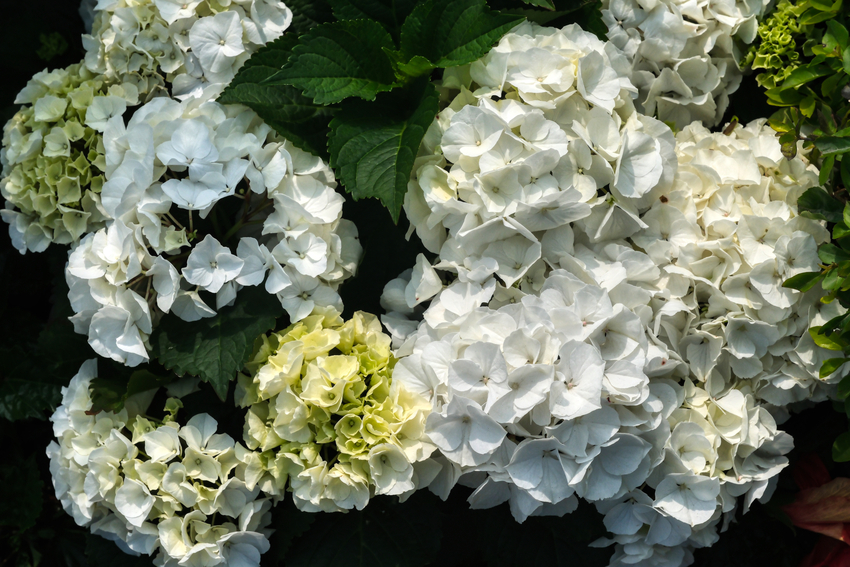 Acres of extraordinary flowers.
Acres of extraordinary flowers.
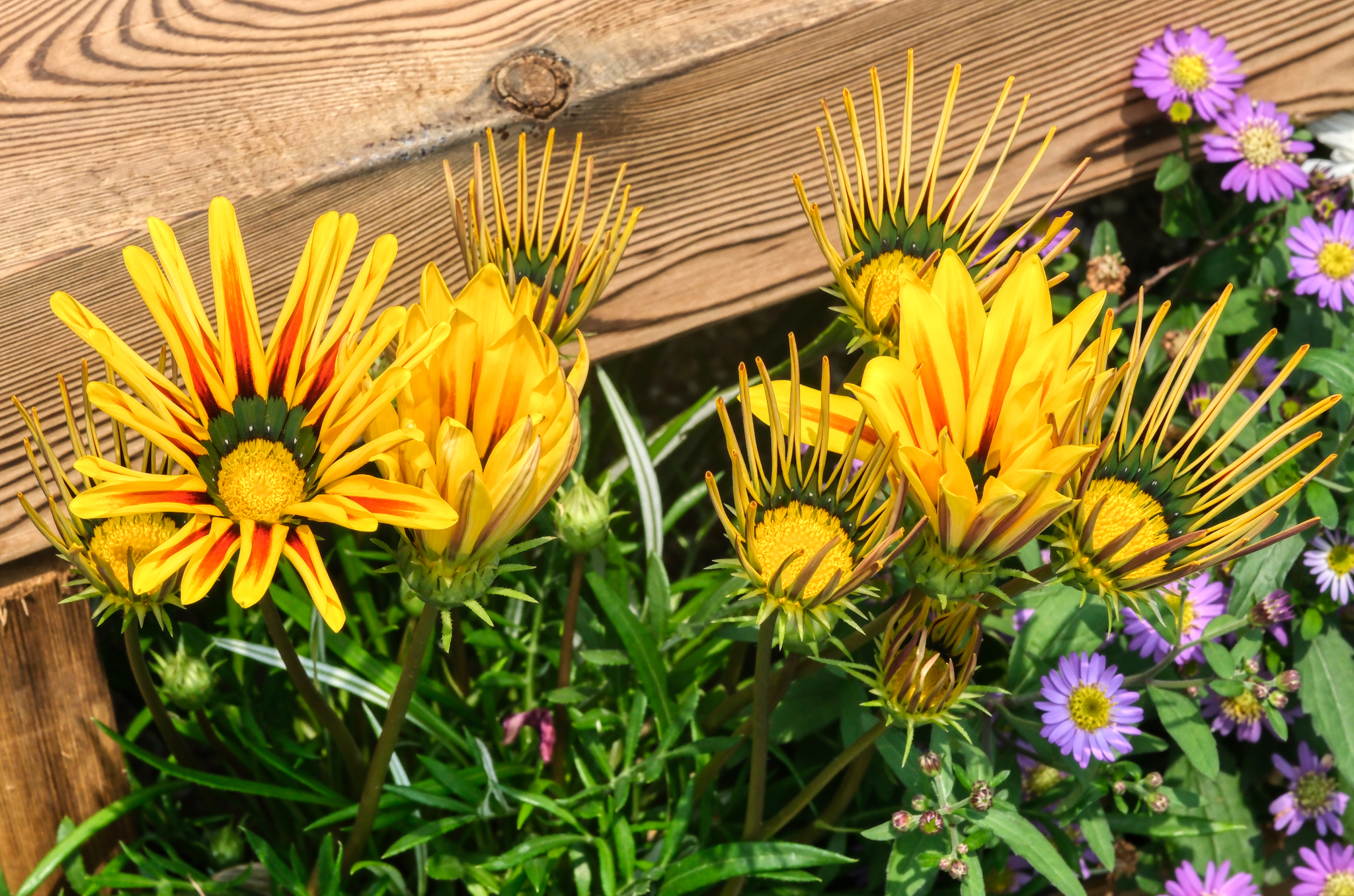 From these exciting yellow splashes, to . . .
From these exciting yellow splashes, to . . .
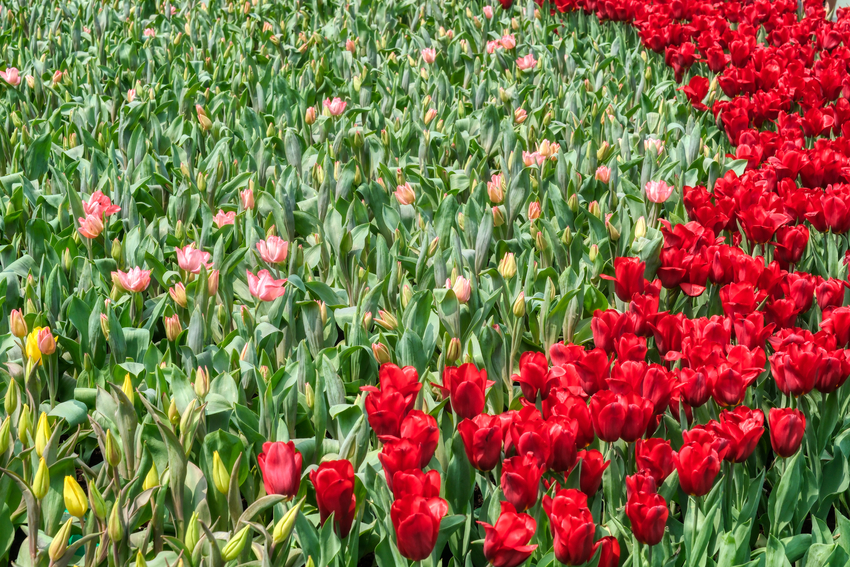 . . . to fields of colorful tulips . . . the Hong Kong Flower Show had it all!
. . . to fields of colorful tulips . . . the Hong Kong Flower Show had it all!
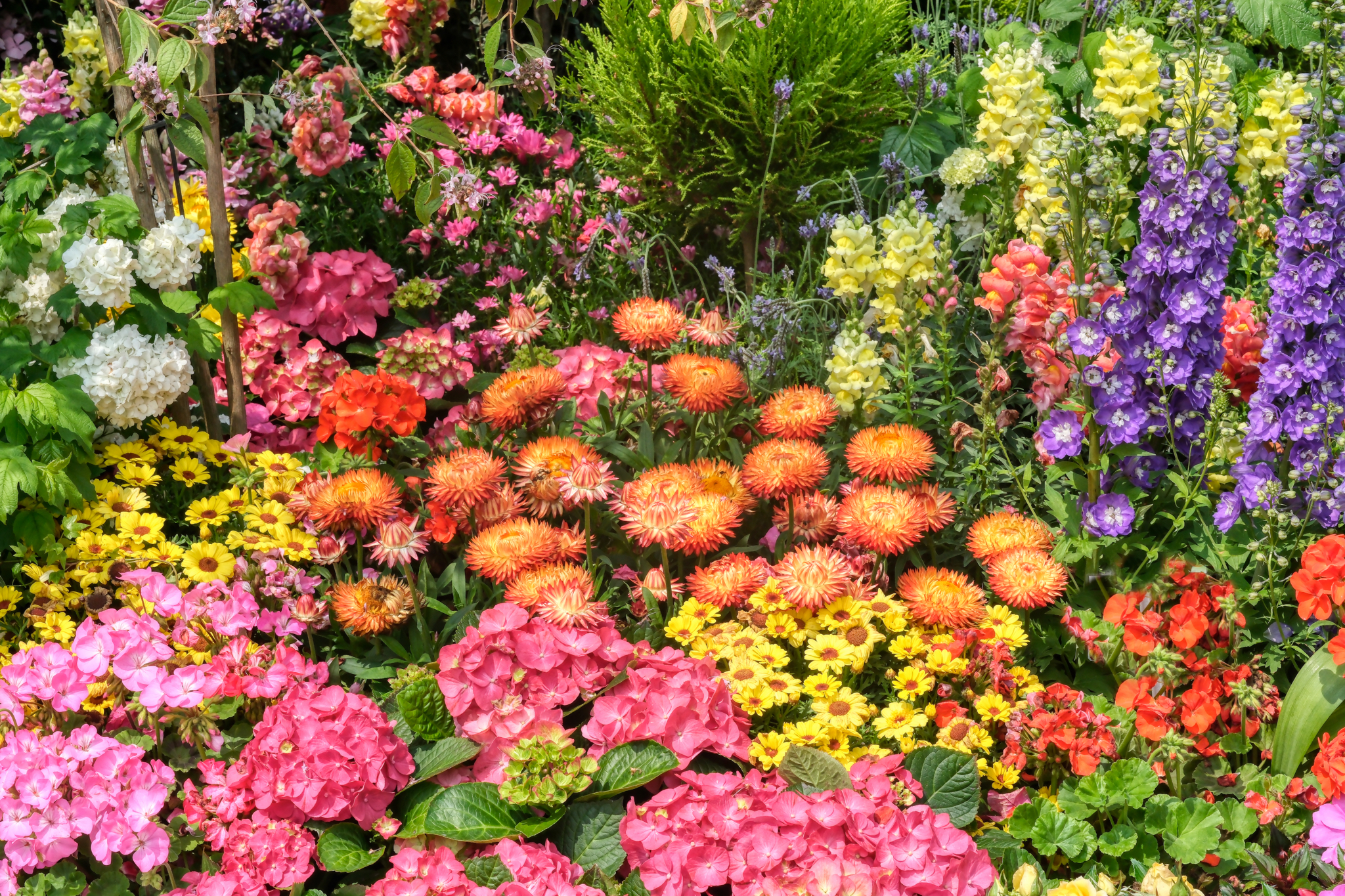 I wish I could tell you the names of all these flowers . . . but I did not take notes while there . . . I was only rffocusing on the beauty.
I wish I could tell you the names of all these flowers . . . but I did not take notes while there . . . I was only rffocusing on the beauty.
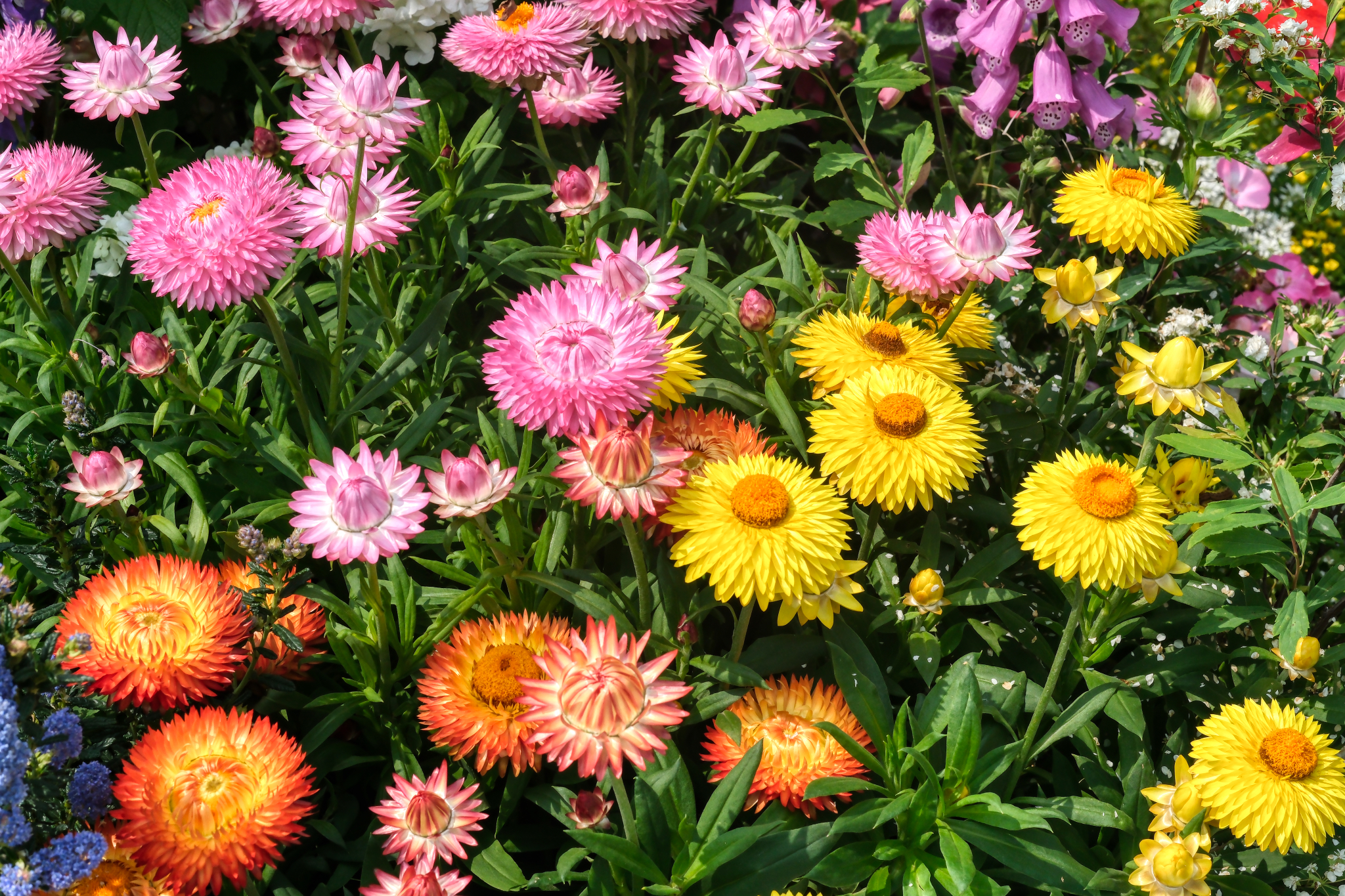 Such happiness expressed in this arrangement!
Such happiness expressed in this arrangement!
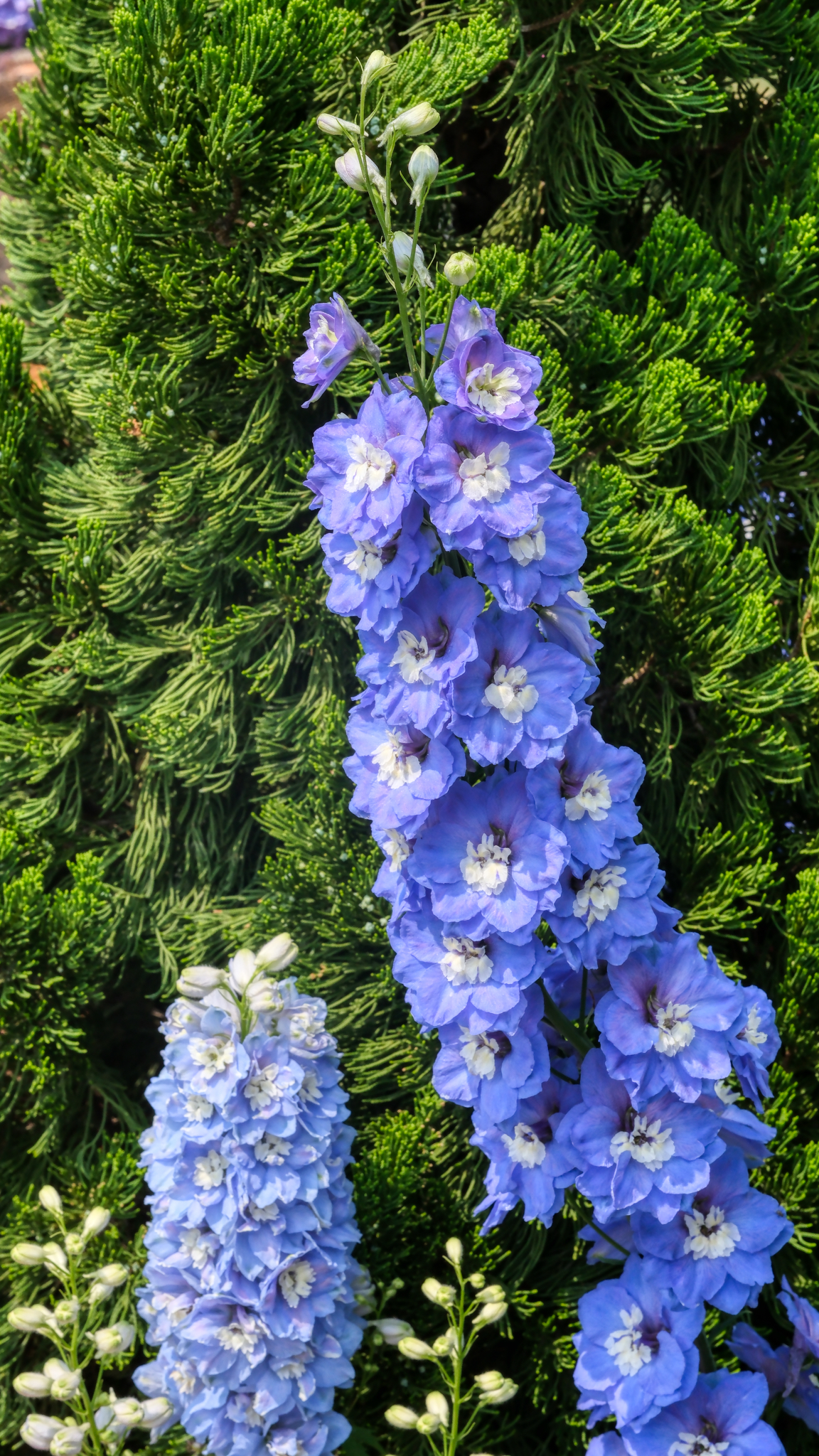 I think this show had more different kinds of flowers than I have ever seen i one place.
I think this show had more different kinds of flowers than I have ever seen i one place.
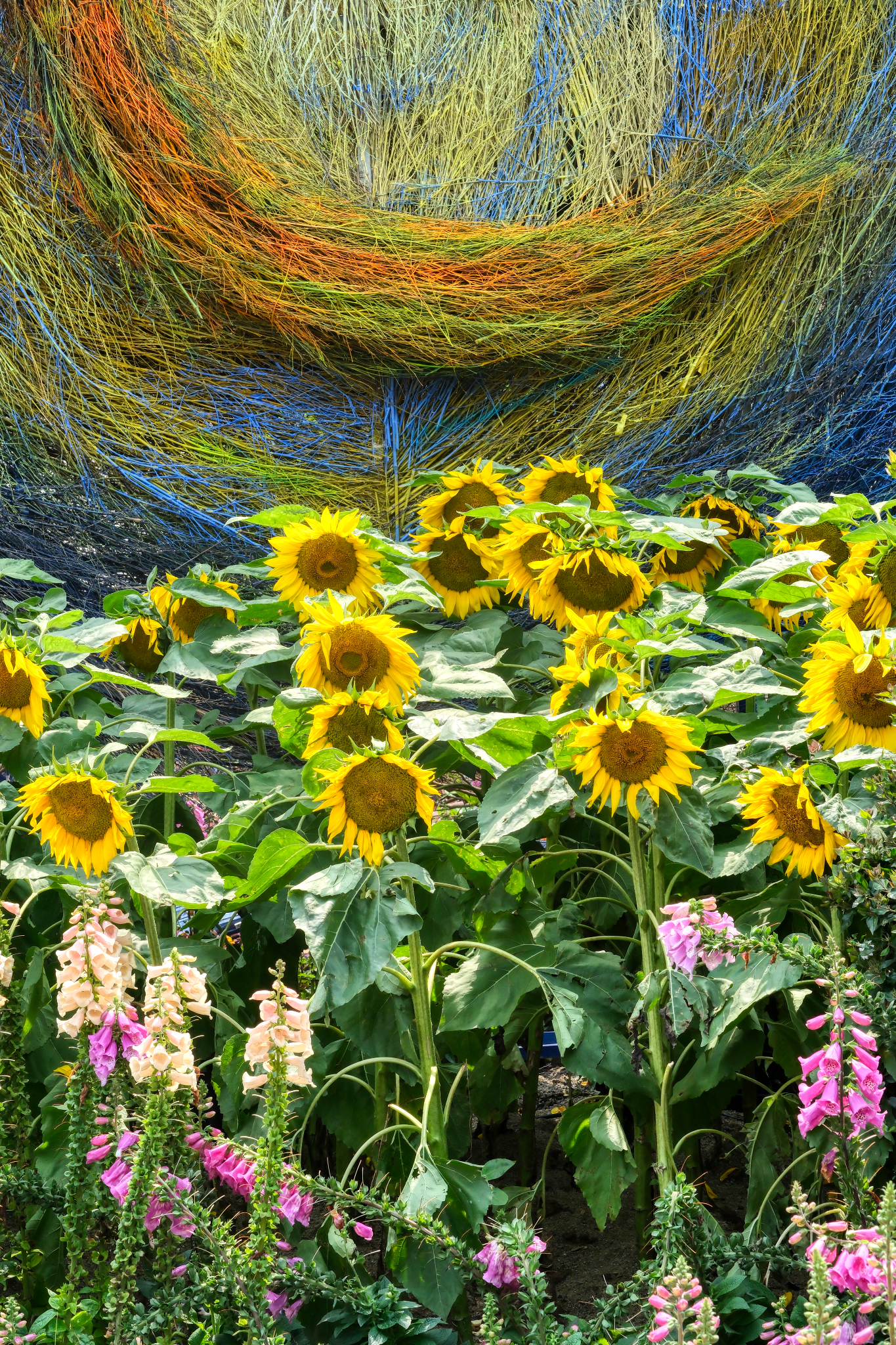 Some of the arrangements were fantistically beautiful.
Some of the arrangements were fantistically beautiful.
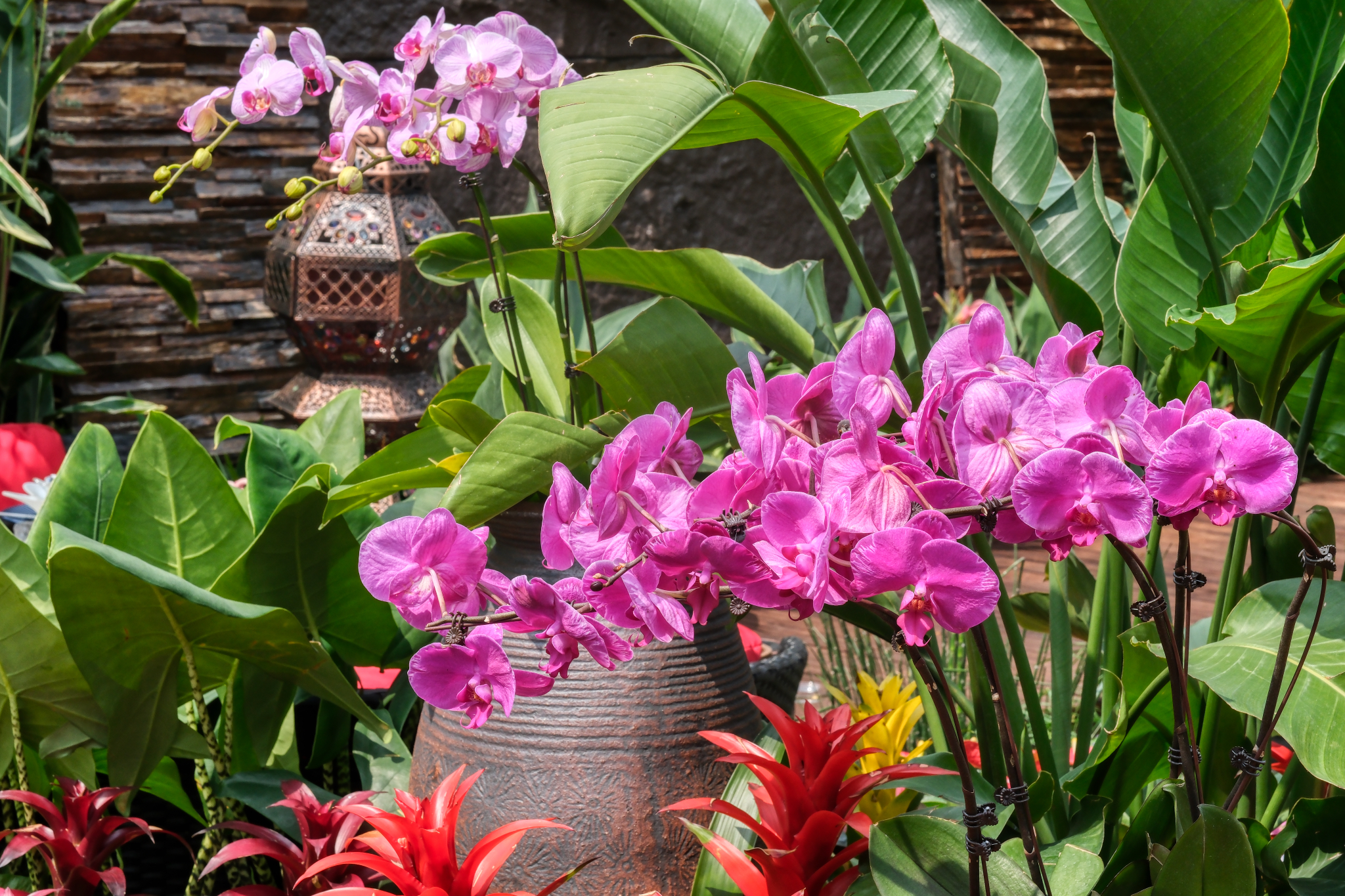 Thailand had an official entry . . . a large space to showcase Thai flowers and garden aesthetics.
Thailand had an official entry . . . a large space to showcase Thai flowers and garden aesthetics.
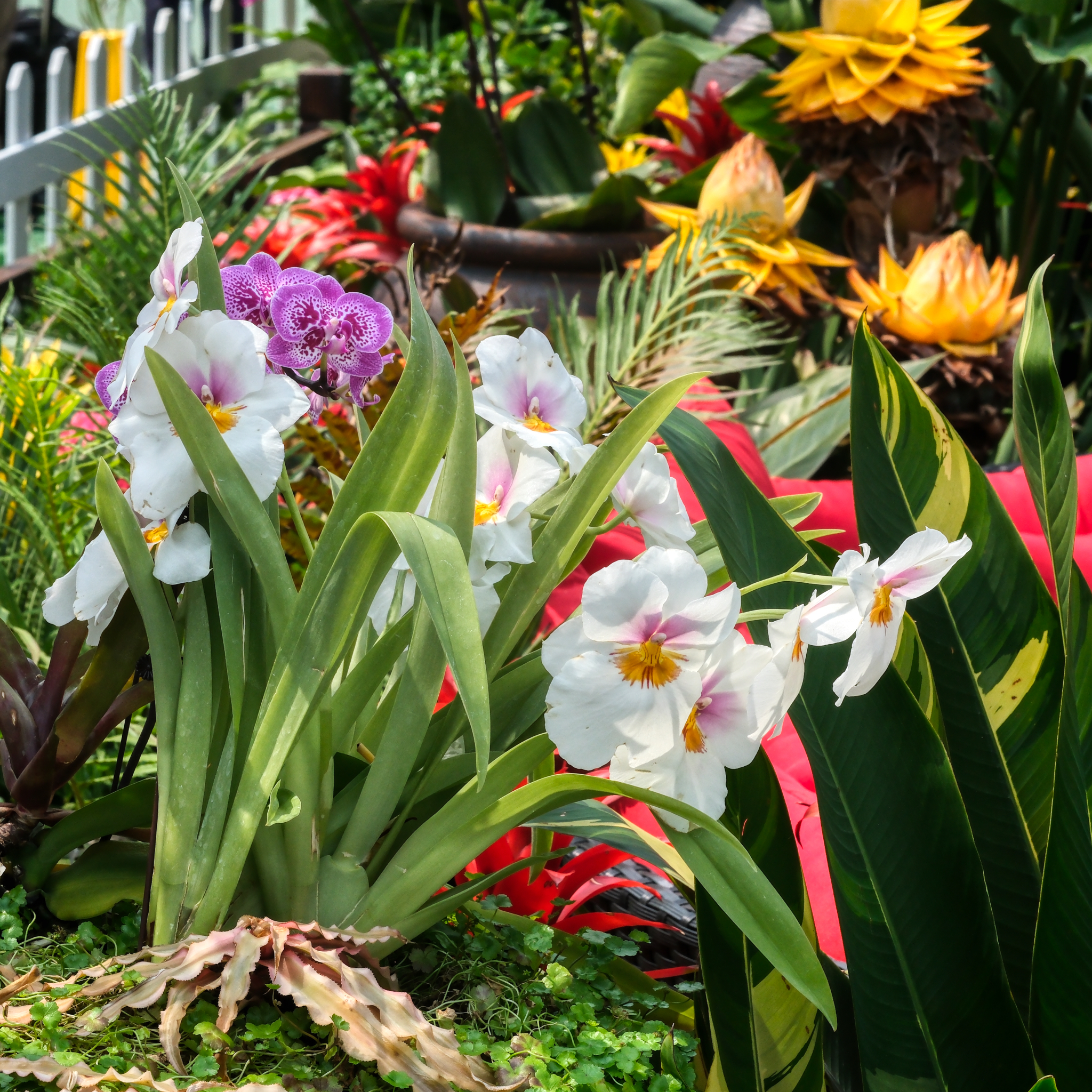 I have to confess a bias: I live in Thailand . . . and I think the Thai exhibit was the very best in the show. There, I said it.
I have to confess a bias: I live in Thailand . . . and I think the Thai exhibit was the very best in the show. There, I said it.
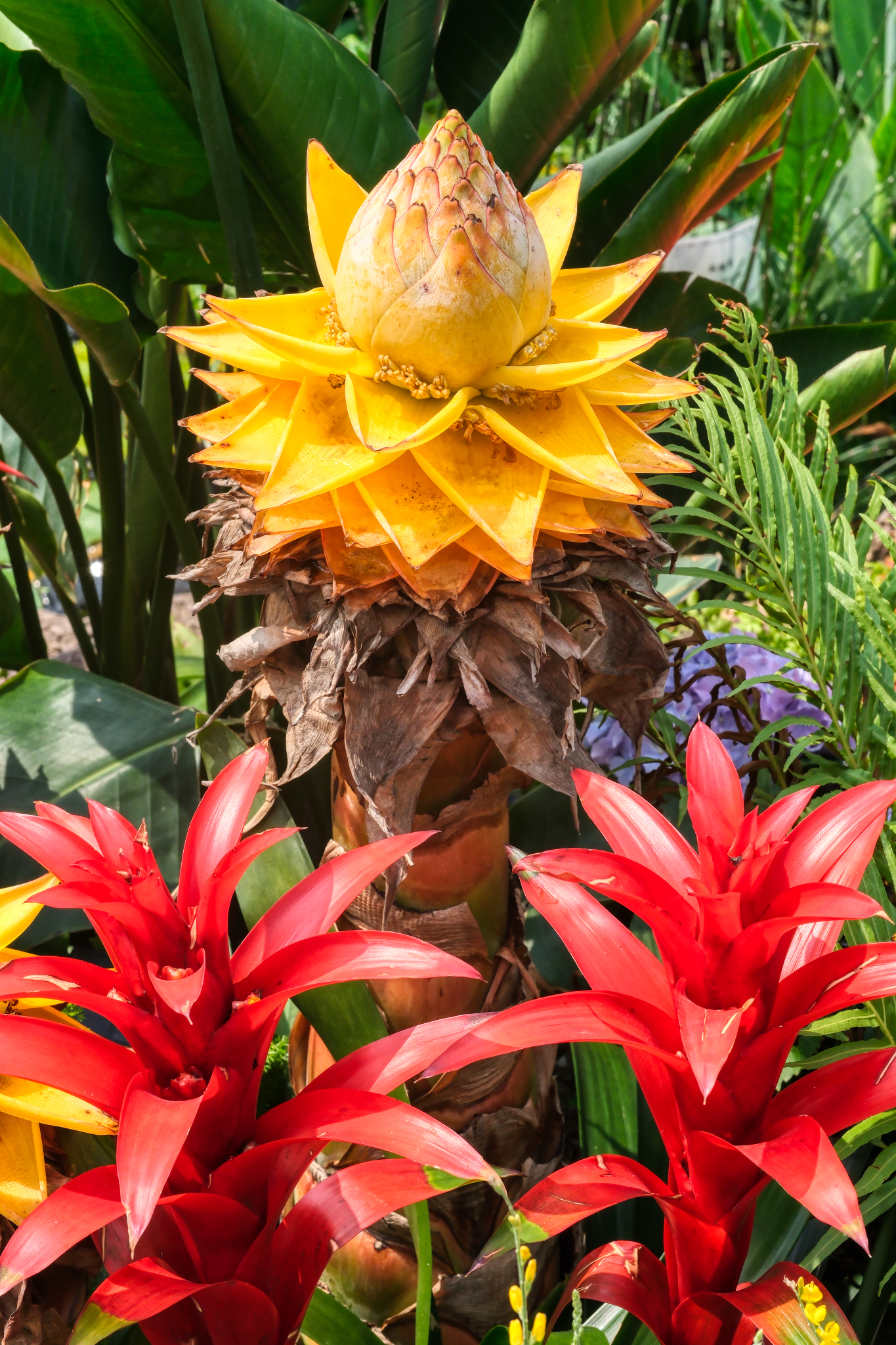 I have these in myb garden . . . astonishing!
I have these in myb garden . . . astonishing!
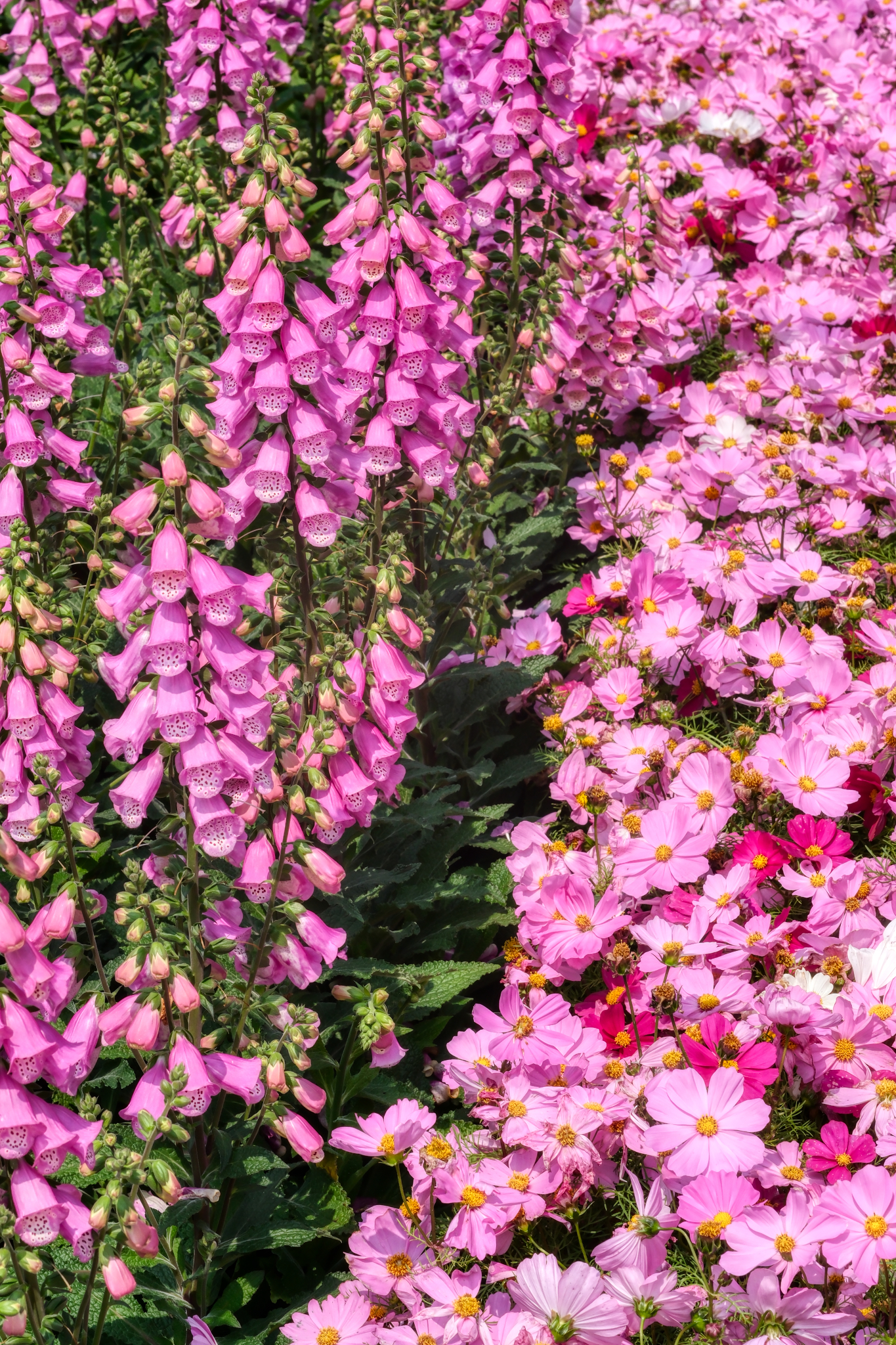 Bluebells galore!!!
Bluebells galore!!!
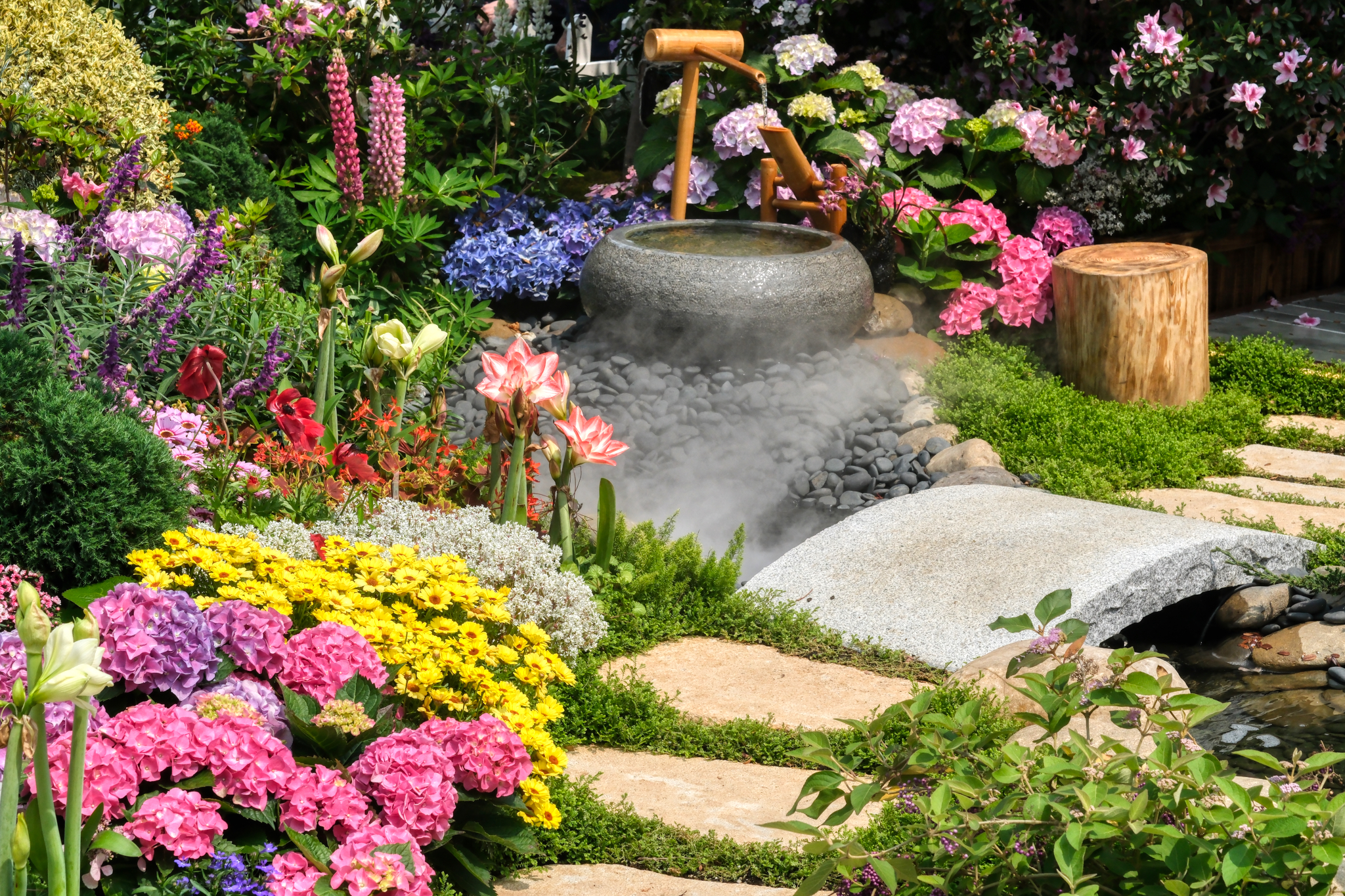 Japan also had an official entry . . . and it was beautiful too . . . and very Japanese!
Japan also had an official entry . . . and it was beautiful too . . . and very Japanese!
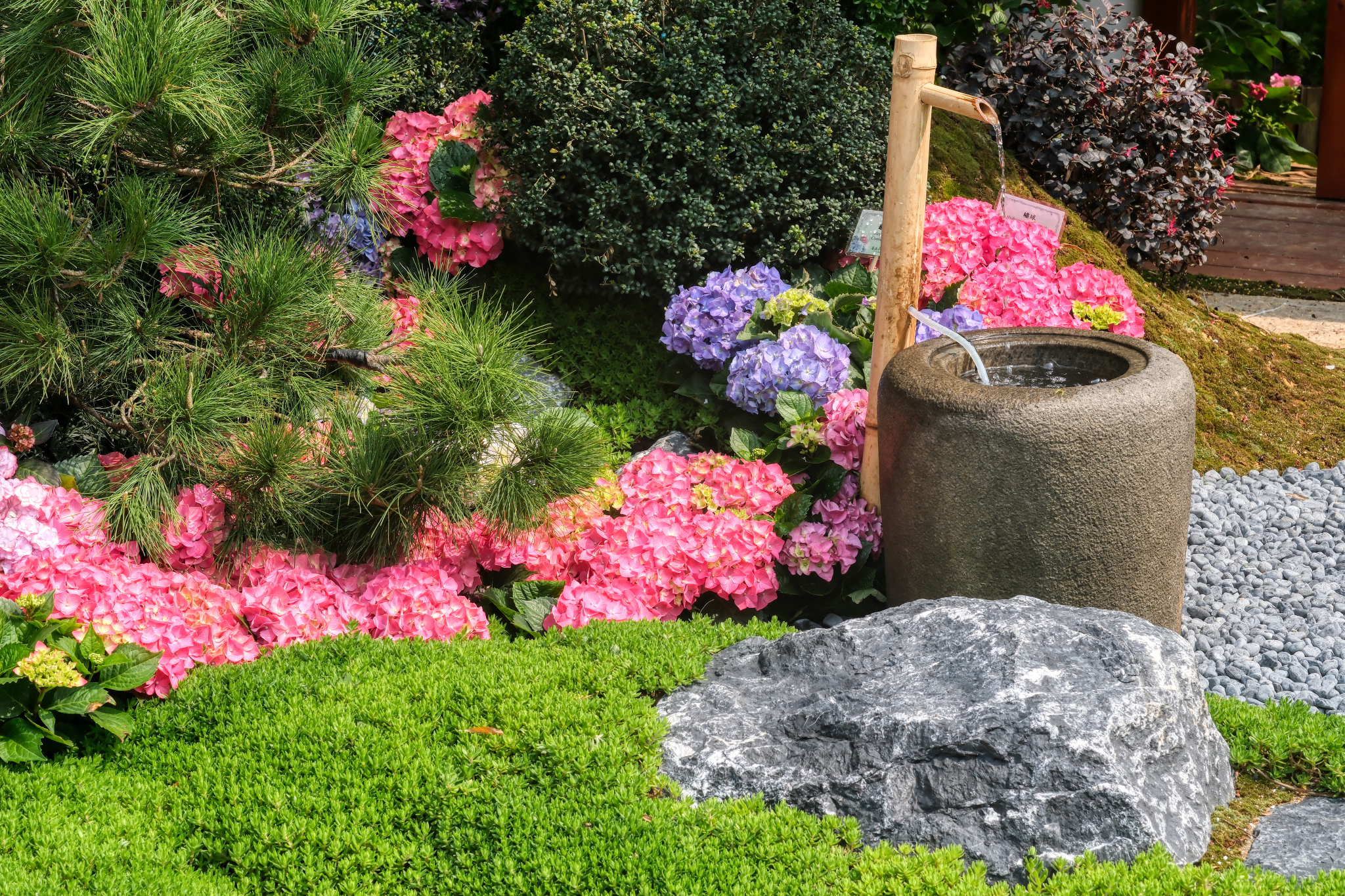 Japanese garden style.
Japanese garden style.
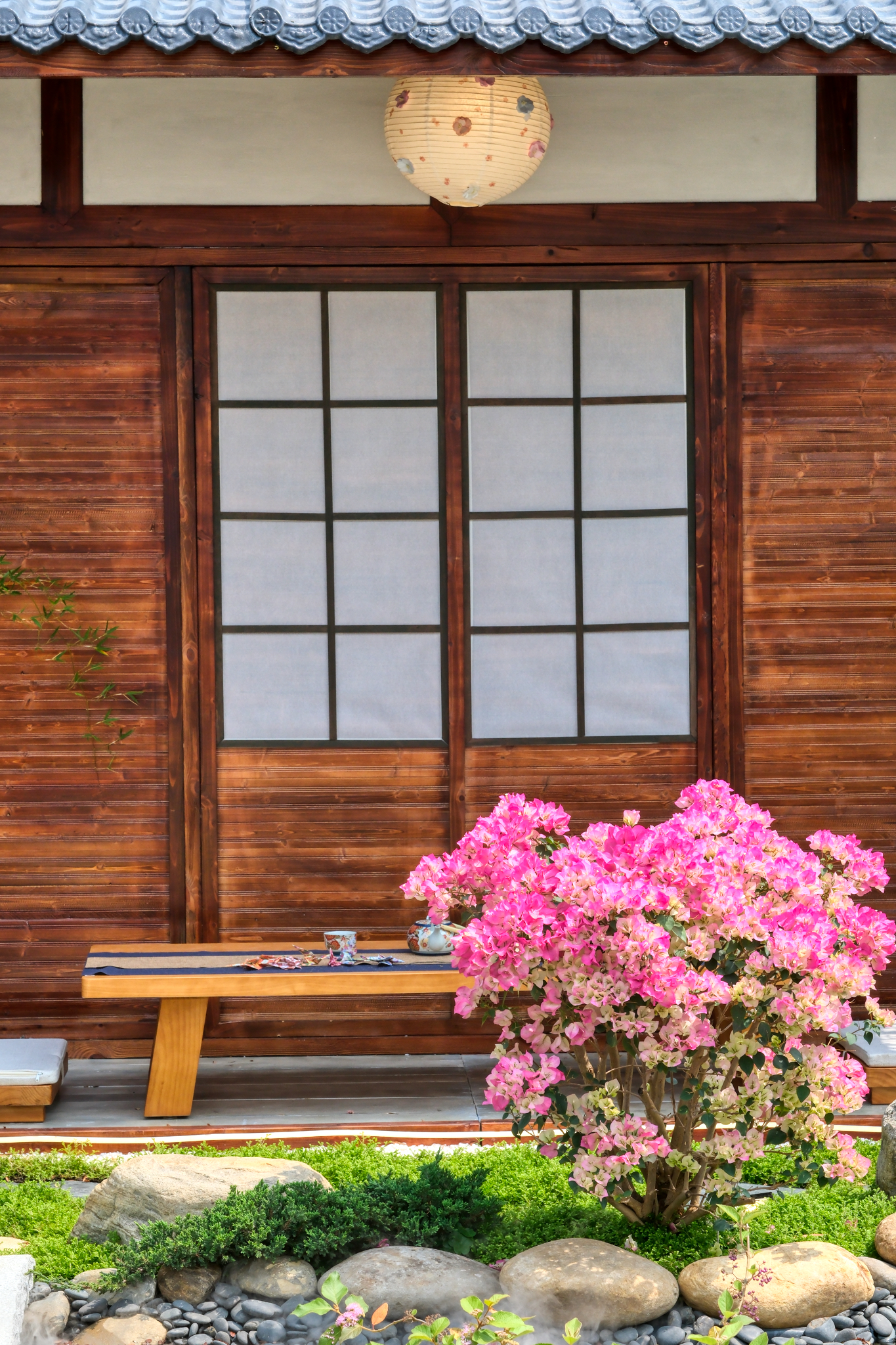 A classic formal Japanese garden.
A classic formal Japanese garden.
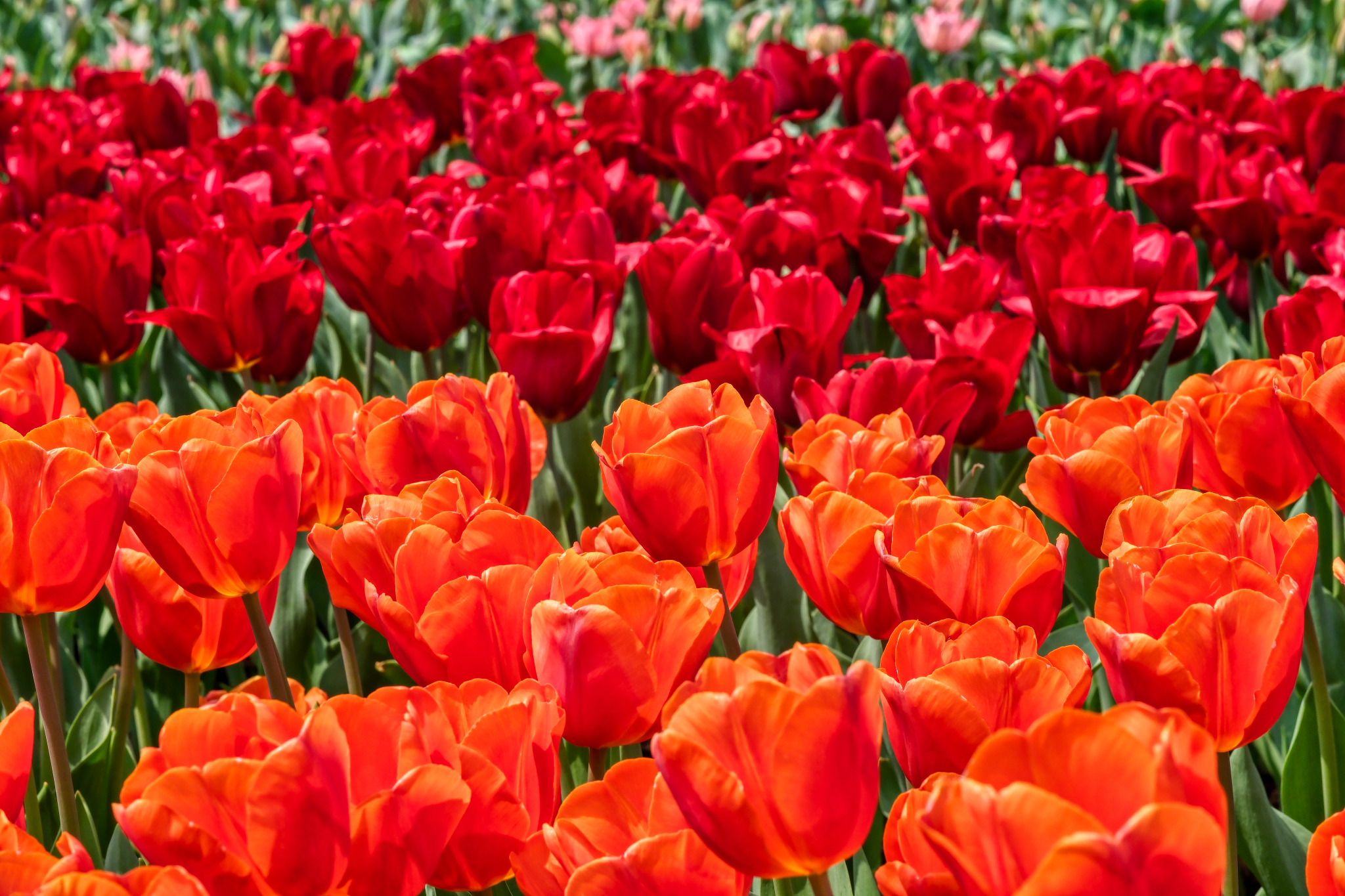 Massivce tulip plantings everywhere . . . the colors were sooooo bright!
Massivce tulip plantings everywhere . . . the colors were sooooo bright!
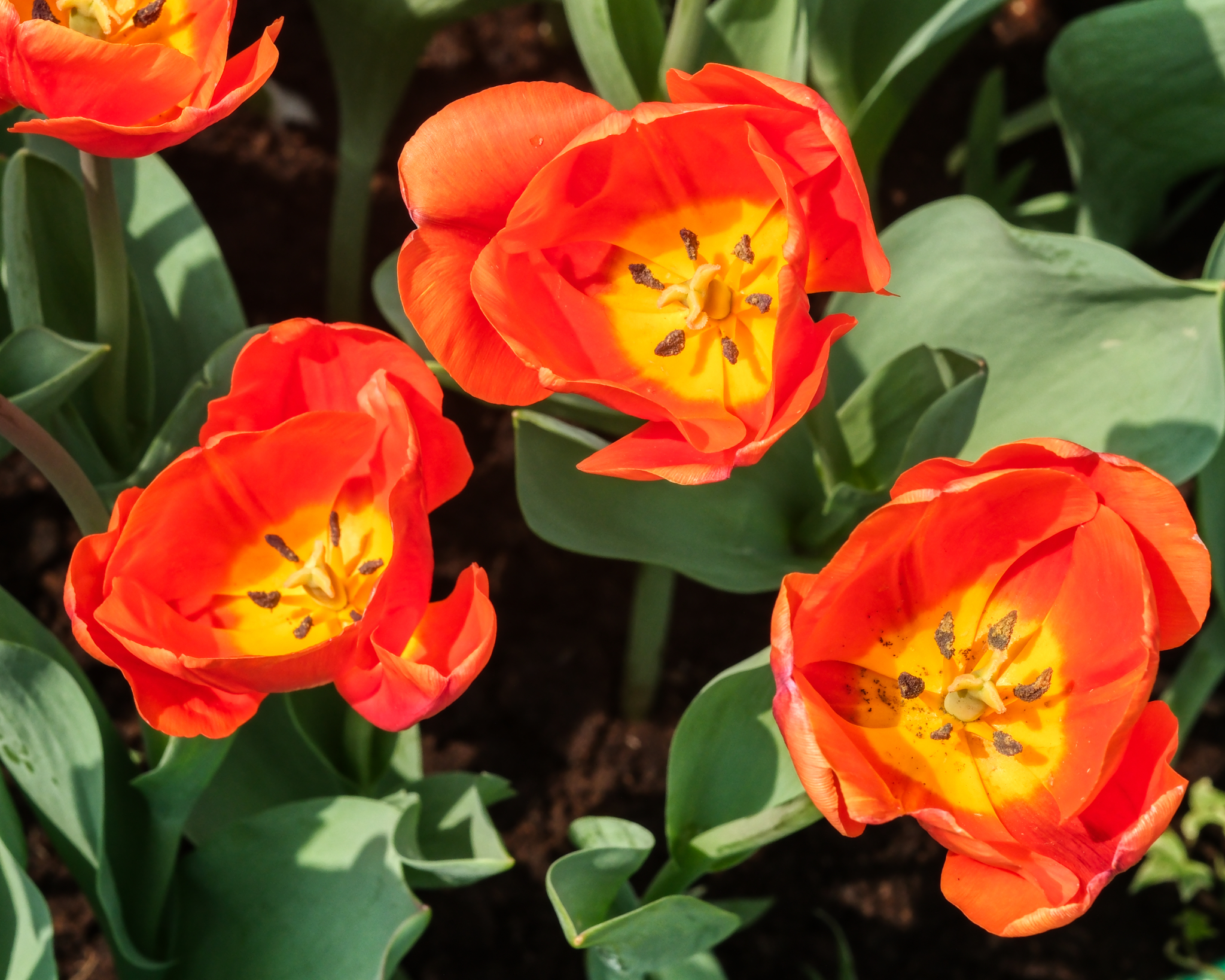 Tulip interiors are also interestimng.
Tulip interiors are also interestimng.
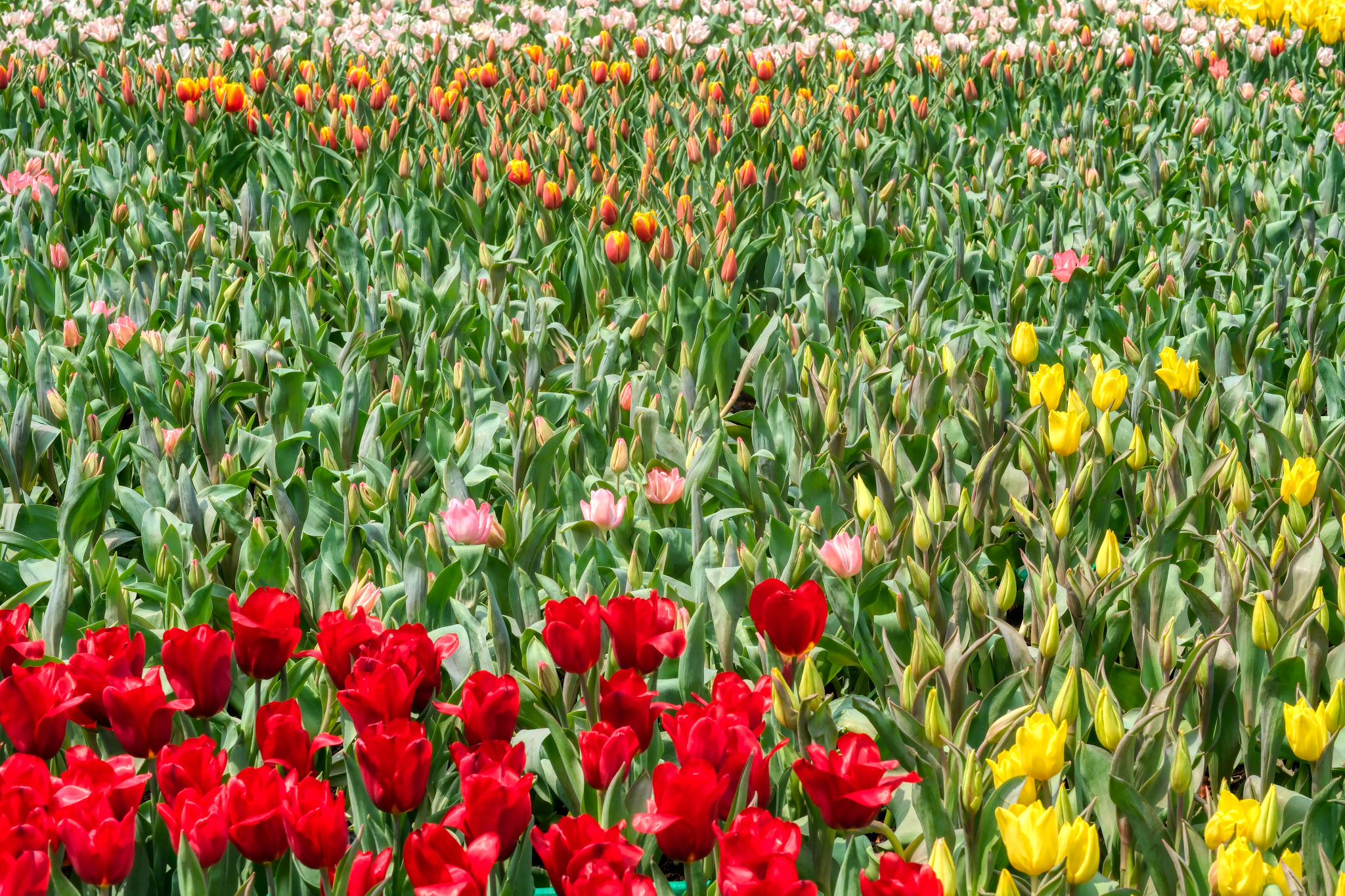 More tulips . . . on the way.
More tulips . . . on the way.
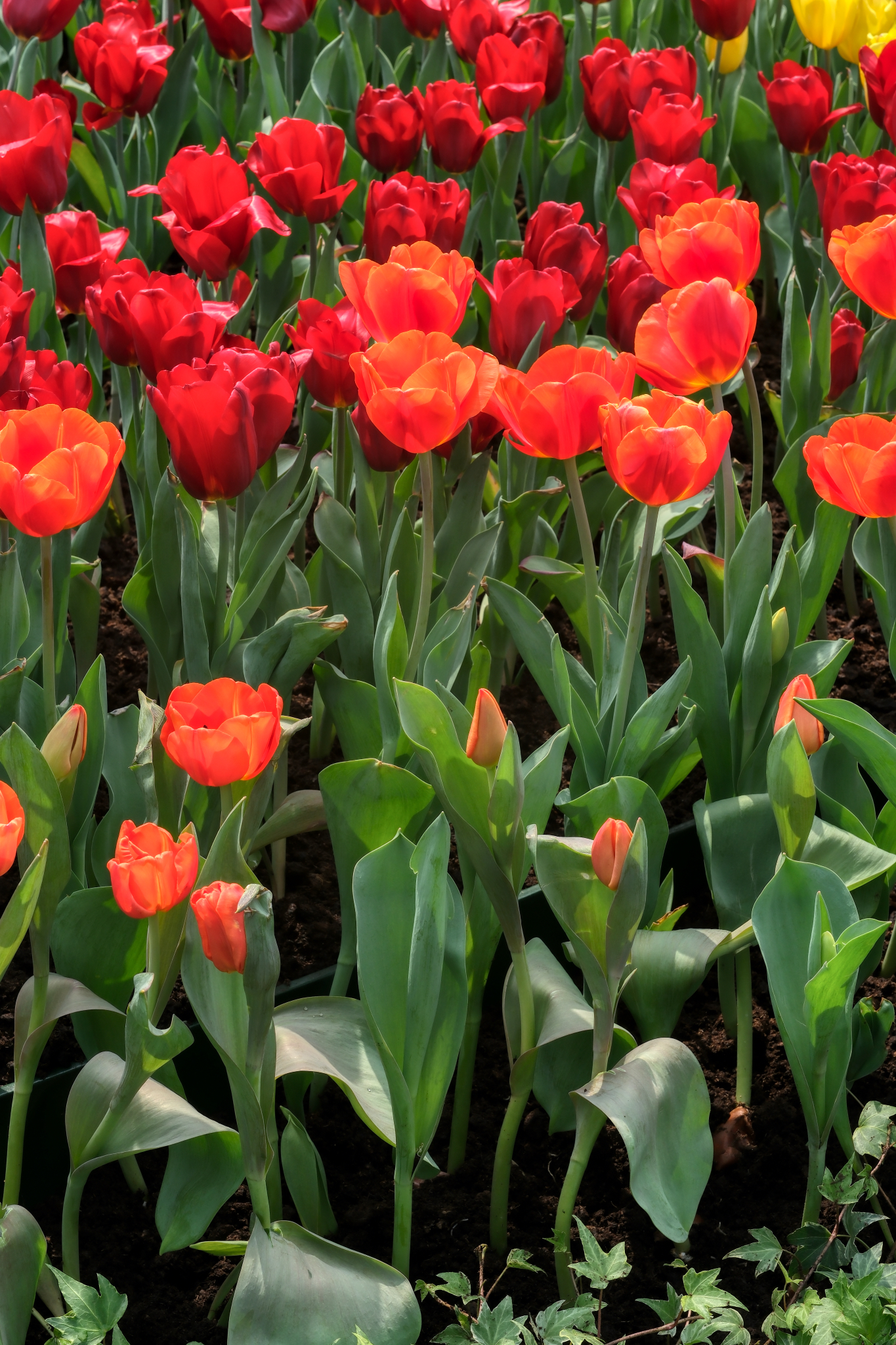 Tulips, tulips, tulips . . . I could have done an entire entry on tulips . . . I took so many photos.
Tulips, tulips, tulips . . . I could have done an entire entry on tulips . . . I took so many photos.
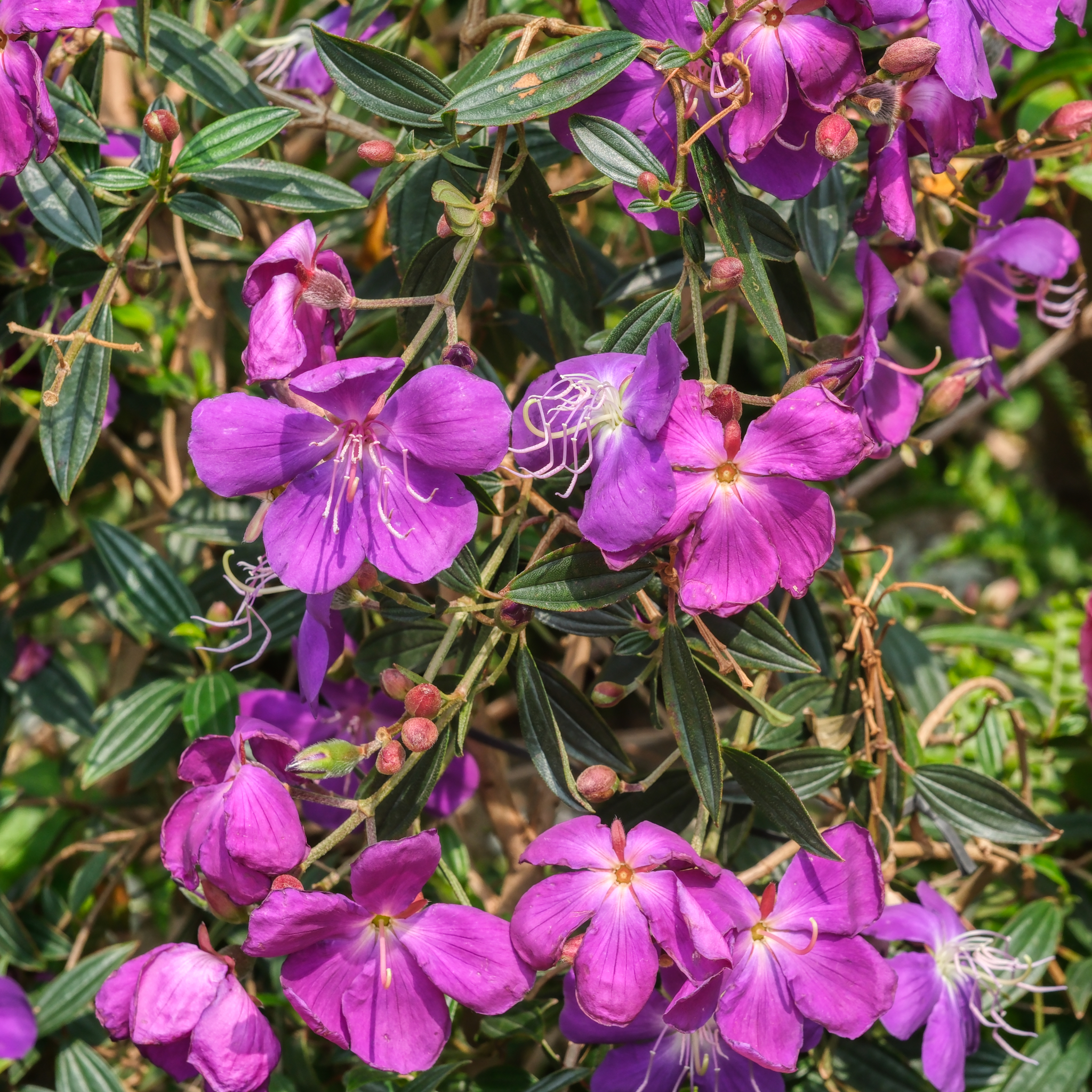 I have these in my garden.
I have these in my garden.
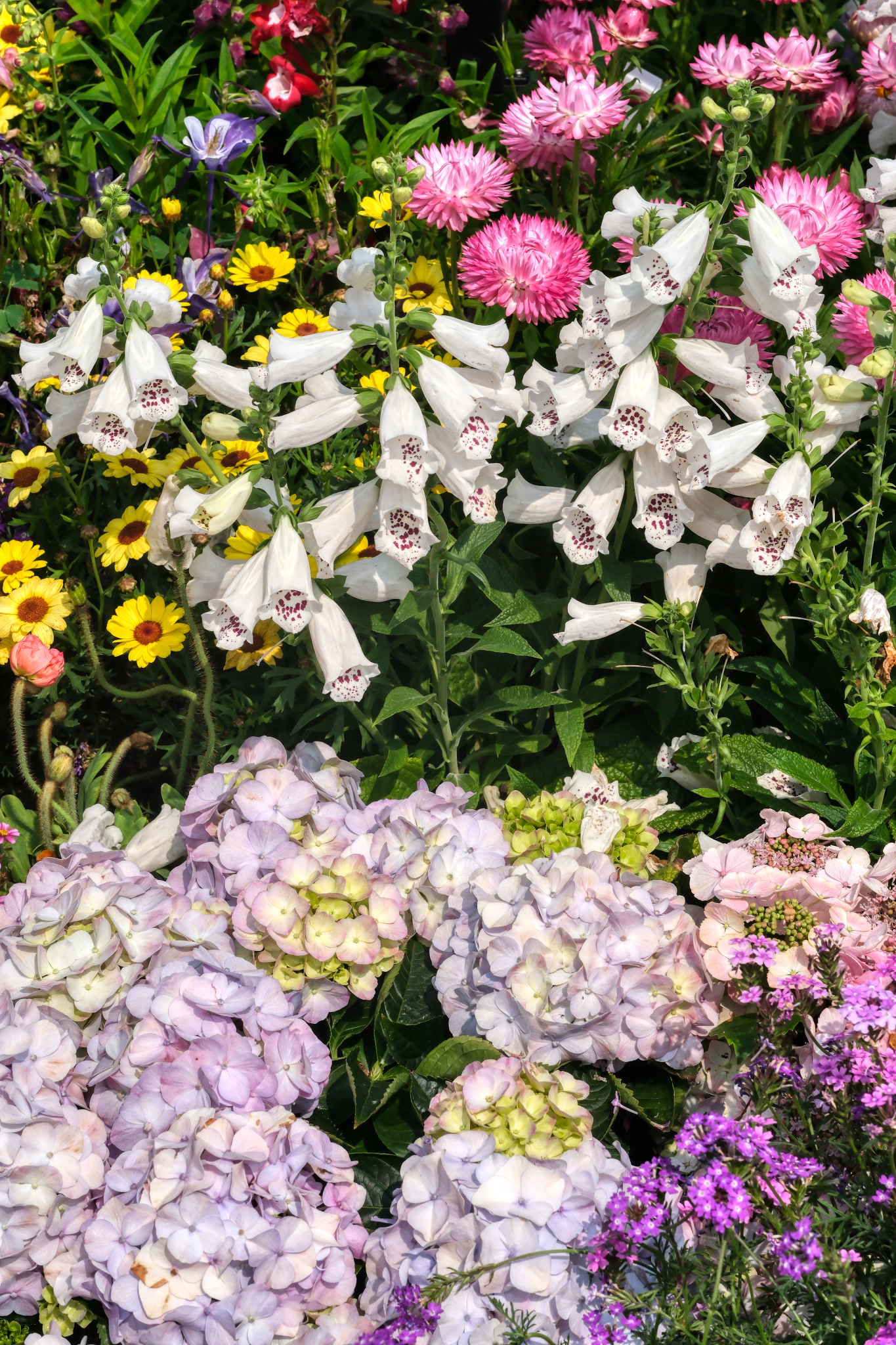 A mixed arrangement. Nice.
A mixed arrangement. Nice.
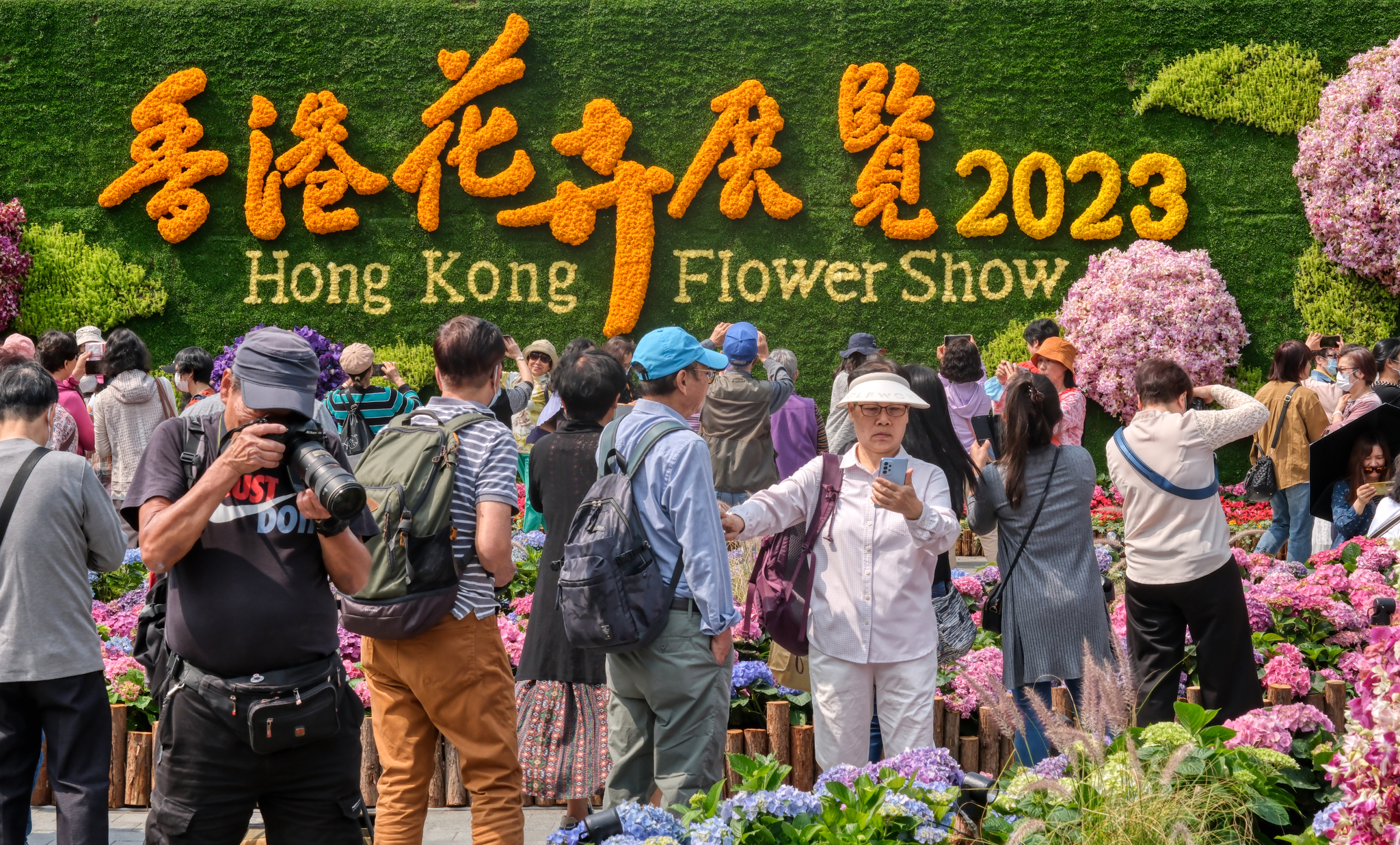 I wasn't the only person who thought of bringing their camera to the Flower Show. Everybody, and I do mean EVERYBODY, had their cameras and phones out taking photos . . . and there was some elbowing here and there to get the 'best' photo angles.
I wasn't the only person who thought of bringing their camera to the Flower Show. Everybody, and I do mean EVERYBODY, had their cameras and phones out taking photos . . . and there was some elbowing here and there to get the 'best' photo angles.
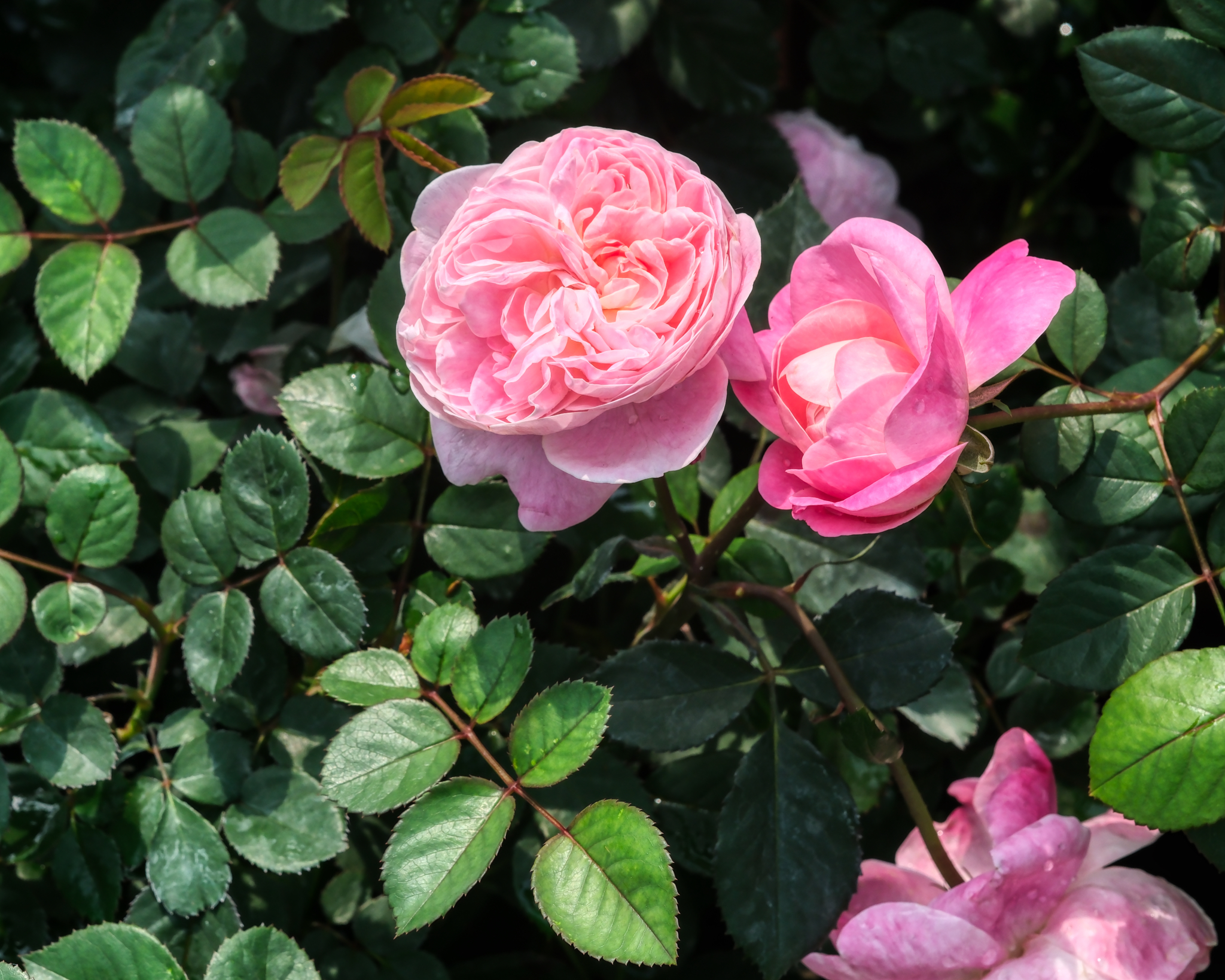 A lone pink rose.
A lone pink rose.
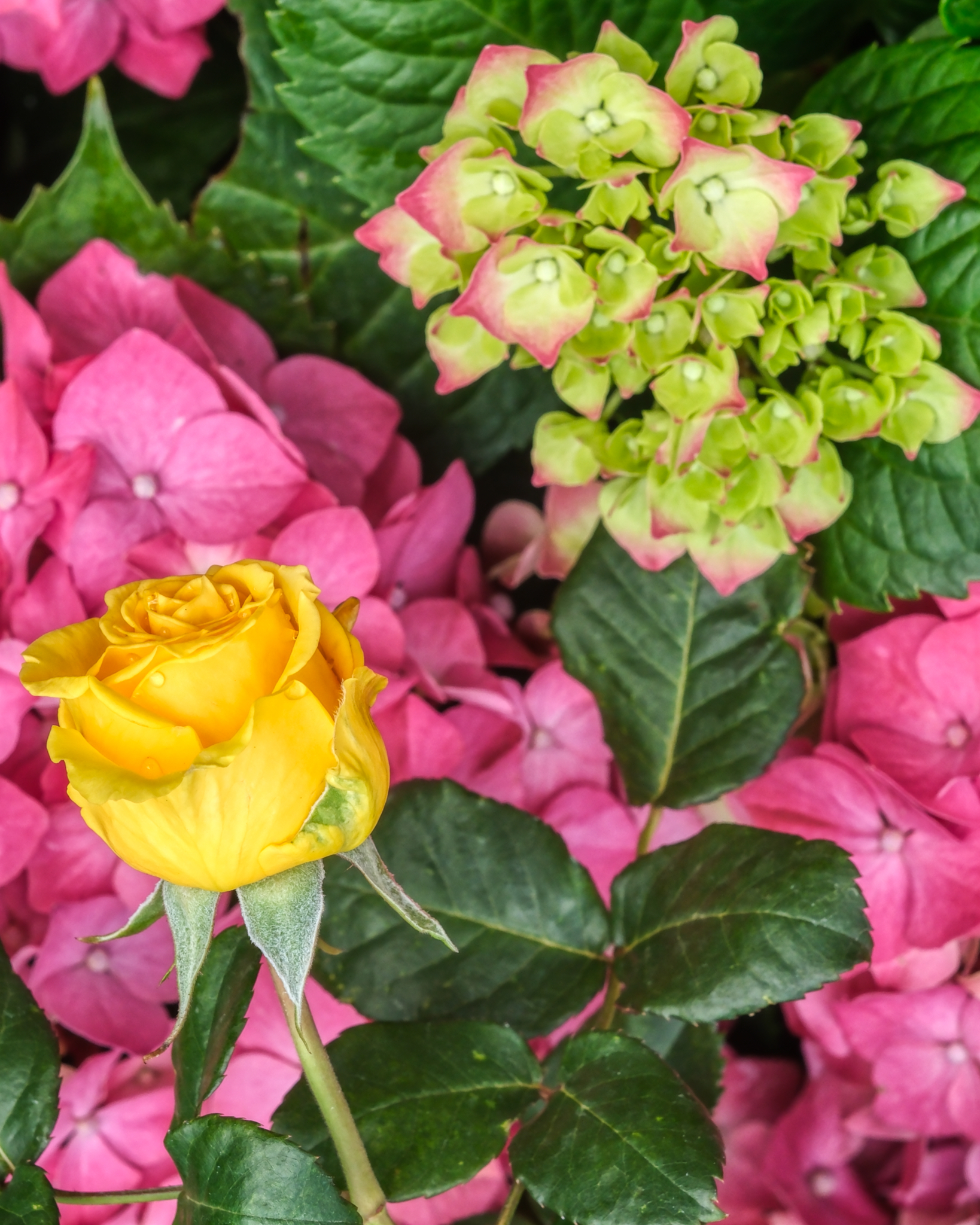 New yellow rose in colorful company.
New yellow rose in colorful company.
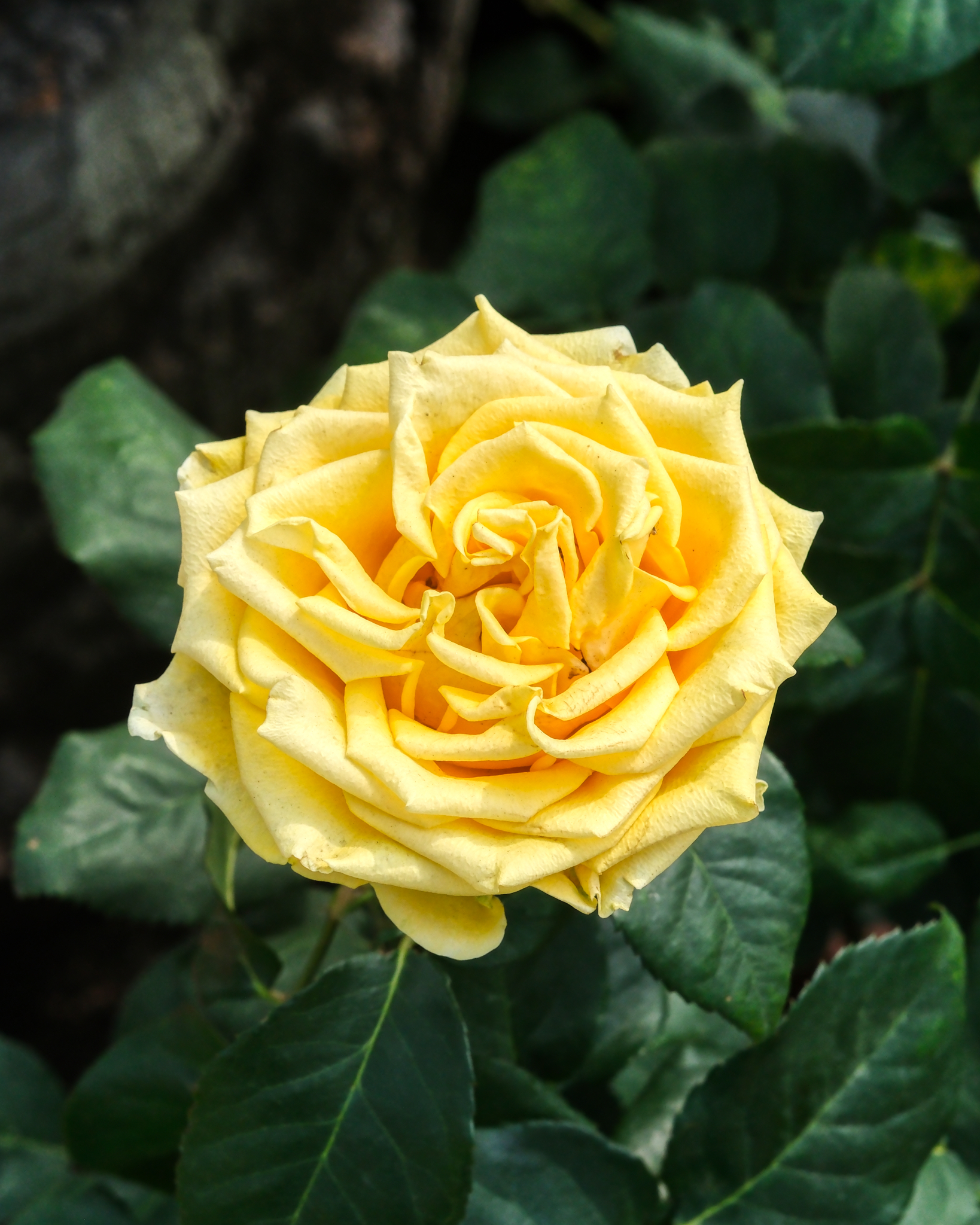 Yellow rose showing off.
Yellow rose showing off.
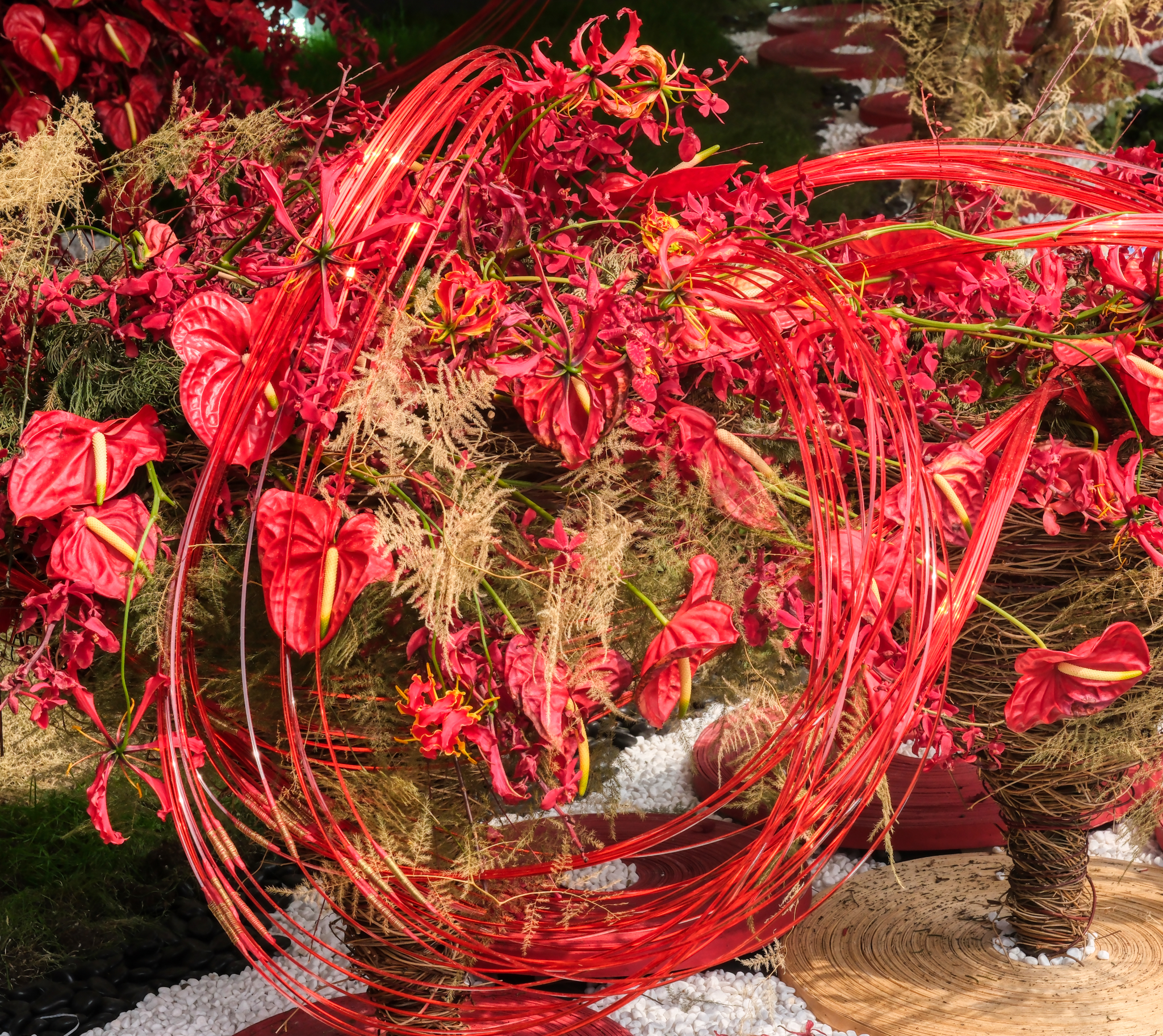 There was a small pavilion with flower arrangements . . . I think this one won.
There was a small pavilion with flower arrangements . . . I think this one won.
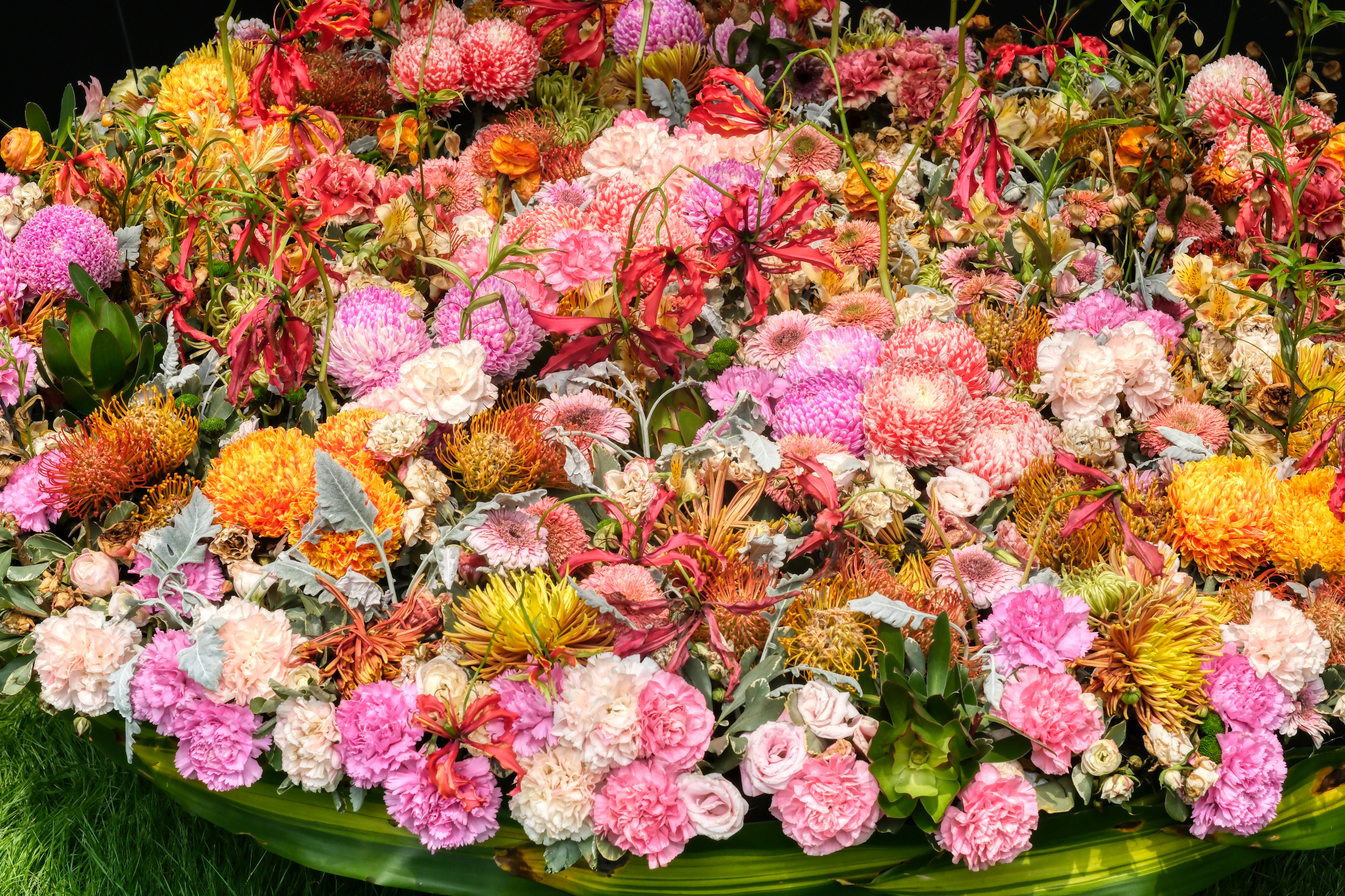 A massive flower arrangement. Wow!
A massive flower arrangement. Wow!
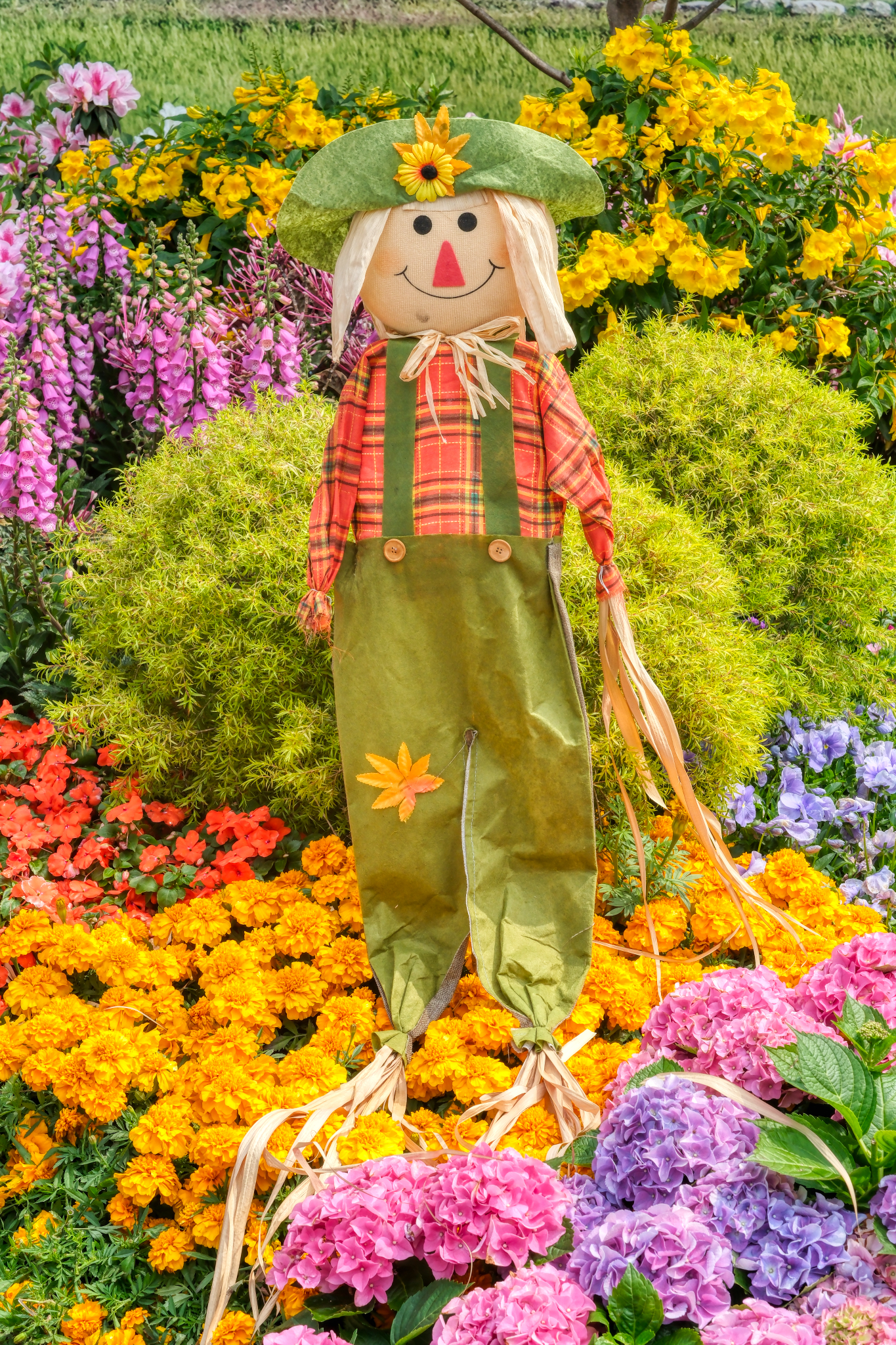 A cute "farm" display.
A cute "farm" display.
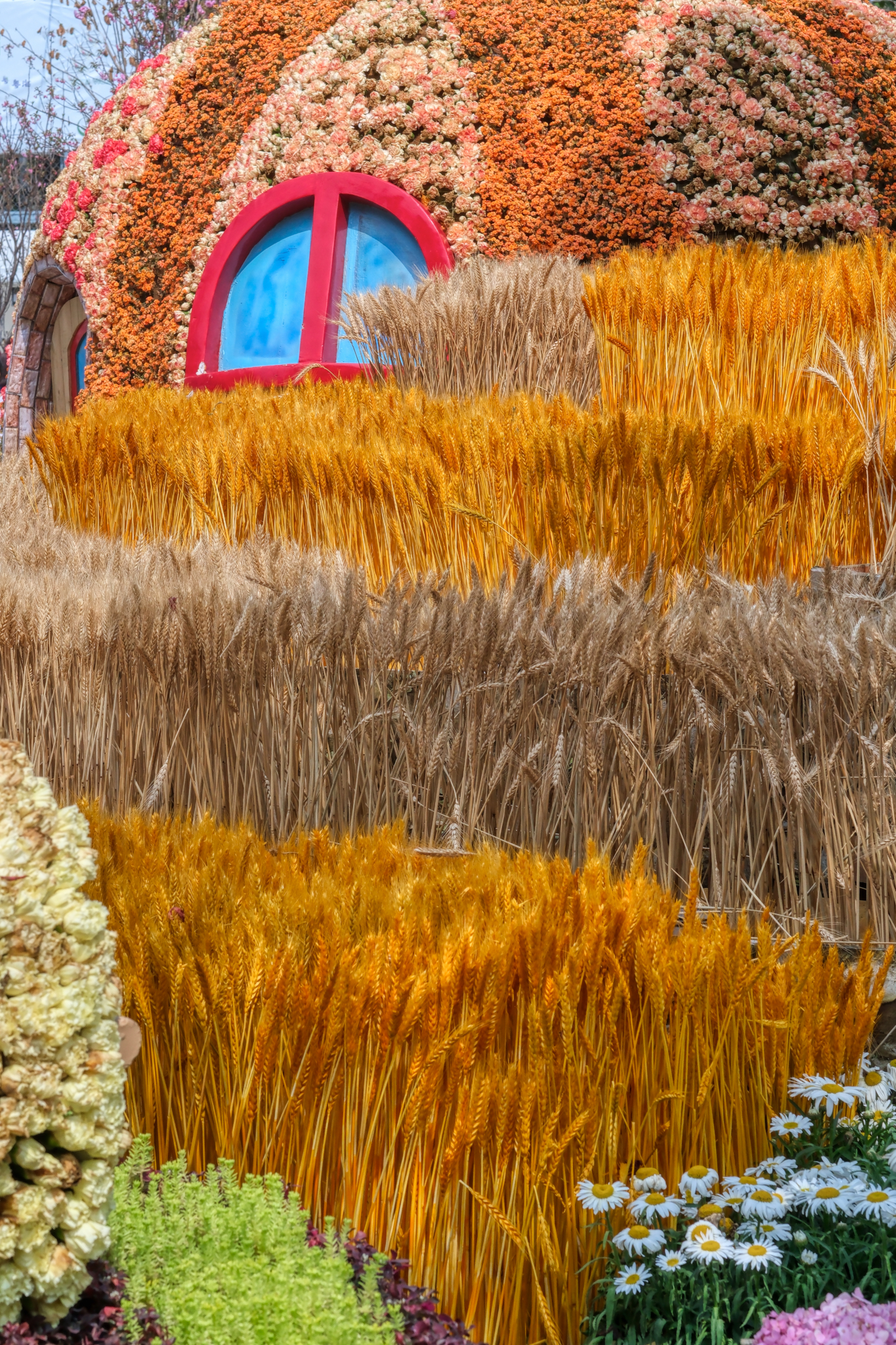 The European-style farm display used grain stalks with good results.
The European-style farm display used grain stalks with good results.
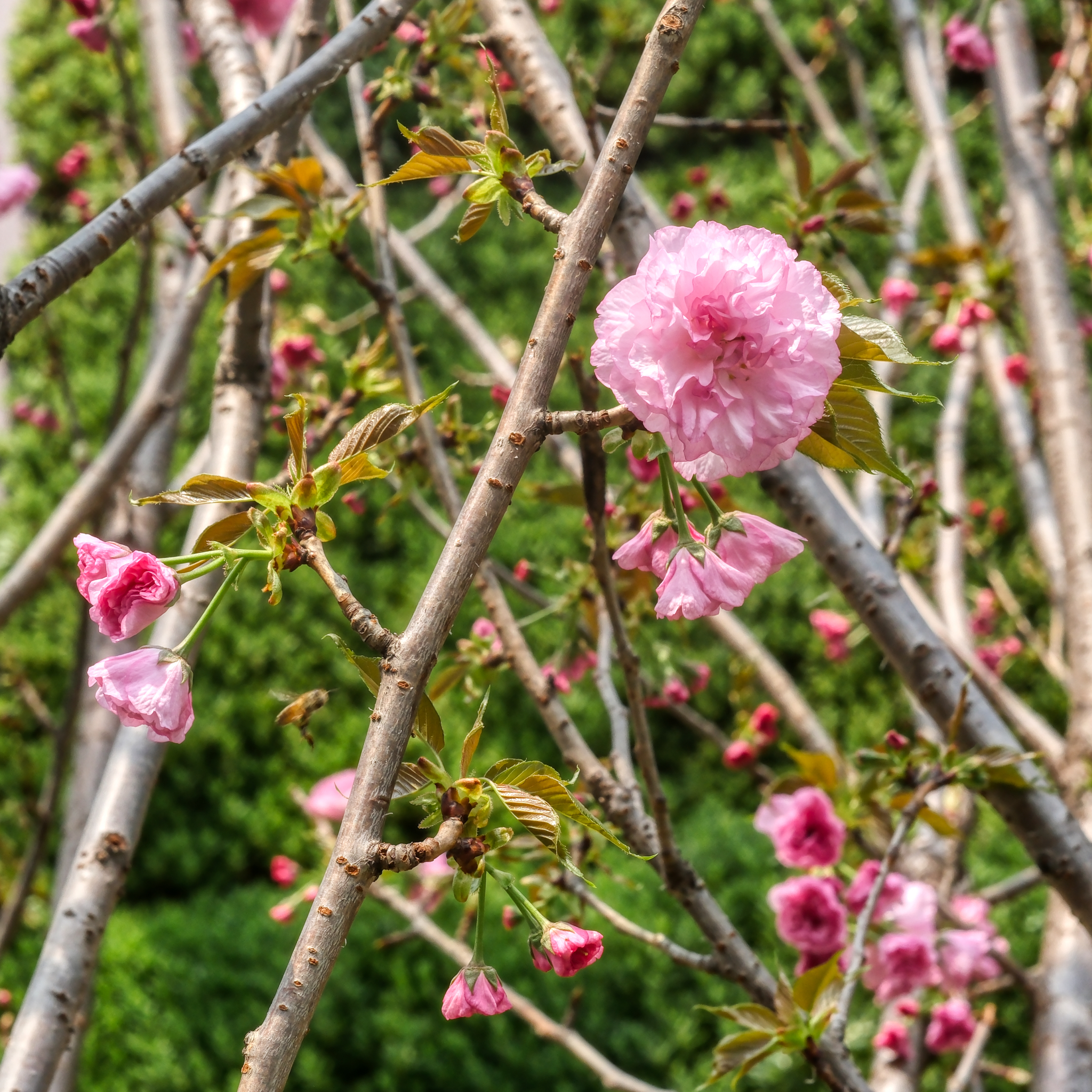 I do not know how they managed to get these fruit trees to blossom at the exact time for the Flower Show . . .
I do not know how they managed to get these fruit trees to blossom at the exact time for the Flower Show . . .
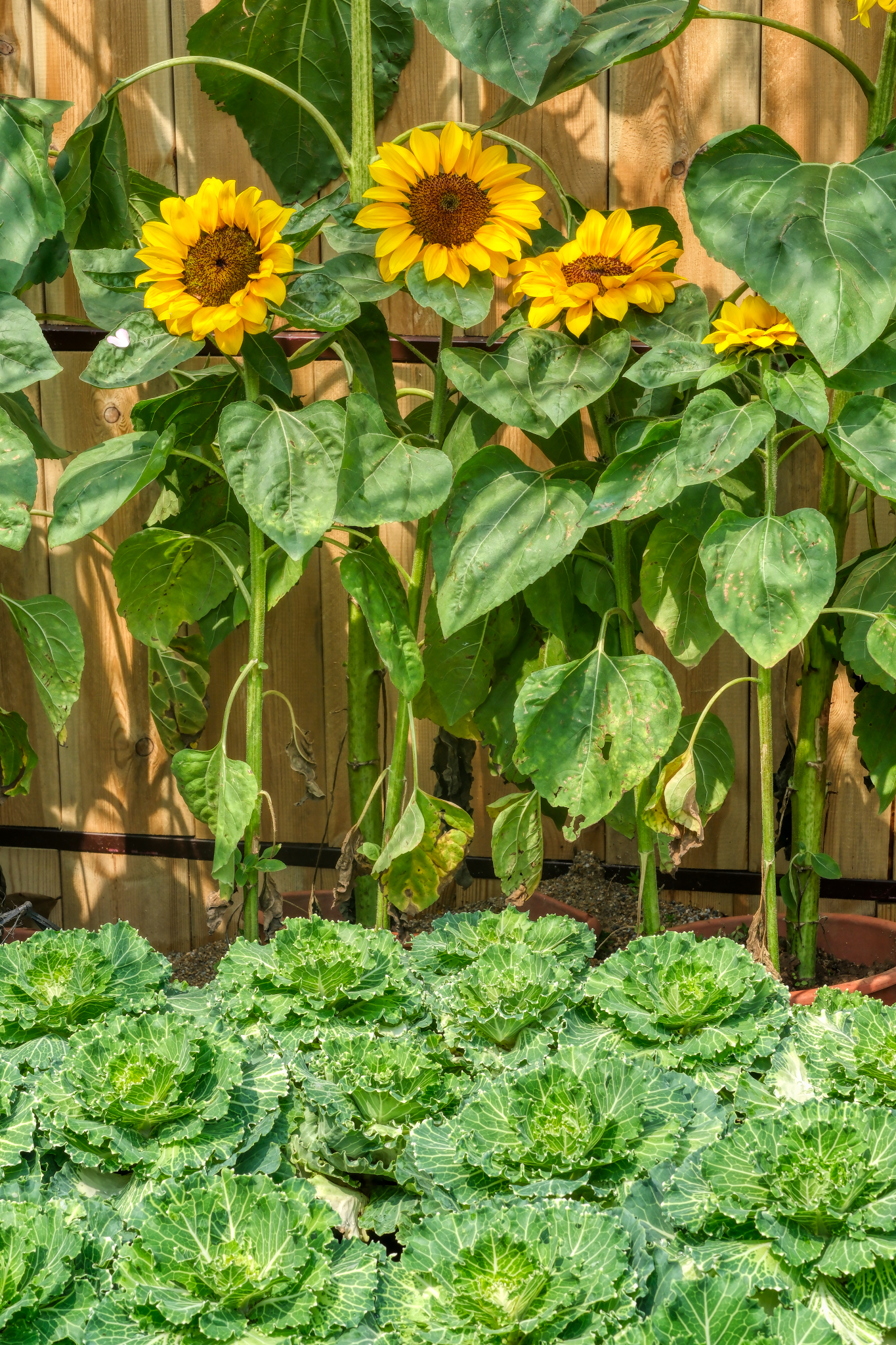 A lovely sunflower and succulent ground cover arrangement.
A lovely sunflower and succulent ground cover arrangement.
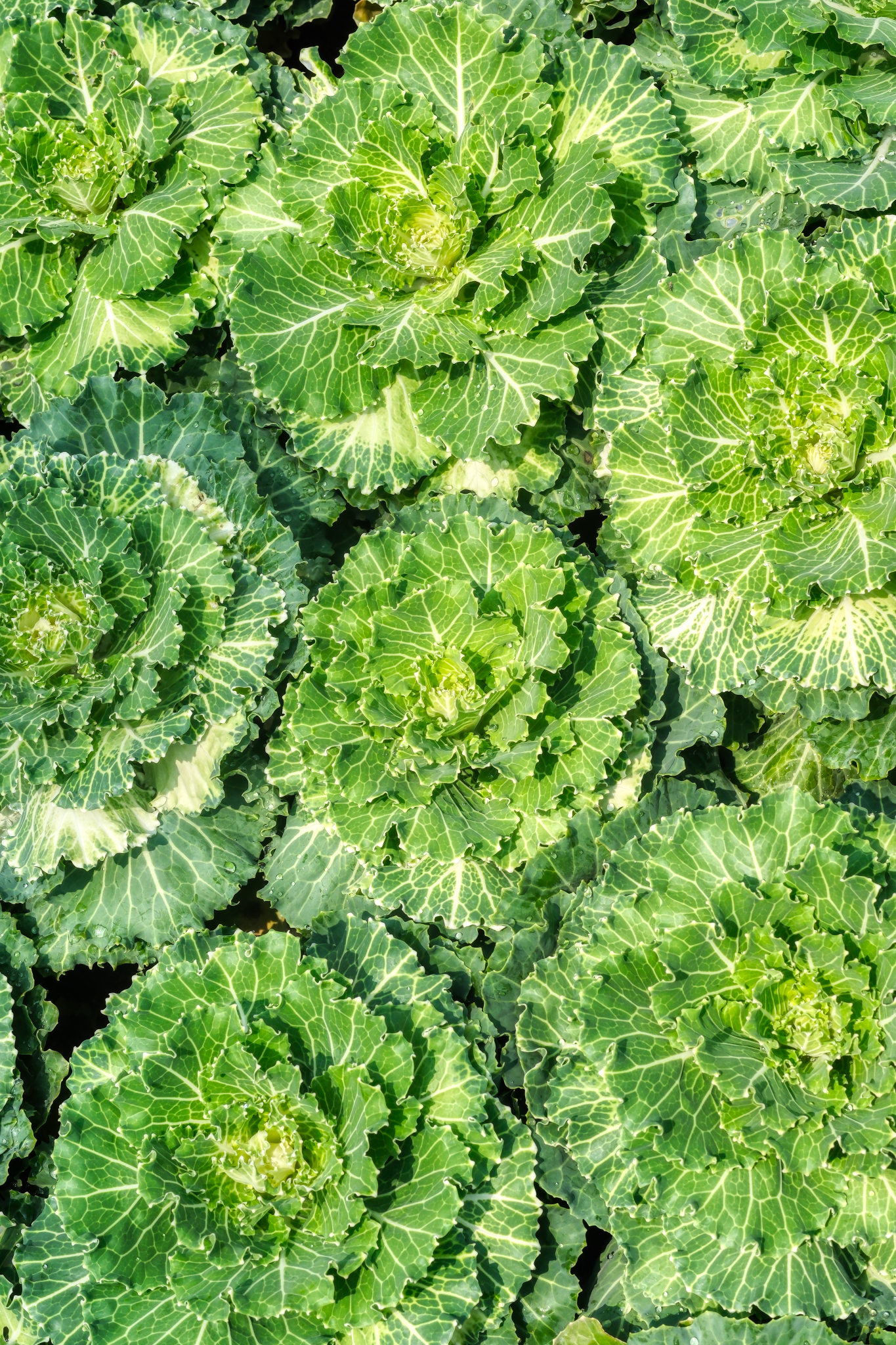 Lovely color and pattern . . .
Lovely color and pattern . . .
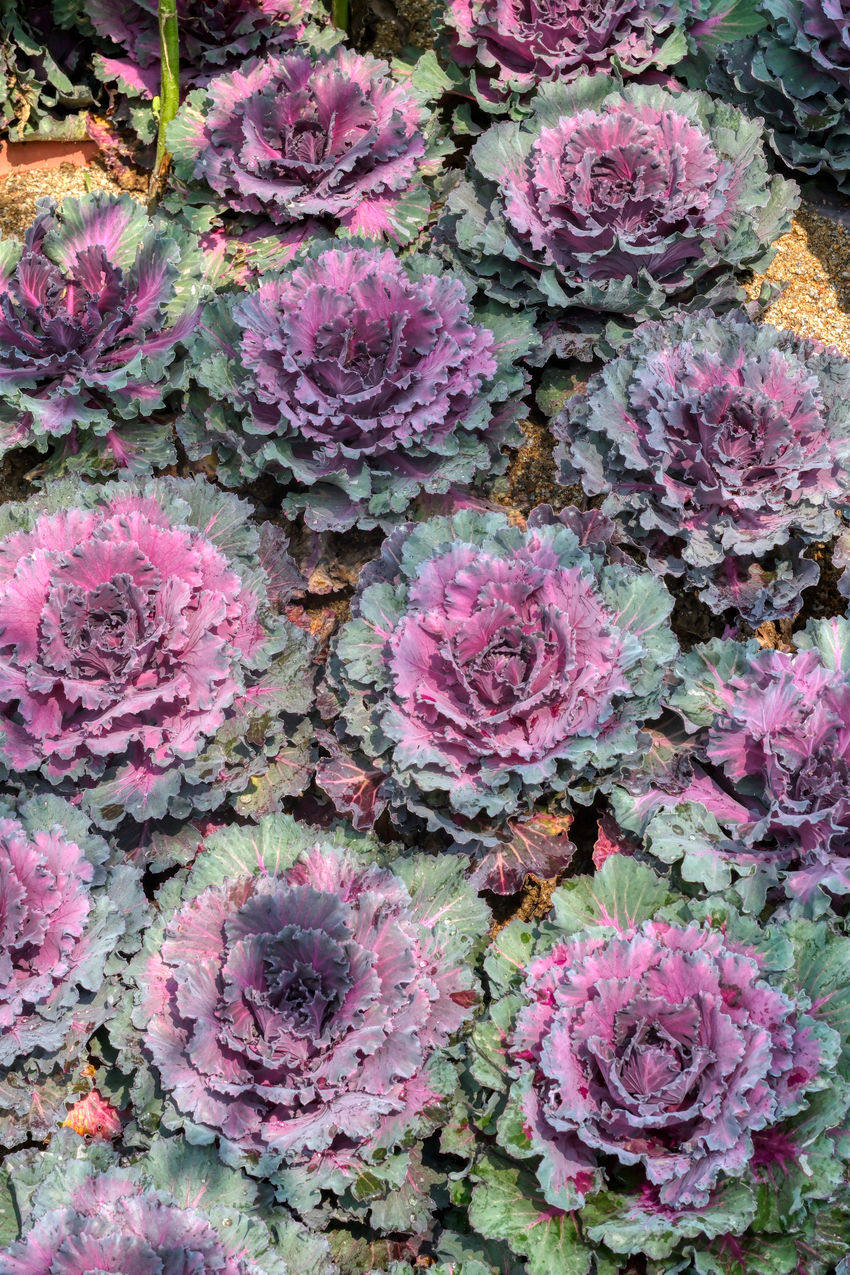 Purple succulent splash!
Purple succulent splash!
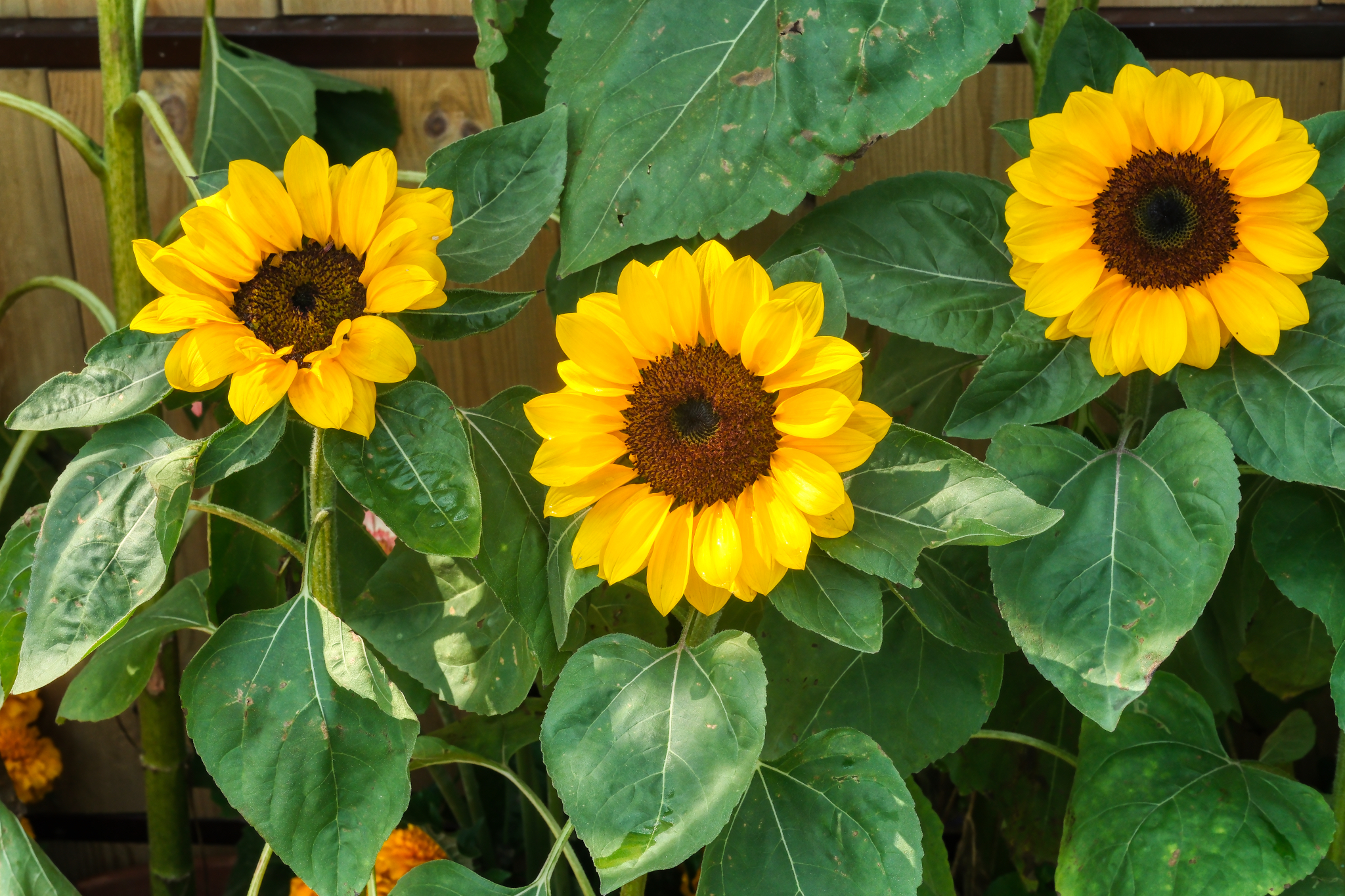 Sunflowers always make me feel happy.
Sunflowers always make me feel happy.
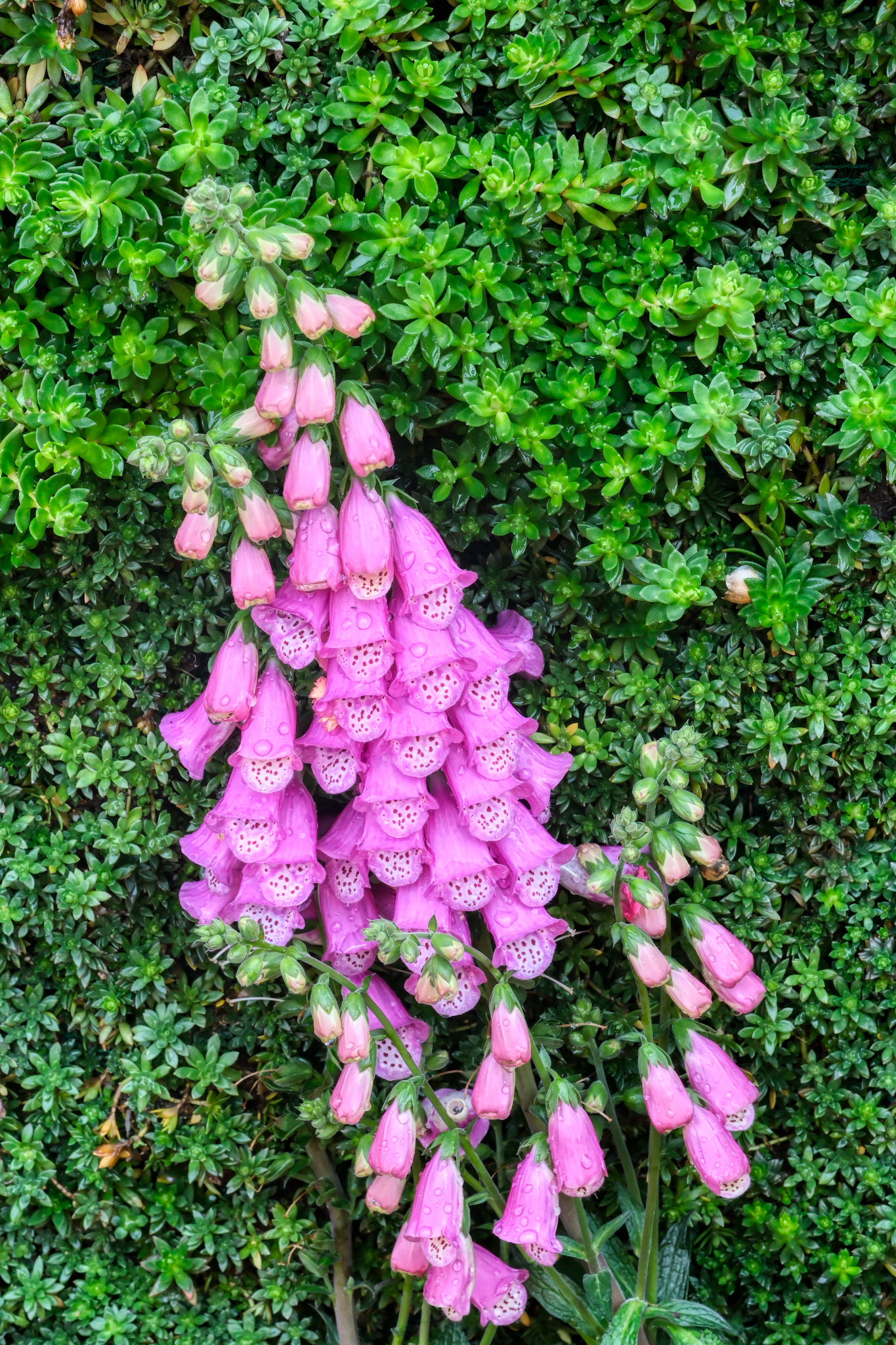 The organizers of this event spent a lot of time placing the flowers in perfect compositions for the many photographers who attended.
The organizers of this event spent a lot of time placing the flowers in perfect compositions for the many photographers who attended.
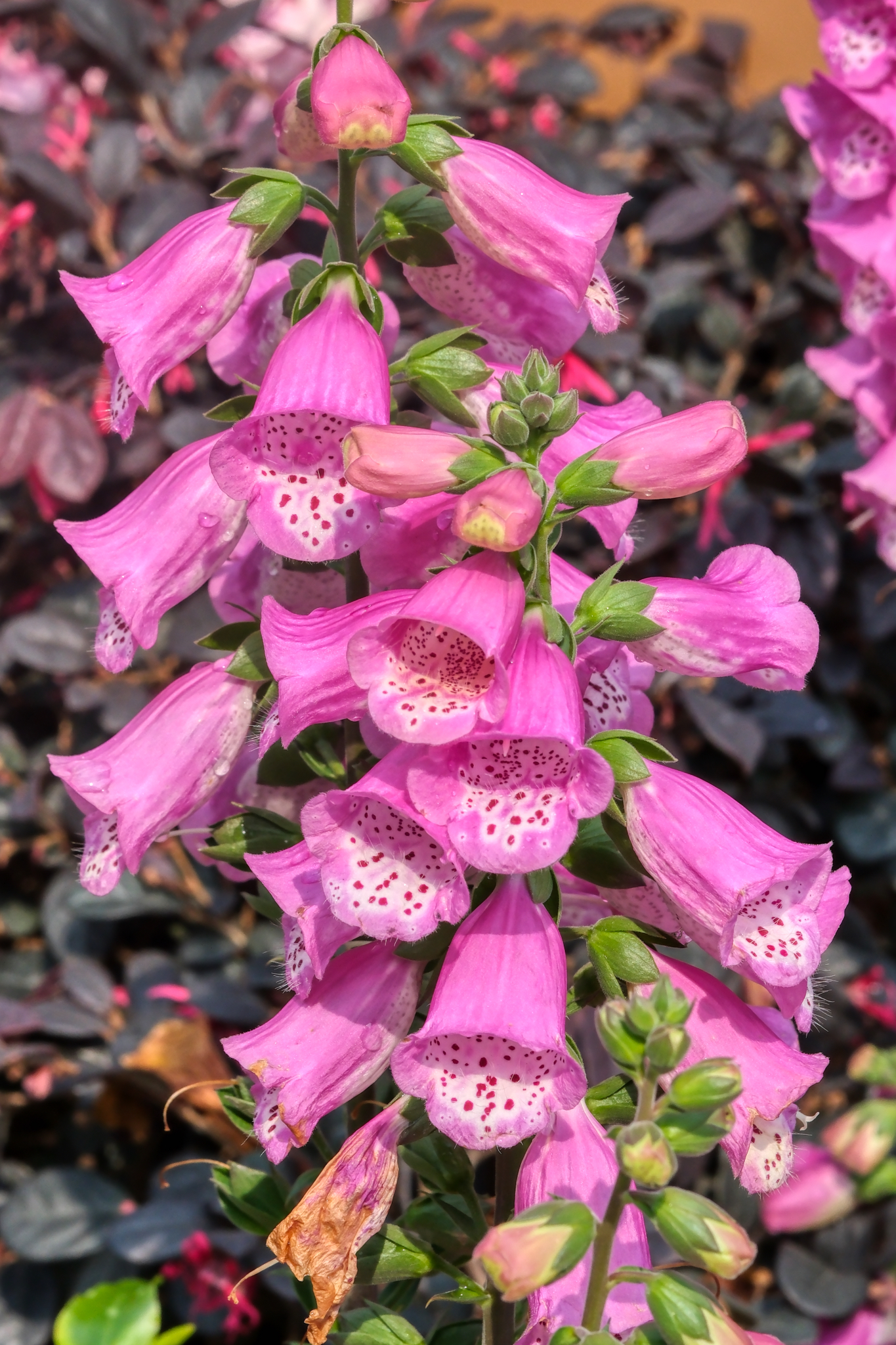 These were my favorite.
These were my favorite.
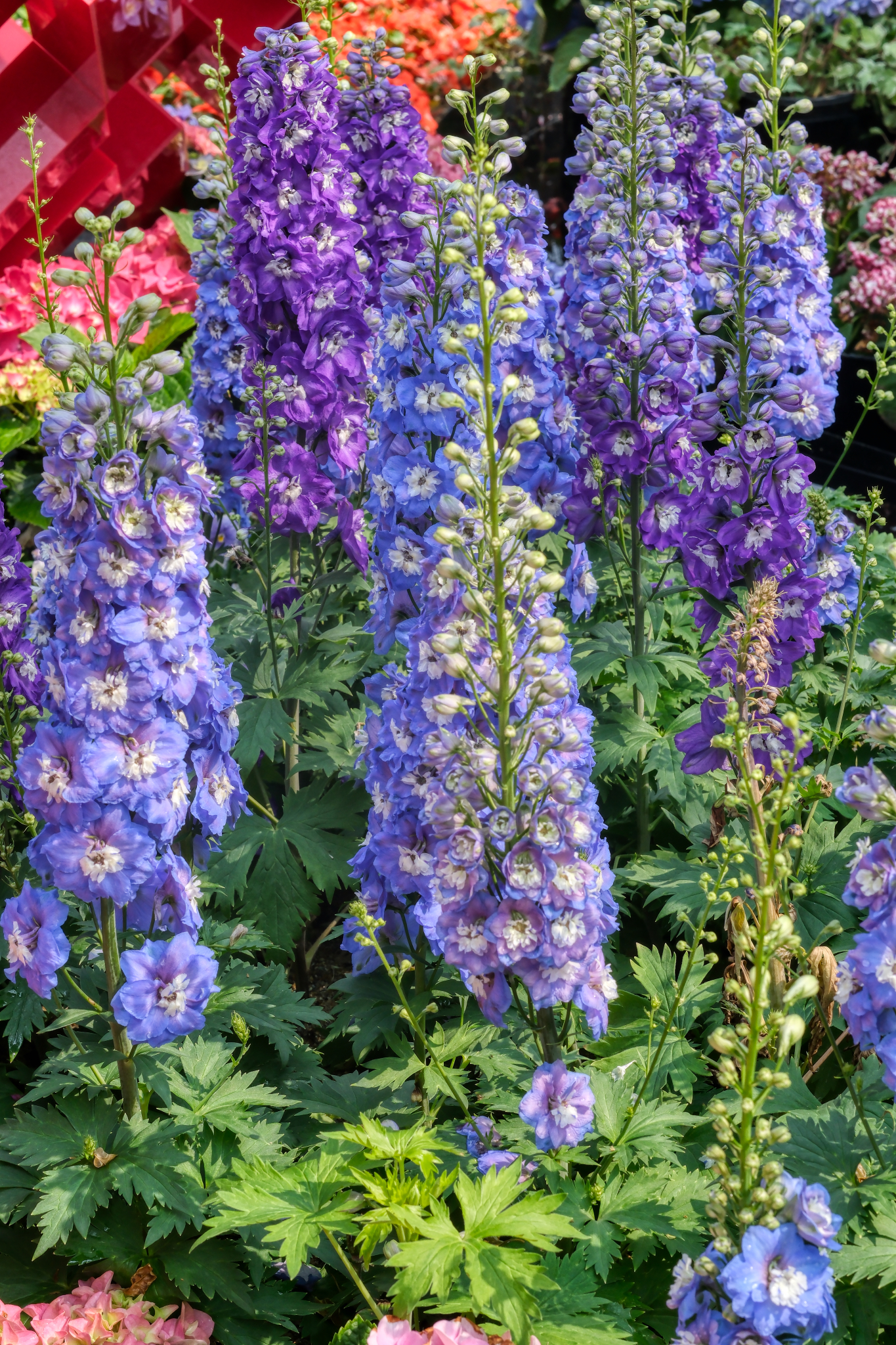 I want these in my garden . . . but it may be too hot here in Bangkok.
I want these in my garden . . . but it may be too hot here in Bangkok.
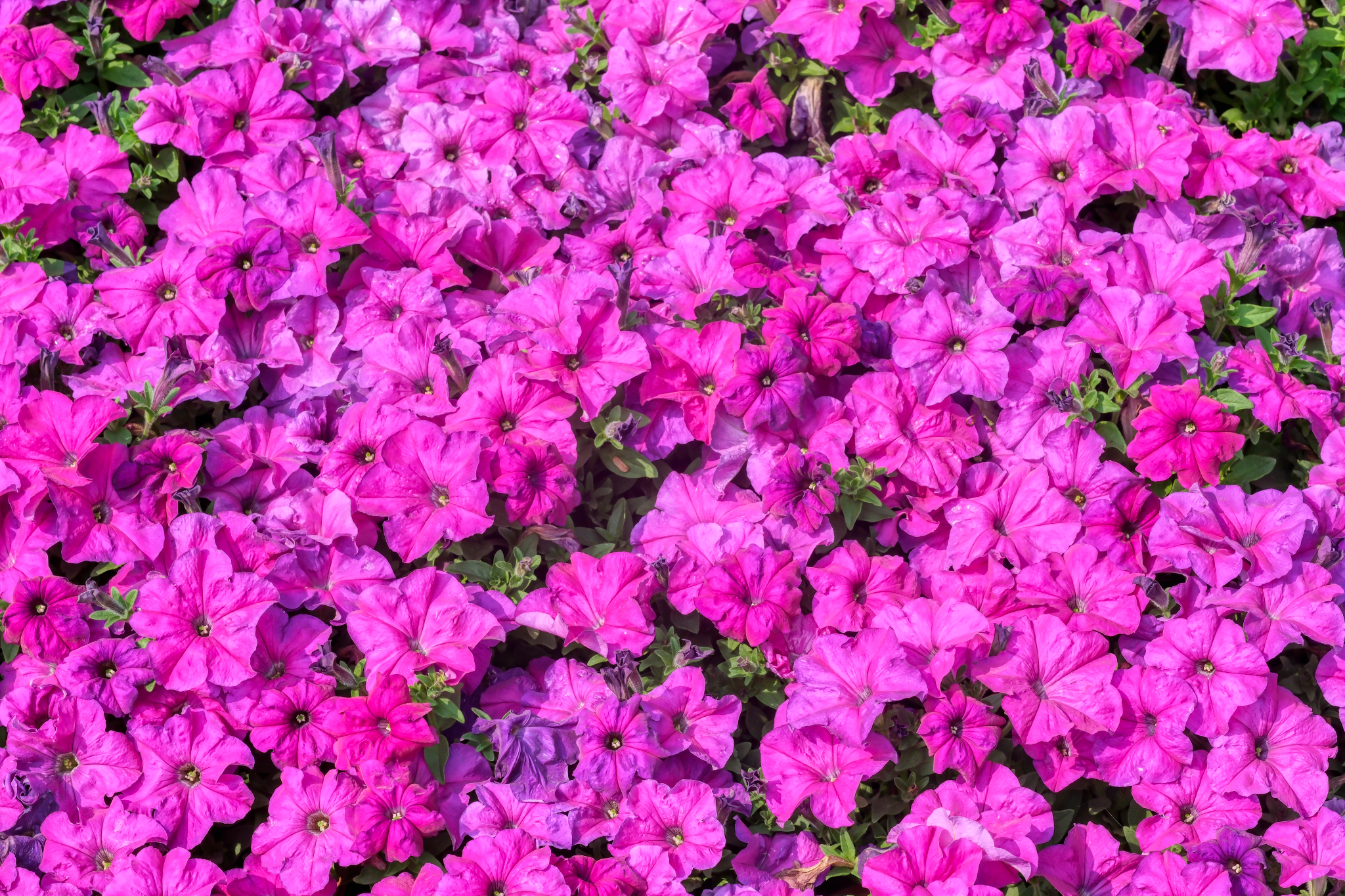 Color, color, color everywhere!
Color, color, color everywhere!
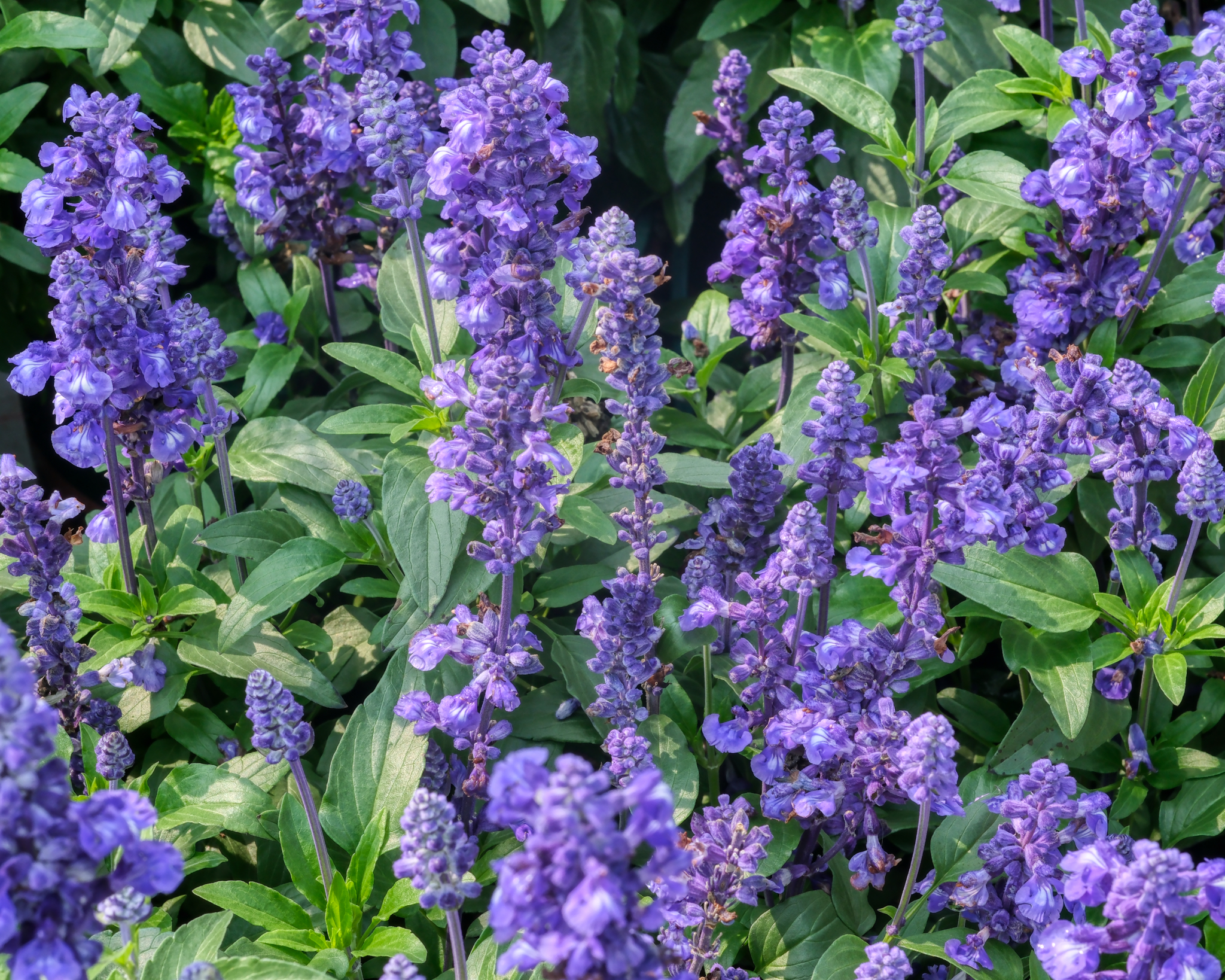 I was very happy with my flower photos from this show.
I was very happy with my flower photos from this show.
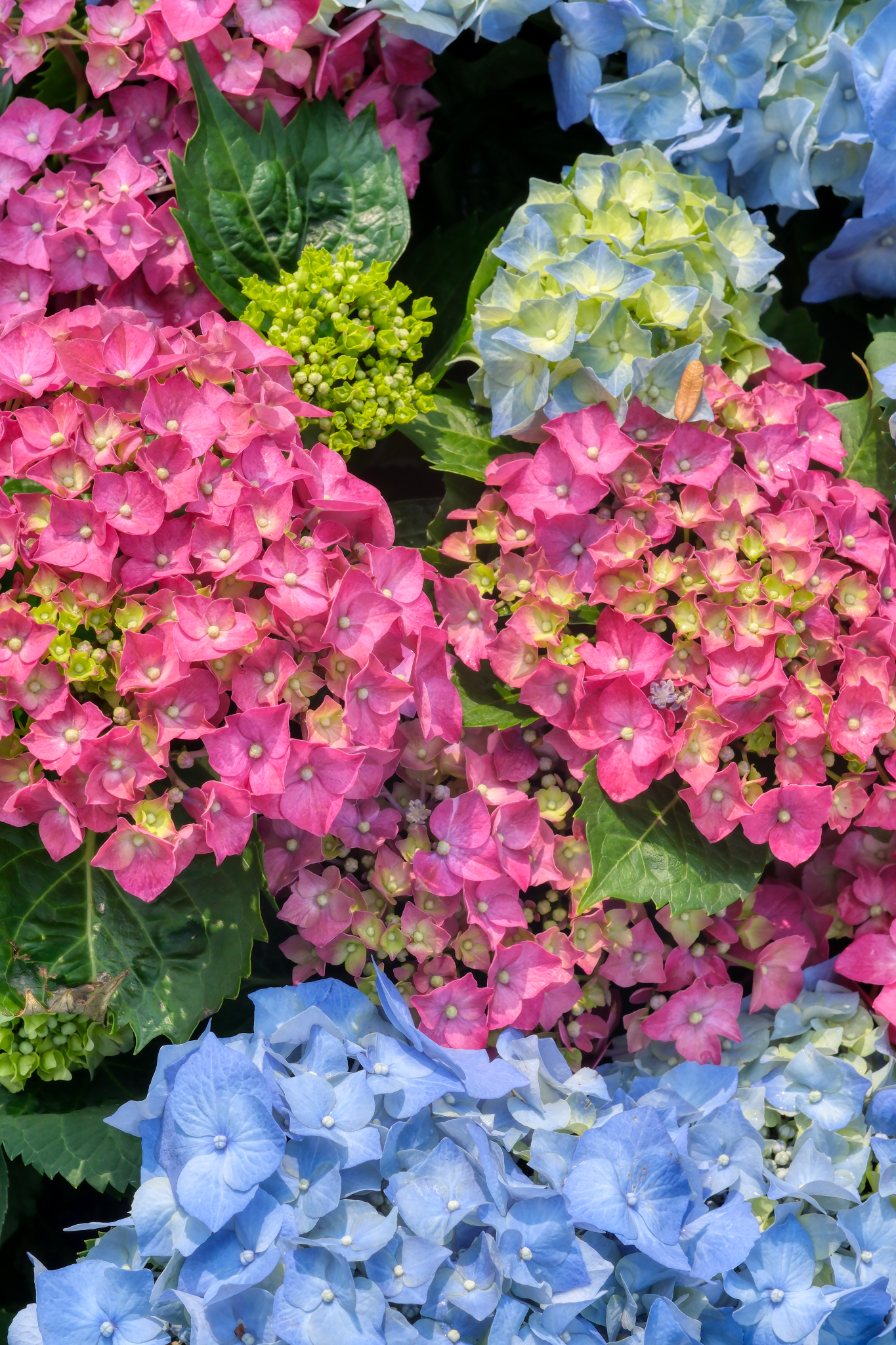 Colorful puffs.
Colorful puffs.
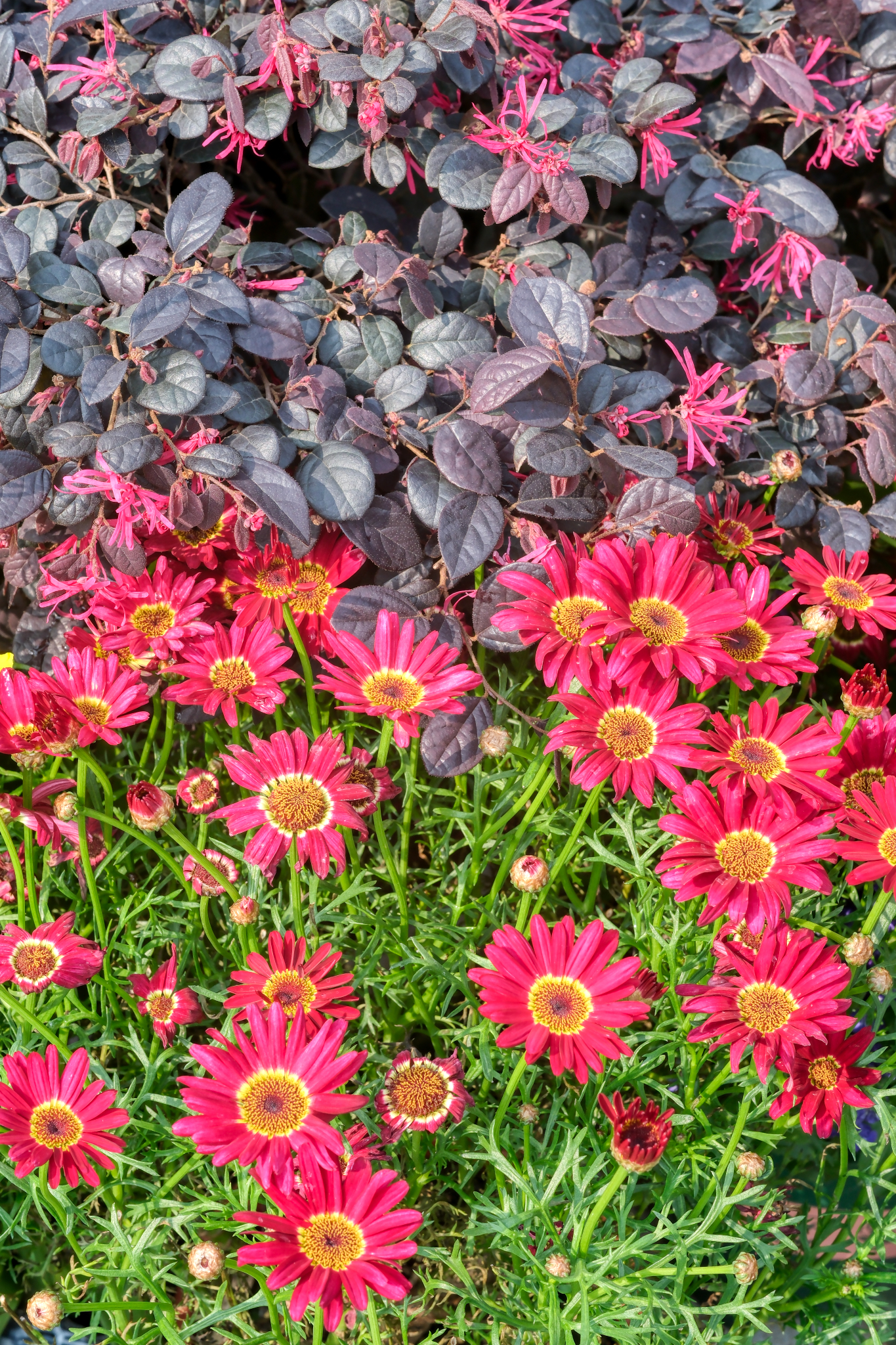 So pretty.
So pretty.
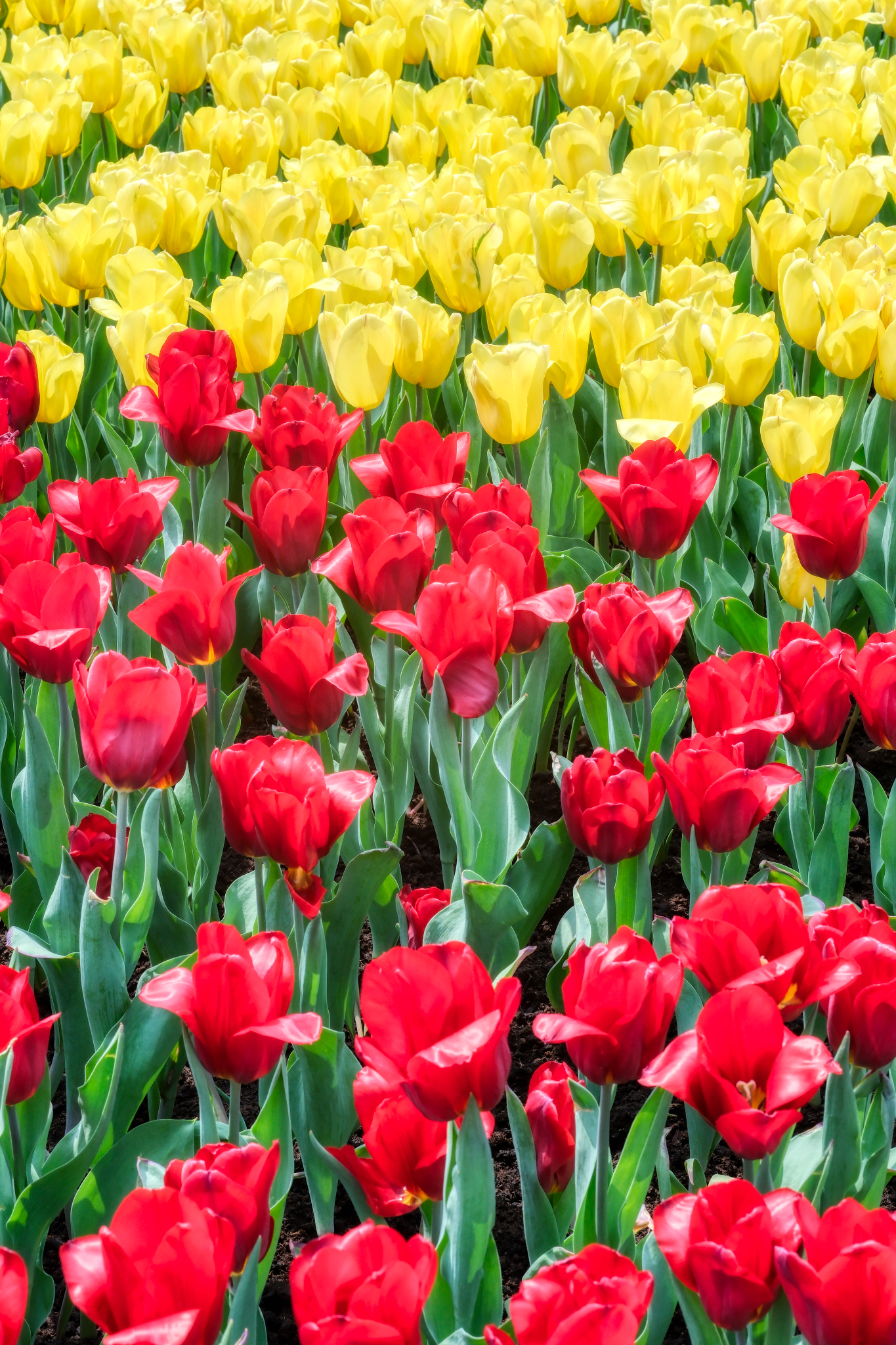 It seemed at every turn we found more tulips!
It seemed at every turn we found more tulips!
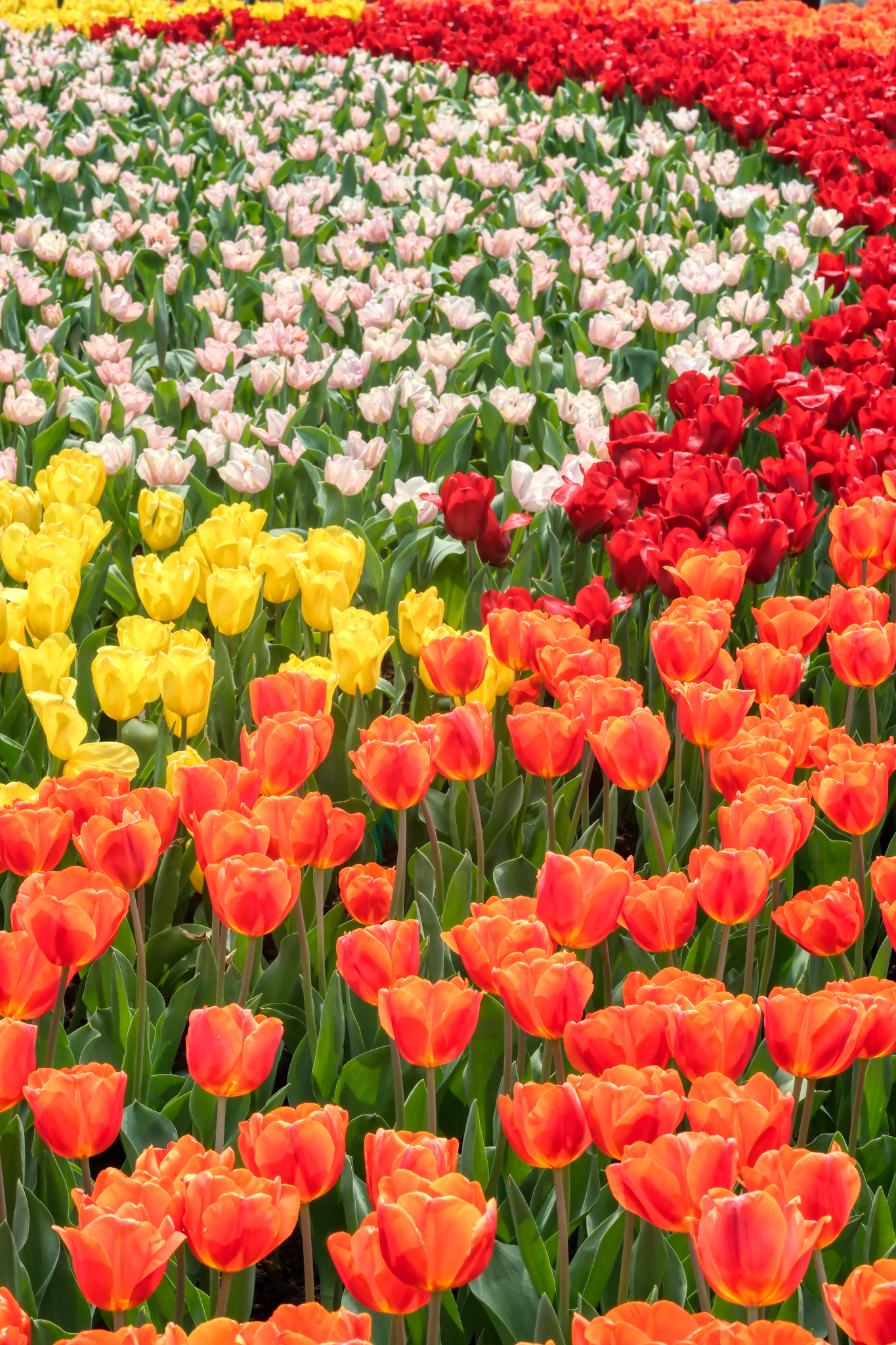 Fields of tulips!
Fields of tulips!
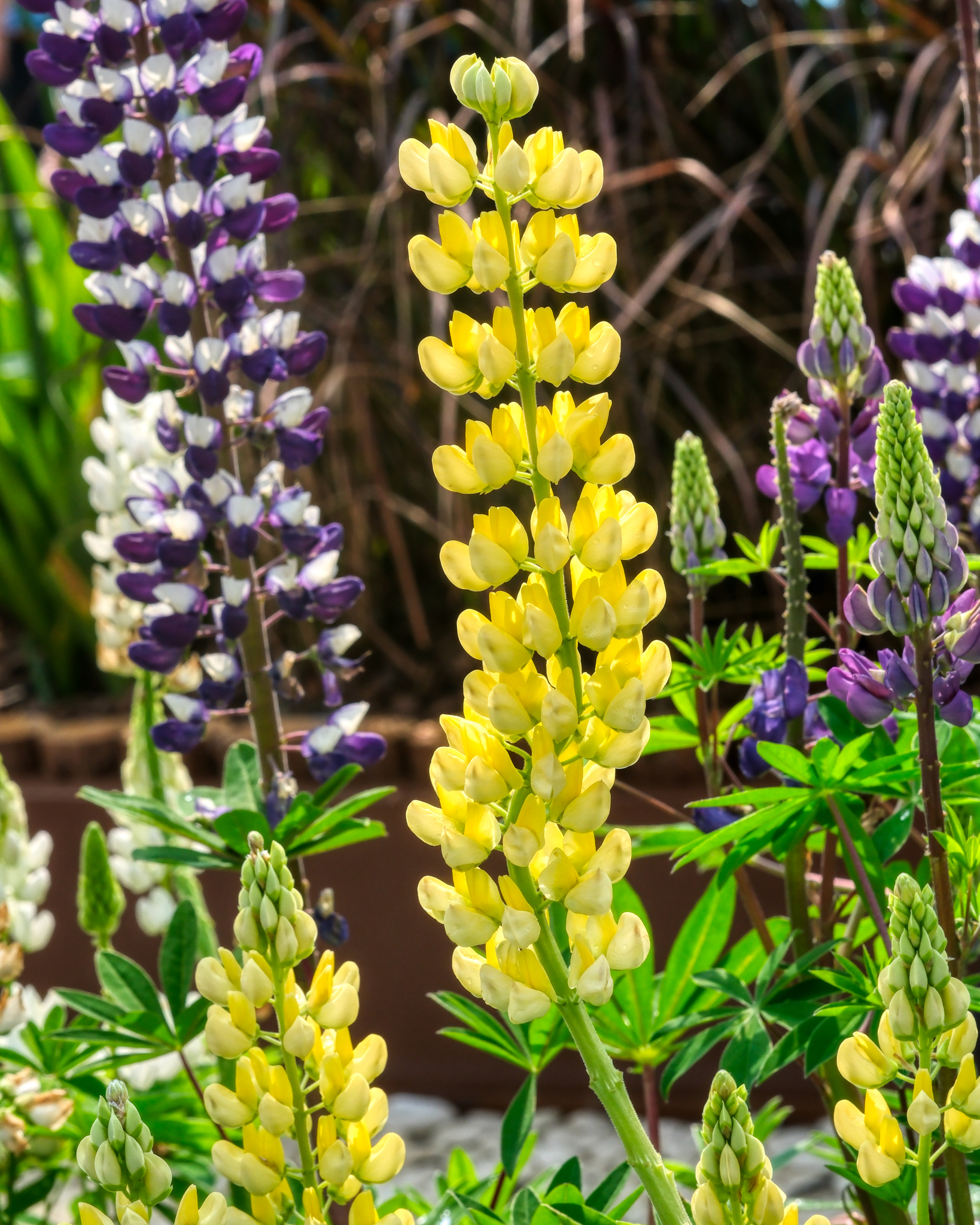 I had a great time at the flower show with my photographer brother in-law . . . .
I had a great time at the flower show with my photographer brother in-law . . . .
______________________________________________
The Rest Of My Hong Kong Visit:
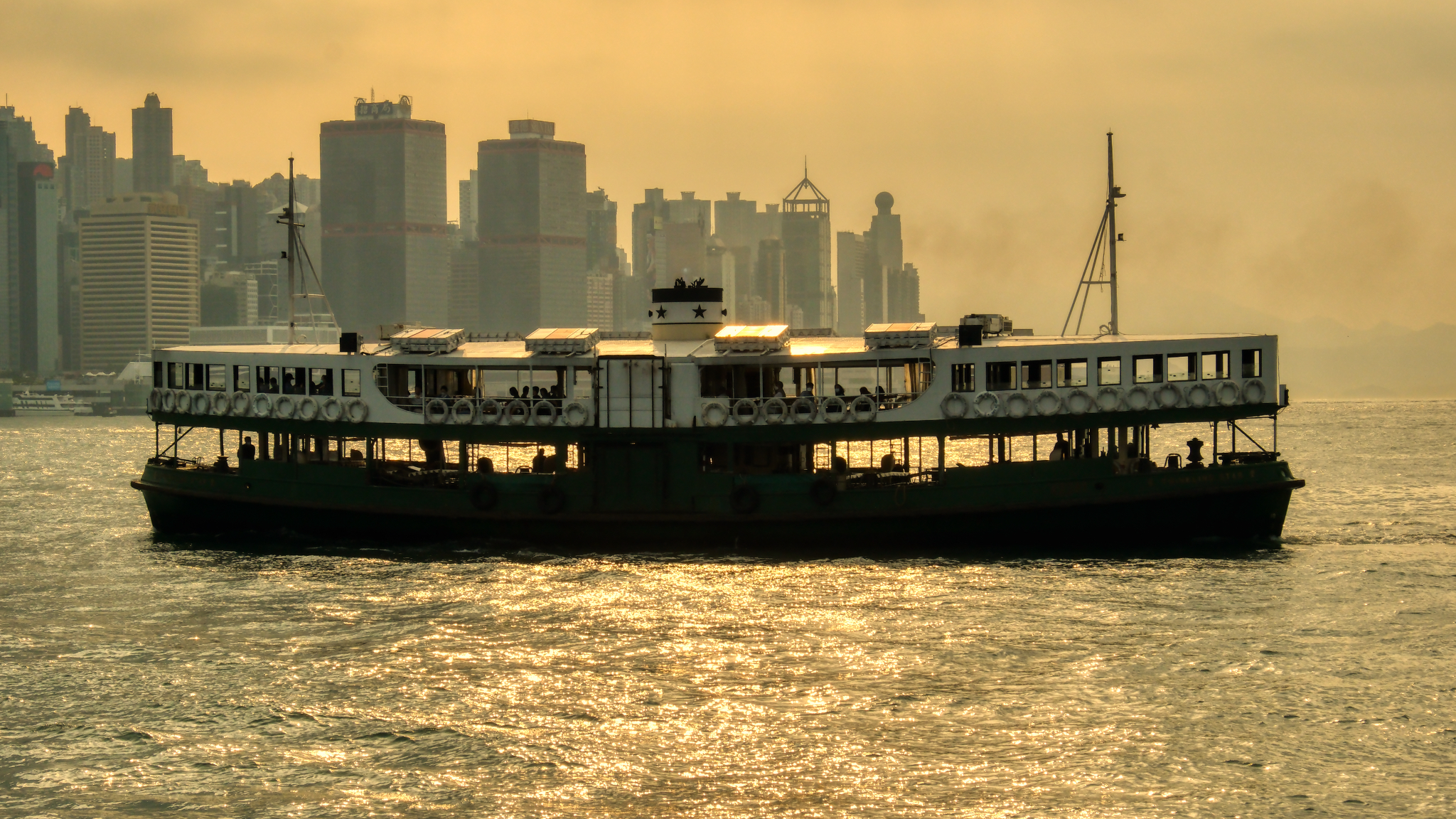 The rest of my Hong Kong stay was equally photogenic . . . Star ferry in sunset light .
The rest of my Hong Kong stay was equally photogenic . . . Star ferry in sunset light .
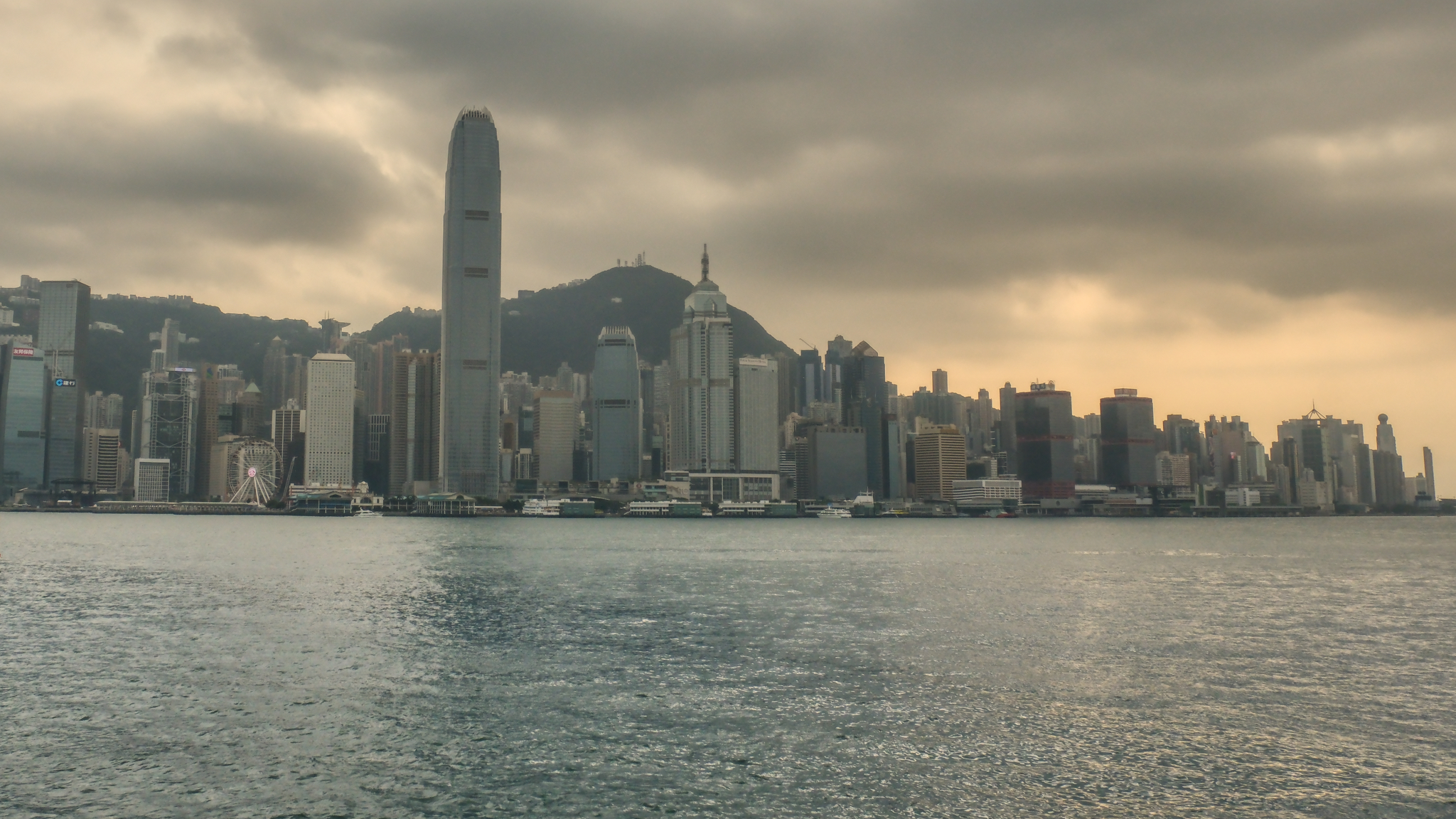 Hong Kong skyline . . .
Hong Kong skyline . . .
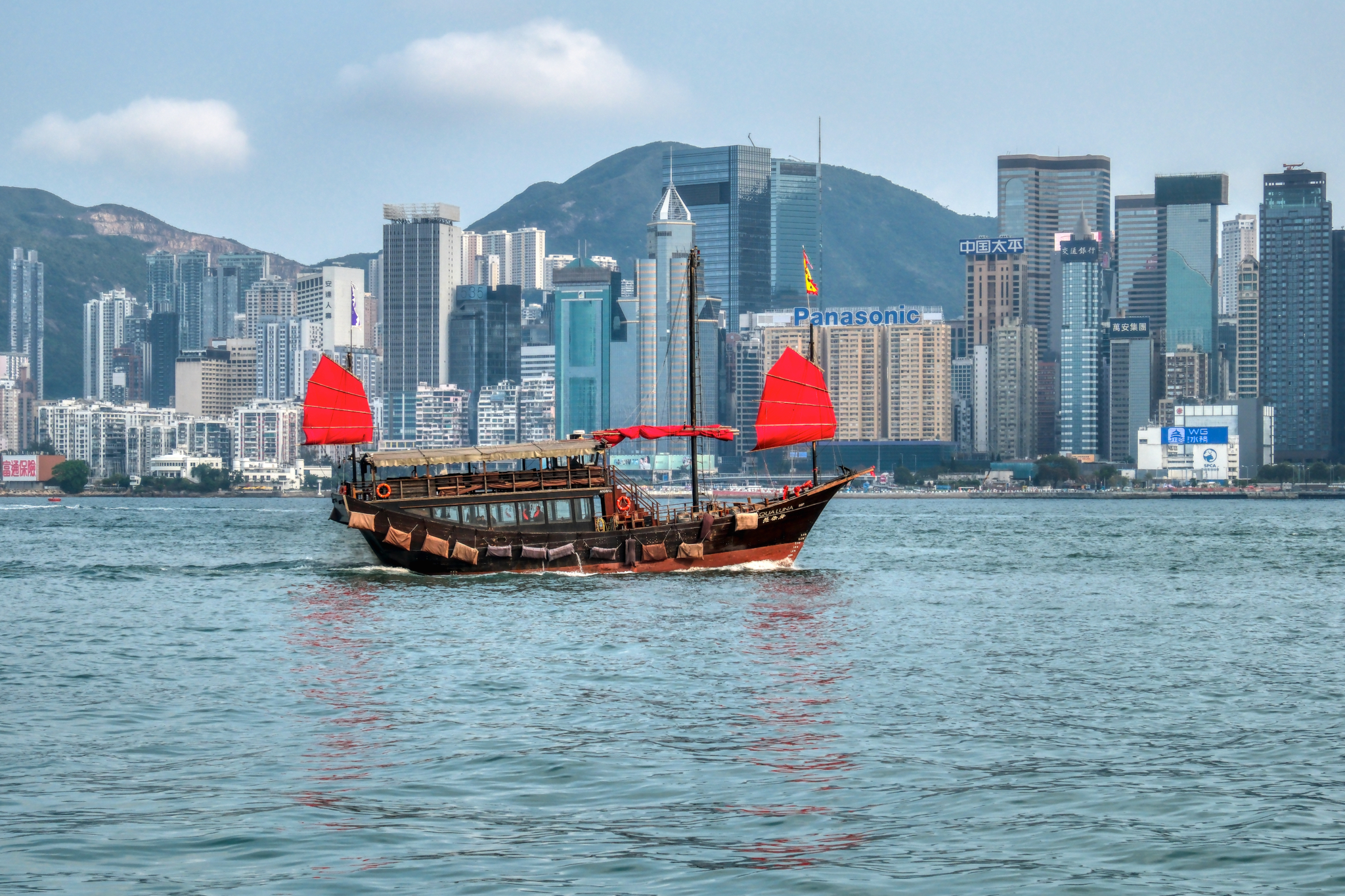 Many interesting kinds of boats in Hong Kong Harbour.
Many interesting kinds of boats in Hong Kong Harbour.
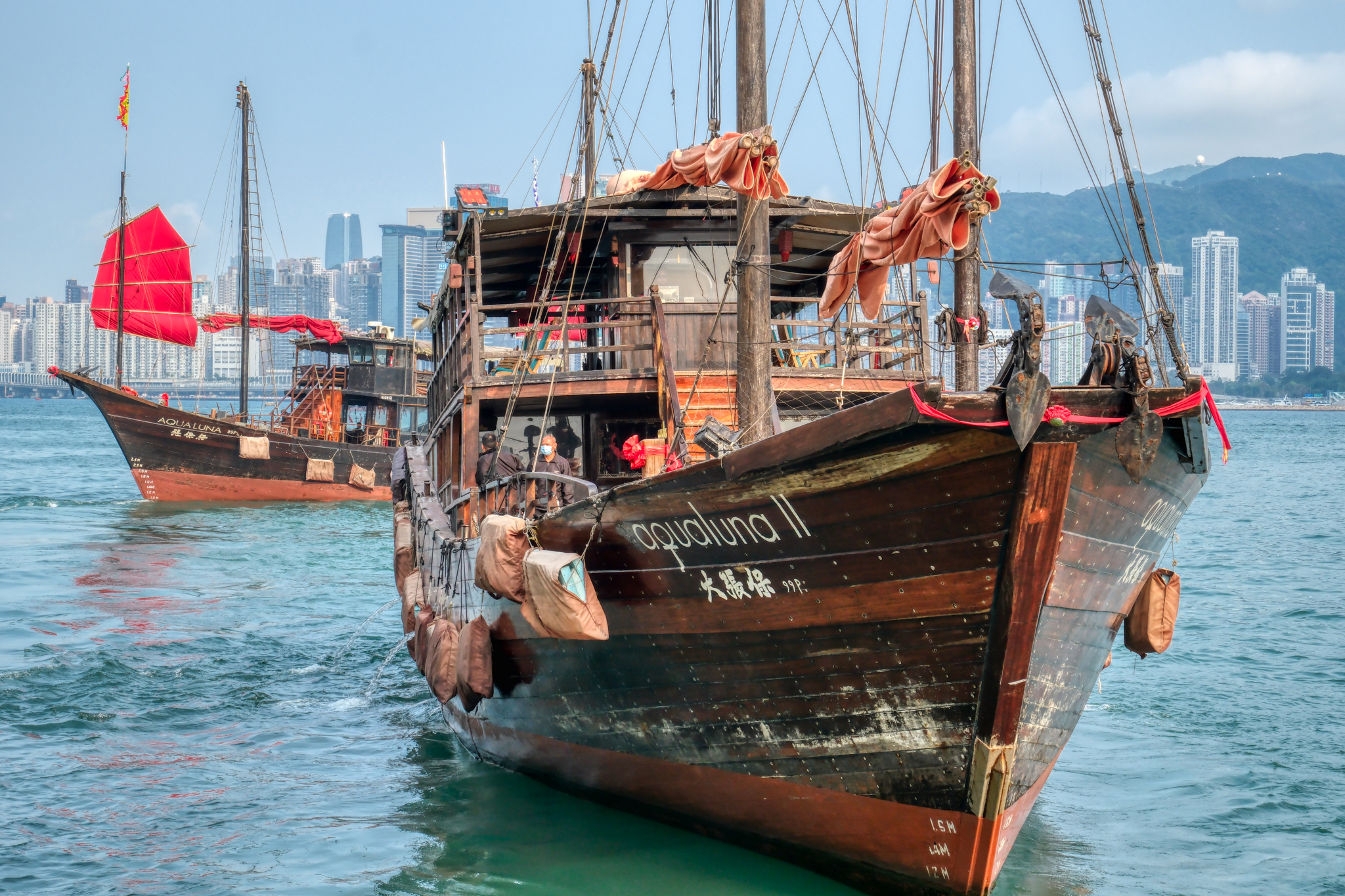 Wooden harbour "party boats" ready to board.
Wooden harbour "party boats" ready to board.
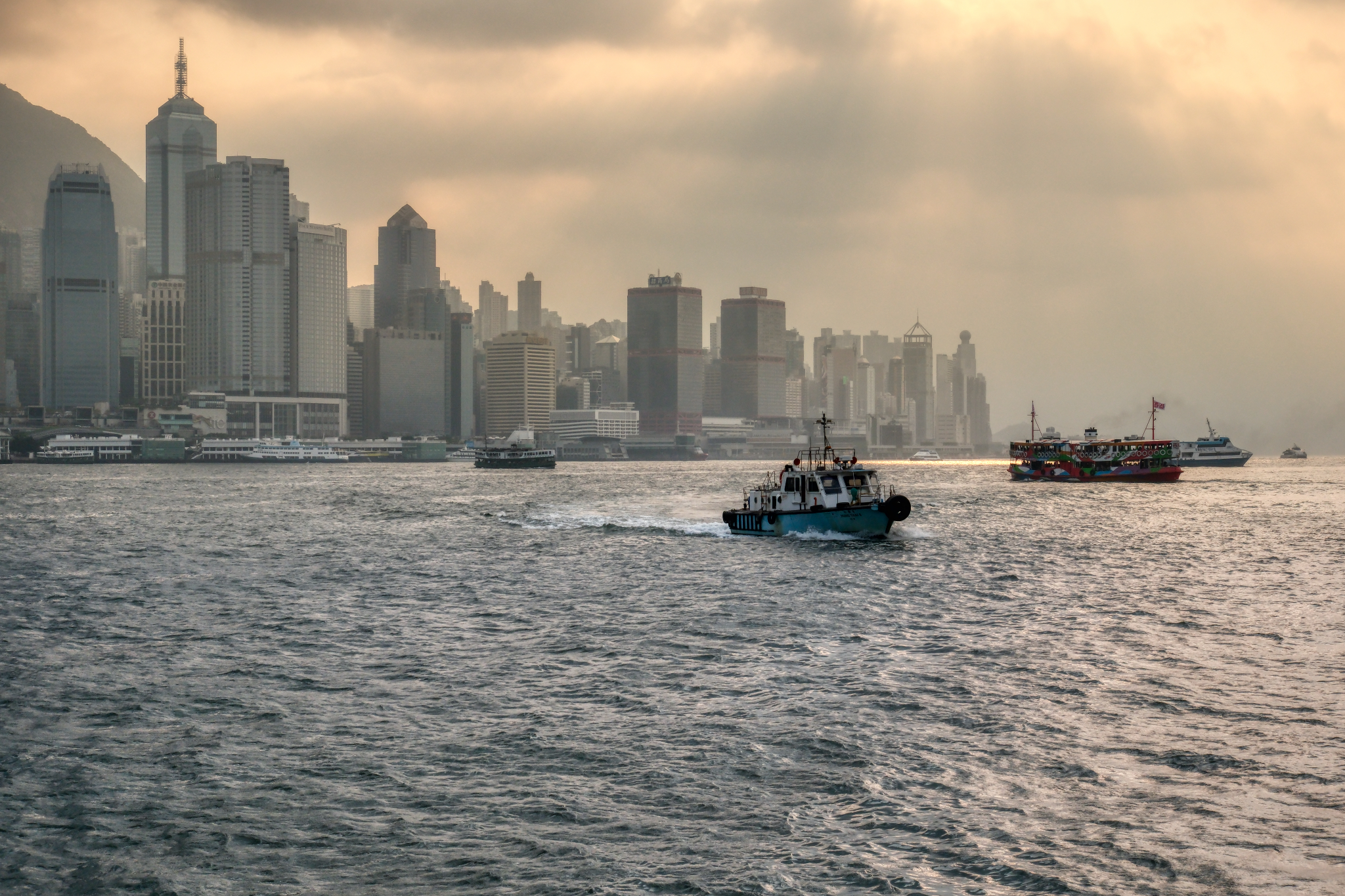 We took a late afternoon bay cruise around the back of Hong Kong Island to Lamma Island, aka, "seafood restaurant island" . . . This is our cruise boat arriving.
We took a late afternoon bay cruise around the back of Hong Kong Island to Lamma Island, aka, "seafood restaurant island" . . . This is our cruise boat arriving.
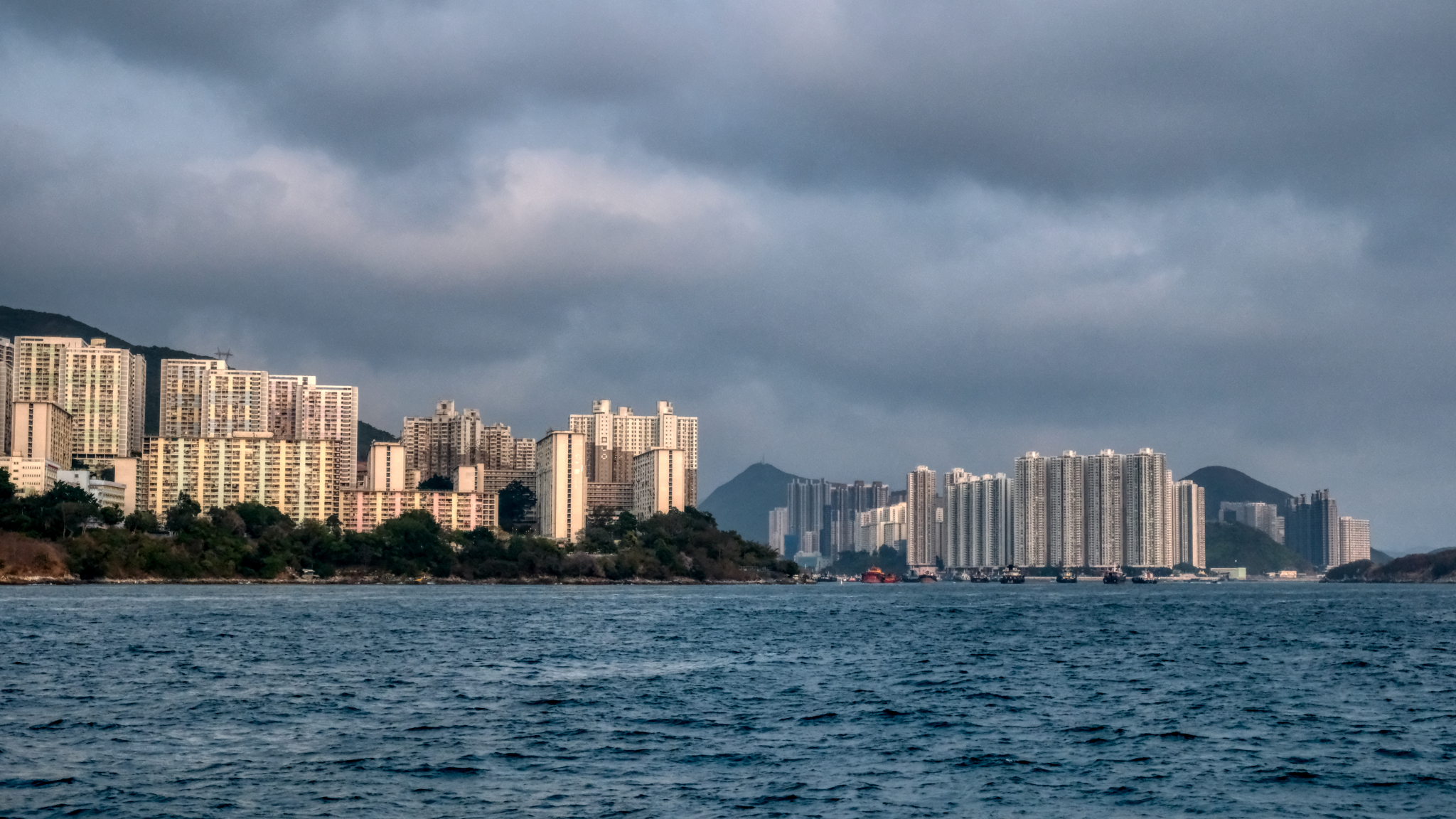 The back side of Hong Kong . . . showing the high density mass housing high-rise estates. I guess it is a good way to house people because it saves the destruction of nature and open spaces.
The back side of Hong Kong . . . showing the high density mass housing high-rise estates. I guess it is a good way to house people because it saves the destruction of nature and open spaces.
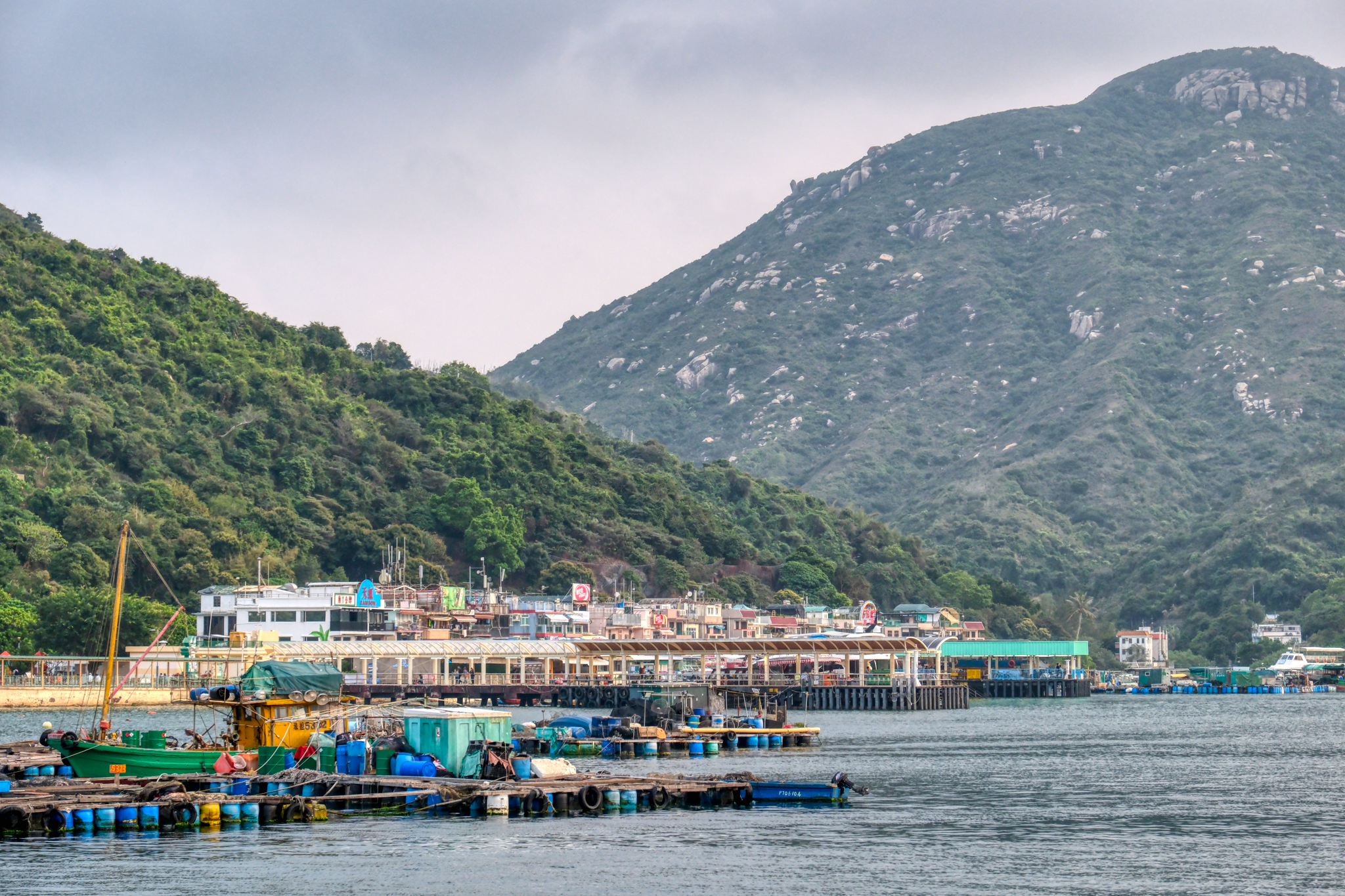 Arriving at the Lamma Island sea food village . . . where there was only sea food restaurant.
Arriving at the Lamma Island sea food village . . . where there was only sea food restaurant.
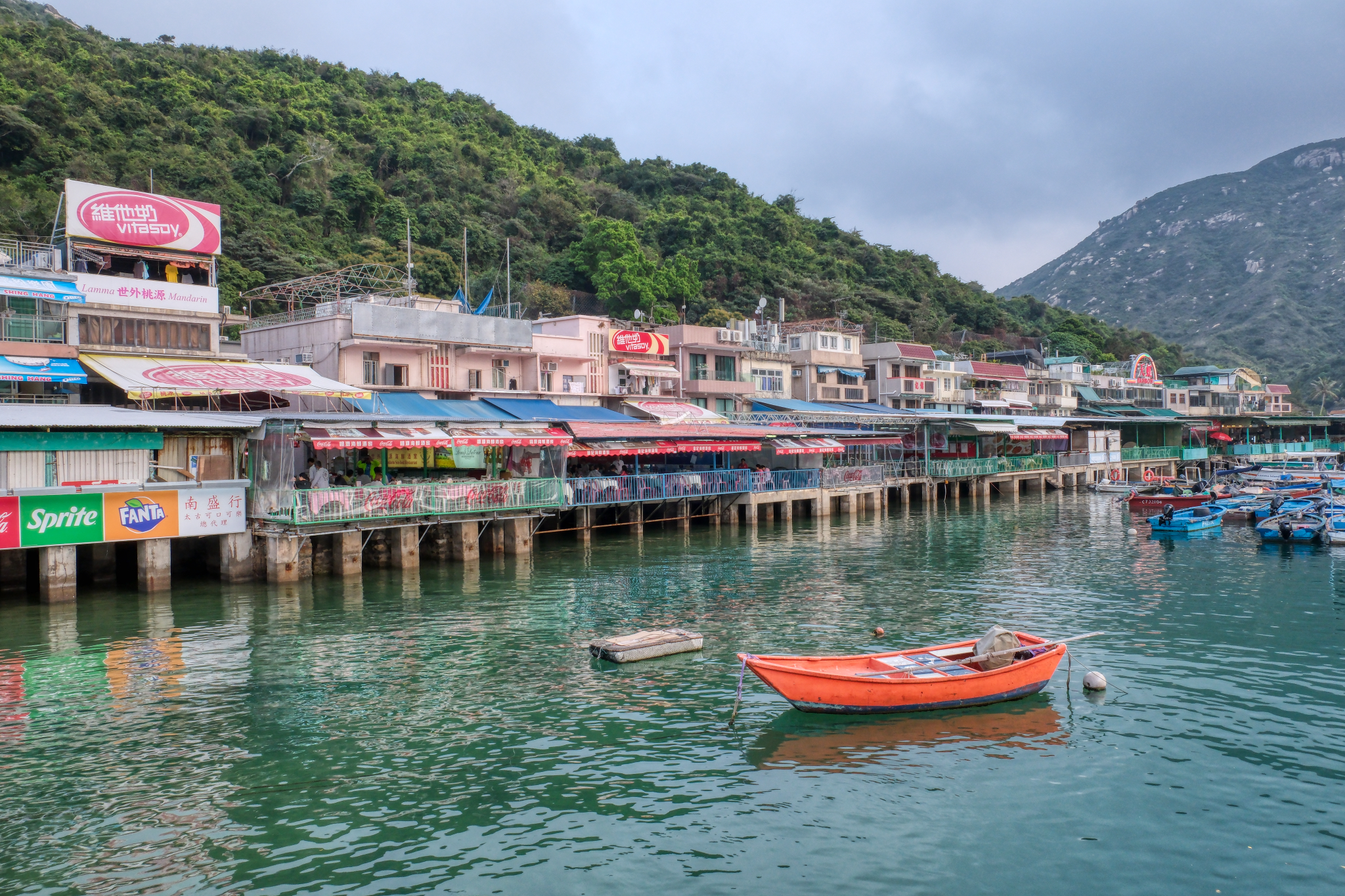 A long stretch of seafood eateries lining the Lamma Island harbour.
A long stretch of seafood eateries lining the Lamma Island harbour.
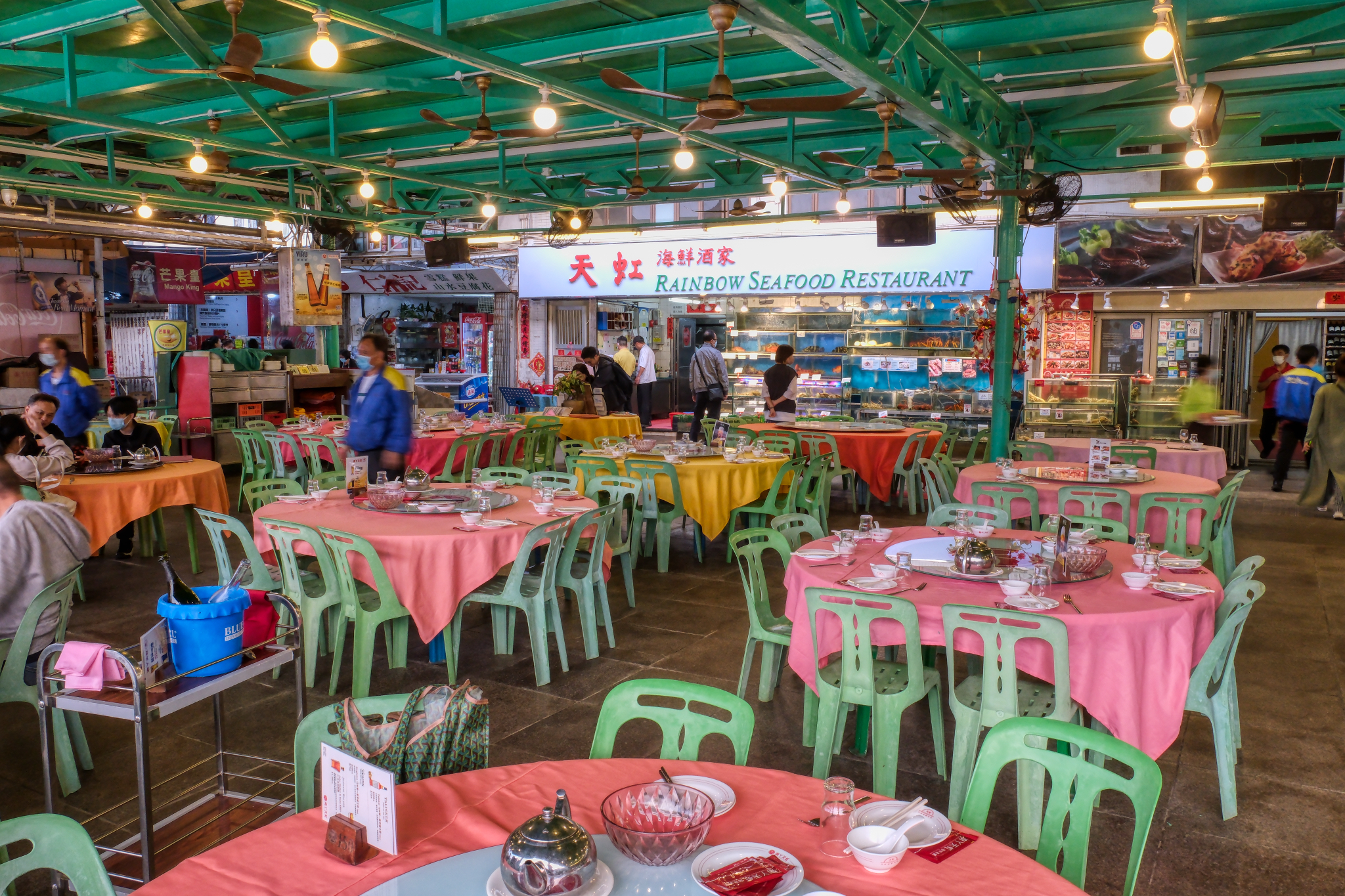 We found our table by the bay and set off to secure seafood favorites.
We found our table by the bay and set off to secure seafood favorites.
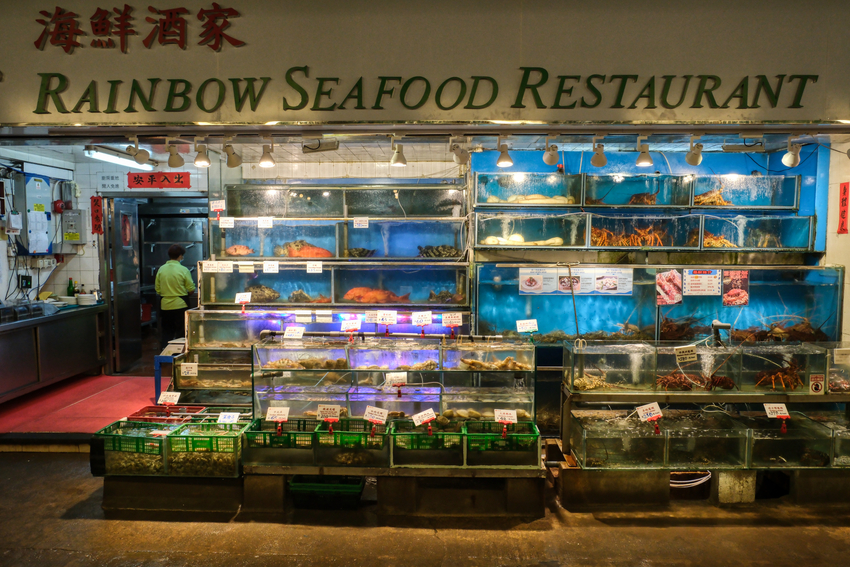 Our live seafood choices!!!
Our live seafood choices!!!
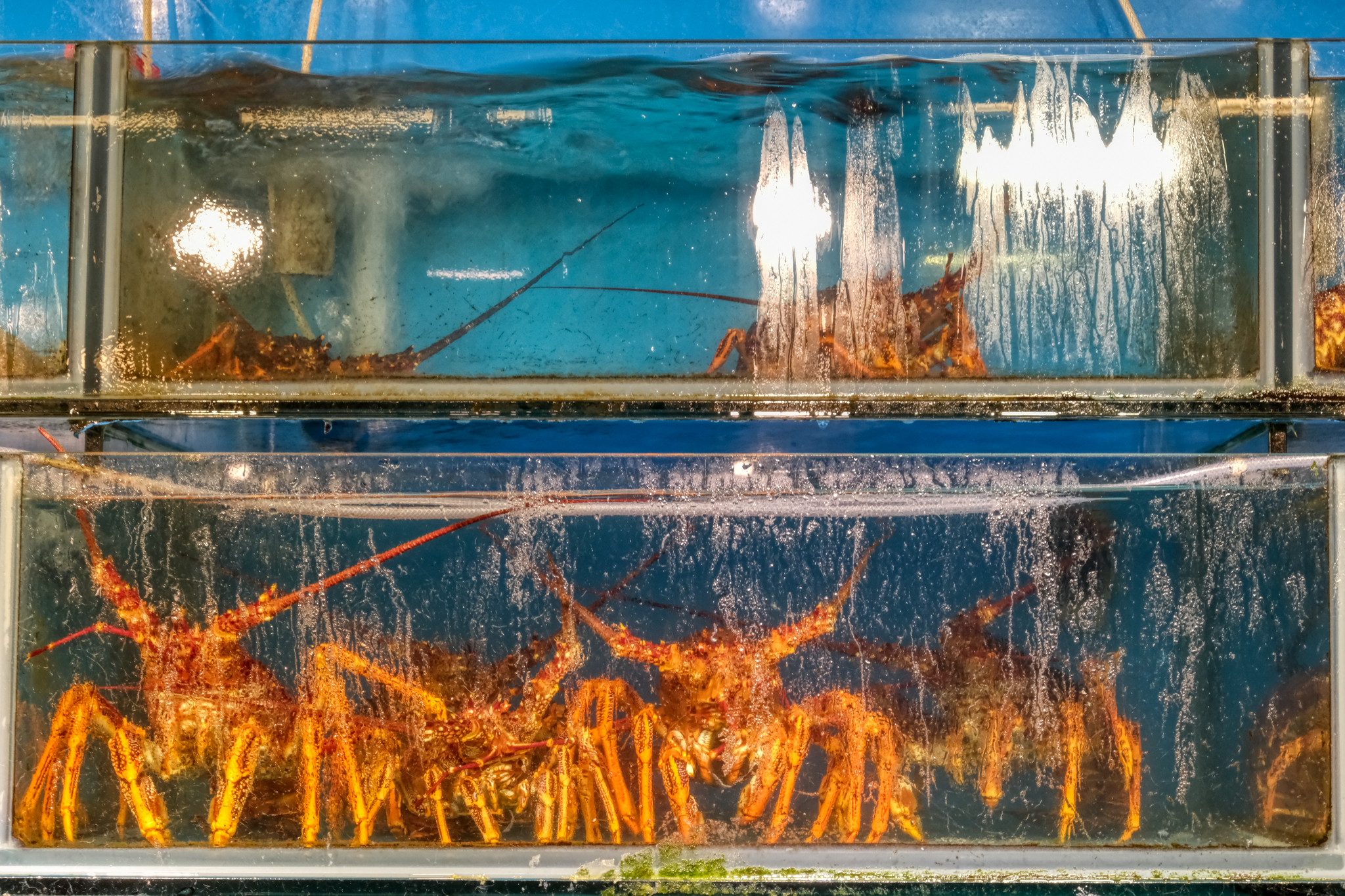 These looked good!
These looked good!
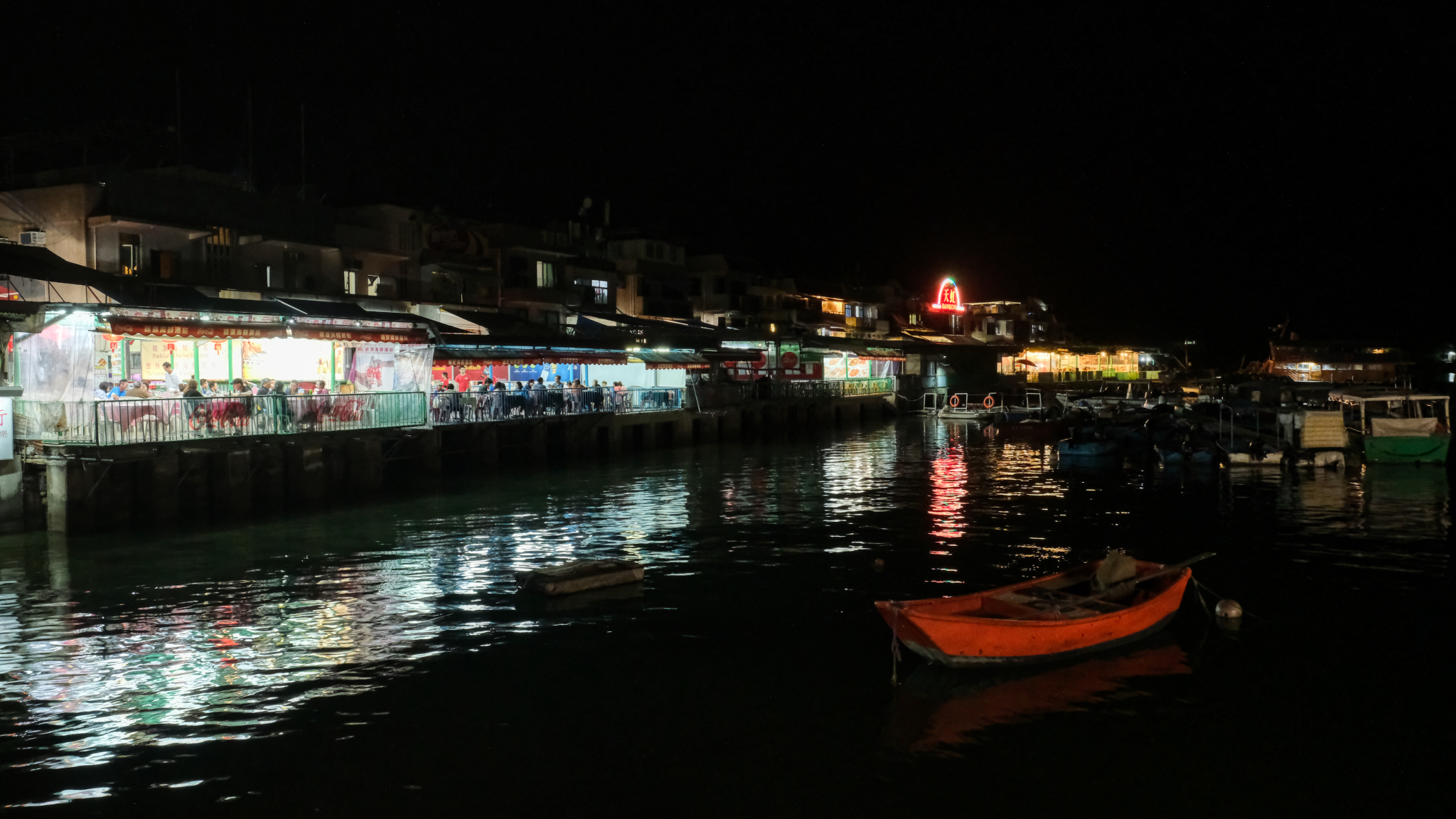 Waiting on the dock for our boat to take us back to Kowloon . . . our stomachs full from the delicious meal!
Waiting on the dock for our boat to take us back to Kowloon . . . our stomachs full from the delicious meal!
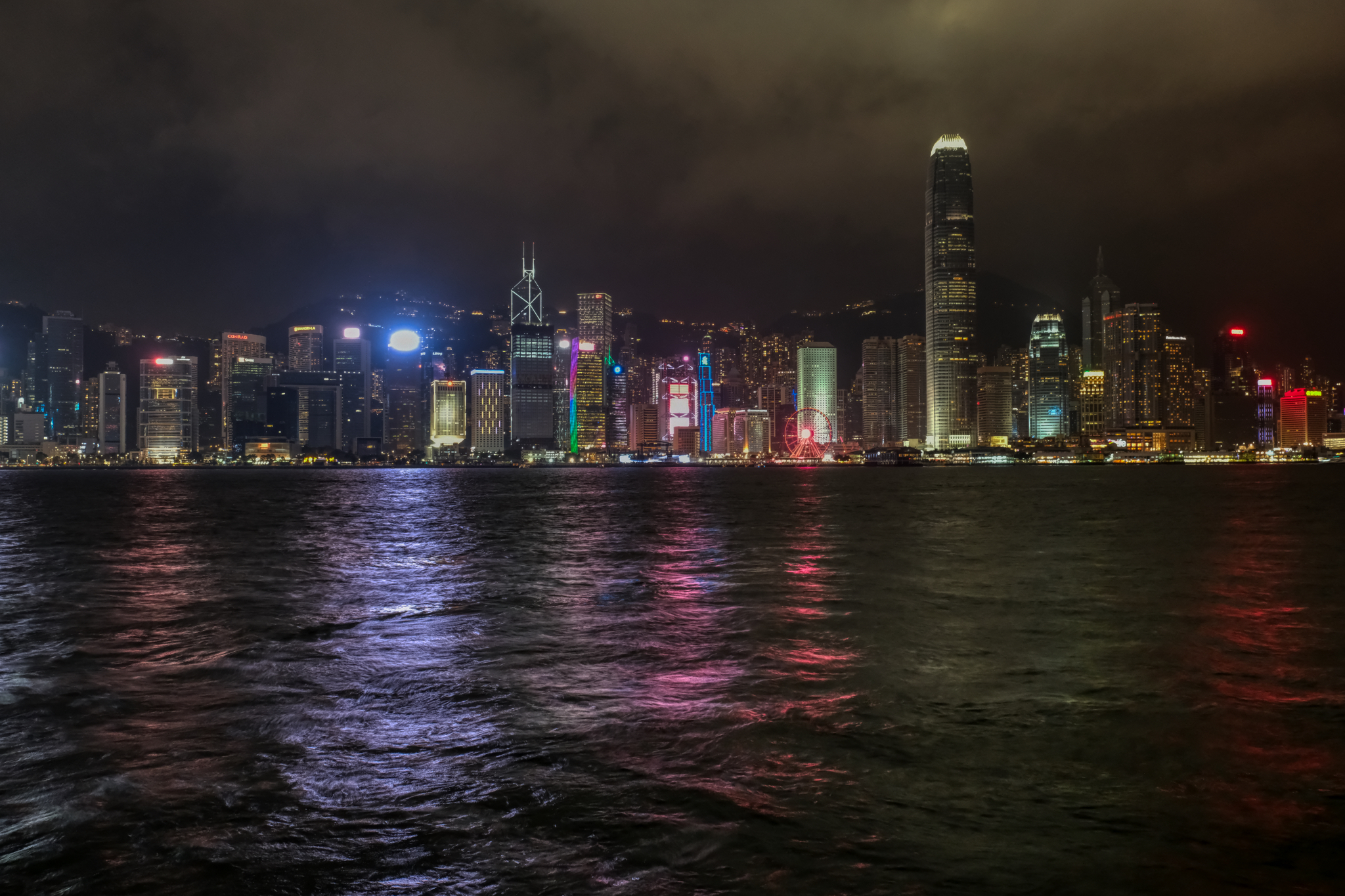 Our arrival by boat back into Hong Kong harbour at night was truly spectacular!
Our arrival by boat back into Hong Kong harbour at night was truly spectacular!
____________________________________
Chi Lin Nunnery and Garden Park
 It's nice to have in-laws living in Hong Kong . . . they know the cool places to go, beyond the tourist spots, for good photography. These gardens were magnificent! And right in the city.
It's nice to have in-laws living in Hong Kong . . . they know the cool places to go, beyond the tourist spots, for good photography. These gardens were magnificent! And right in the city.
 An astonishingly beautiful place surrounded by the city.
An astonishingly beautiful place surrounded by the city.
 Stunning ancient Chinese styled garden pagoda.
Stunning ancient Chinese styled garden pagoda.
 Classic bridge to the Other Side.
Classic bridge to the Other Side.
 Old water-powered mill in the park.
Old water-powered mill in the park.
 The inner temple at the nunnery.
The inner temple at the nunnery.
 They did not allow photography inside the temple . . . but it was fantastic.
They did not allow photography inside the temple . . . but it was fantastic.
 Stepping out from the inner temple we were greeted with this view of Hong Kong Kowloon side.
Stepping out from the inner temple we were greeted with this view of Hong Kong Kowloon side.
 When I got home I couldn't resist making a highly altered HDR "Art" photo from the nunnery.
When I got home I couldn't resist making a highly altered HDR "Art" photo from the nunnery.
 Dr. Jeff Harper
Dr. Jeff Harper
We went back to Hong Kong in February of 2024 to visit family . . . for the 10th time.
 Even though I have been to Hong Kong many, many times, I still find interesting things to photograph . . . like the back of this neighborhood school.
Even though I have been to Hong Kong many, many times, I still find interesting things to photograph . . . like the back of this neighborhood school.
 The city street in front of our hotel in Kowloon.
The city street in front of our hotel in Kowloon.
 The famous bamboo scaffolding of Hong Kong. Amazing.
The famous bamboo scaffolding of Hong Kong. Amazing.
 Where the Hong Kong apartment dwellers go to tend their spiritual needs.
Where the Hong Kong apartment dwellers go to tend their spiritual needs.
 I took a little artistic liberty with this photo . . . but it is an iconic image of Hong Kong.
I took a little artistic liberty with this photo . . . but it is an iconic image of Hong Kong.
 Dr. Jeff Harper | Comments Off |
Dr. Jeff Harper | Comments Off | Loei, Chiang Khan, and the Mekong River
 Wednesday, October 26, 2022 at 12:57PM
Wednesday, October 26, 2022 at 12:57PM 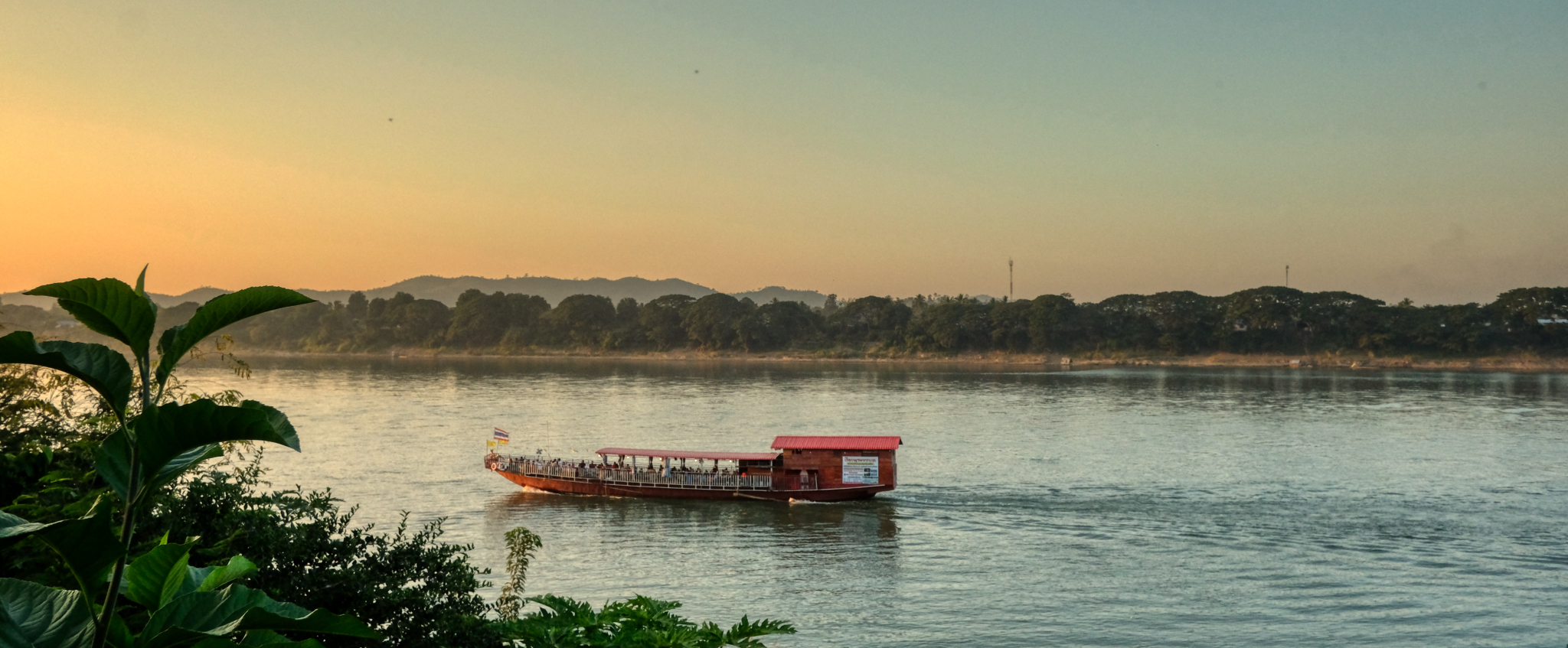
Back in December 2020, just as COVID 19 was bursting on the international scene and choking Thailand's tourist industry, the Thai government came up with a brilliant scheme to give vouchers to Thai residents for discounts at Thai resorts and restaurants in 'tourist areas' to spur more 'in country' tourism by Thais. It worked . . . we took a road trip north to Loei, Chiang Khan, and the Mekong River.
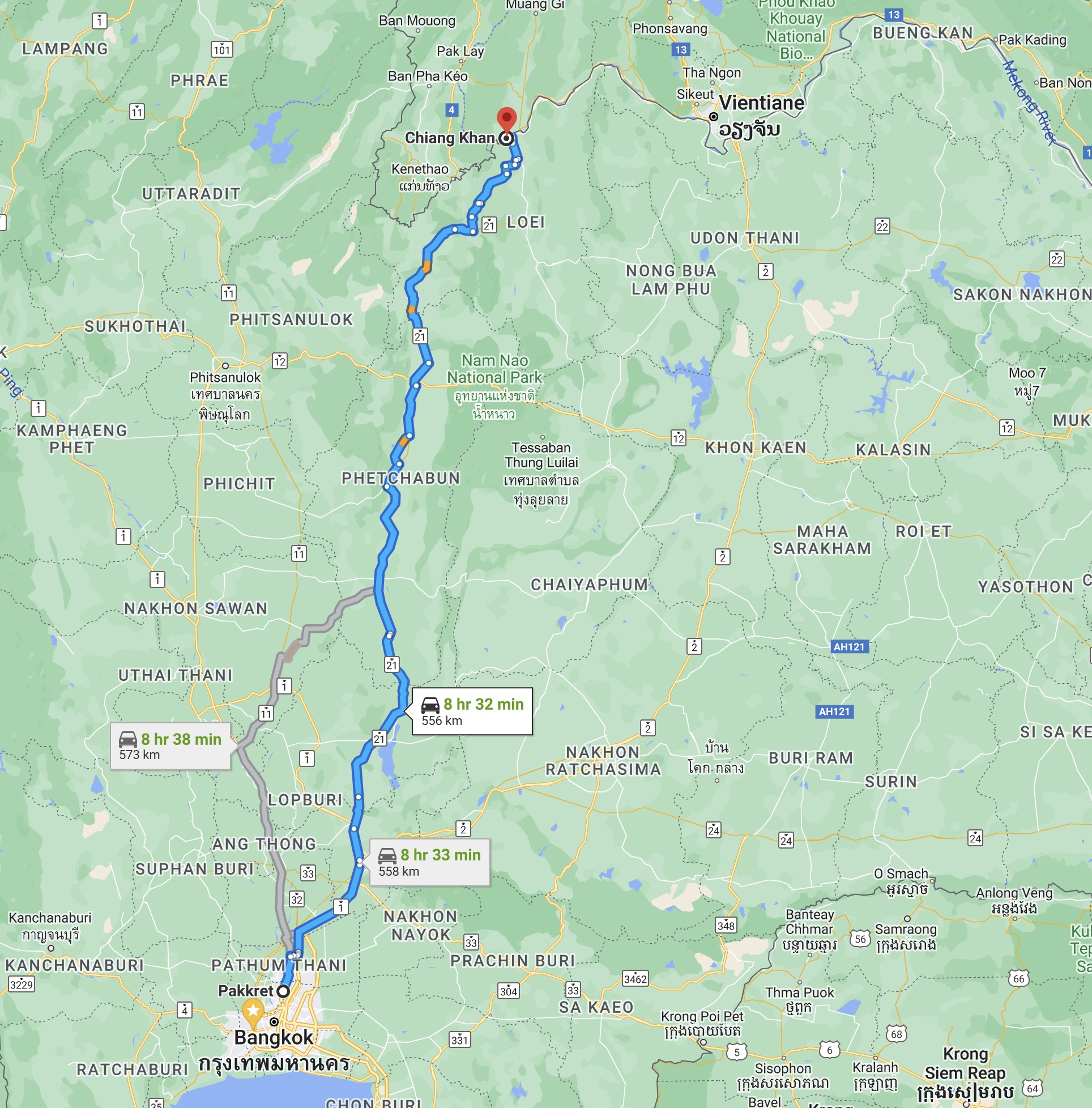 Our route had us drive straight through to Loei from our home in a northern suburb of Bangkok.
Our route had us drive straight through to Loei from our home in a northern suburb of Bangkok.
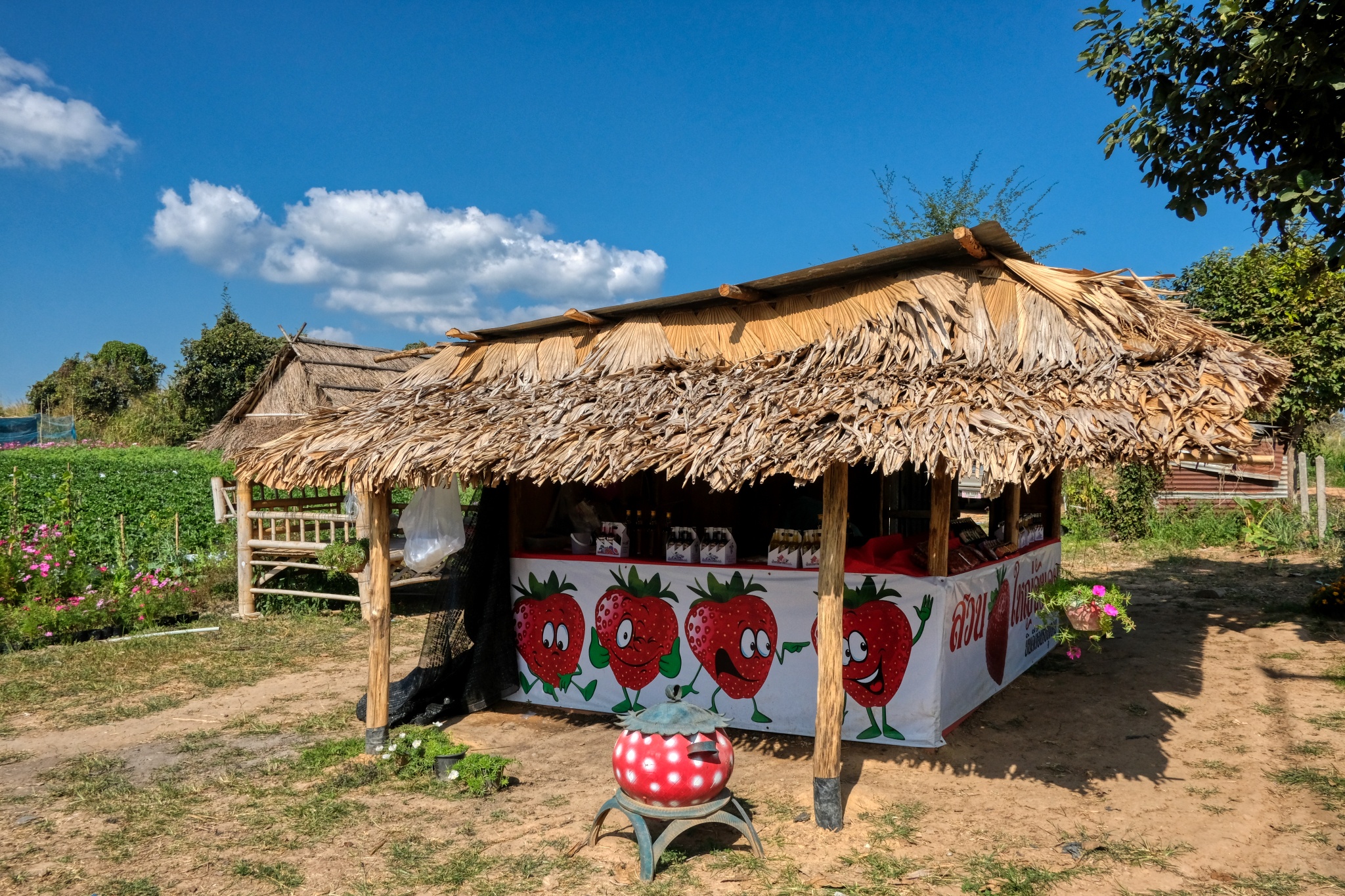 The majority of the drive north to Loei was on modern, divided expressway. However, as we neared Loei the road reverted to a 2-lane country road. We were lured into this strawberry stand with the promise of delicious fruit.
The majority of the drive north to Loei was on modern, divided expressway. However, as we neared Loei the road reverted to a 2-lane country road. We were lured into this strawberry stand with the promise of delicious fruit.
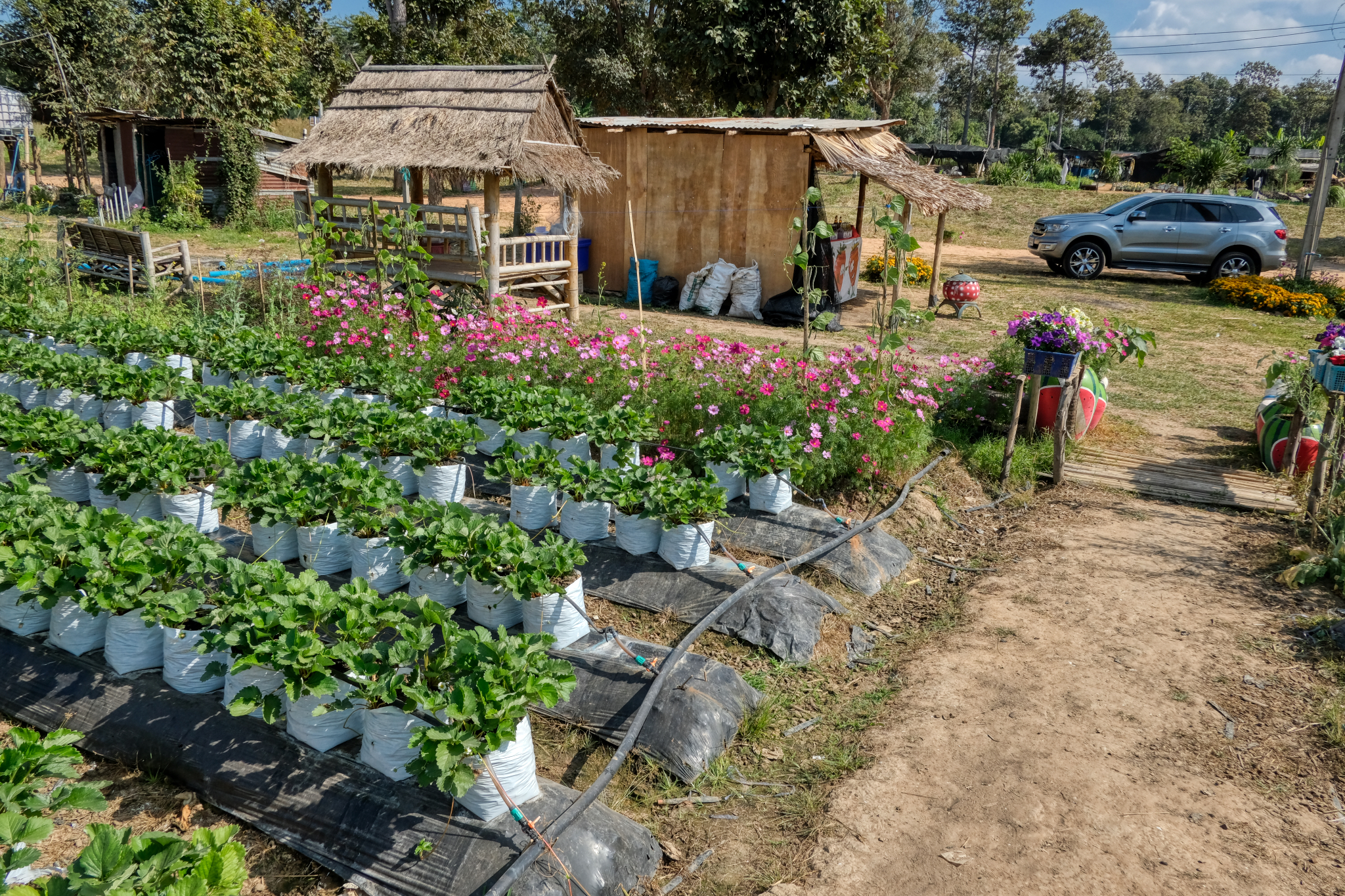 They were growing their own strawberries here . . . but they were asking a very high price for them. We declined to purchase any strawberries here.
They were growing their own strawberries here . . . but they were asking a very high price for them. We declined to purchase any strawberries here.
________________________________
LOEI
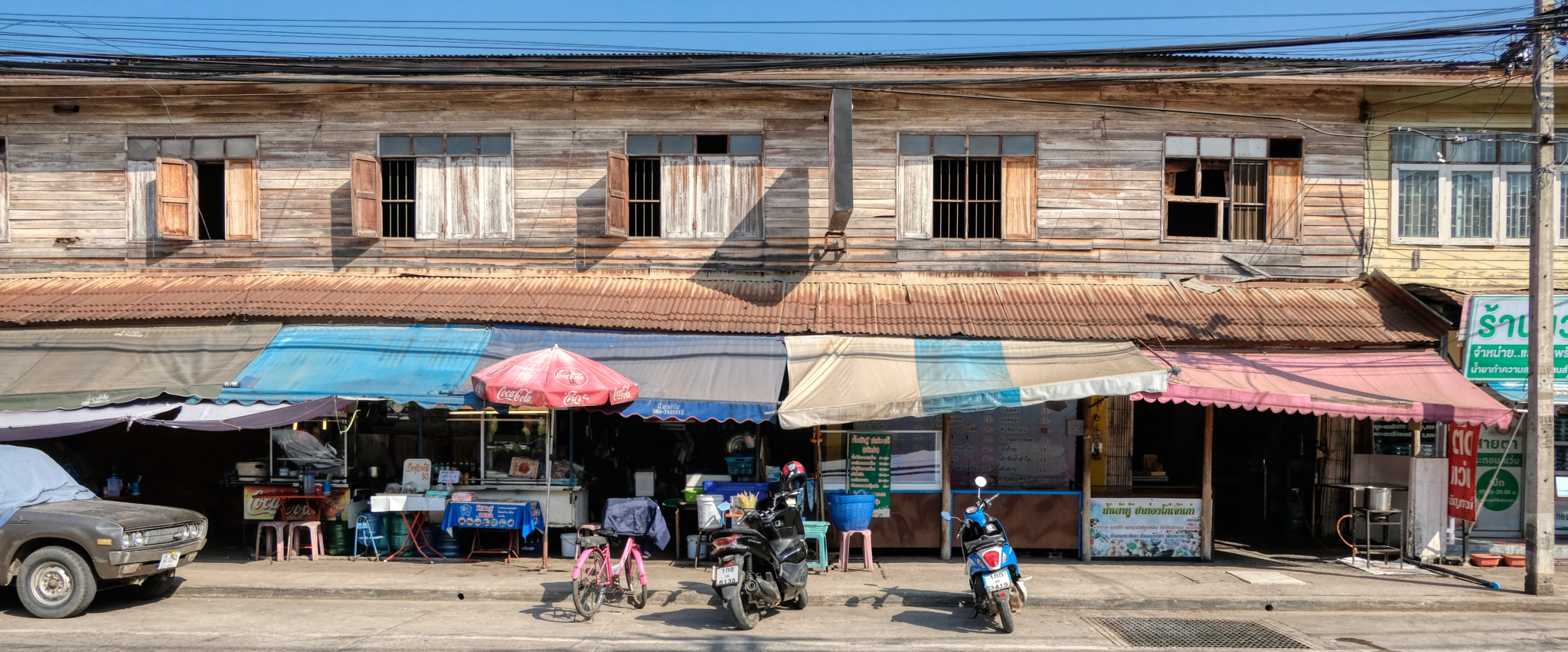 This is the old Loei I came to see . . .
This is the old Loei I came to see . . .
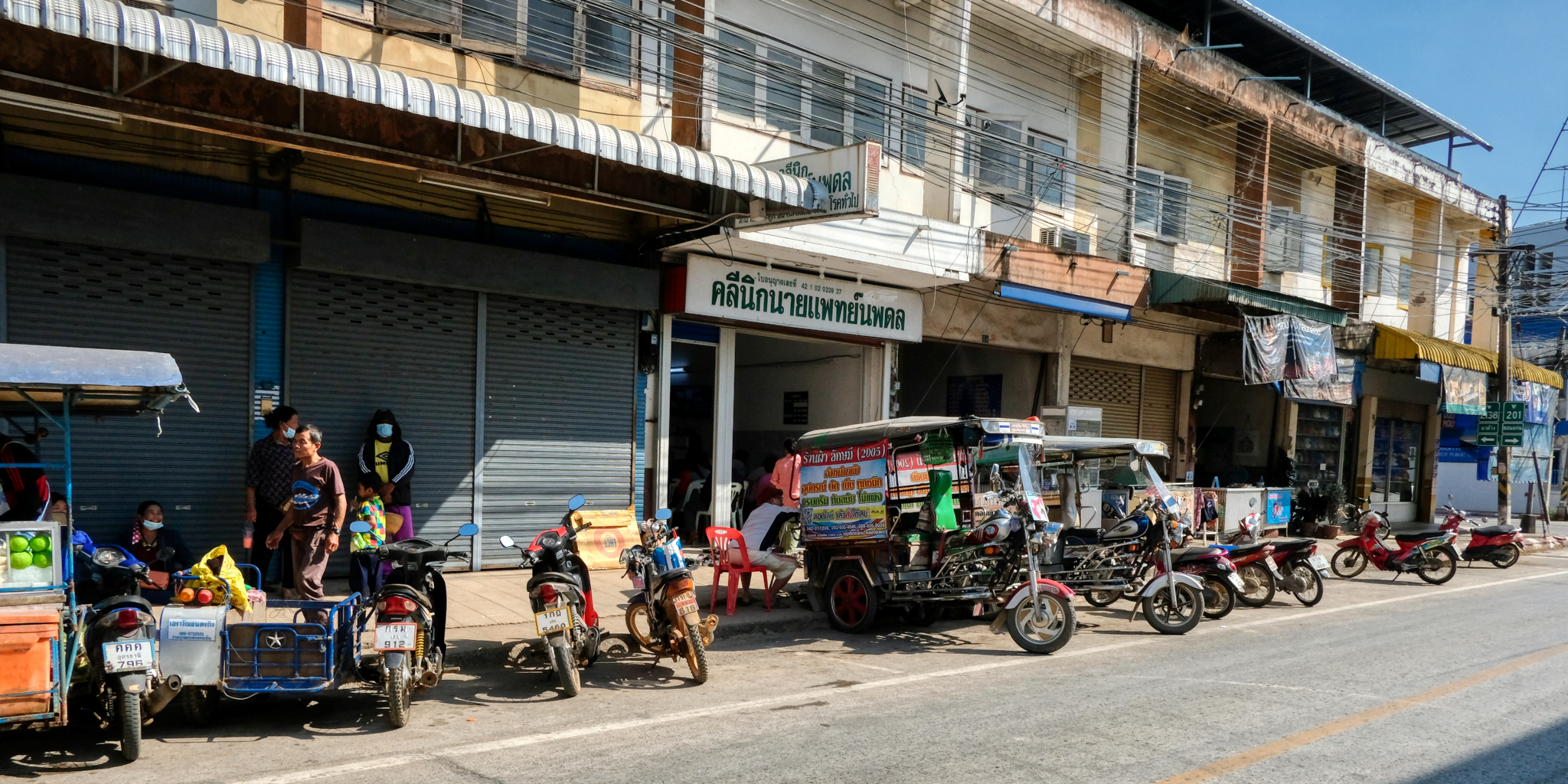 Loei is a provincial market town in the north of Thailand. It is still "old Thailand" in Loei. I last visited here about 20 years ago . . . and yes, it has changed a great deal.
Loei is a provincial market town in the north of Thailand. It is still "old Thailand" in Loei. I last visited here about 20 years ago . . . and yes, it has changed a great deal.
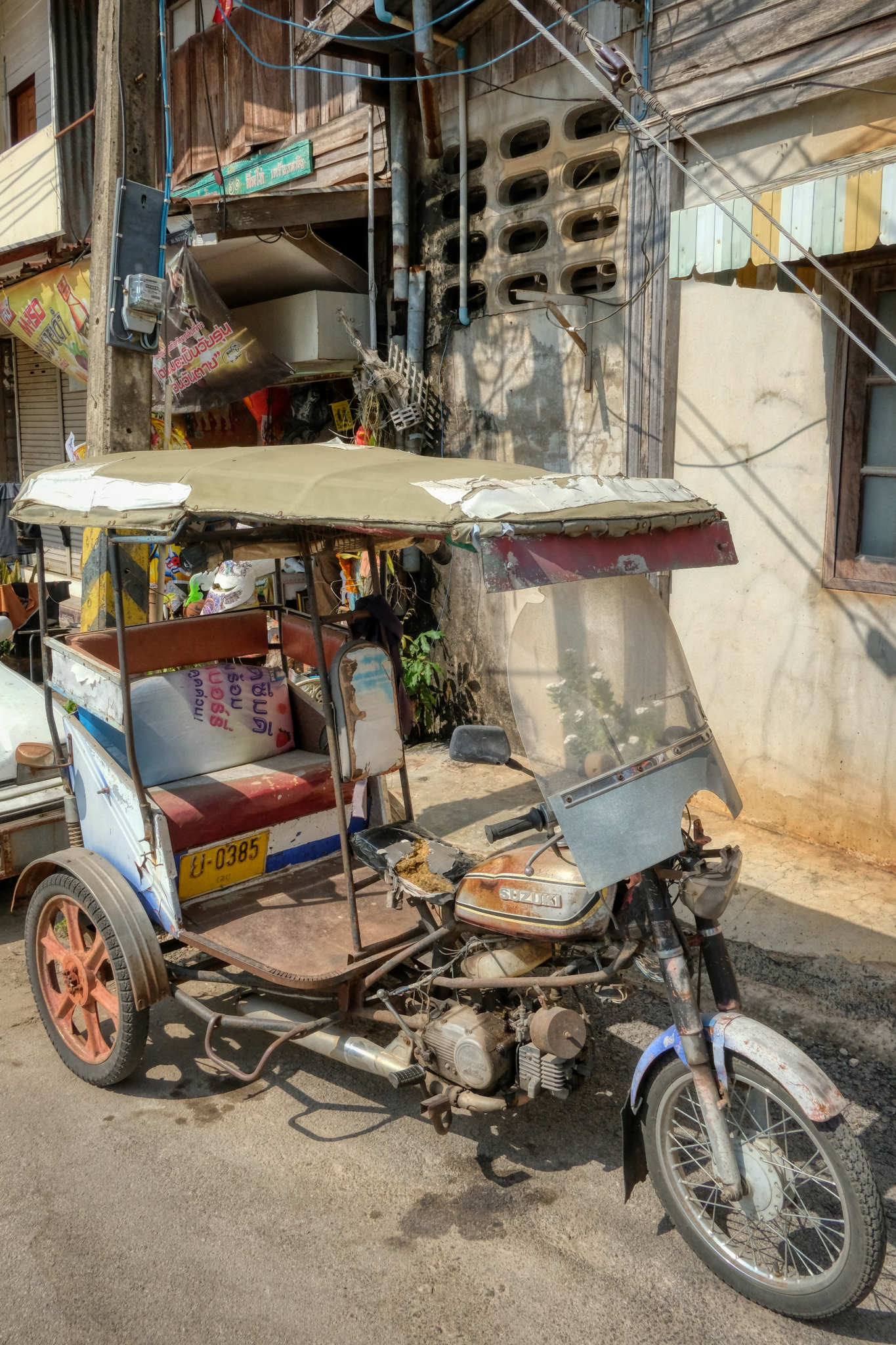 But there is still a lot of the old Thailand I know and love in Loei.
But there is still a lot of the old Thailand I know and love in Loei.
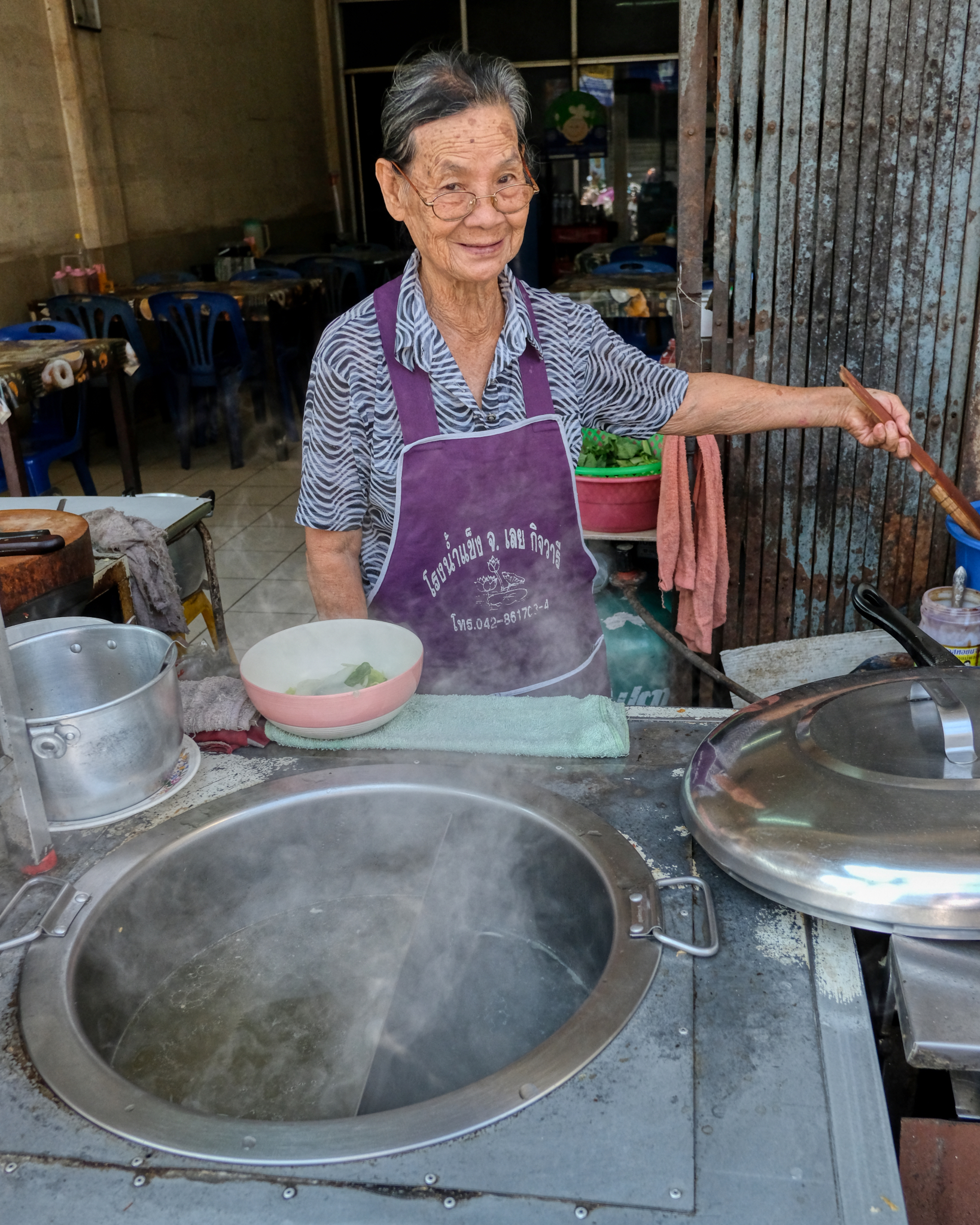 The street food in Loei is excellent . . . and the people friendly.
The street food in Loei is excellent . . . and the people friendly.
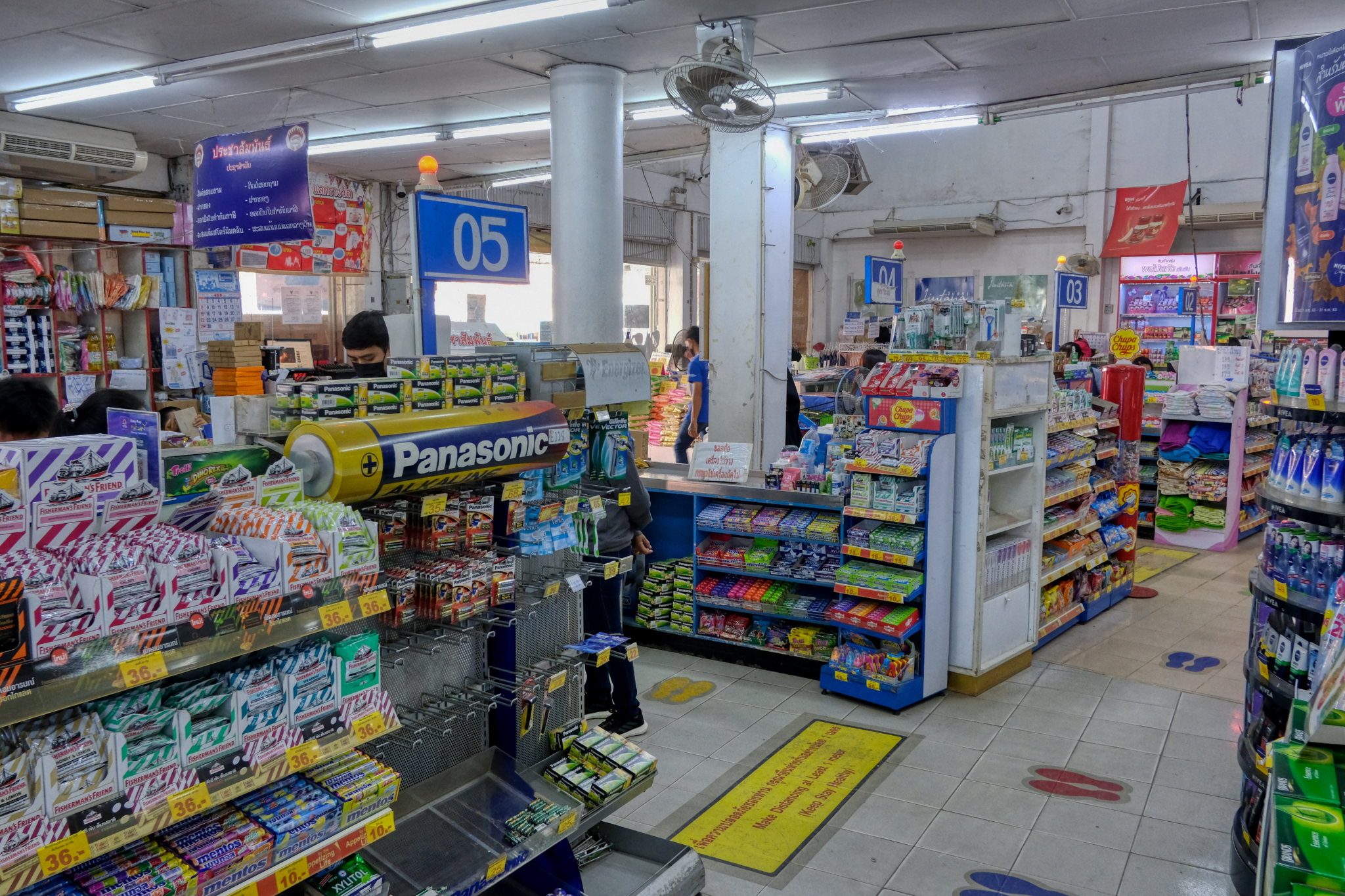 The old downtown of Loei still has locally-owned department stores and "supermarkets" like this one.
The old downtown of Loei still has locally-owned department stores and "supermarkets" like this one.
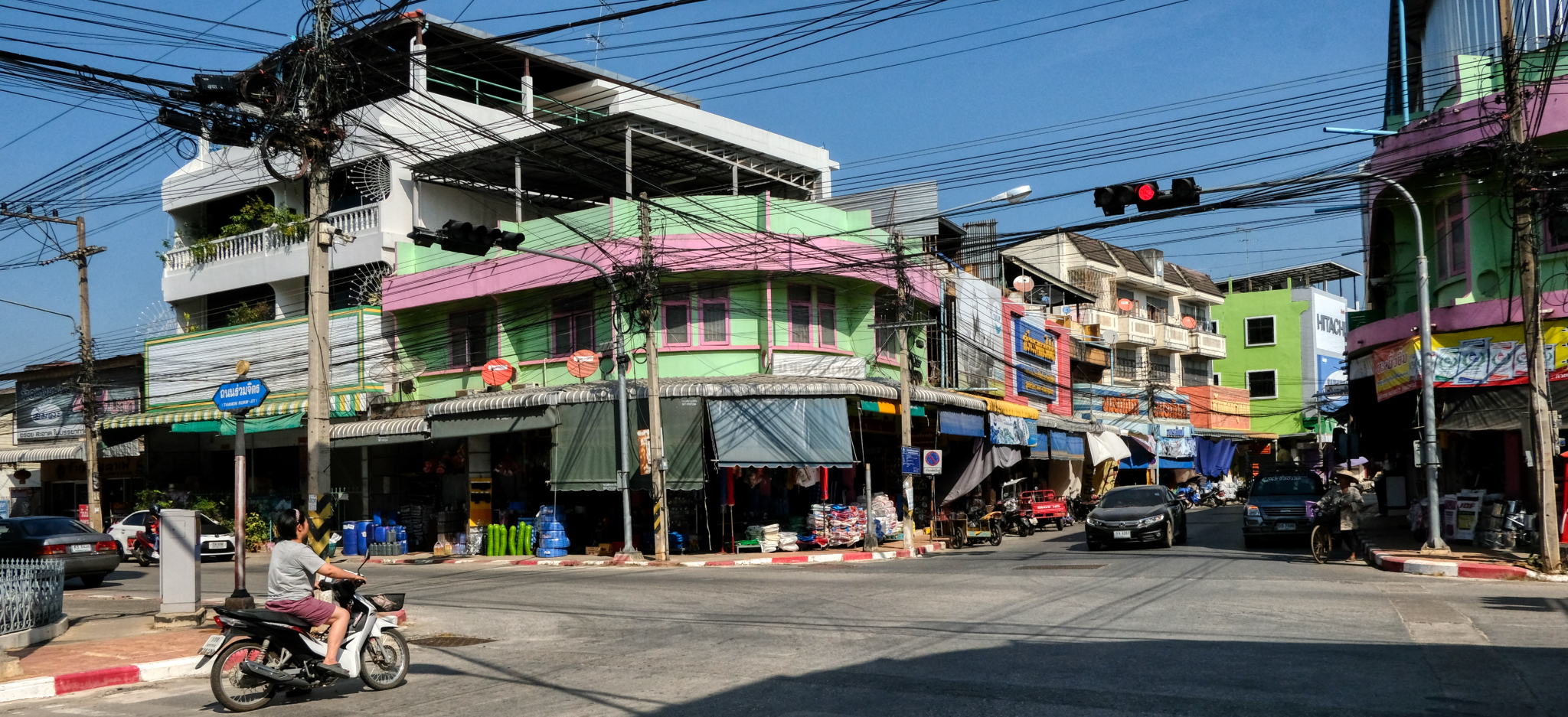 A street corner in downtown Loei. I love snooping around in these old Thai market towns.
A street corner in downtown Loei. I love snooping around in these old Thai market towns.
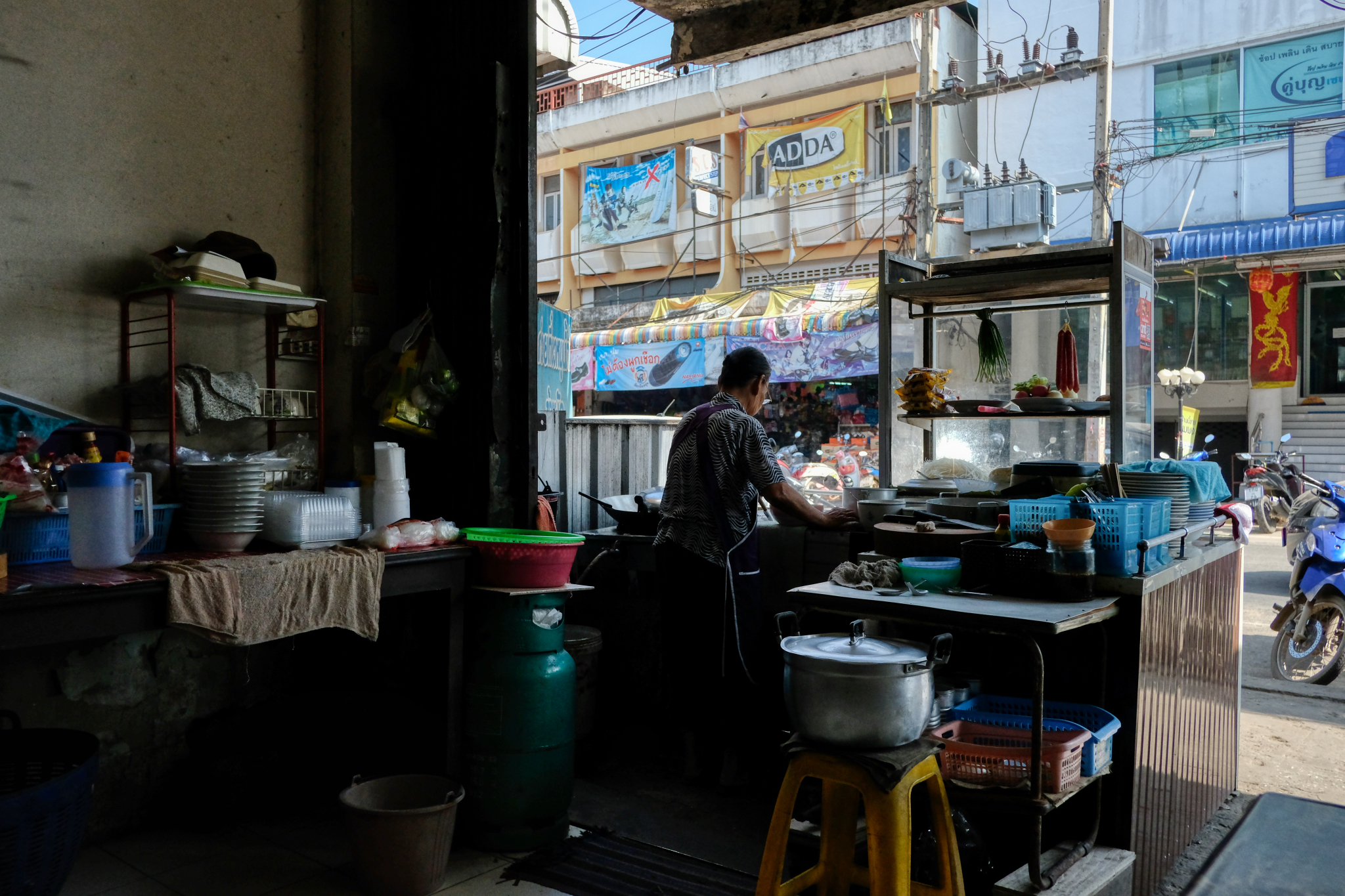 We stopped in this hole-in-the-wall restaurant for delicious noodle soup.
We stopped in this hole-in-the-wall restaurant for delicious noodle soup.
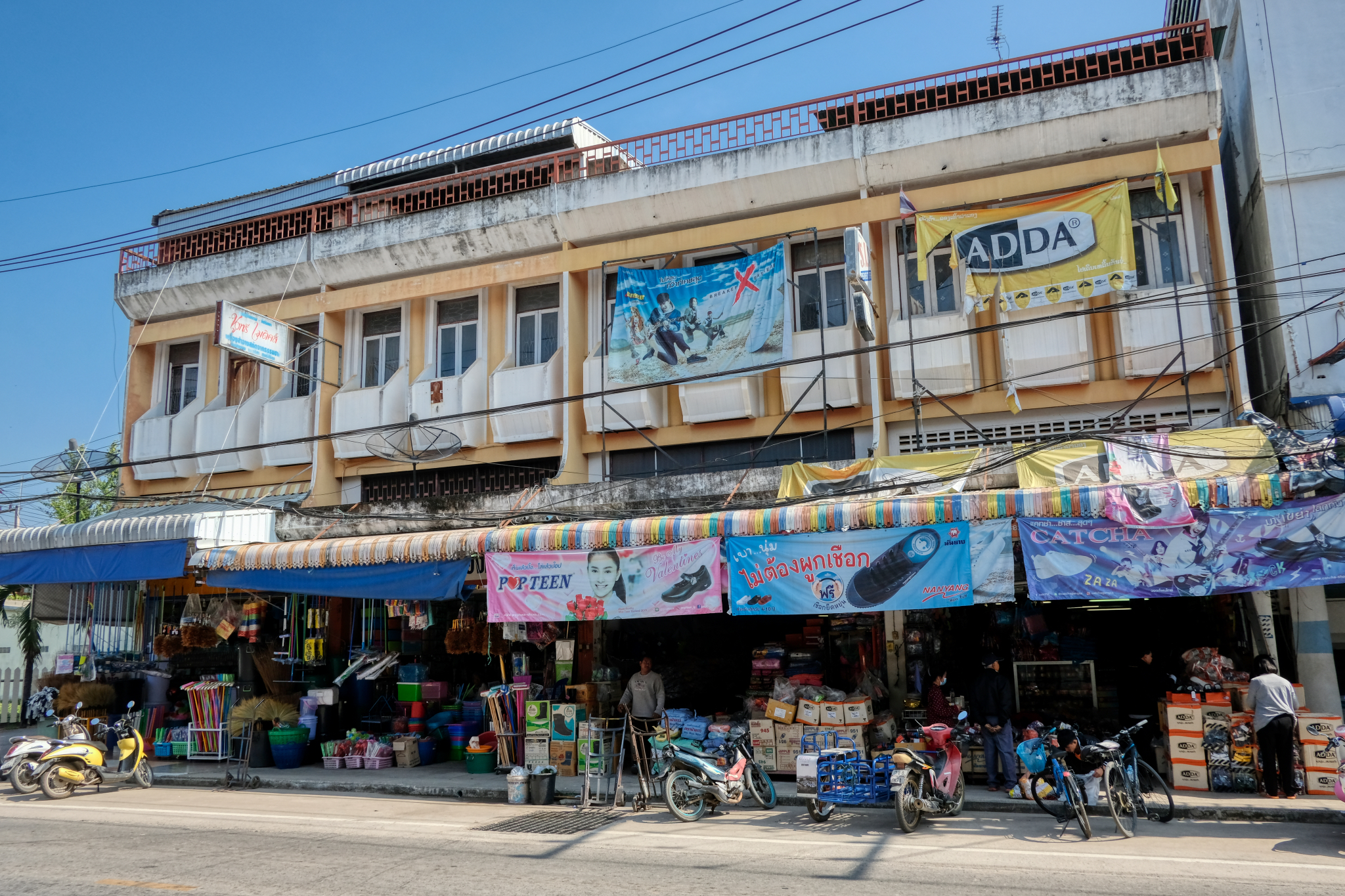 A busy market town serving a large agricultural community.
A busy market town serving a large agricultural community.
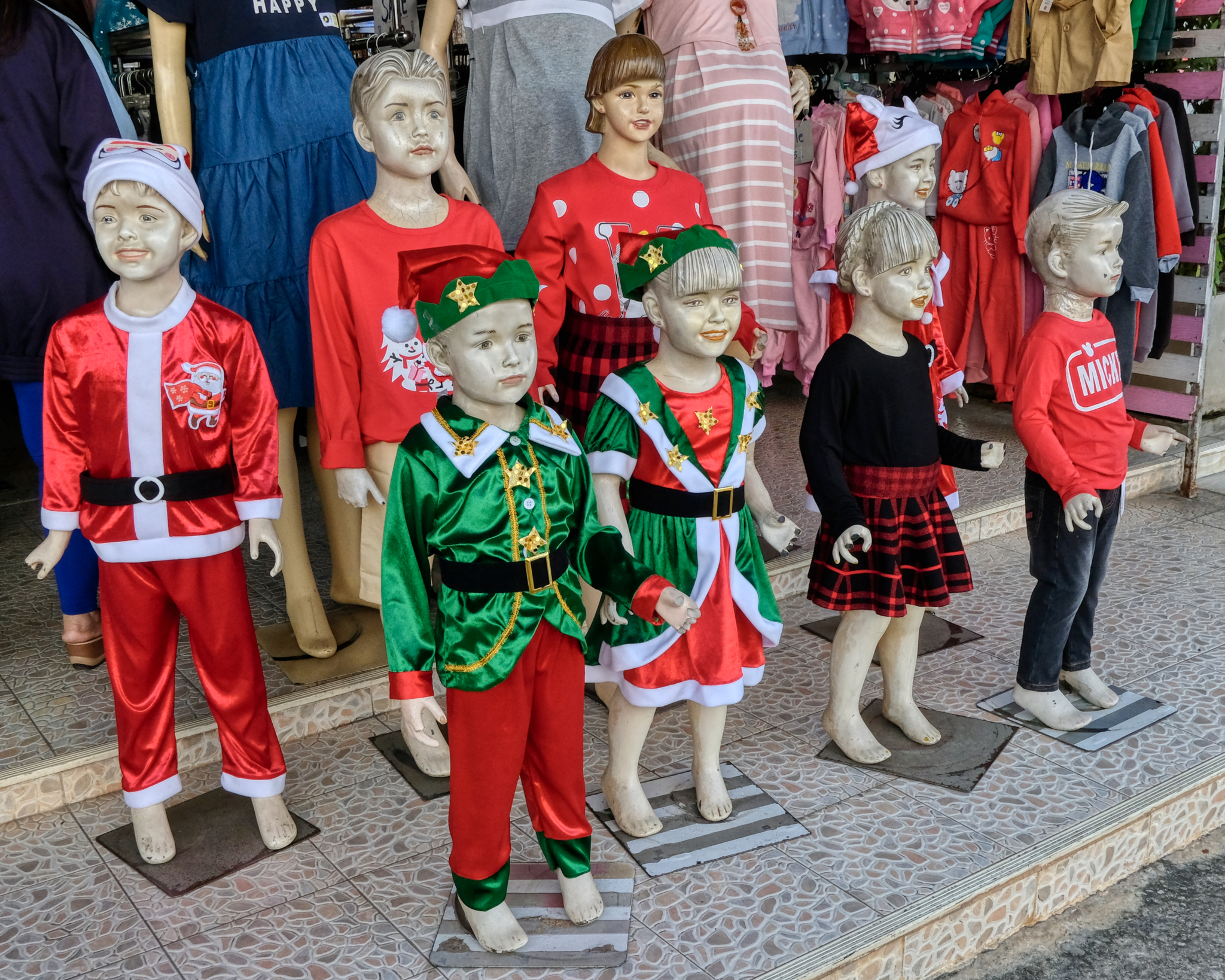 The things you see in Thailand! Yes, it was Christmas season even in Loei, Thailand. They celebrate everything here!
The things you see in Thailand! Yes, it was Christmas season even in Loei, Thailand. They celebrate everything here!
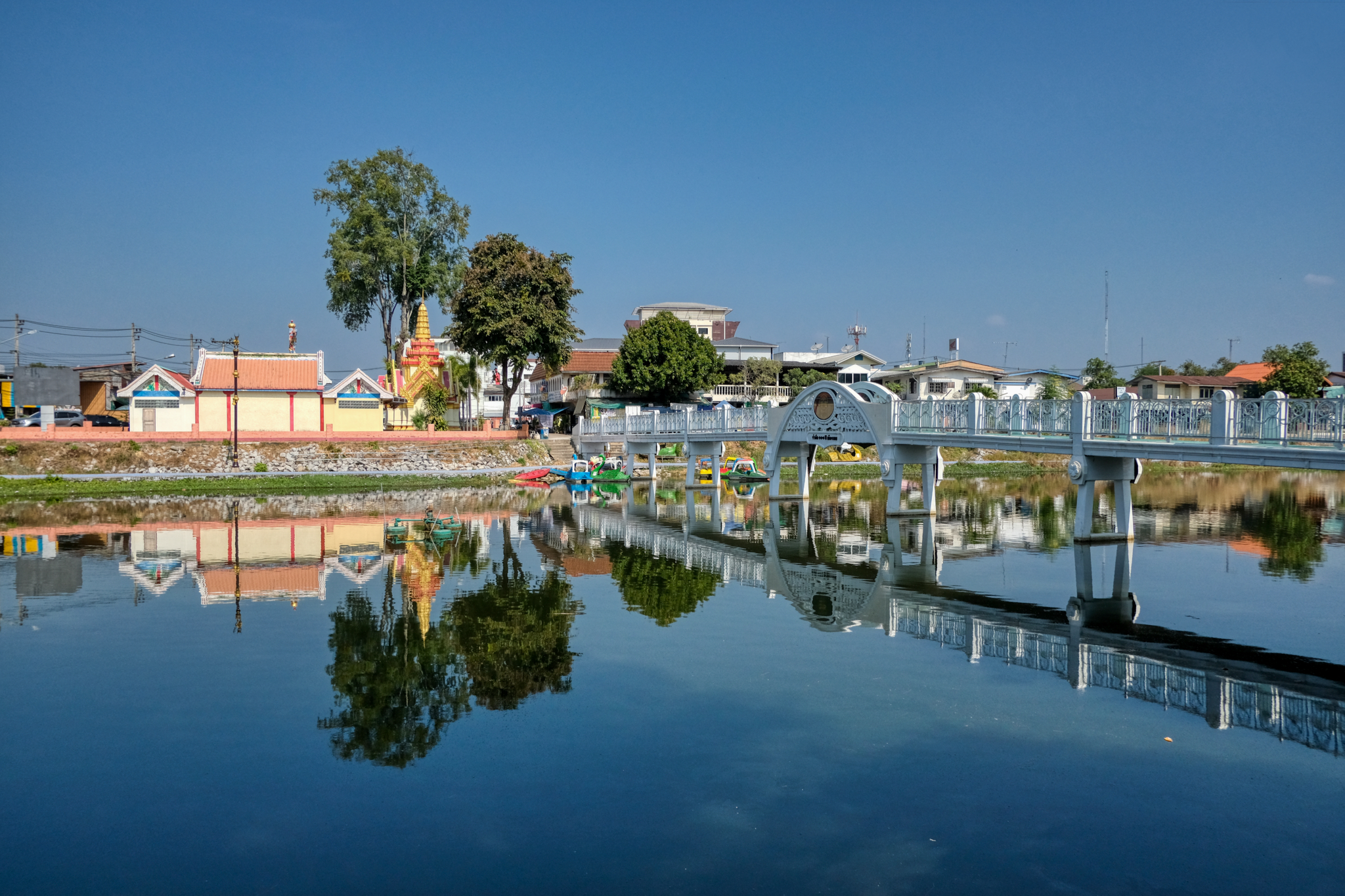 We walked through the downtown and found the banks of the Loei River. The bridge led to a beautiful city park.
We walked through the downtown and found the banks of the Loei River. The bridge led to a beautiful city park.
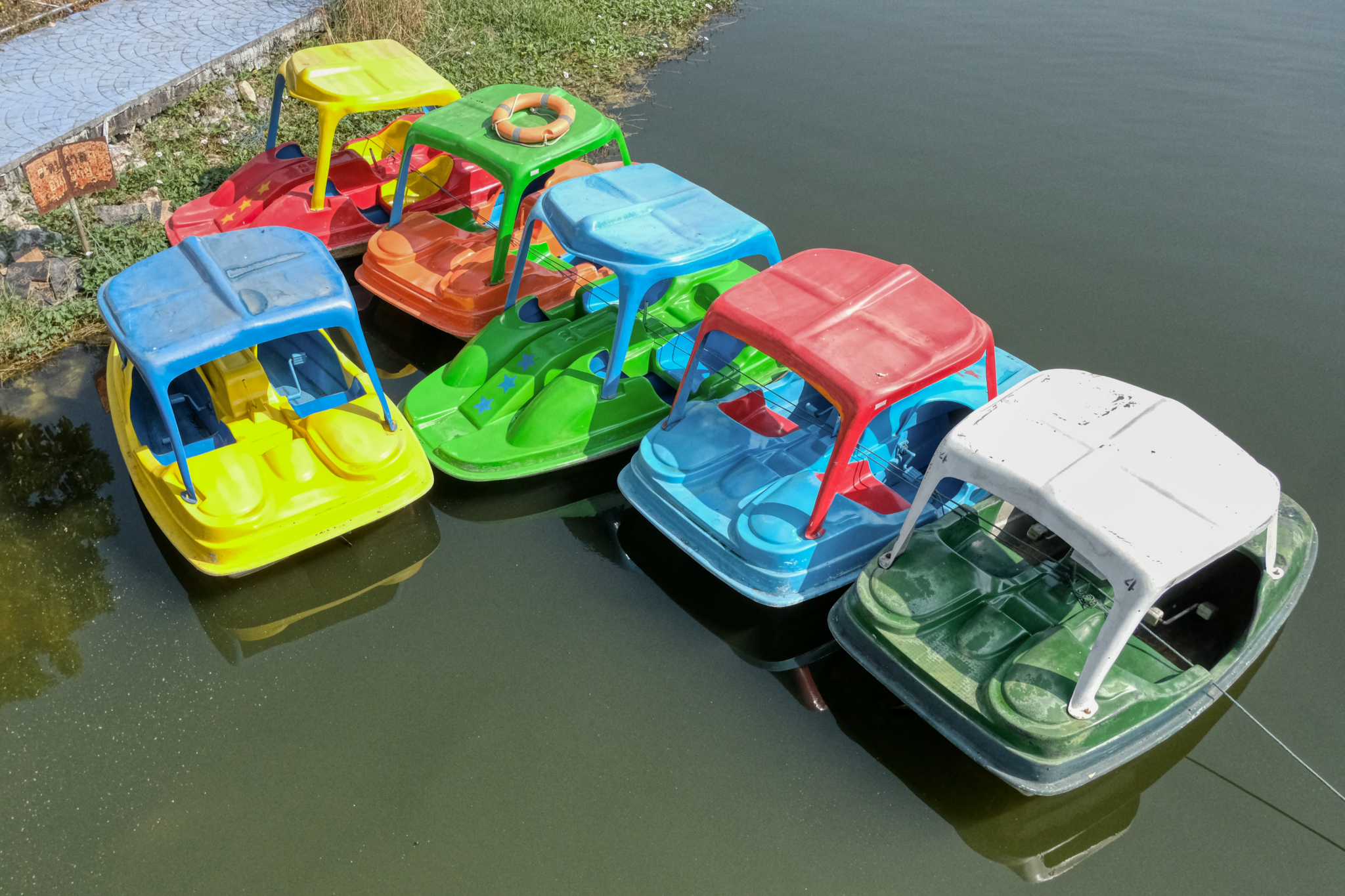 There was fun to be had in Loei.
There was fun to be had in Loei.
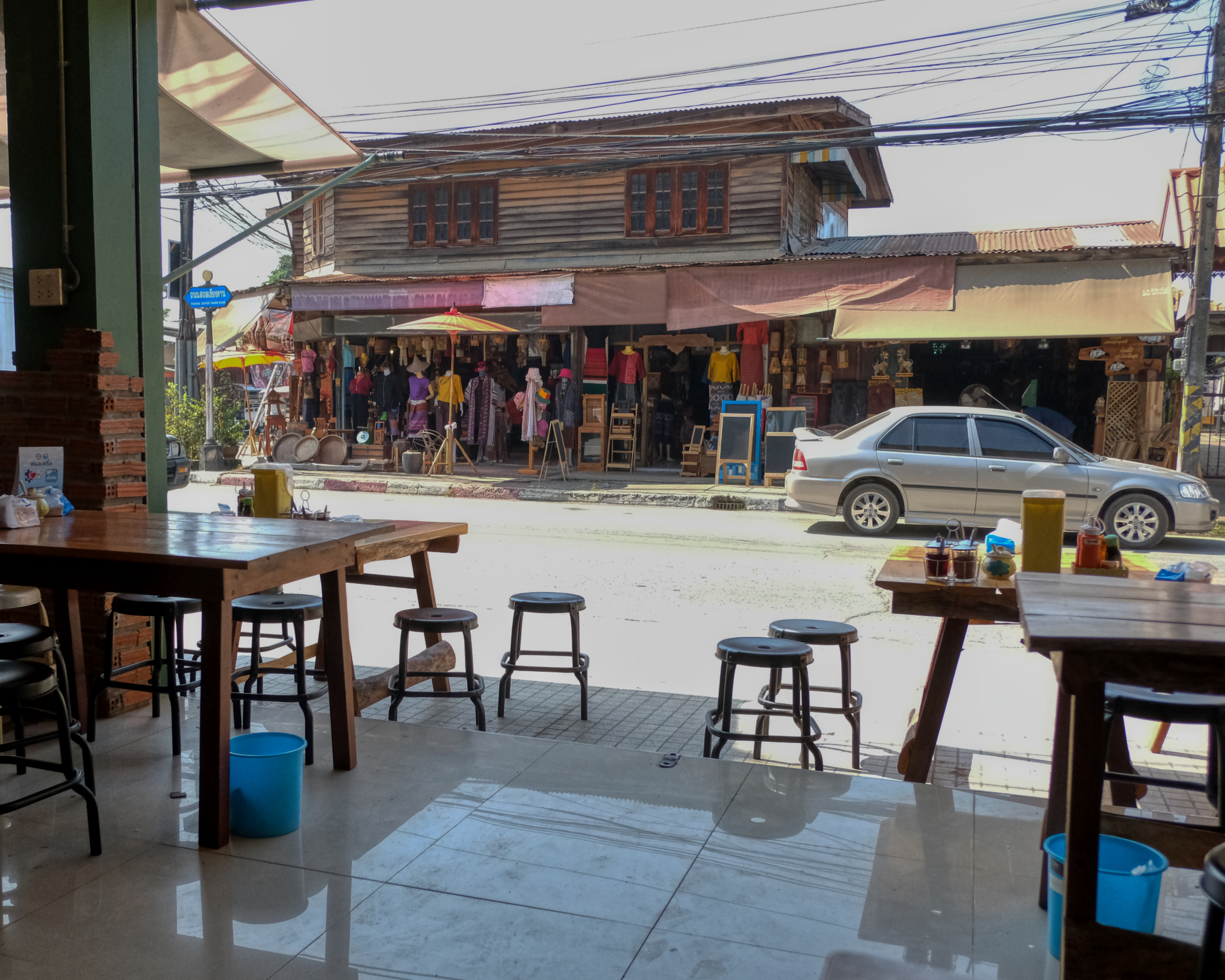 I sat across the street in a hipster coffee shop while my wife shopped in a fine traditional Thai textile shop across the street.
I sat across the street in a hipster coffee shop while my wife shopped in a fine traditional Thai textile shop across the street.
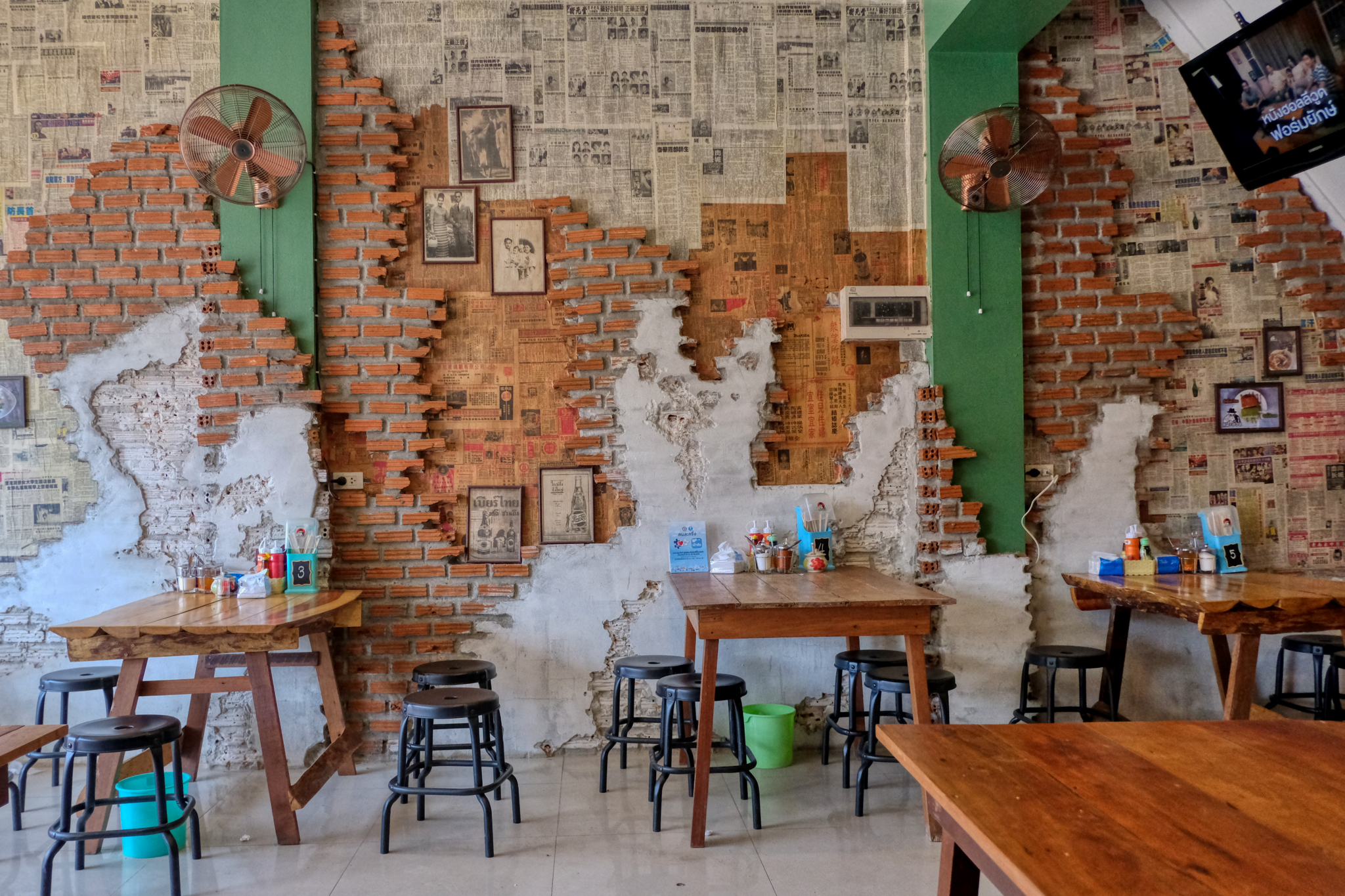 Yes, the hipster cool coffee shop can be found throughout the entire planet . . . even in the remote old market town of Loei.
Yes, the hipster cool coffee shop can be found throughout the entire planet . . . even in the remote old market town of Loei.
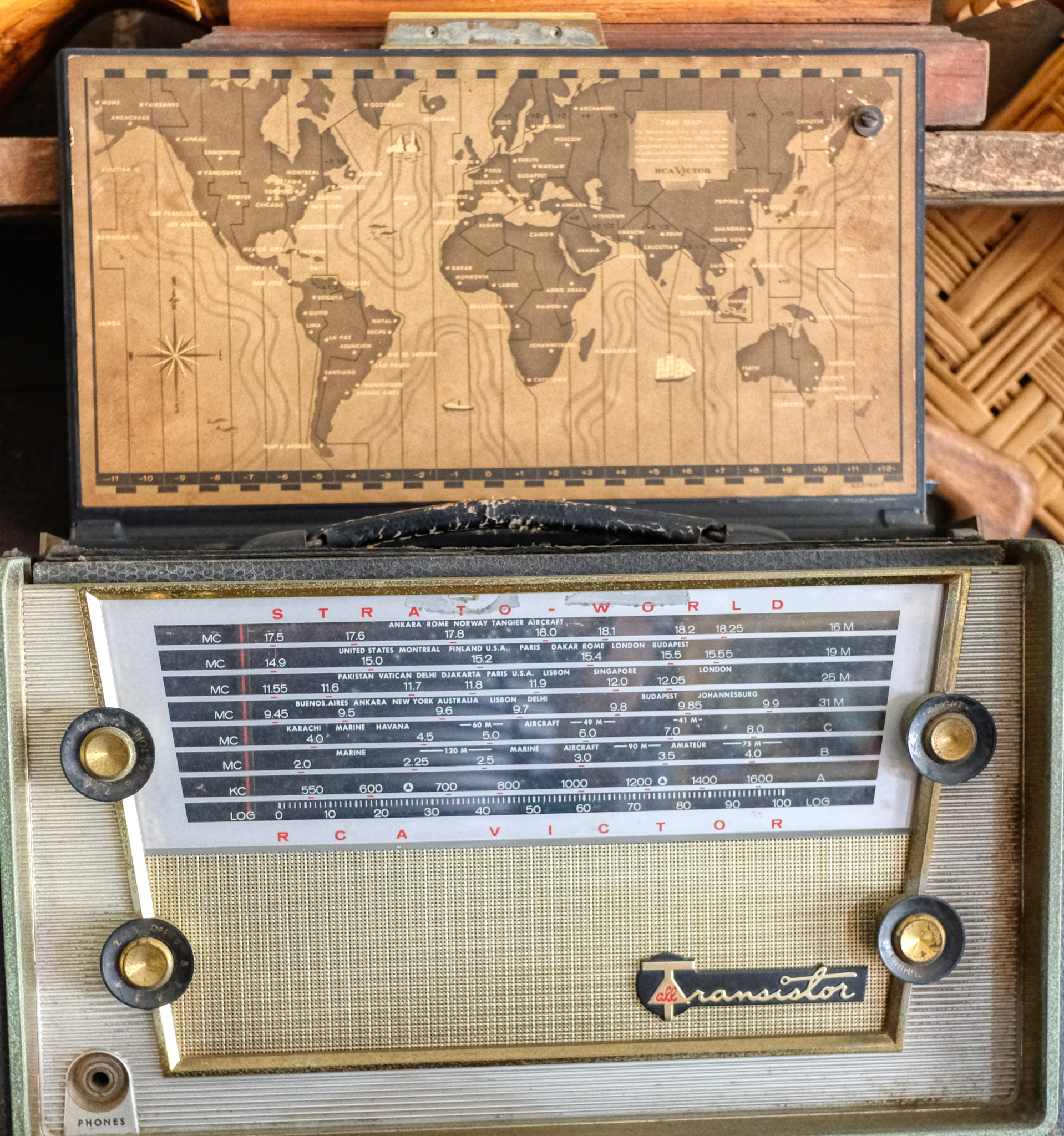 Always interesting old stuff to be found in old Thai village stores.
Always interesting old stuff to be found in old Thai village stores.
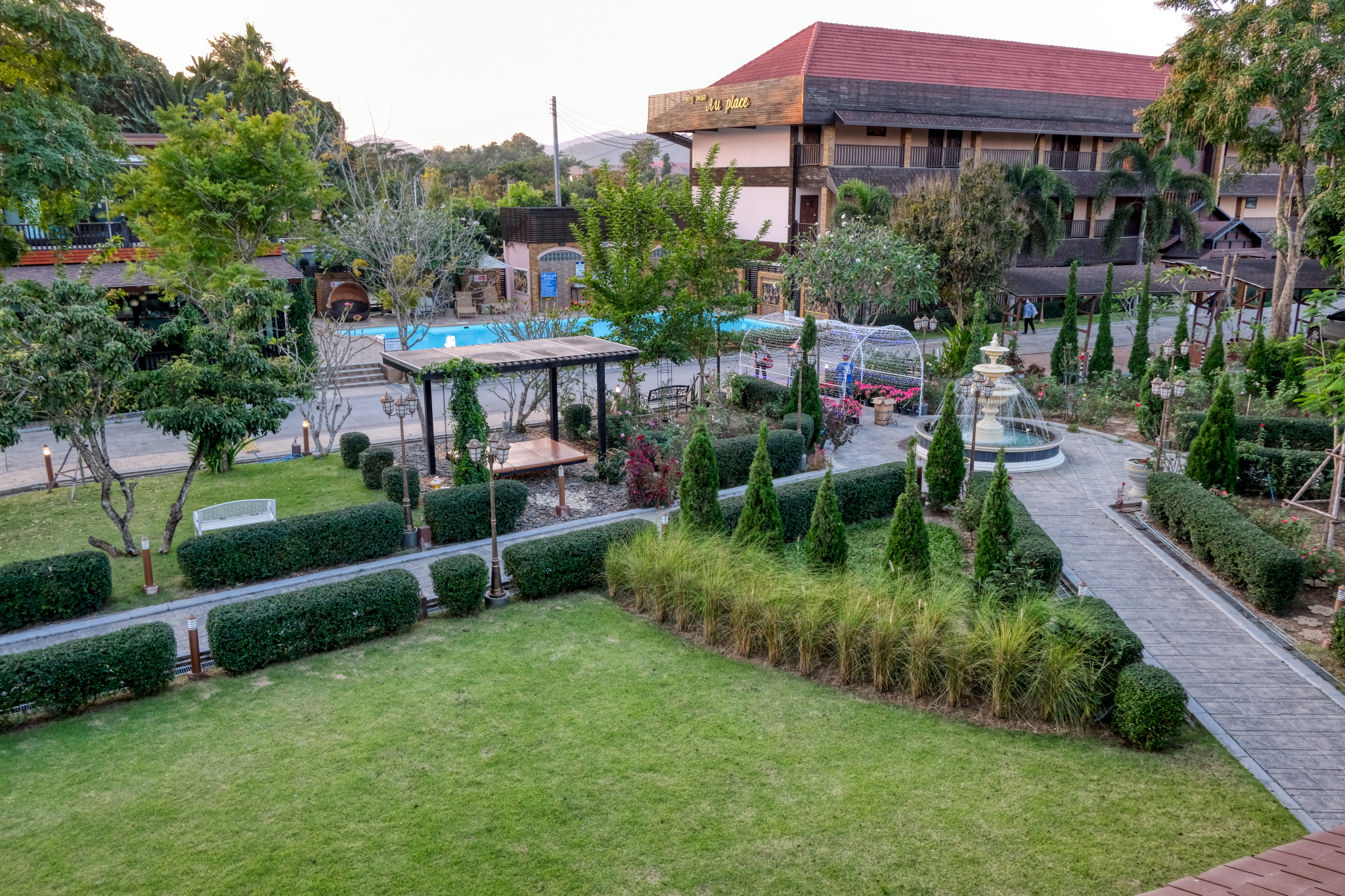 Our very good, and very cheap Au Place Hotel in Loei.
Our very good, and very cheap Au Place Hotel in Loei.
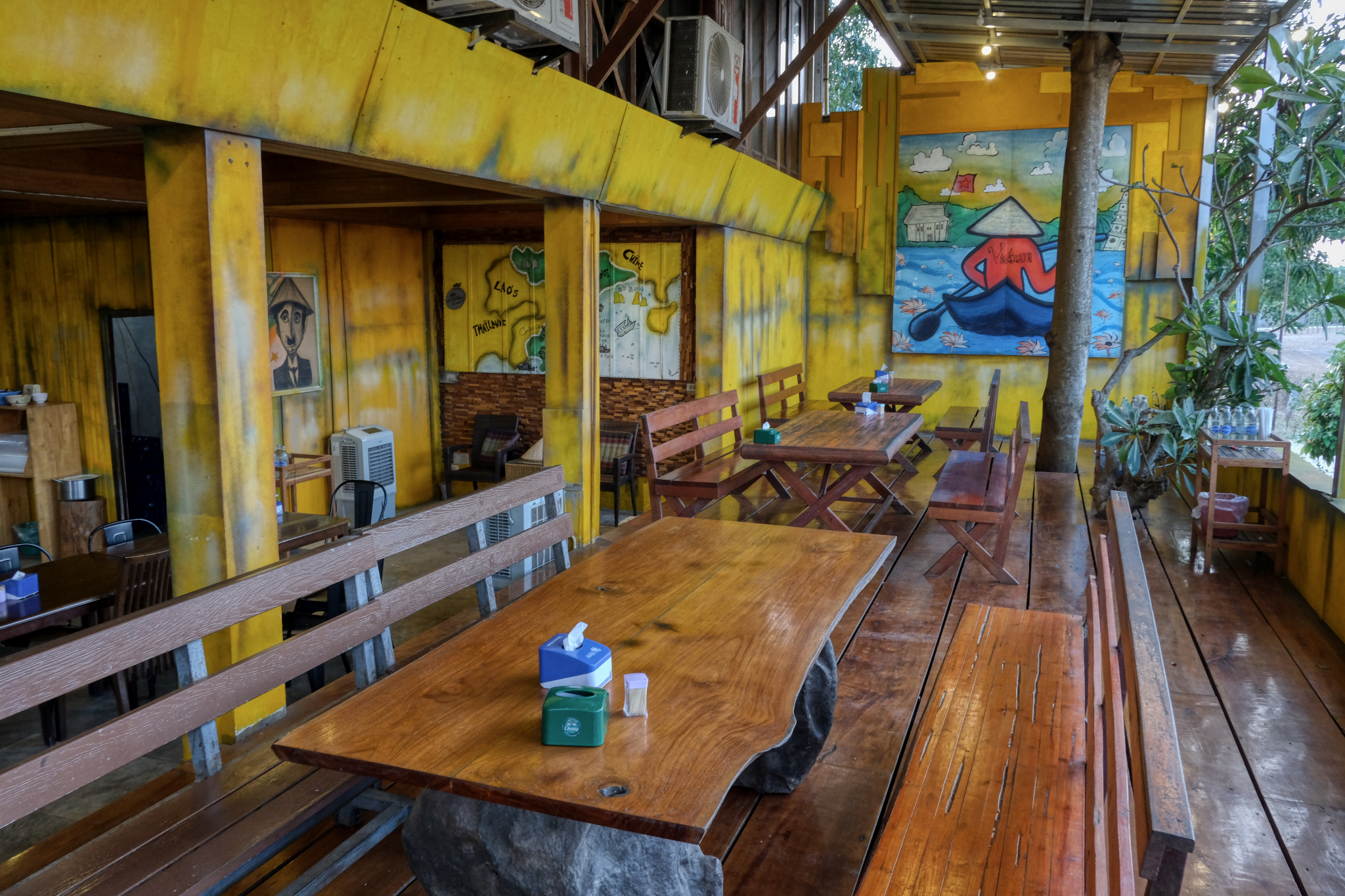 Just a half block away from the hotel on a rural street we found this stylish Vietnamese restaurant.
Just a half block away from the hotel on a rural street we found this stylish Vietnamese restaurant.
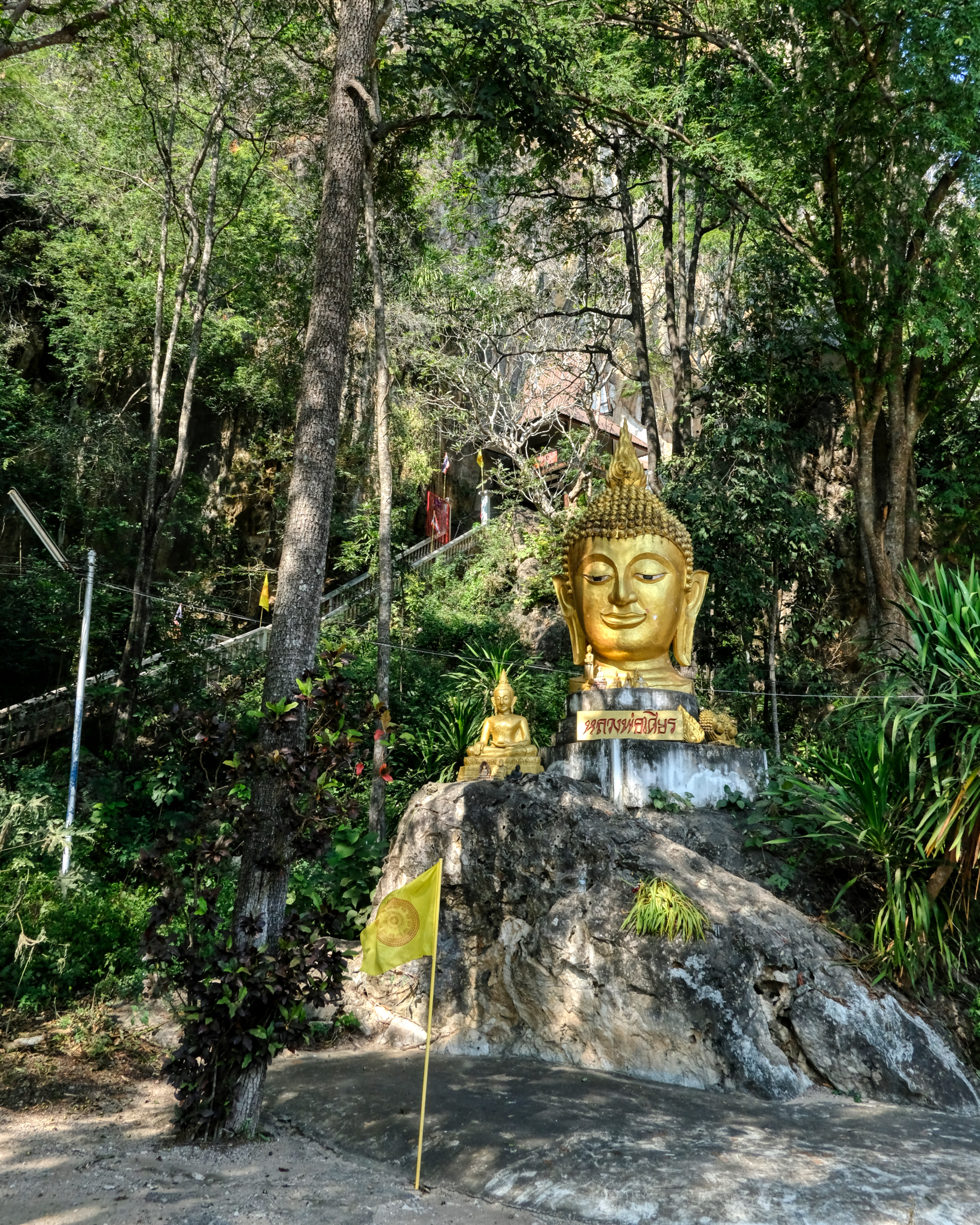 We spent a couple nights in Loei and would venture out into the countryside in search of interesting things to see. We found this amazing Buddhist Temple (Wat).
We spent a couple nights in Loei and would venture out into the countryside in search of interesting things to see. We found this amazing Buddhist Temple (Wat).
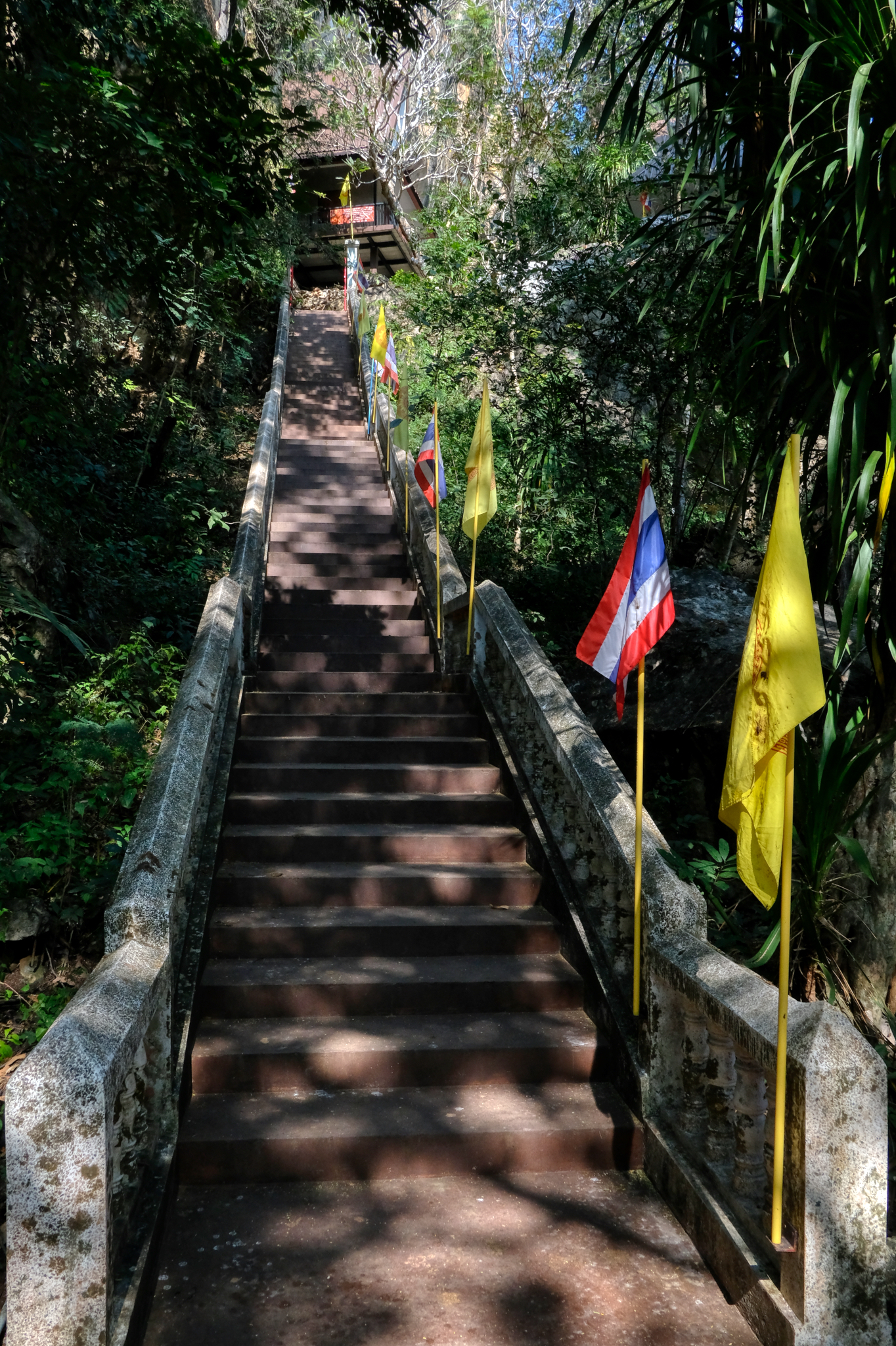 There were caves with Buddhas to explore at this wat.
There were caves with Buddhas to explore at this wat.
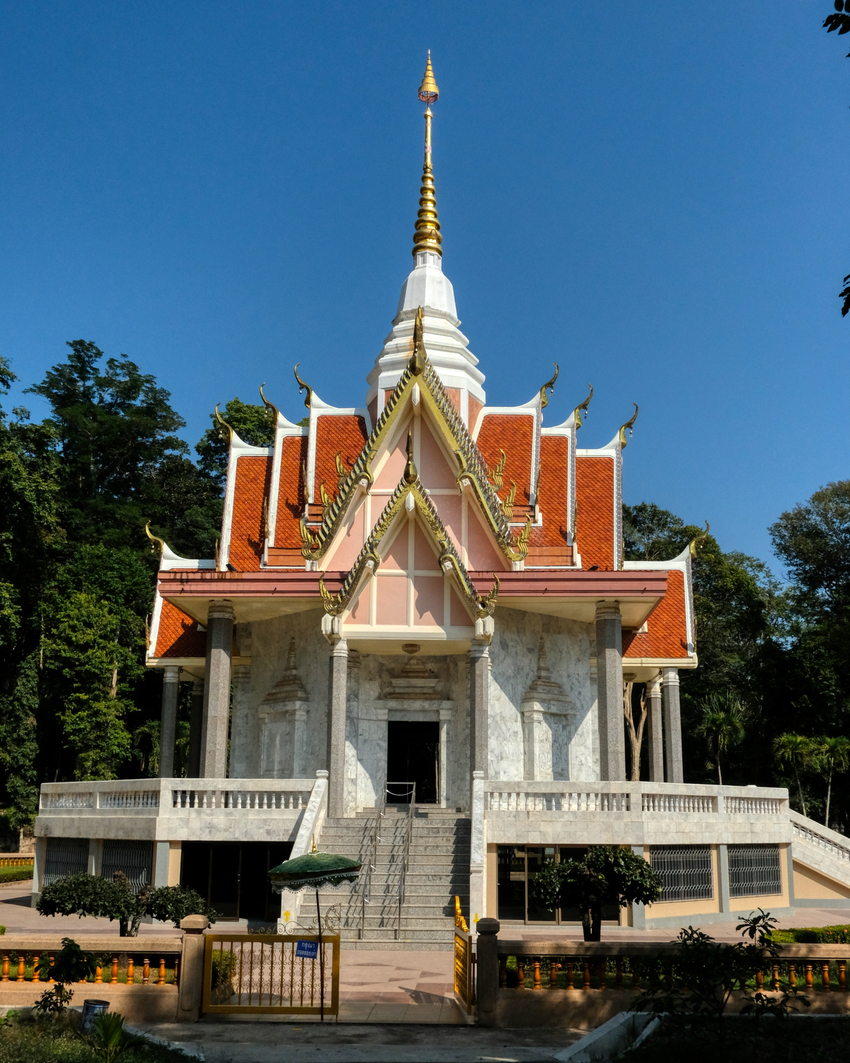 There was this very beautiful marble temple on the wat grounds.
There was this very beautiful marble temple on the wat grounds.
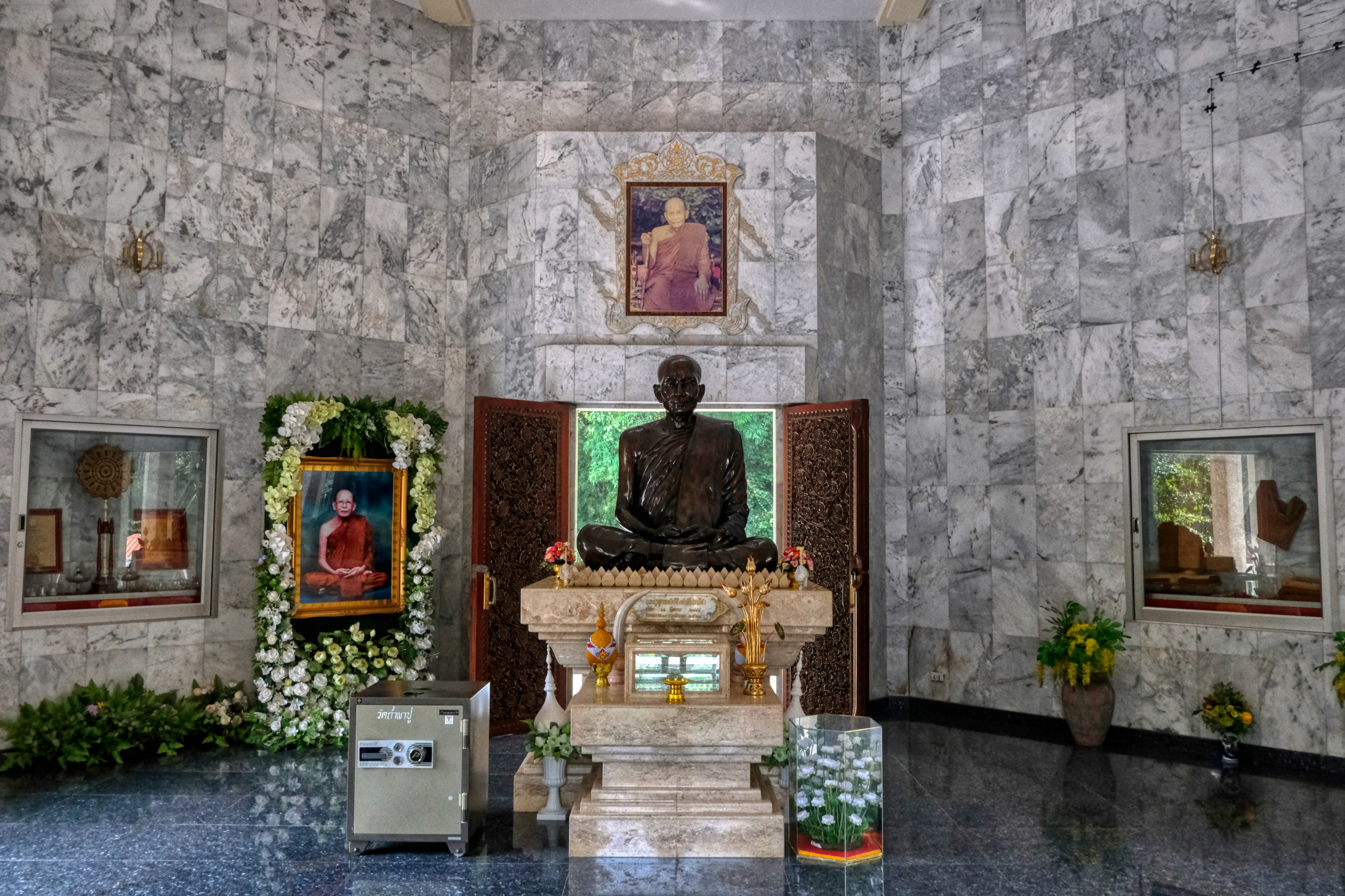 The marble temple was very interesting inside.
The marble temple was very interesting inside.
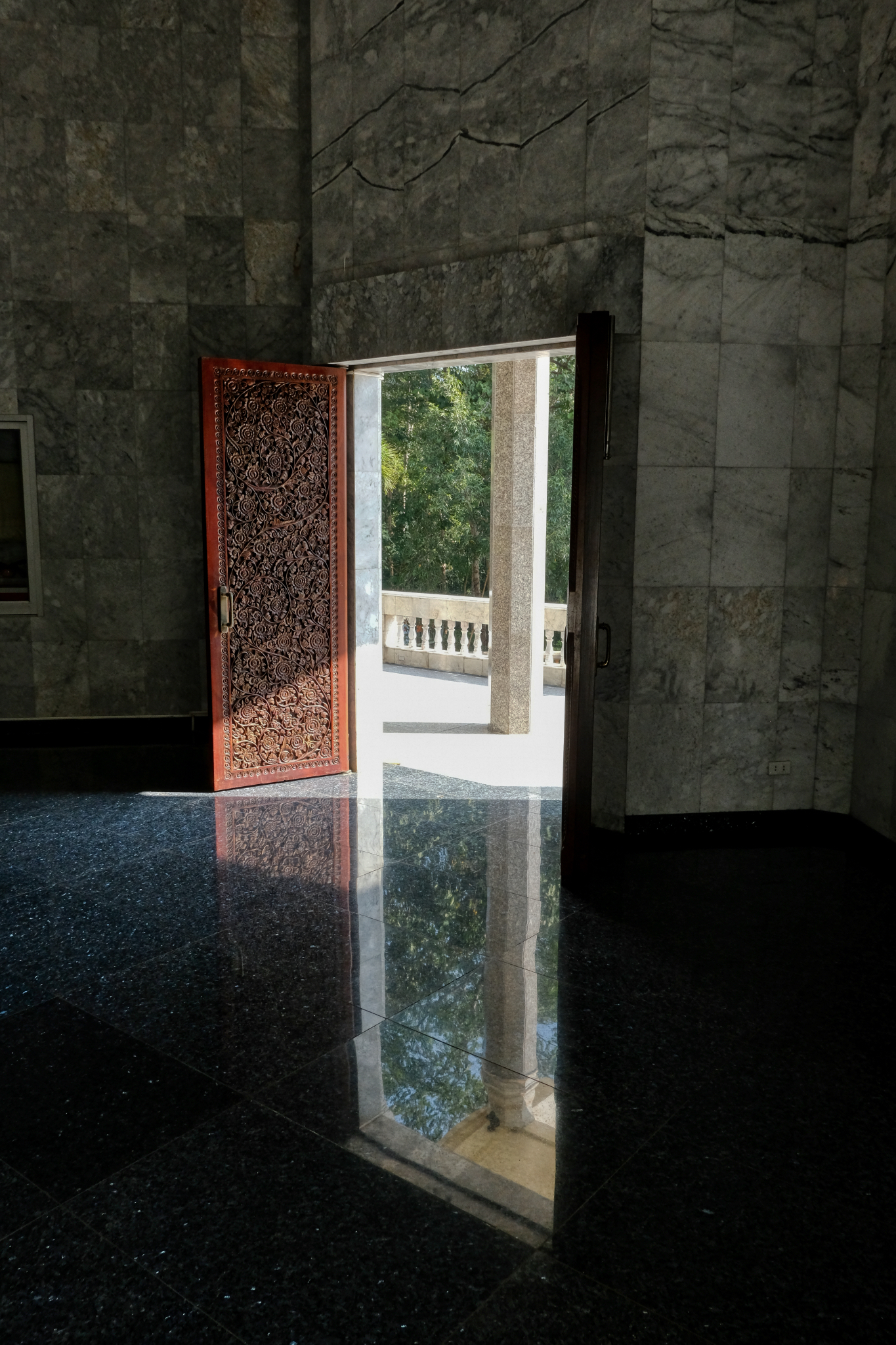 Marvelous light and reflection inside the marble wat.
Marvelous light and reflection inside the marble wat.
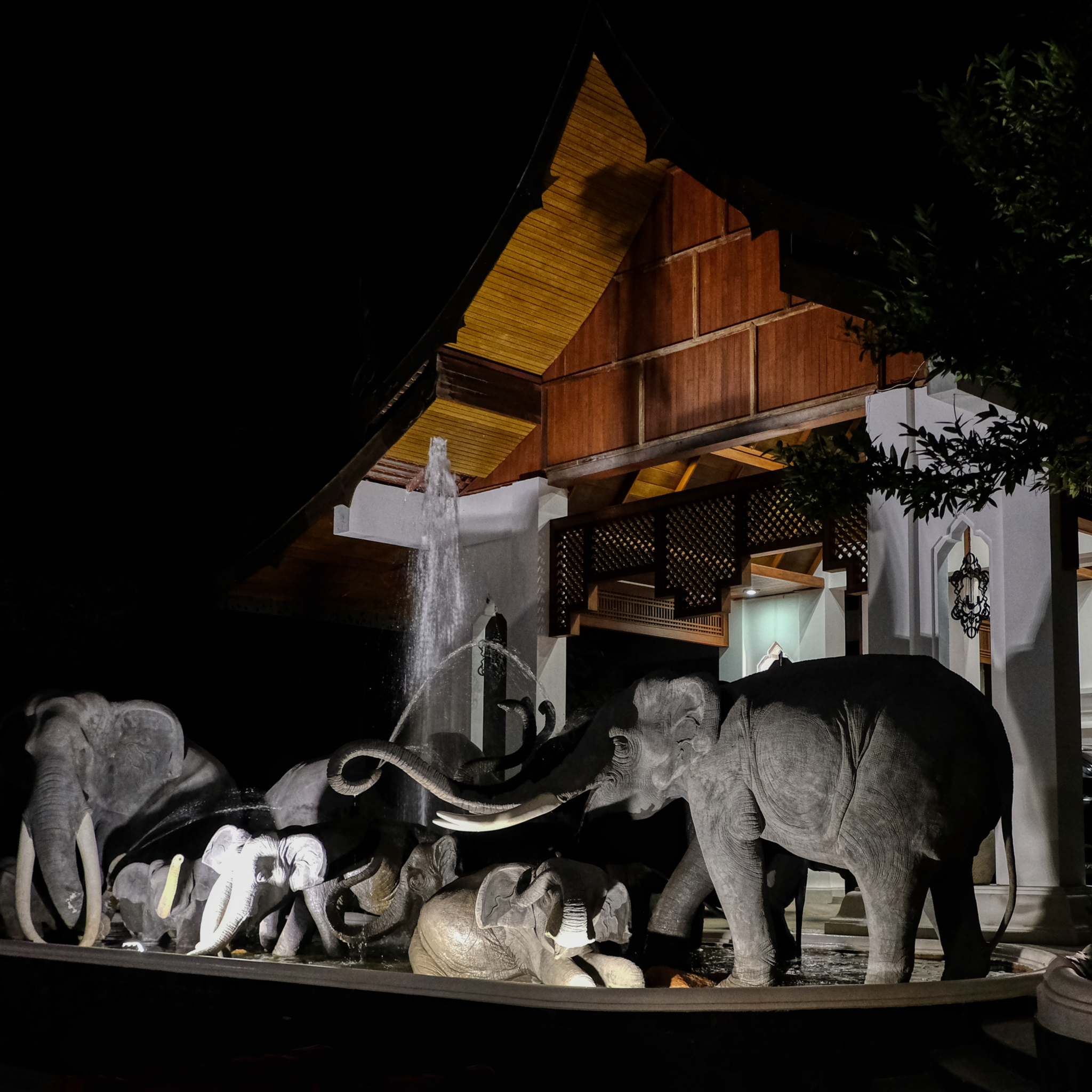 We found this marvelous restaurant for our dinner on the second night in Loei.
We found this marvelous restaurant for our dinner on the second night in Loei.
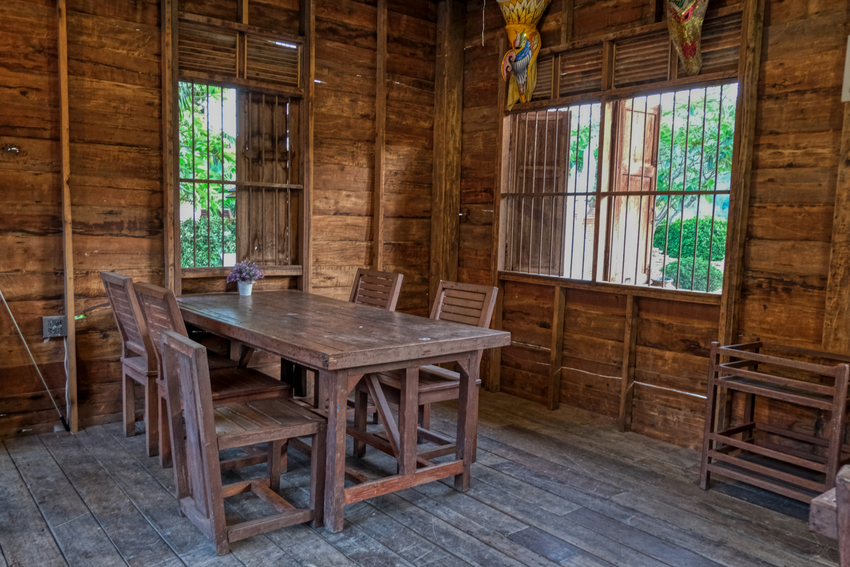 The "elephant restaurant' interior dining area.
The "elephant restaurant' interior dining area.
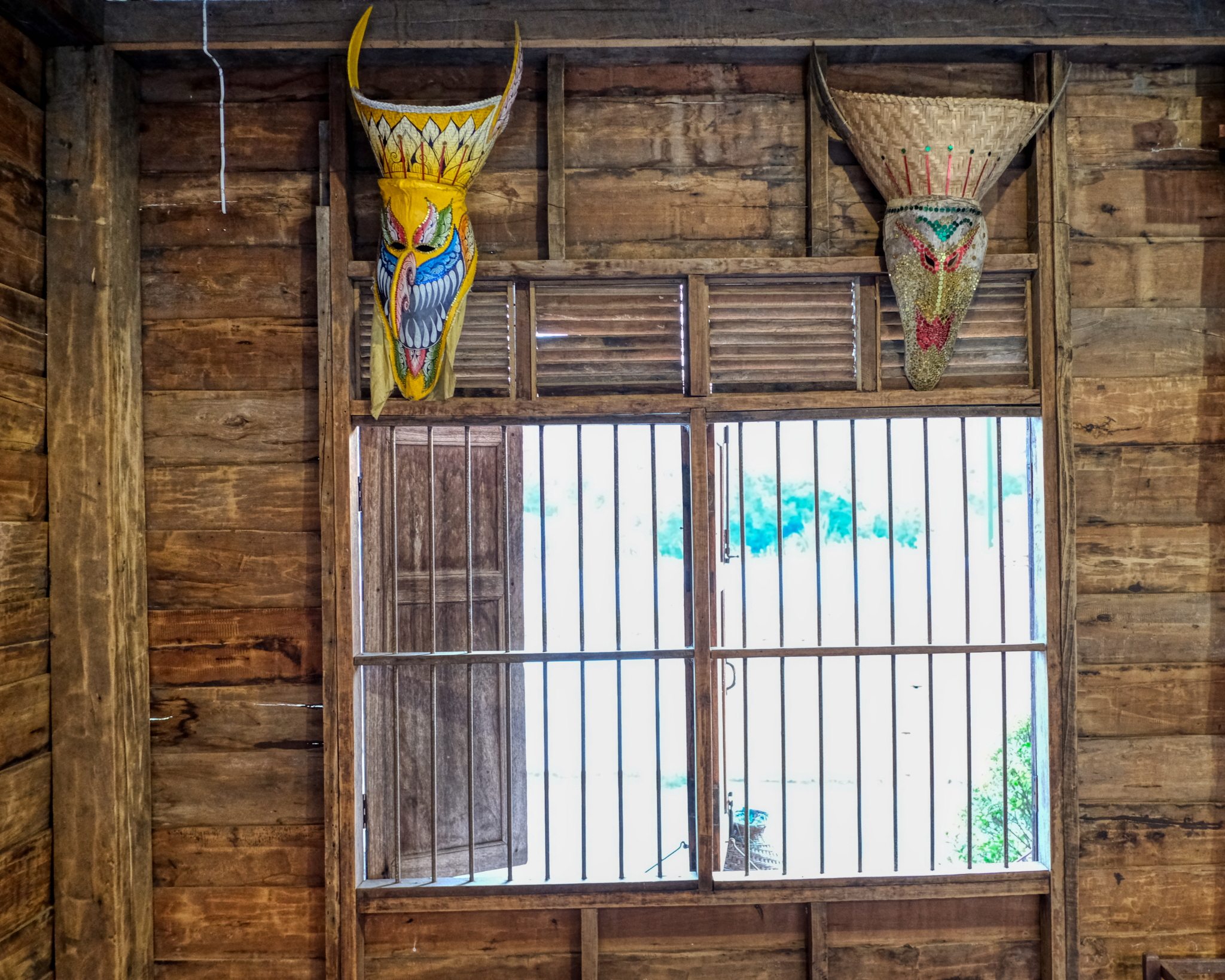 We had a fine meal in this old wooden room with traditional spirit masks hanging around.
We had a fine meal in this old wooden room with traditional spirit masks hanging around.
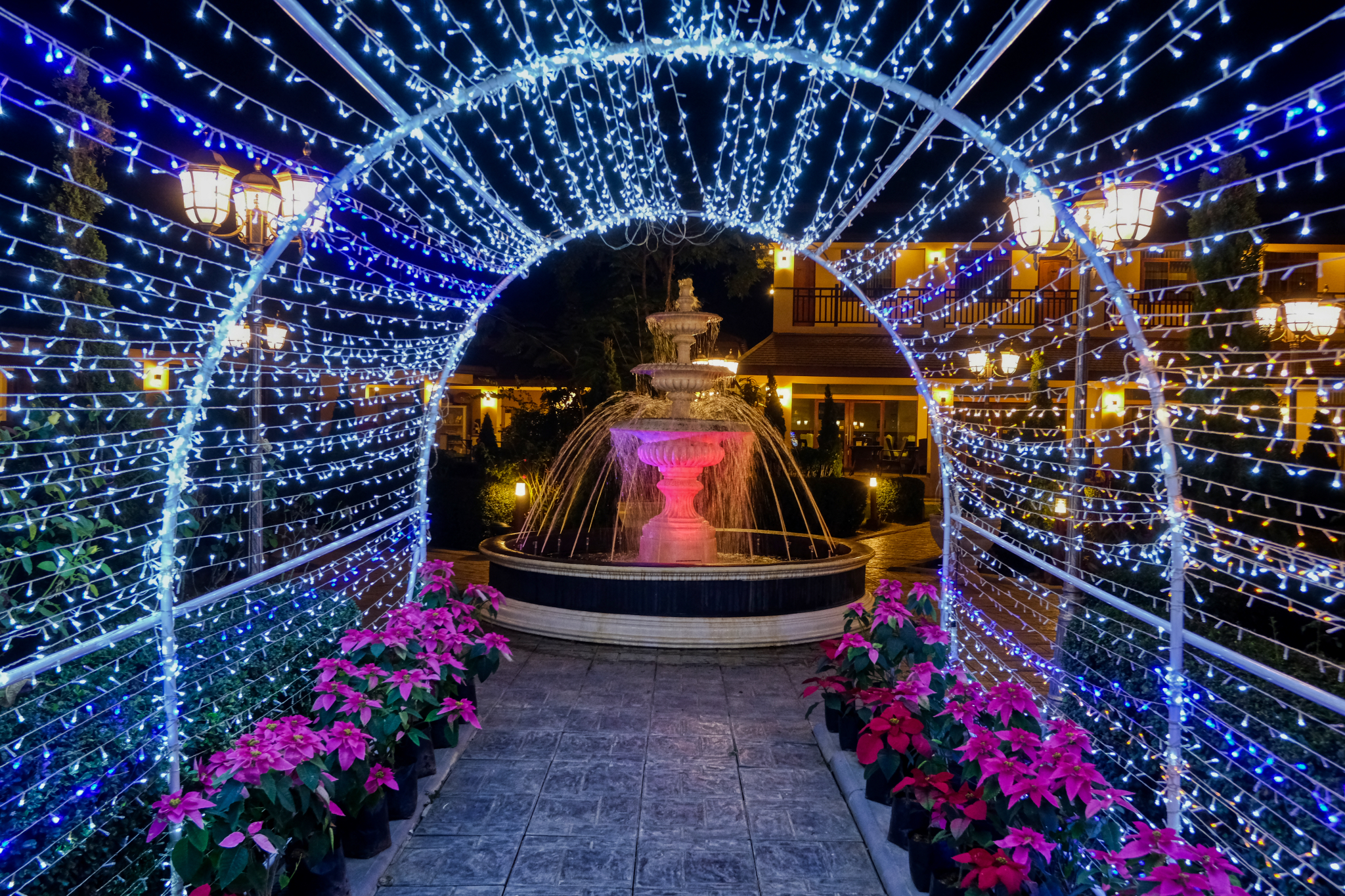 Back at our hotel . . . they had the grounds lit up like a carnival!!!
Back at our hotel . . . they had the grounds lit up like a carnival!!!
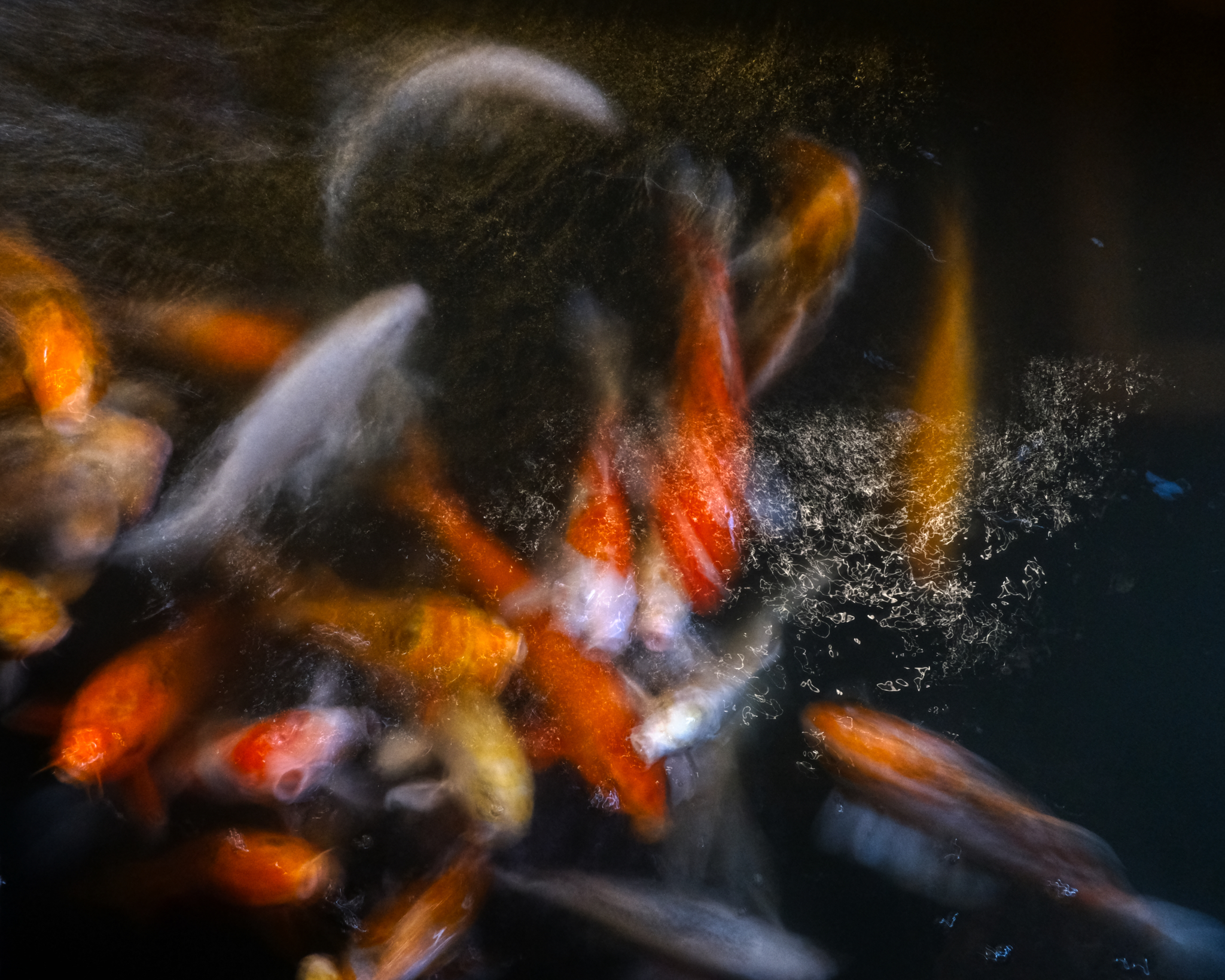 The next morning we said good-bye to Loei and hit the road for then short drive north to the town of Chiang Khan along the Mekong River.
The next morning we said good-bye to Loei and hit the road for then short drive north to the town of Chiang Khan along the Mekong River.
--------------------------------------------
CHIANG KHAN
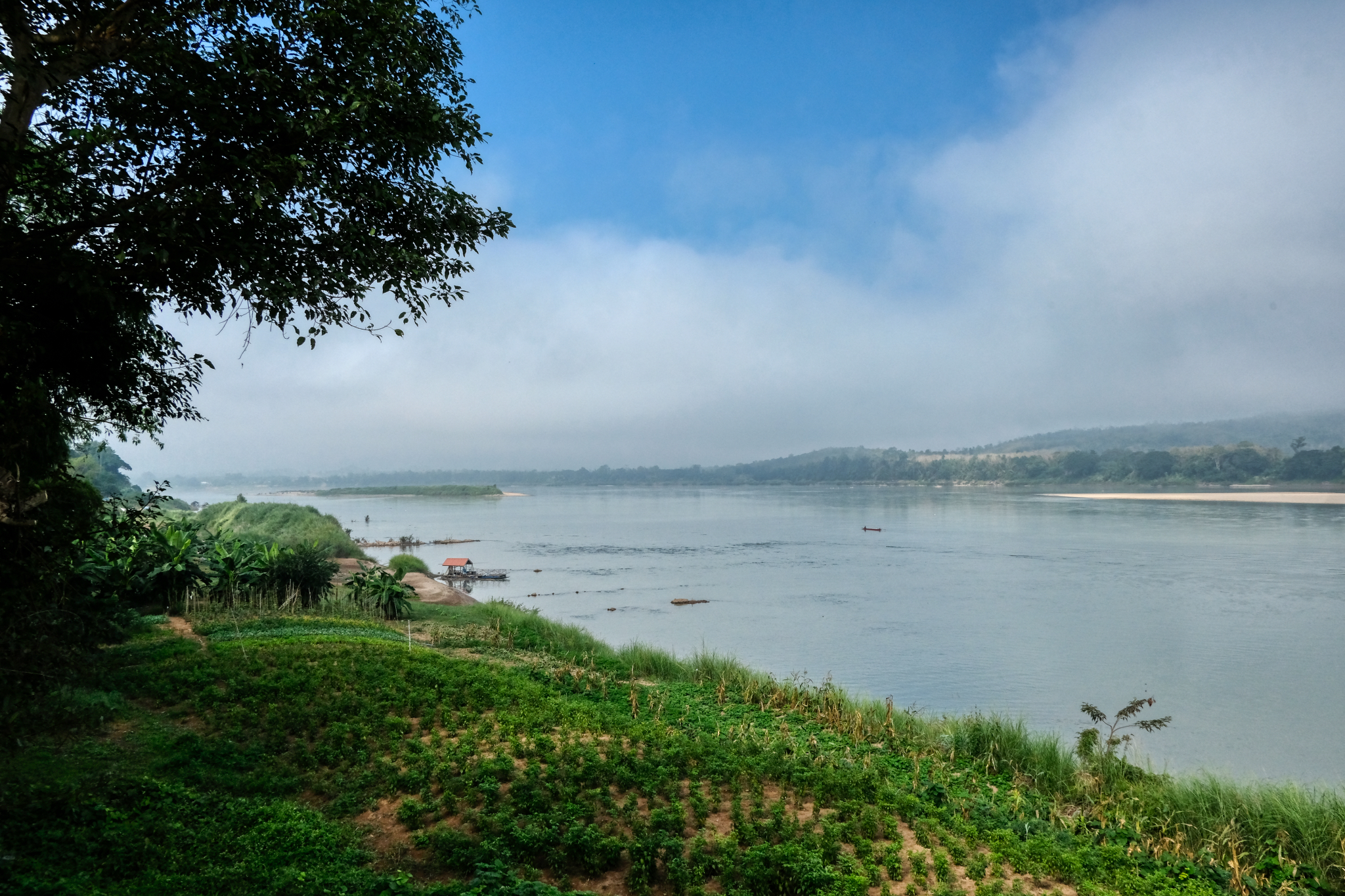 We stopped at a riverside resort as soon as we arrived at the river . . . and this was out first view of the mighty Mekong River.
We stopped at a riverside resort as soon as we arrived at the river . . . and this was out first view of the mighty Mekong River.
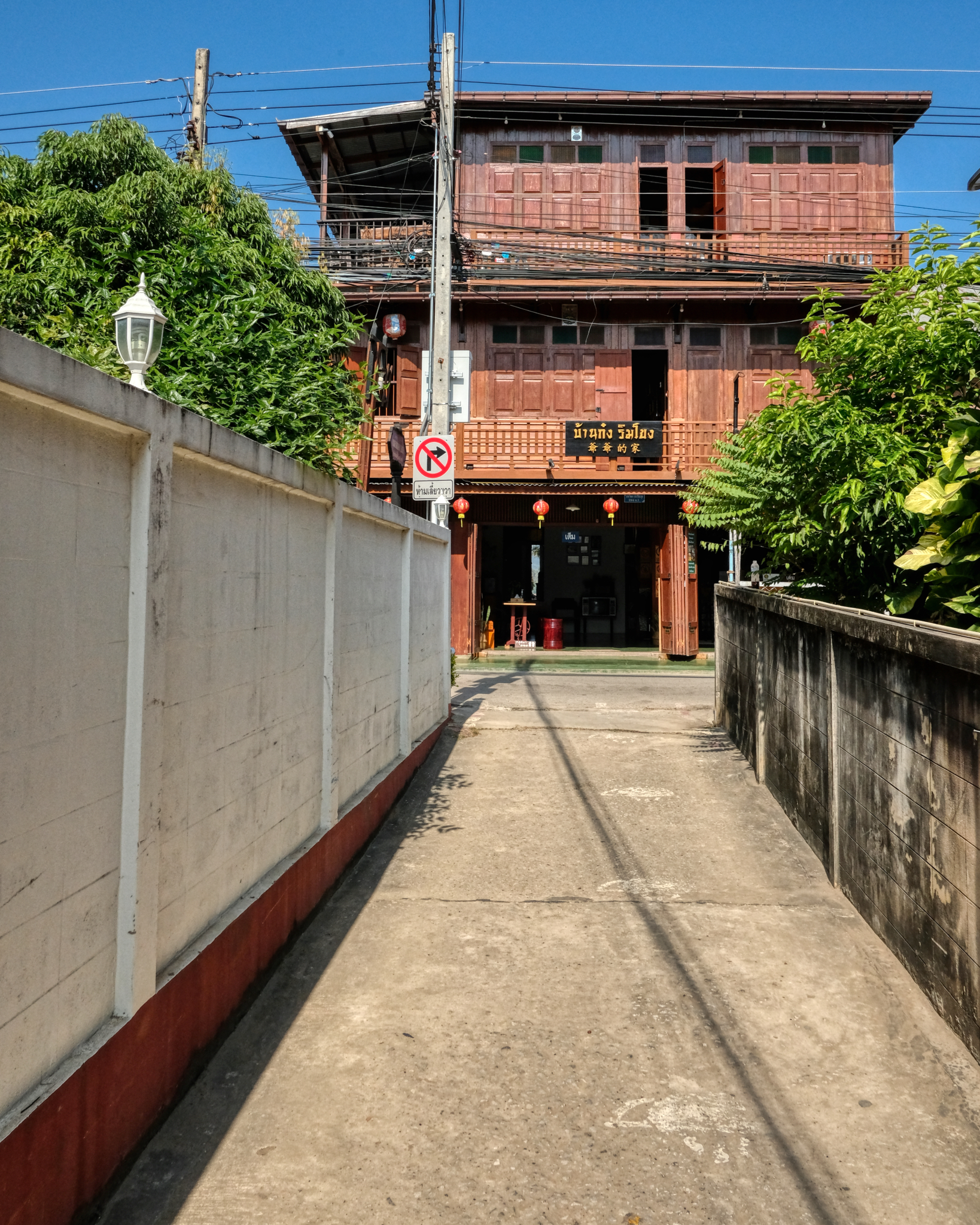 We quickly found our charming old wooden guest house.
We quickly found our charming old wooden guest house.
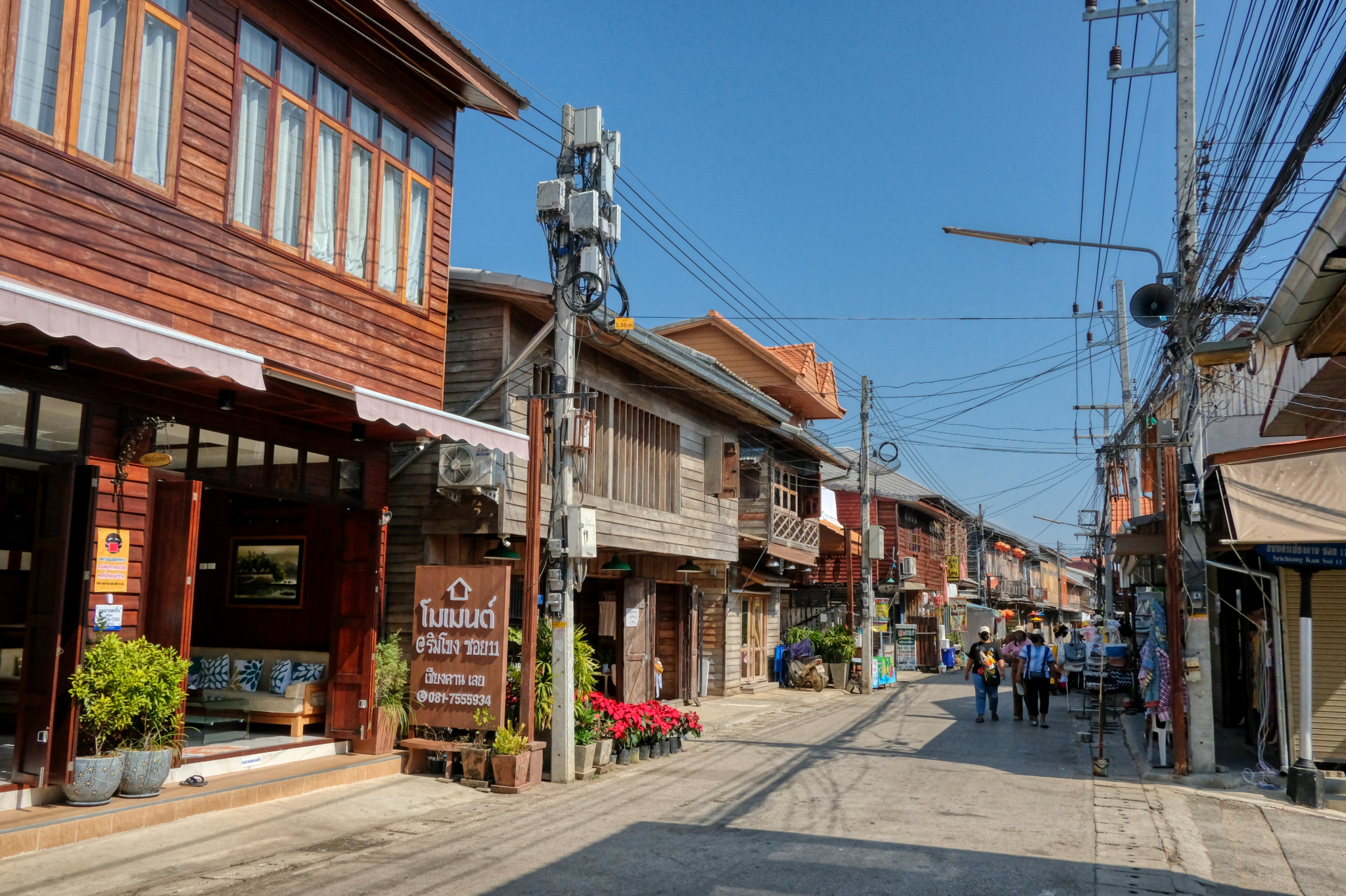 Our guest house was right on a kind of 'walking street' through the riverside village. The Mekong River is directly behind the row of houses and shops to the left.
Our guest house was right on a kind of 'walking street' through the riverside village. The Mekong River is directly behind the row of houses and shops to the left.
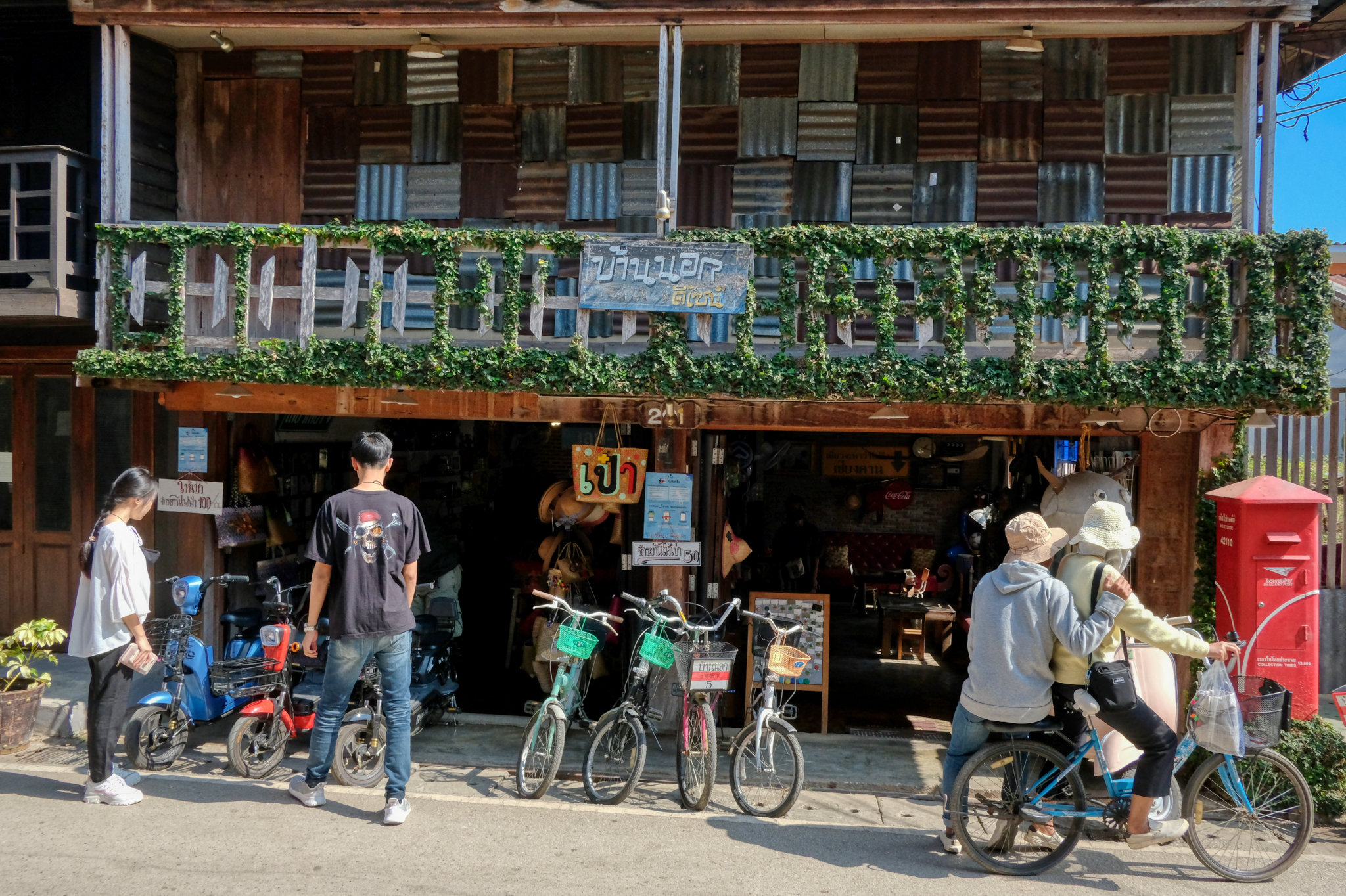 Chiang Khan is a lovely and funky old Thai town with interesting shops and bike rentals.
Chiang Khan is a lovely and funky old Thai town with interesting shops and bike rentals.
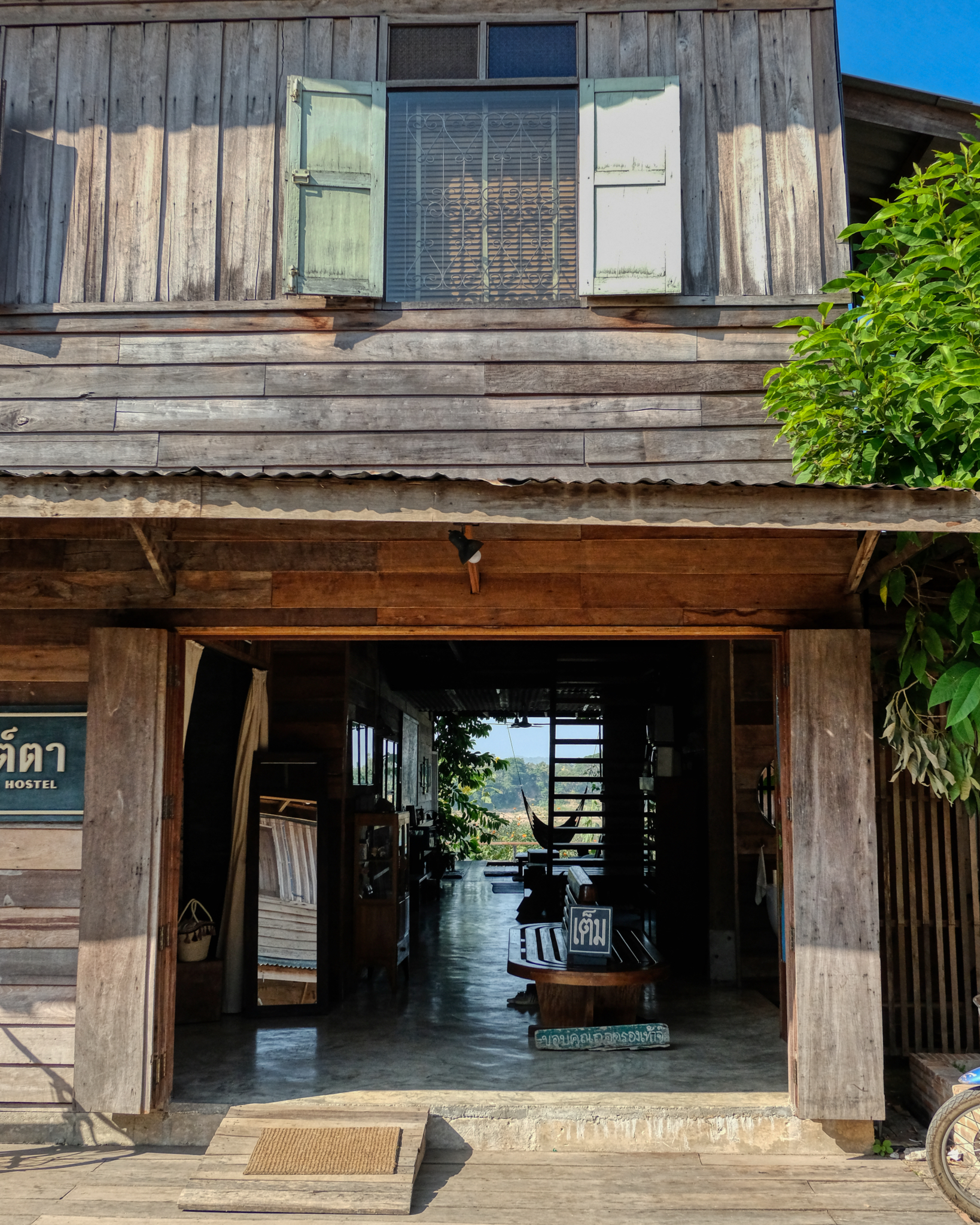 With both front and rear doors open, you can look right through this hostel to the river behind it.
With both front and rear doors open, you can look right through this hostel to the river behind it.
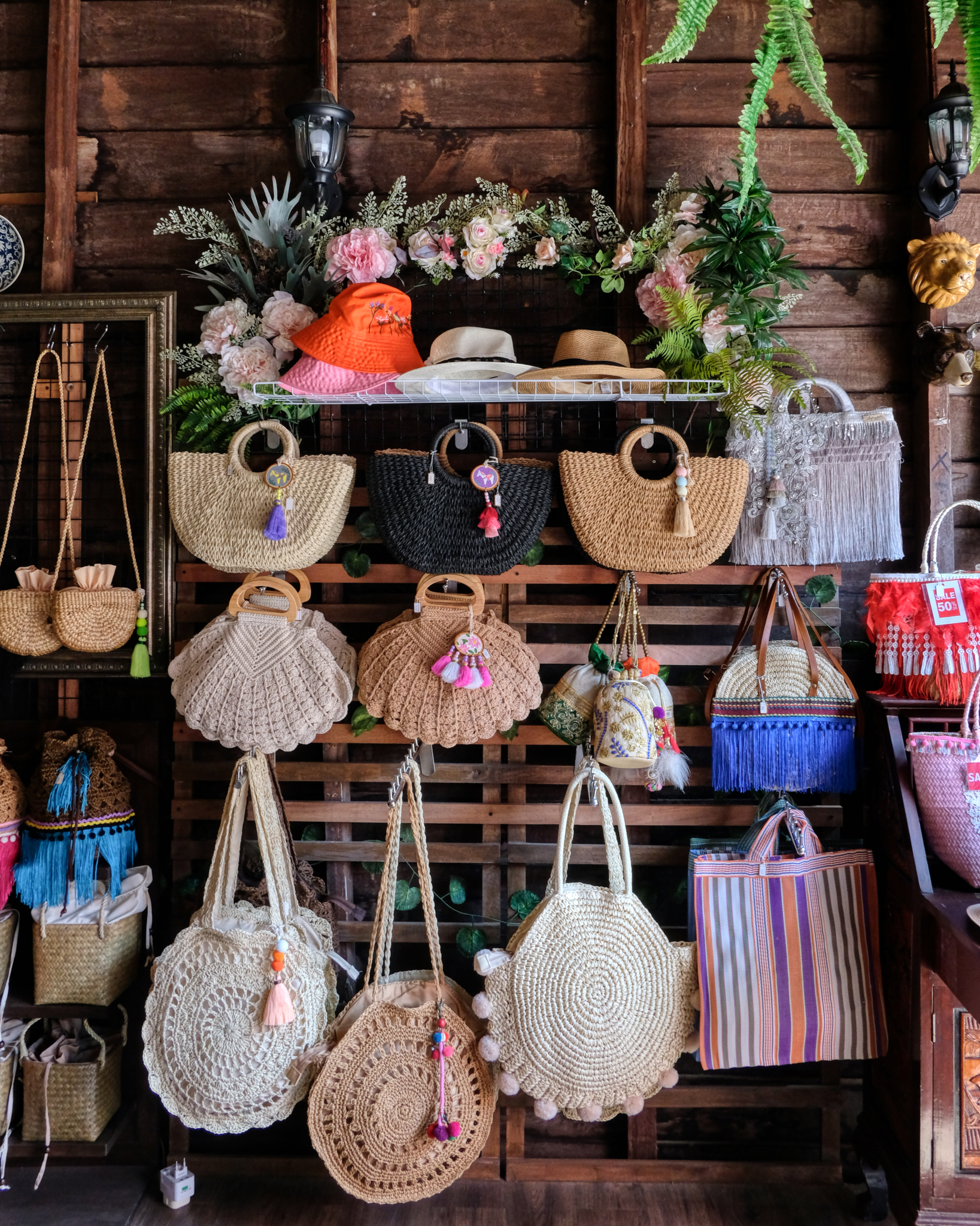 The many shops lining the walking street had ample supplies of local handicrafts to meet the tourist demand.
The many shops lining the walking street had ample supplies of local handicrafts to meet the tourist demand.
 A guest house with street side 'beer chairs' . . . perfect for people watching. I couldn't help but notice the Brew Dog Punk IPA bottle . . . from Aberdeen, Scotland, my former residence.
A guest house with street side 'beer chairs' . . . perfect for people watching. I couldn't help but notice the Brew Dog Punk IPA bottle . . . from Aberdeen, Scotland, my former residence.
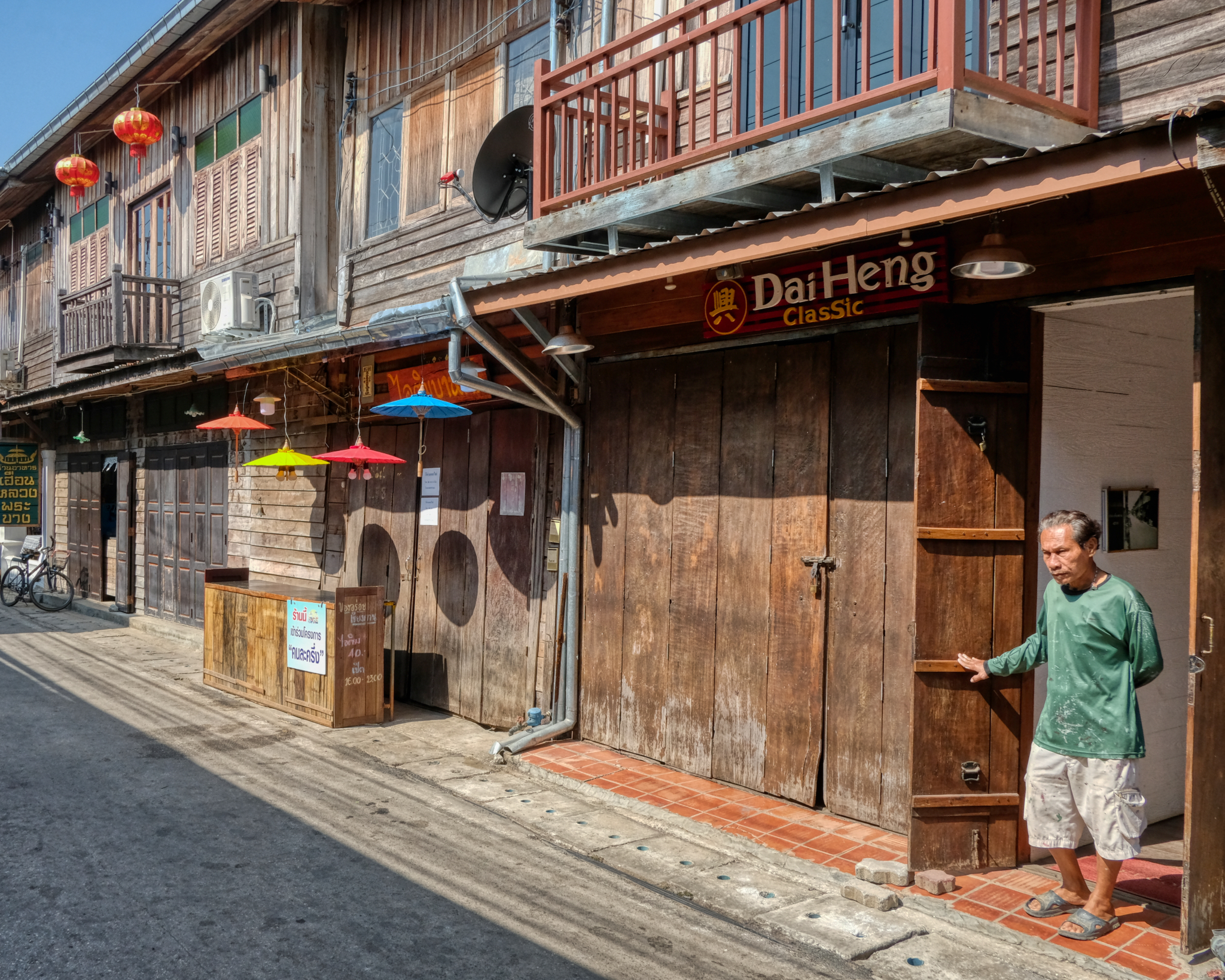 Such an interesting and photogenic little town.
Such an interesting and photogenic little town.
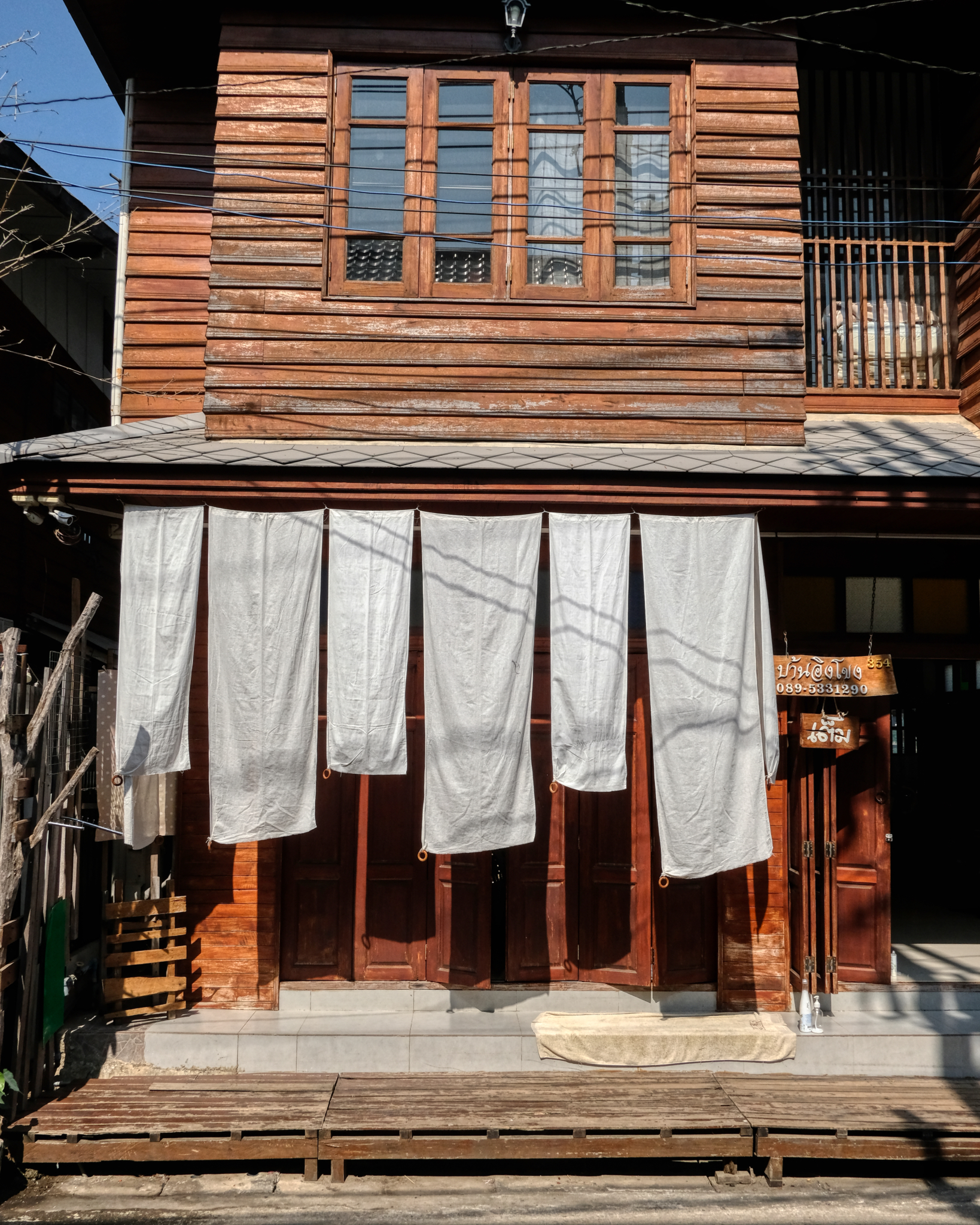 Some shops hung fabric against the harsh afternoon sun.
Some shops hung fabric against the harsh afternoon sun.
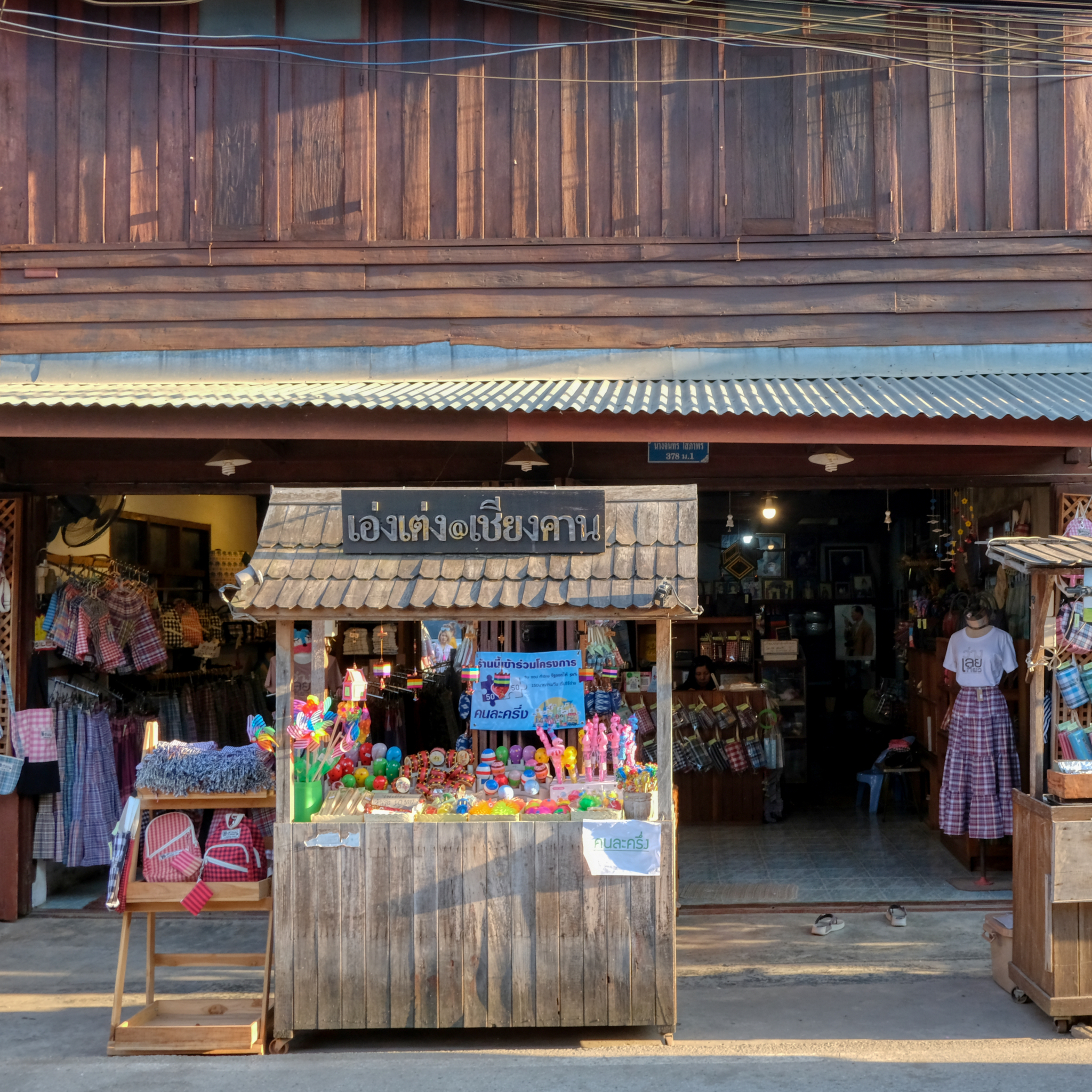 Each shop-front seems to have its own personality, and the photographs are like portraits.
Each shop-front seems to have its own personality, and the photographs are like portraits.
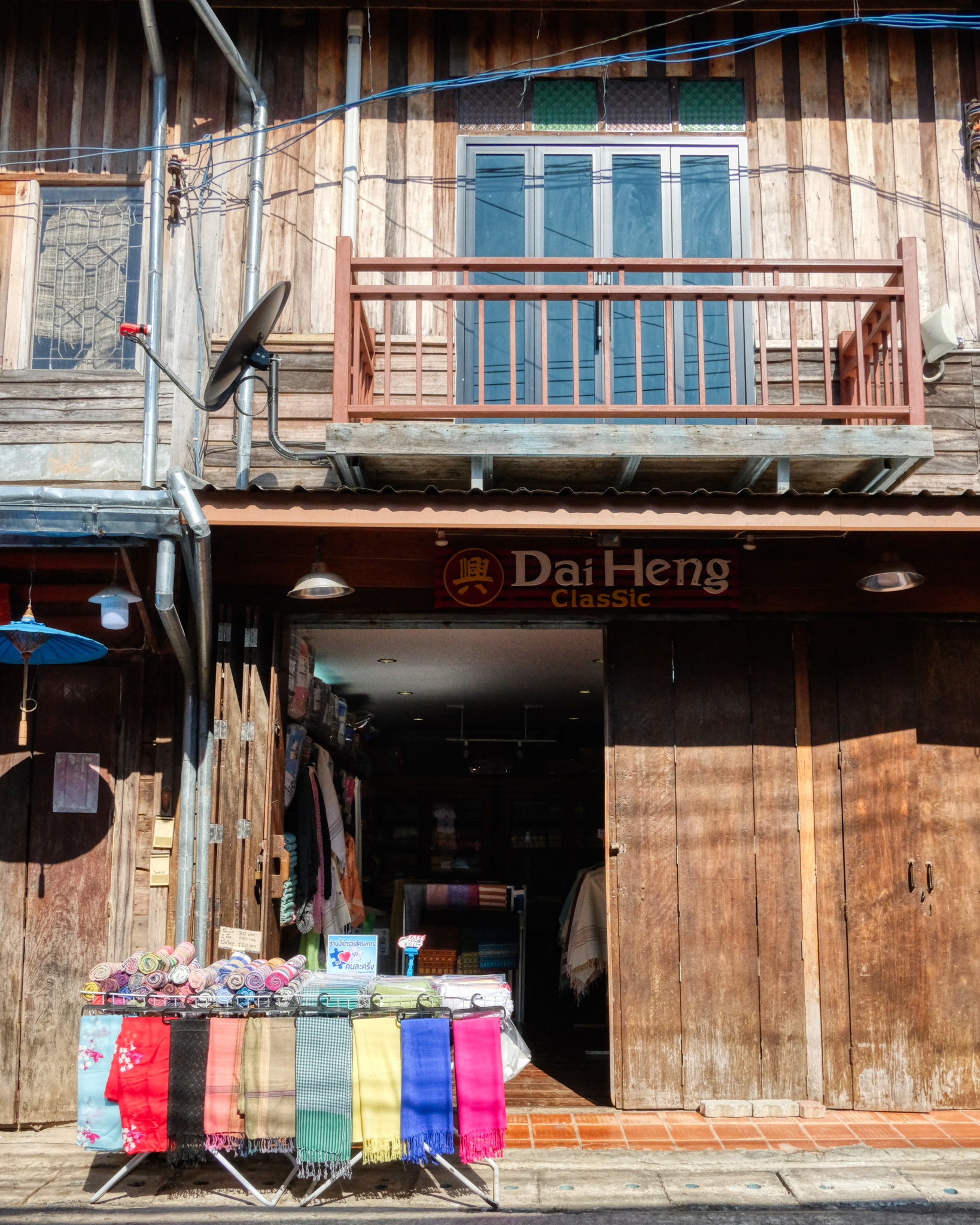 Beautiful local, high quality traditional textiles.
Beautiful local, high quality traditional textiles.
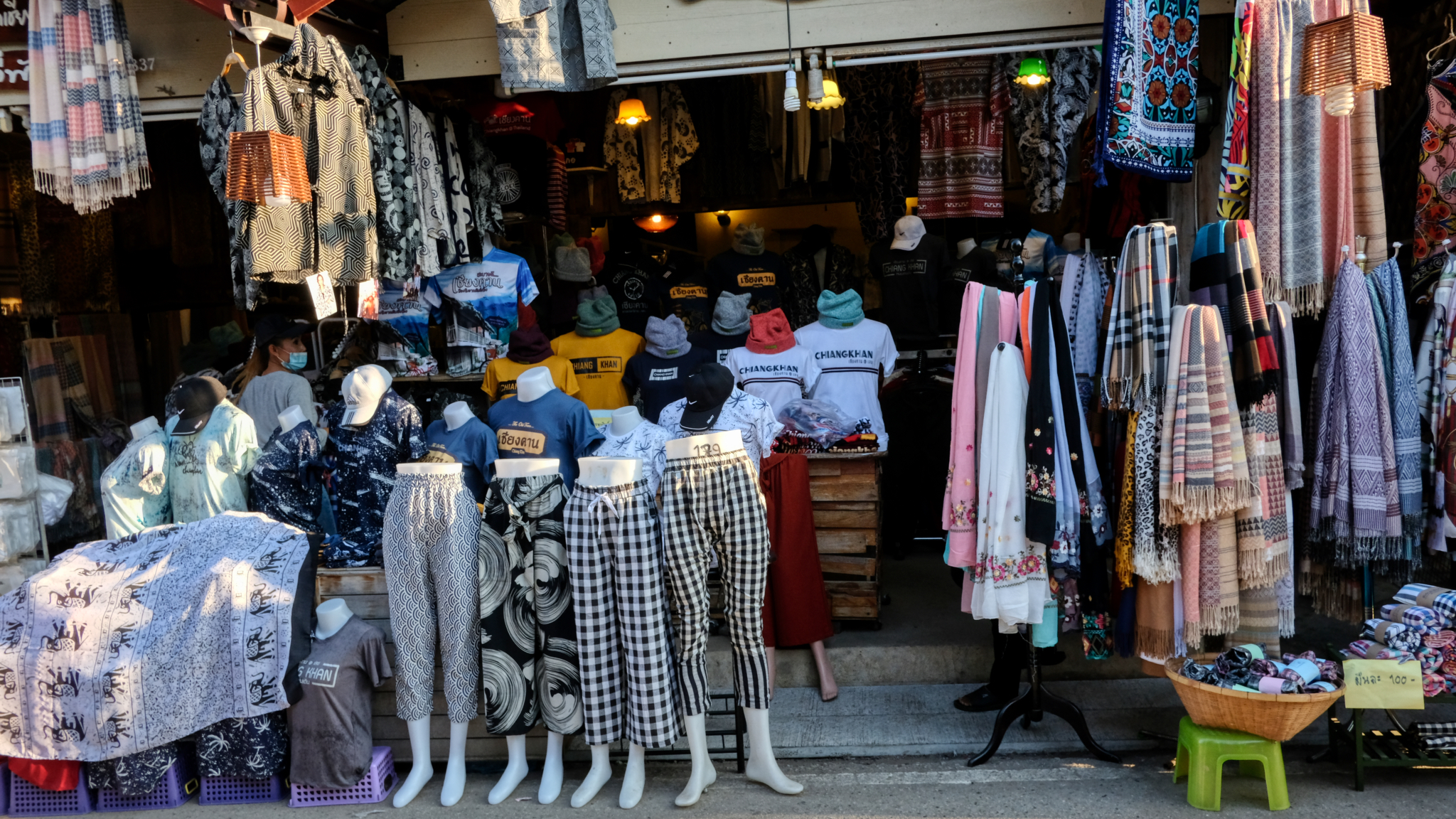 There were also many shops selling the usual array of souvenir 'touristwear.'
There were also many shops selling the usual array of souvenir 'touristwear.'
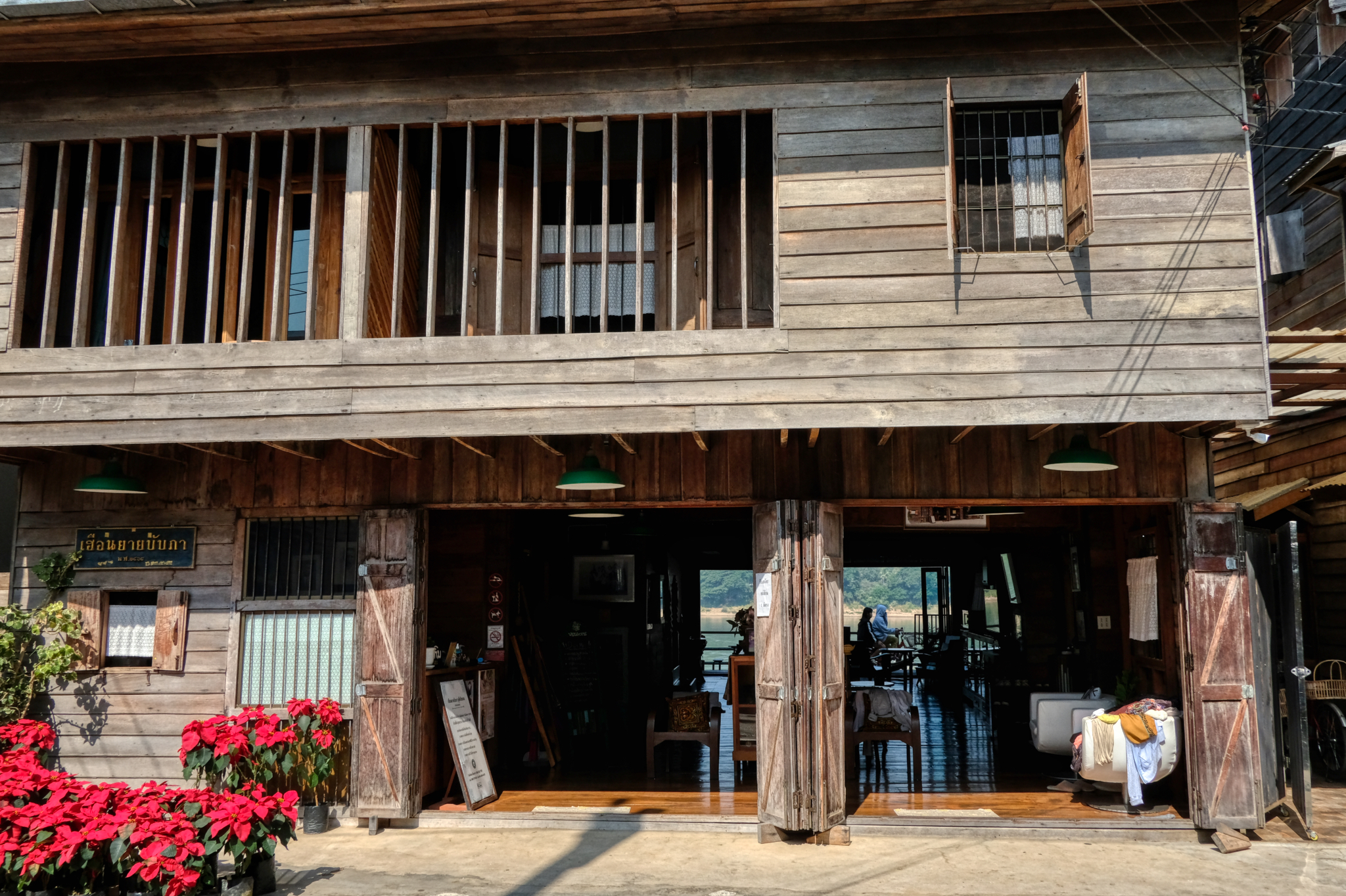 There is no shortage of restaurants and places to buy good, expensive coffee.
There is no shortage of restaurants and places to buy good, expensive coffee.
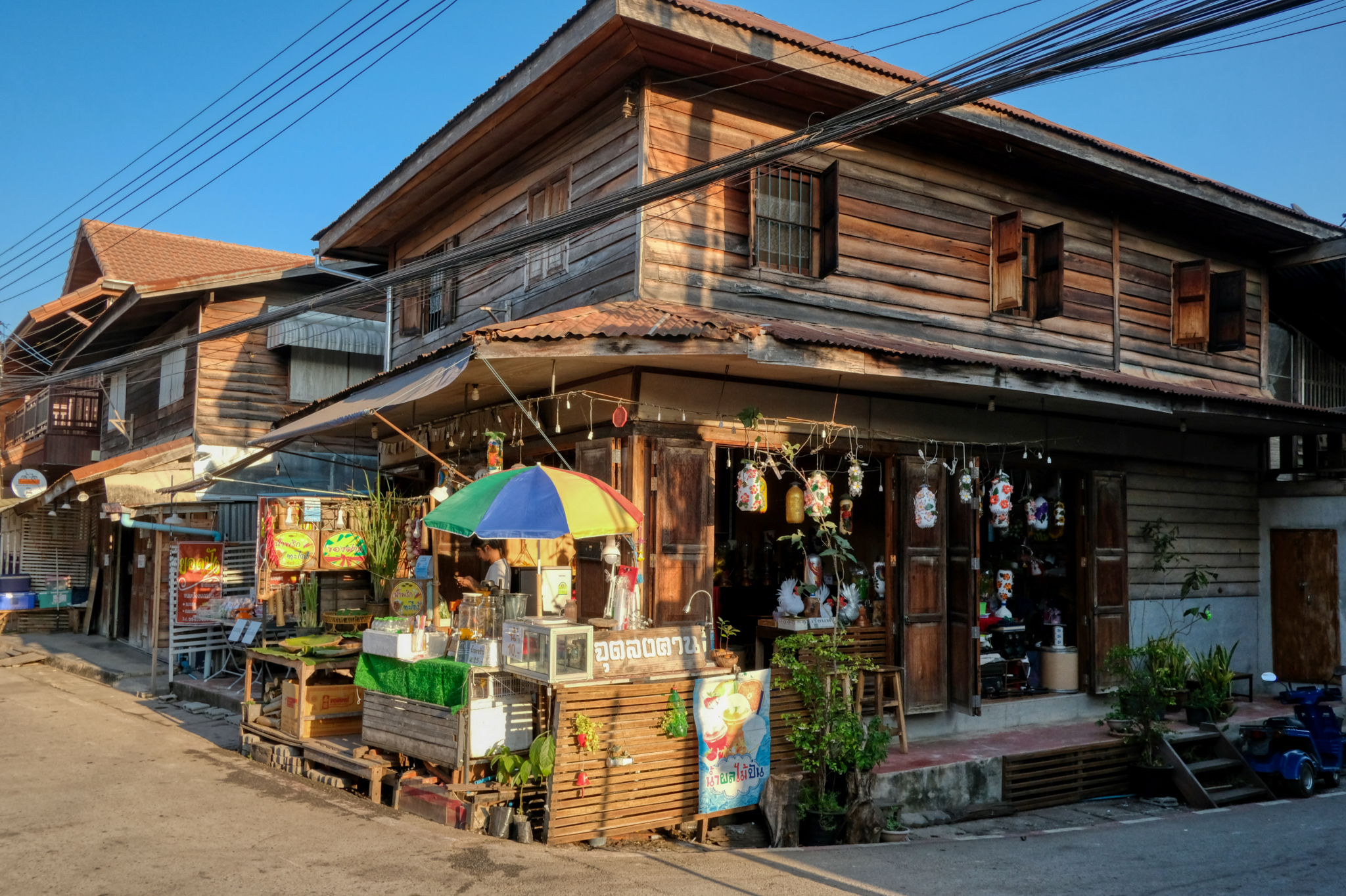 I love photographing these old wooden shops . . . anywhere in the world . . . but Chiang Khan had hundreds of them, and all with amazing shapes, features, colors, and textures.
I love photographing these old wooden shops . . . anywhere in the world . . . but Chiang Khan had hundreds of them, and all with amazing shapes, features, colors, and textures.
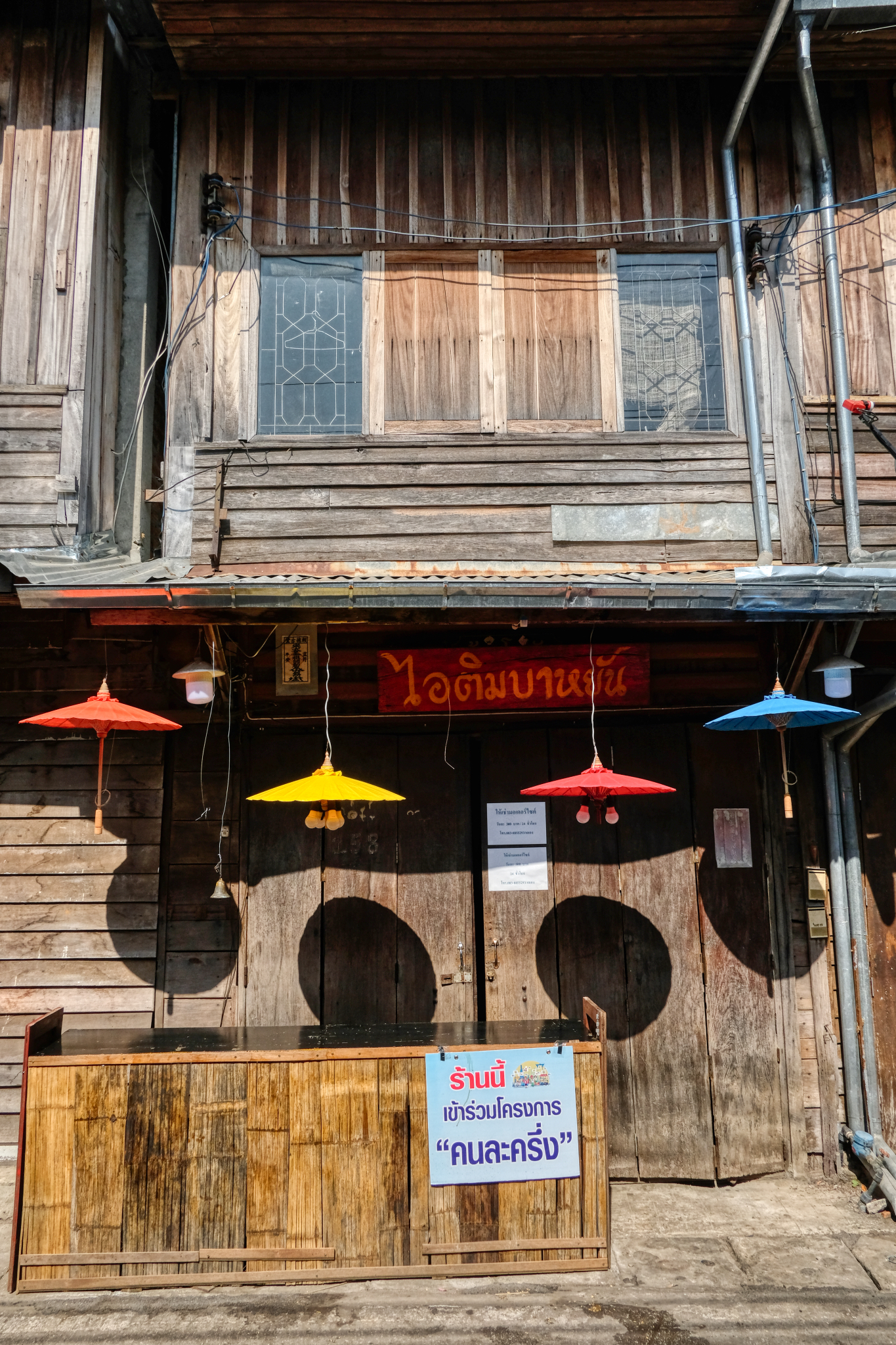 A beautiful shop-front portrait. The harsh afternoon sunlight actually enhances this photo by accentuating the wood grain and colors.
A beautiful shop-front portrait. The harsh afternoon sunlight actually enhances this photo by accentuating the wood grain and colors.
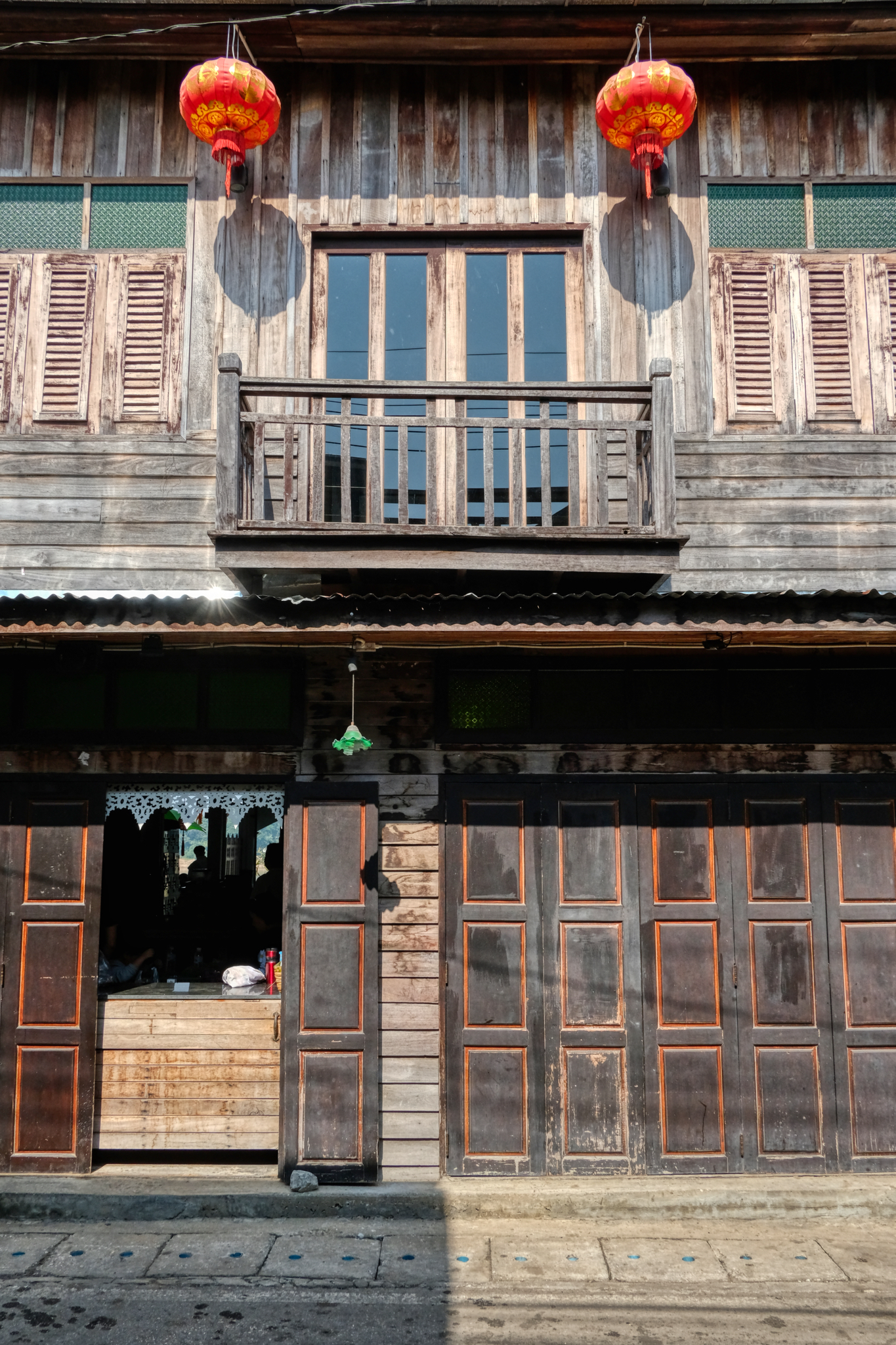 Another fabulous paneled storefront with Chinese lanterns. Lovely.
Another fabulous paneled storefront with Chinese lanterns. Lovely.
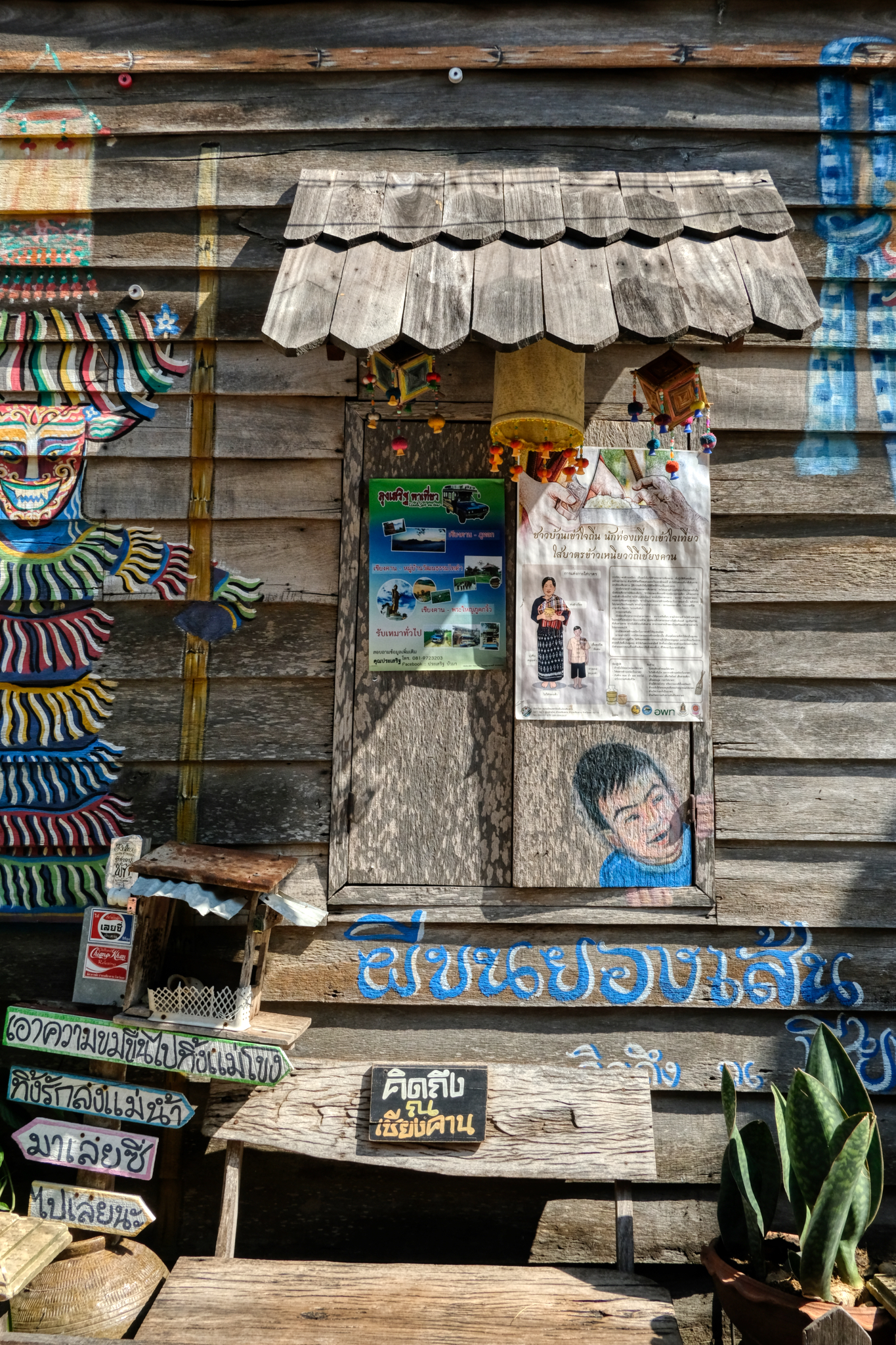 Just so much to see, notice, and photograph in this sweet little riverside town.
Just so much to see, notice, and photograph in this sweet little riverside town.
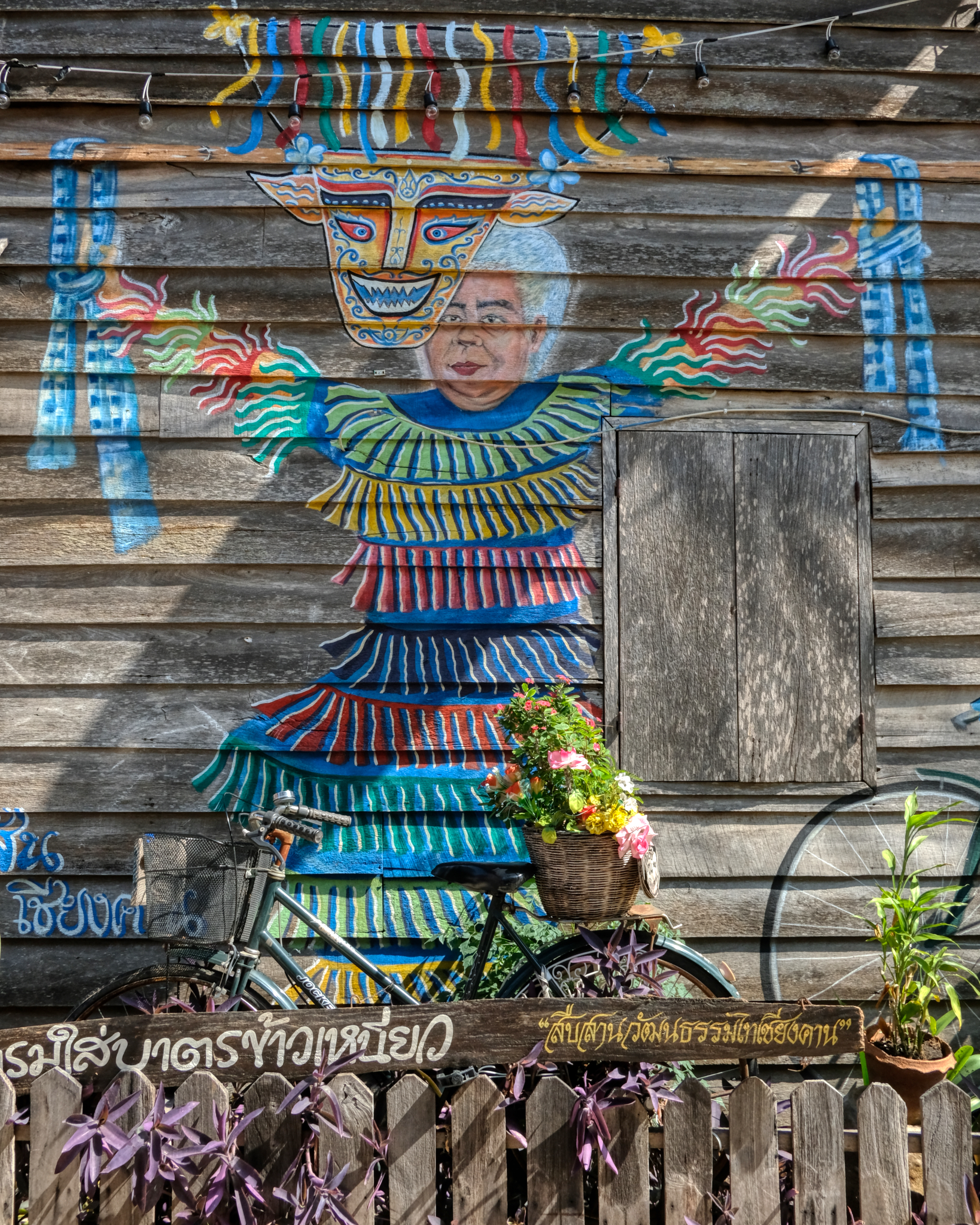 There was also some very nice chalk public art here and there.
There was also some very nice chalk public art here and there.
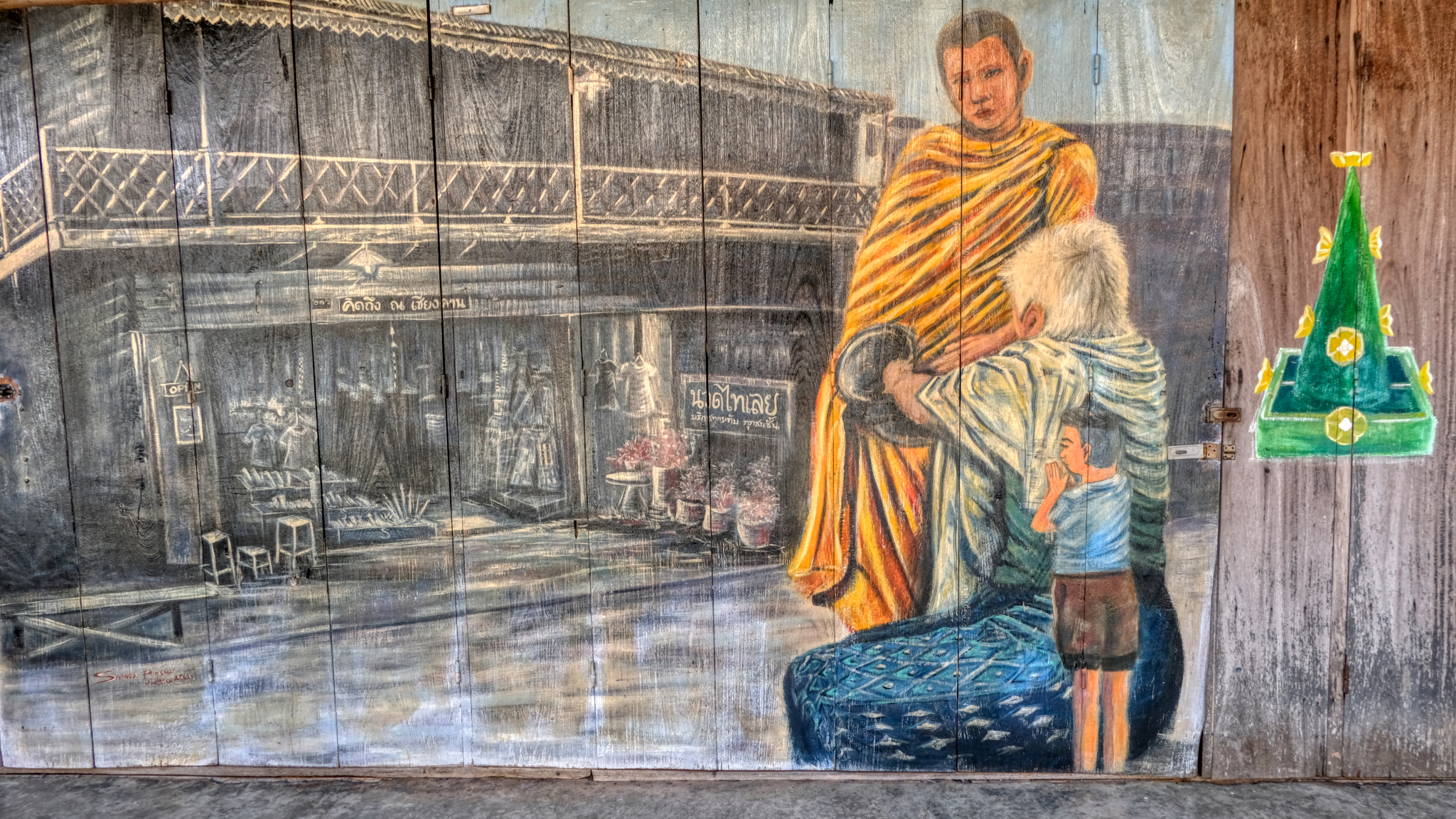 Sweet chalk street art.
Sweet chalk street art.
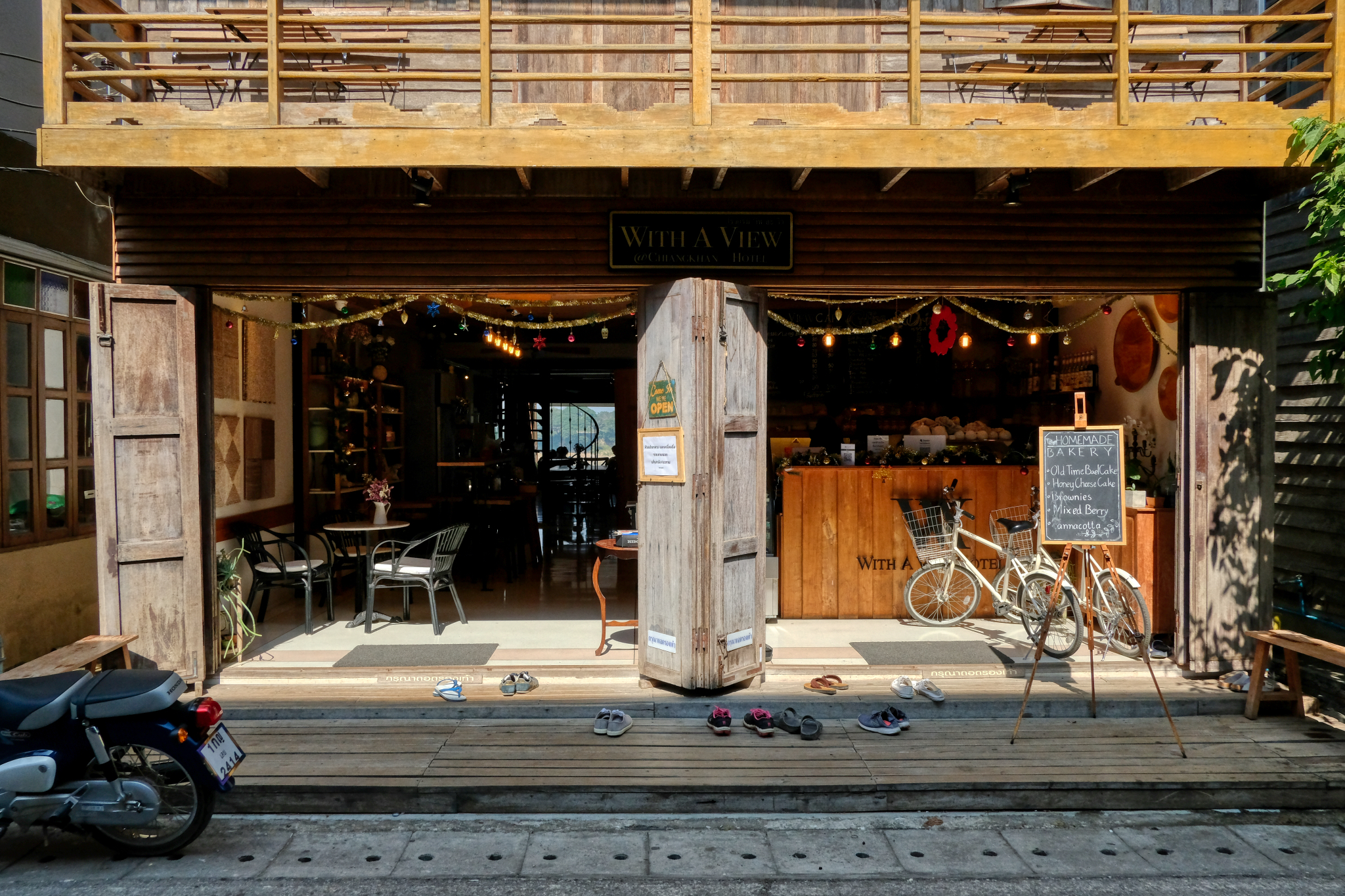 A very inviting bakery . . . delicious too!
A very inviting bakery . . . delicious too!
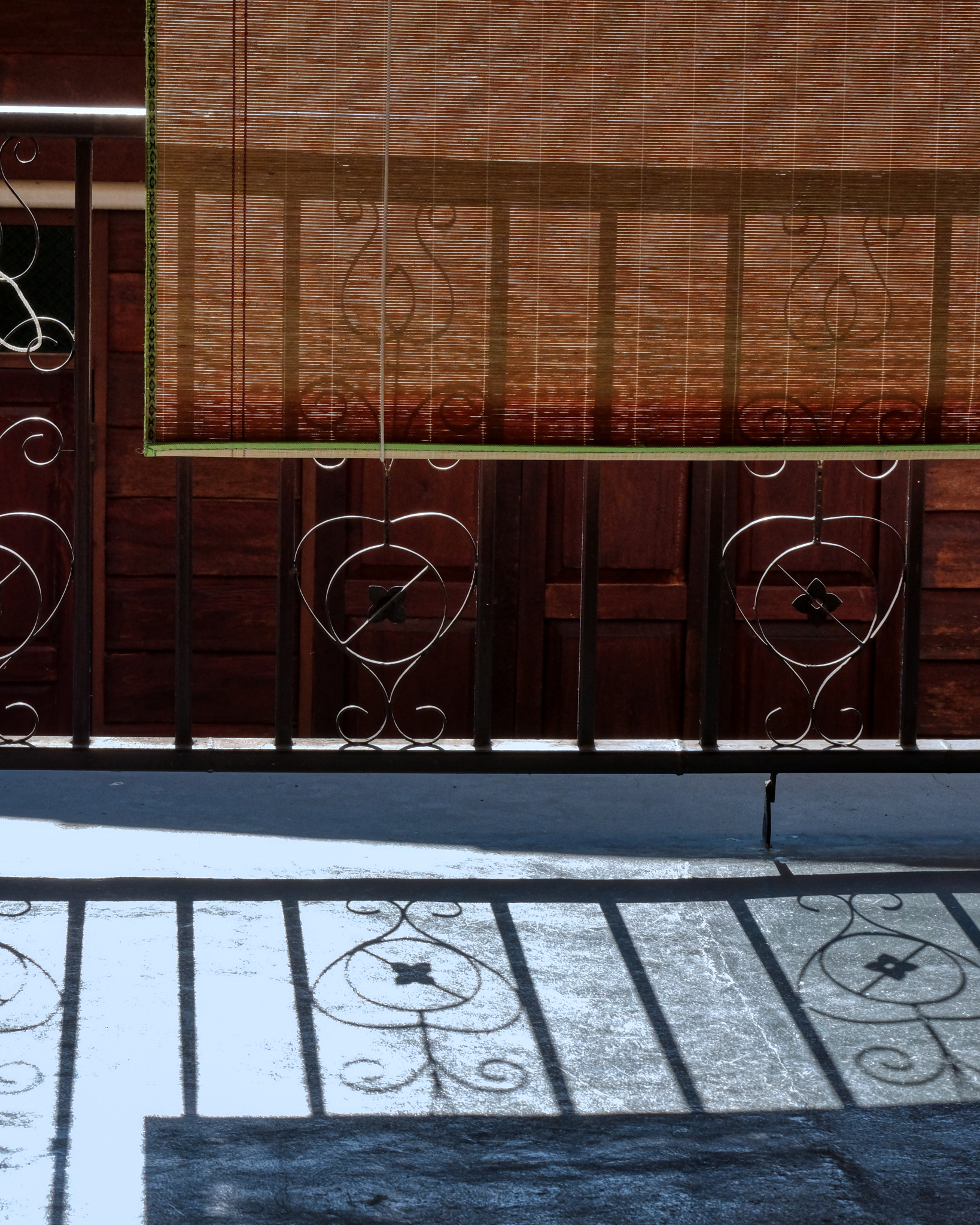 Thai aesthetics are always fascinating and gorgeous. It's all in the details. Here, a detail of the interior of our guesthouse.
Thai aesthetics are always fascinating and gorgeous. It's all in the details. Here, a detail of the interior of our guesthouse.
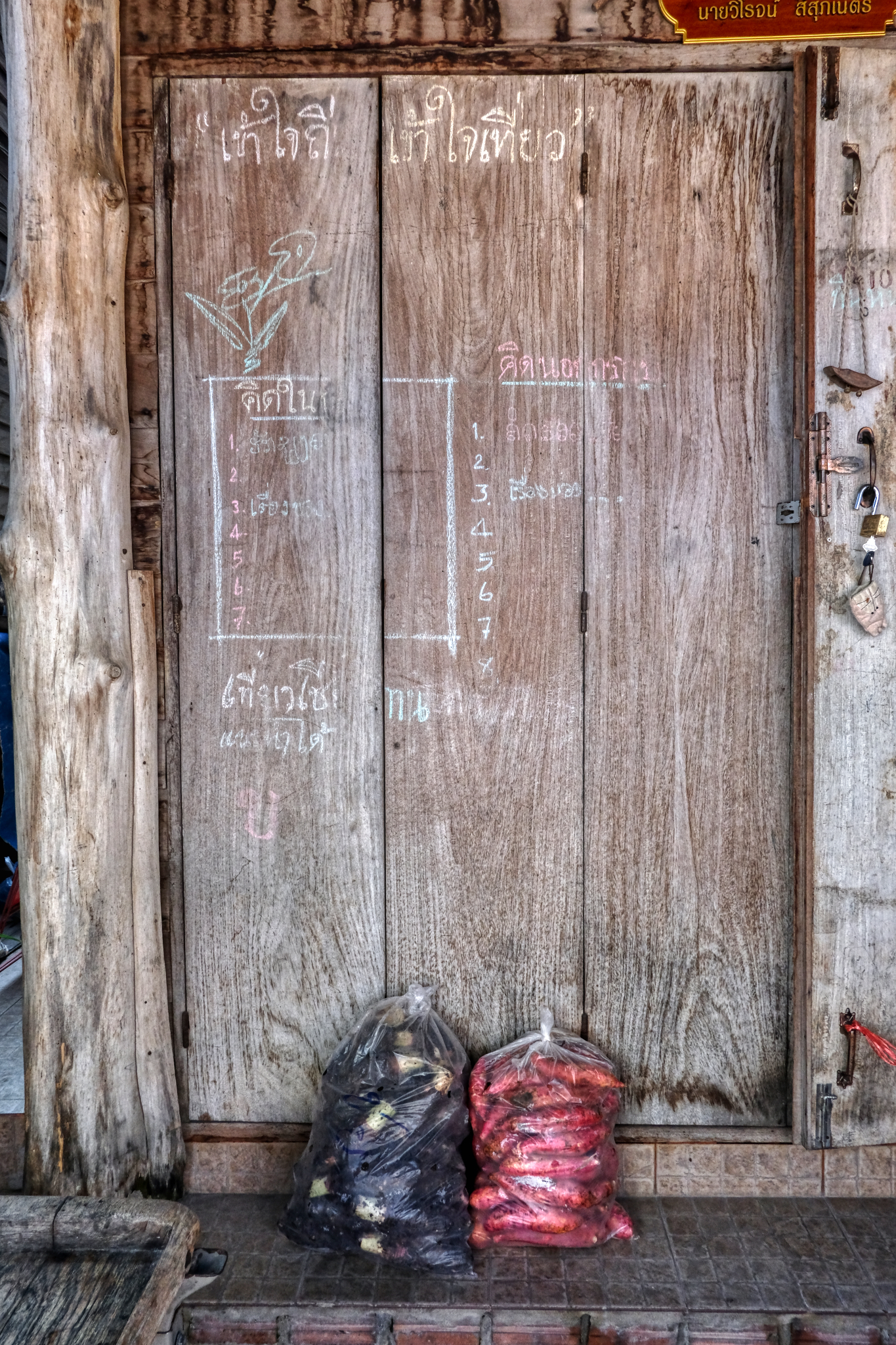 When walking around such these richly aesthetic places with a camera in hand, I am prone to take these kinds of "still life" photographs: pleasing arrangements of objects in fascinating light.
When walking around such these richly aesthetic places with a camera in hand, I am prone to take these kinds of "still life" photographs: pleasing arrangements of objects in fascinating light.
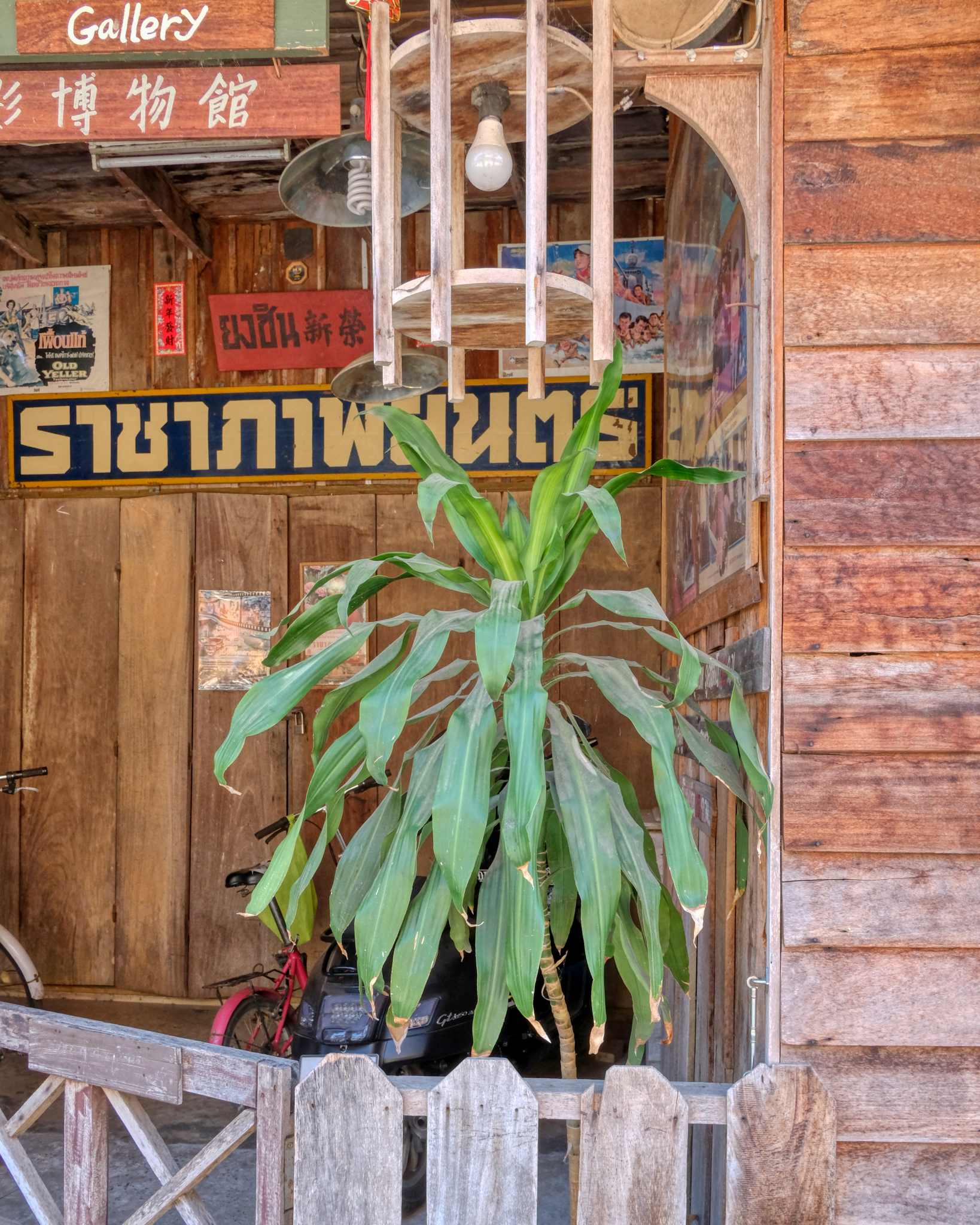 Another "still life" of an old art gallery.
Another "still life" of an old art gallery.
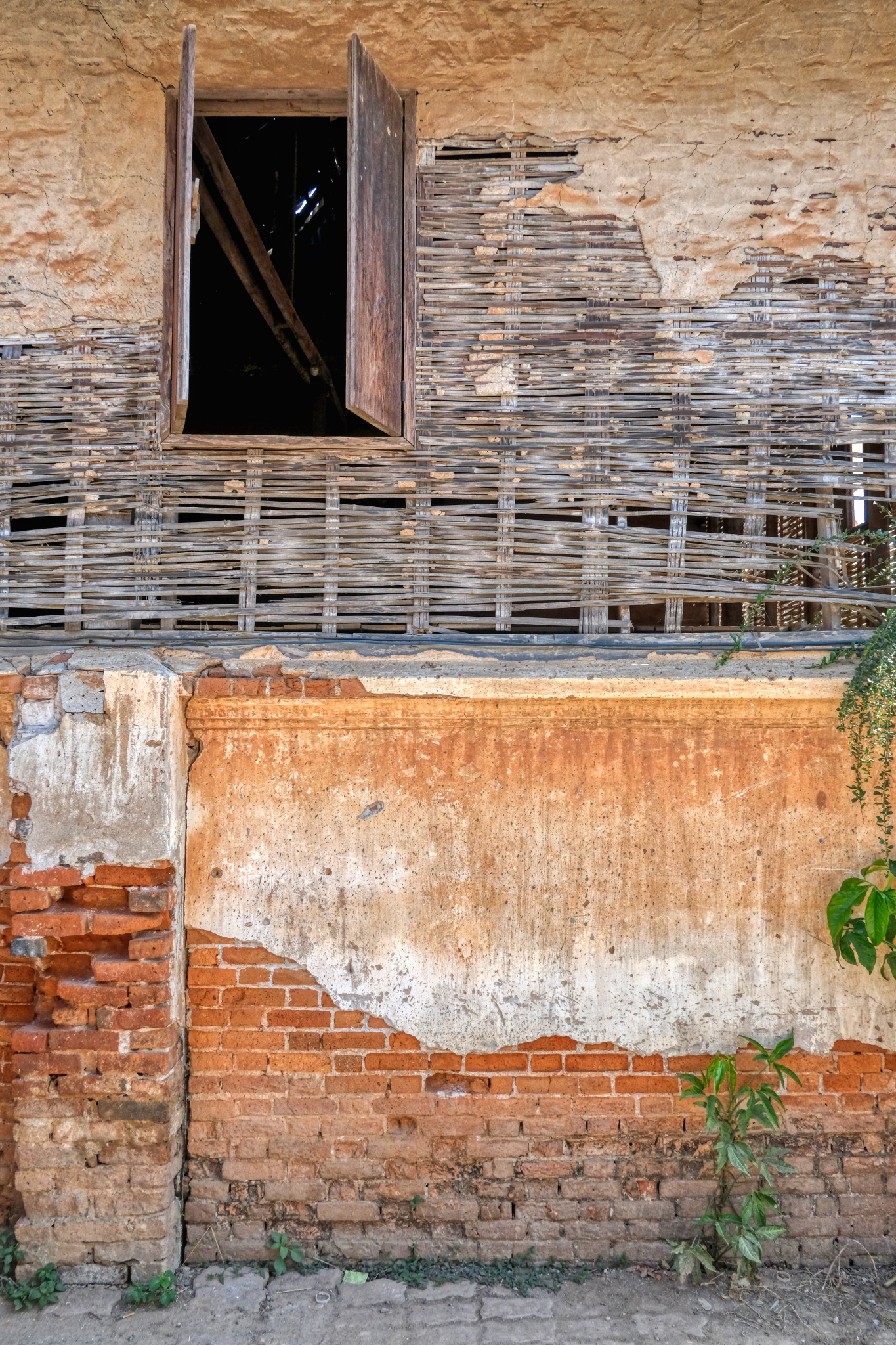 A very old wall revealing ancient building techniques.
A very old wall revealing ancient building techniques.
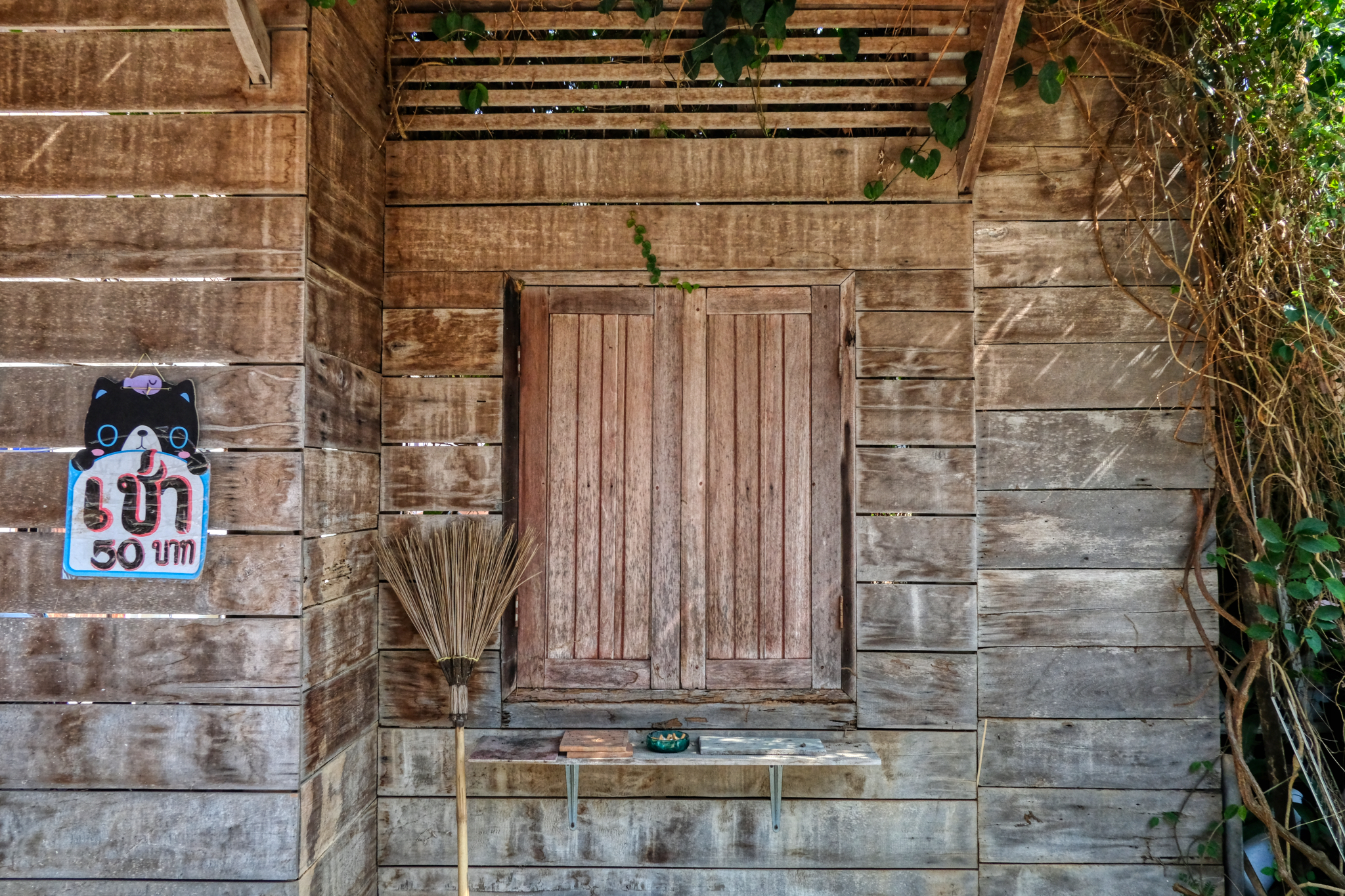 Wooden wall with broom and ash tray.
Wooden wall with broom and ash tray.
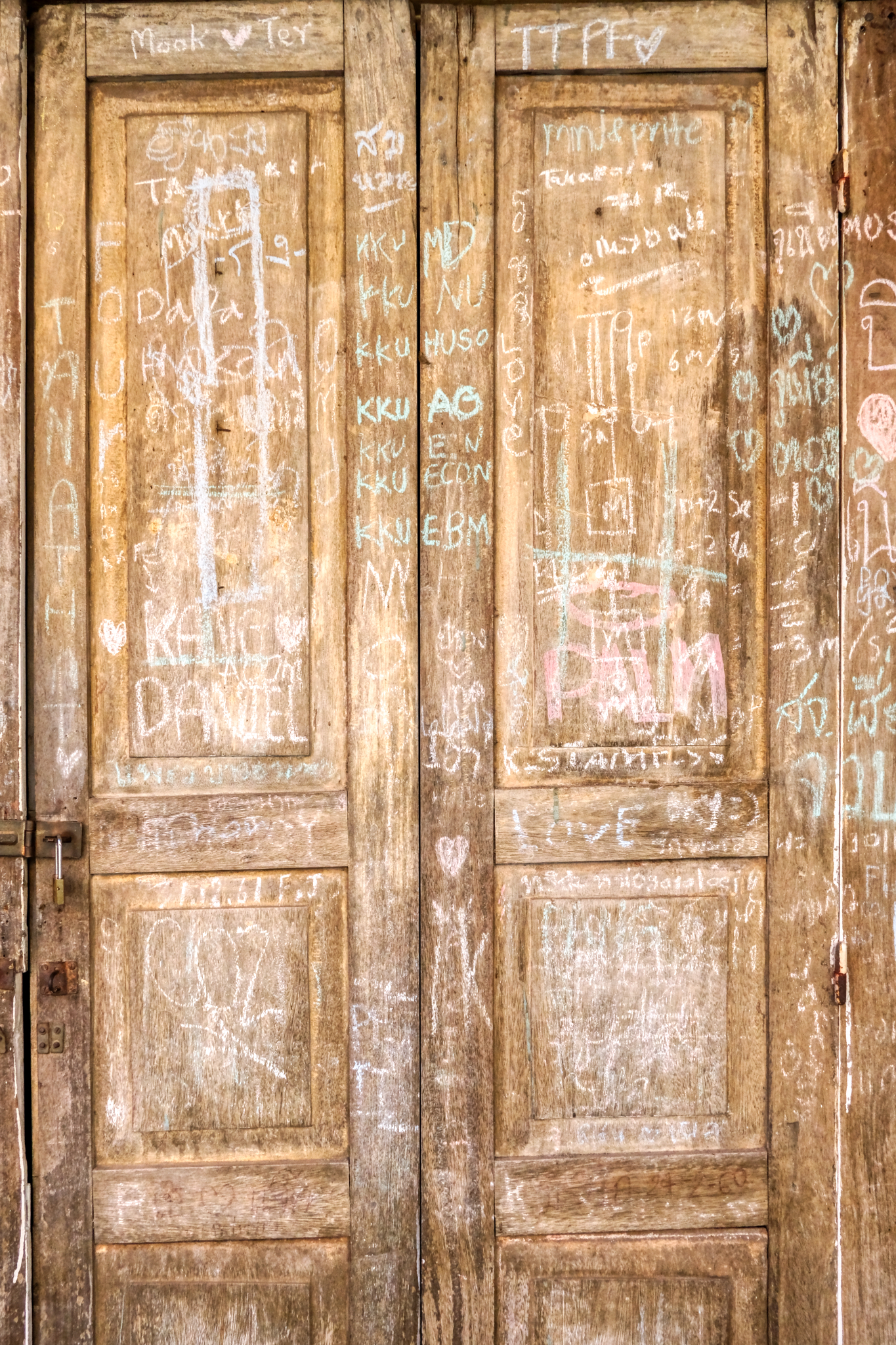 Chalk graffiti on old panel shop doors . . . there is a story here.
Chalk graffiti on old panel shop doors . . . there is a story here.
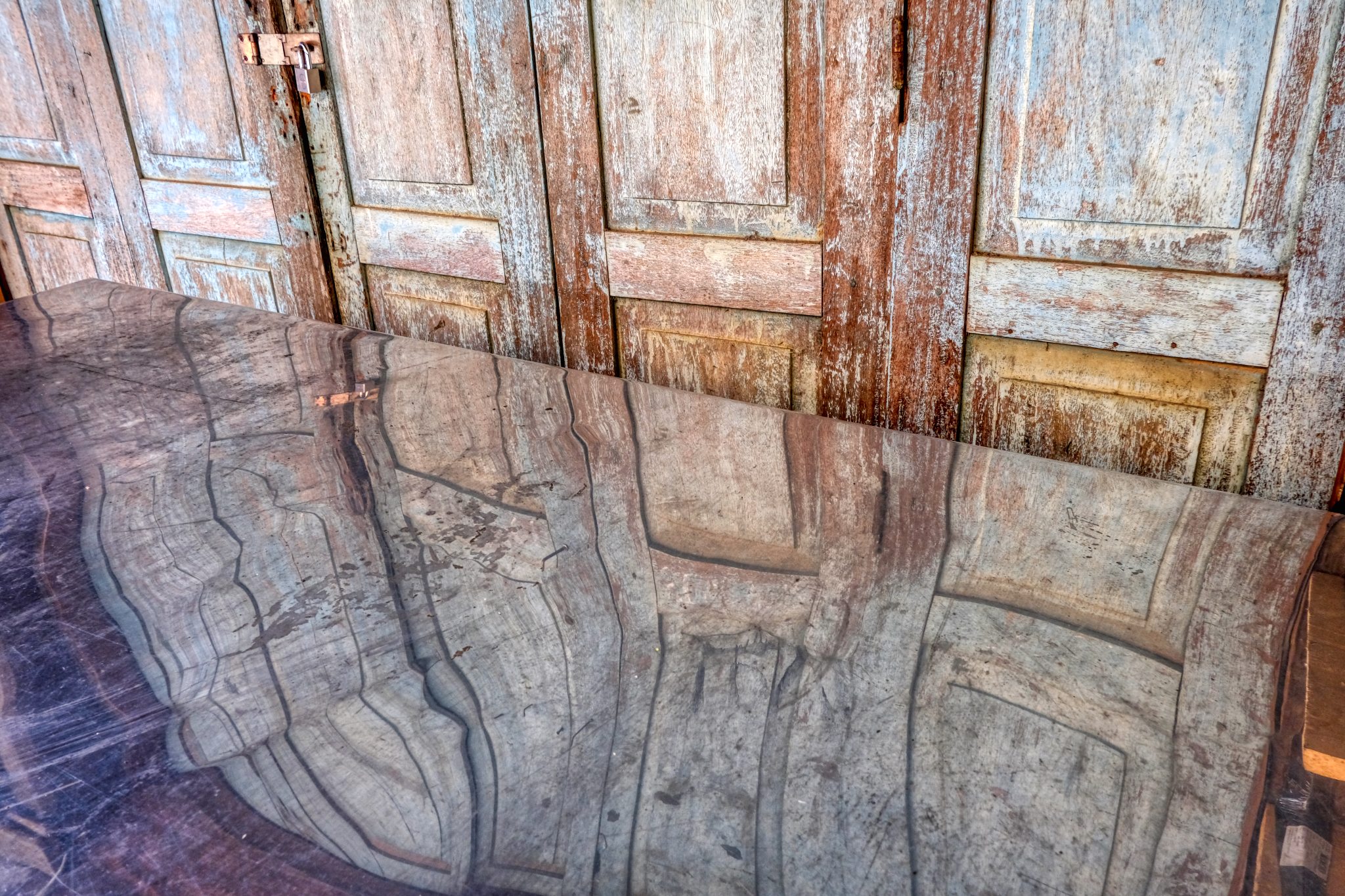 Old panel shop doors reflected in a stainless steel table. Nice. These "still life" photo opportunities were endless in Chiang Khan.
Old panel shop doors reflected in a stainless steel table. Nice. These "still life" photo opportunities were endless in Chiang Khan.
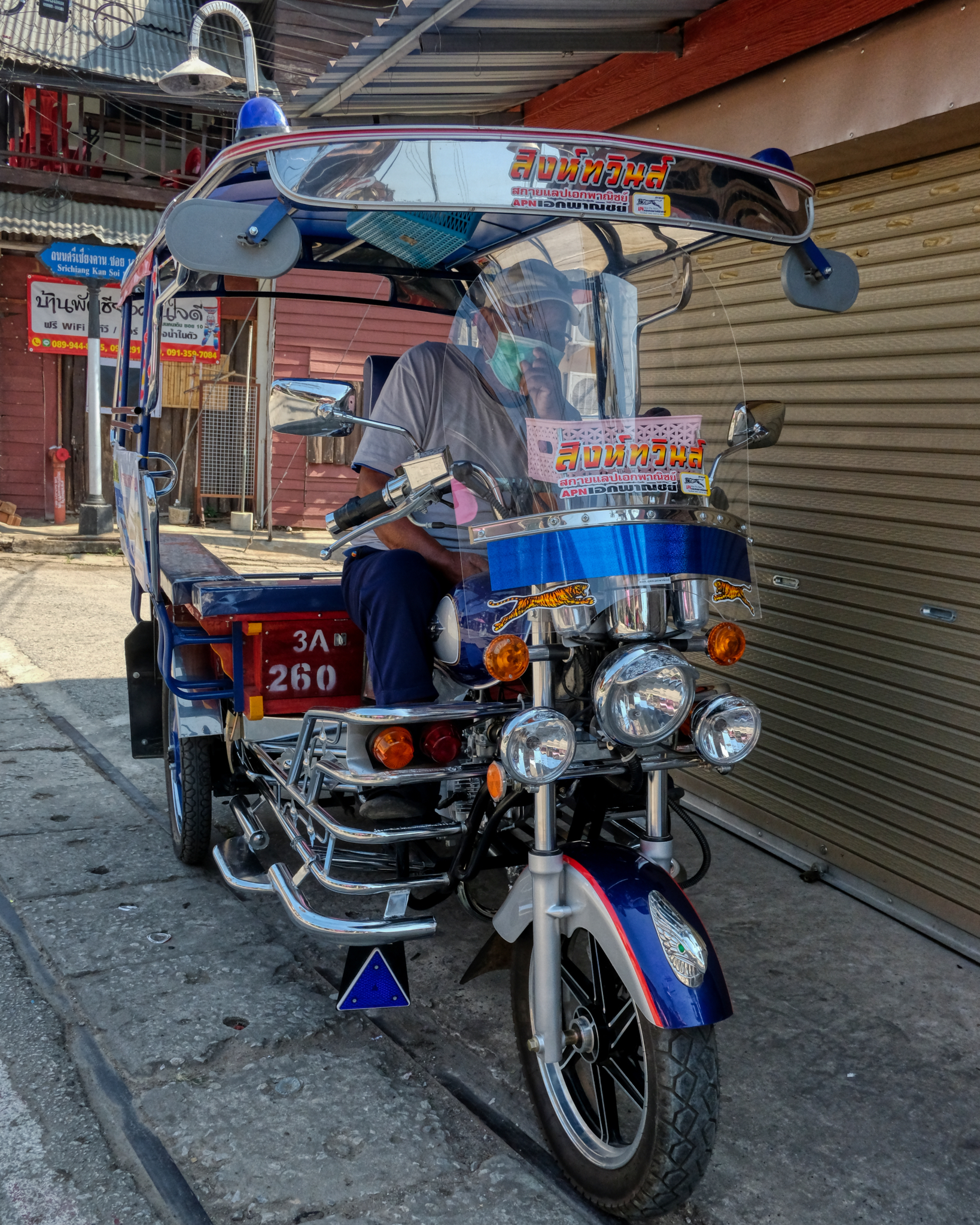 A very nice tuk-tuk, although I never saw anybody riding in one . . . everybody walked around the little town.
A very nice tuk-tuk, although I never saw anybody riding in one . . . everybody walked around the little town.
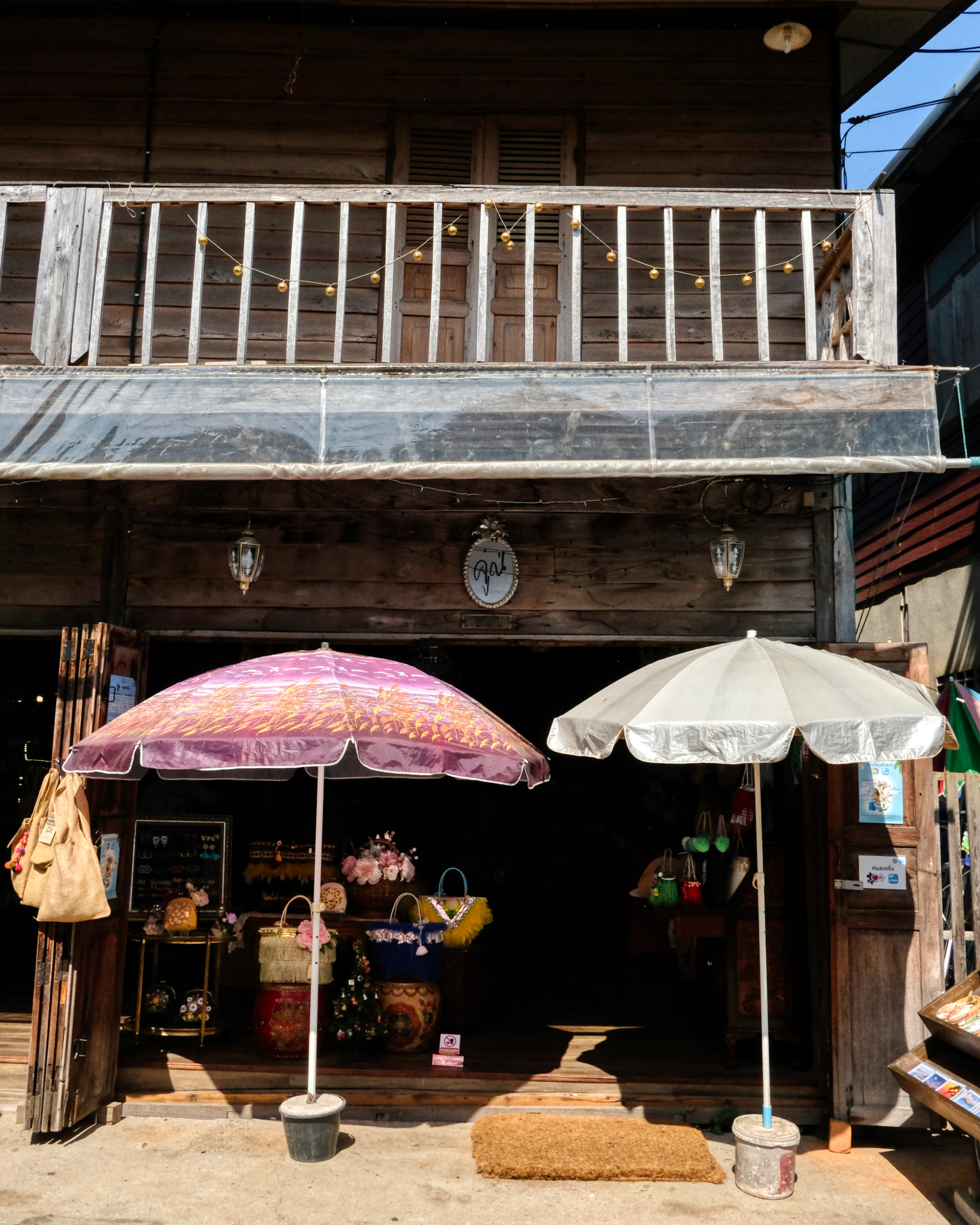 We were getting tired and sore walking around the sweet town . . . deciding what to do next . . .
We were getting tired and sore walking around the sweet town . . . deciding what to do next . . .
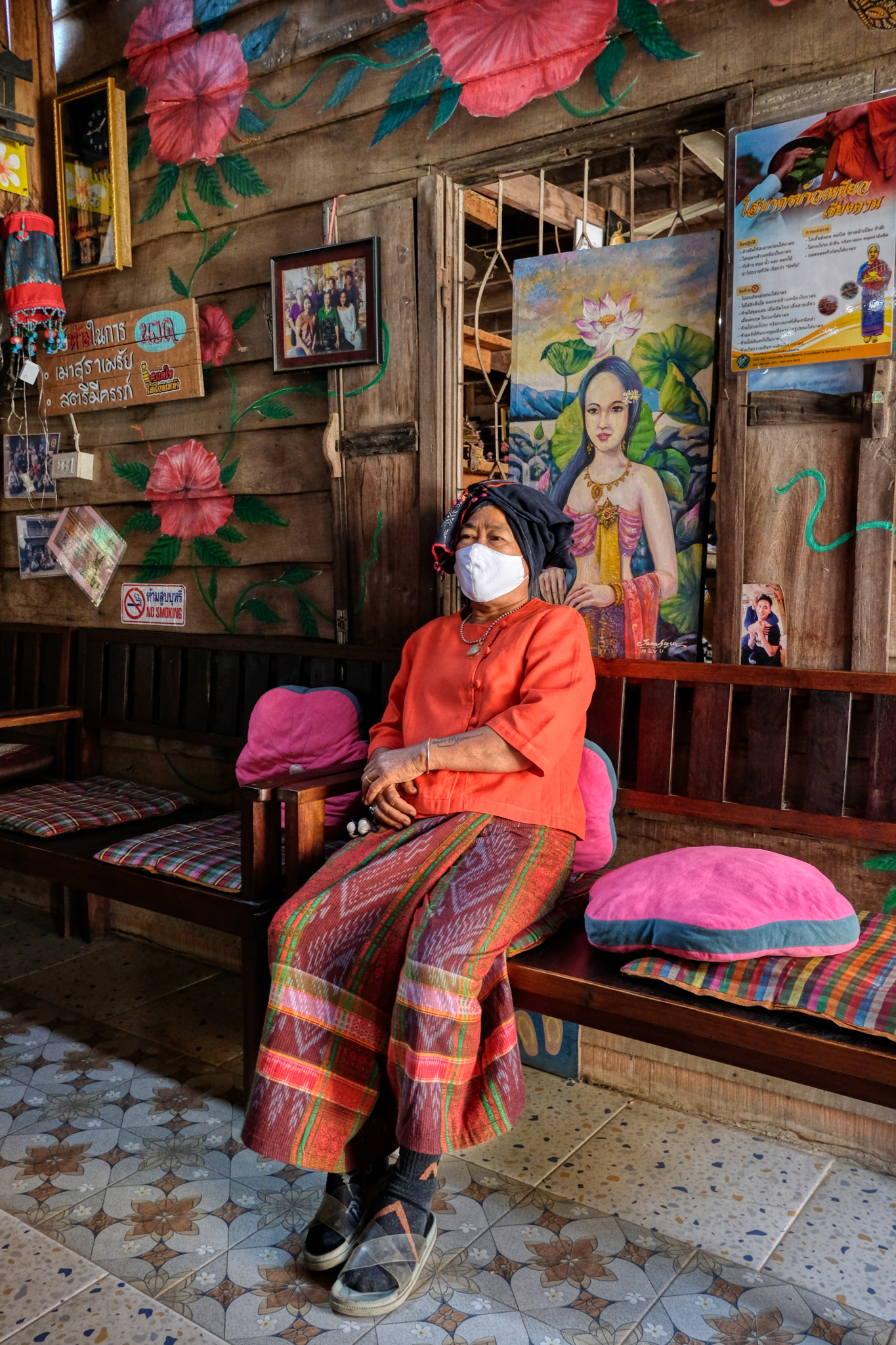 Massage! That's what's next!! The massage shop owner was very kind.
Massage! That's what's next!! The massage shop owner was very kind.
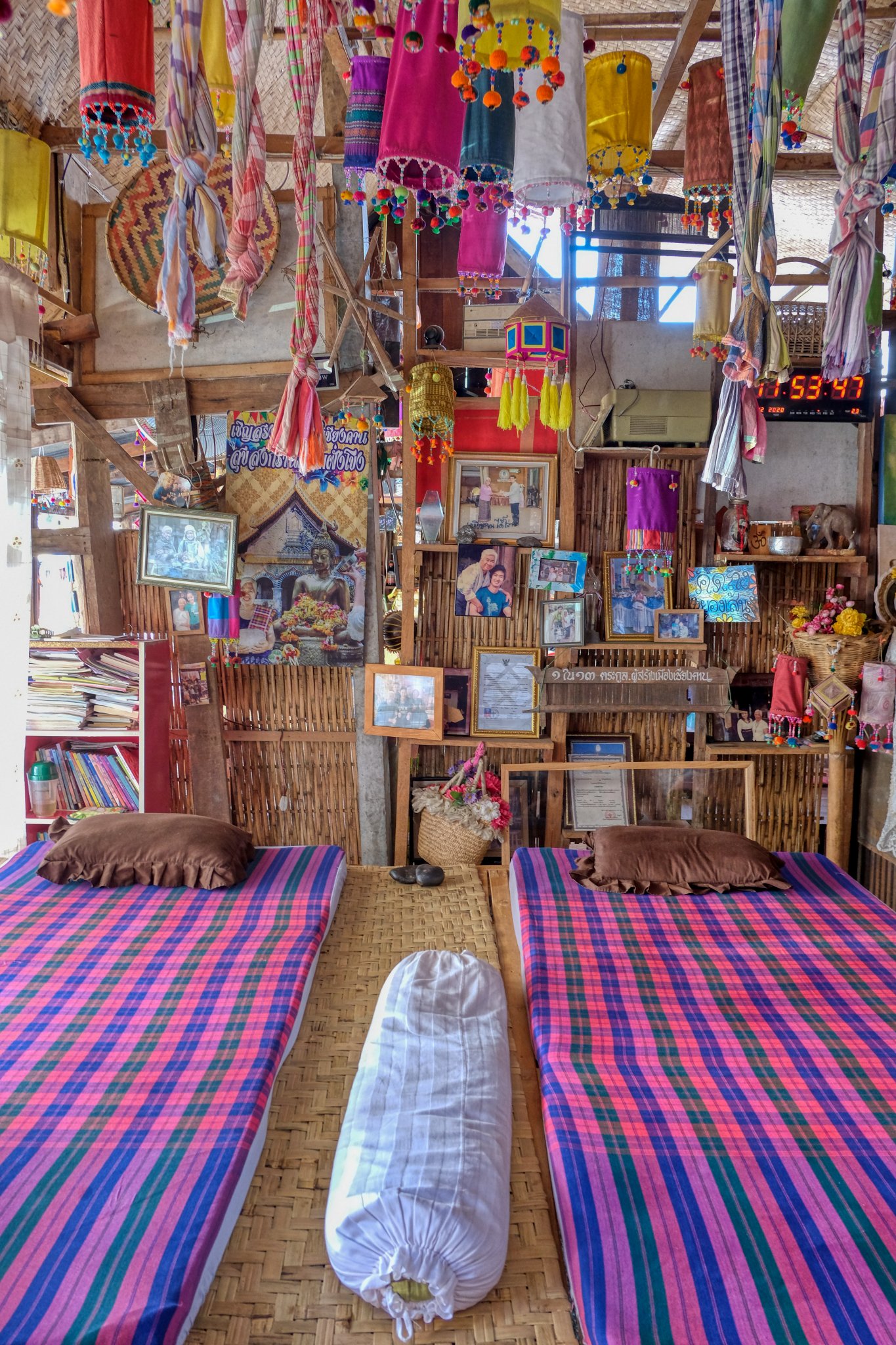 a 2 1/2 hour Thai massage will cure whatever ails you, that's for sure! This street side massage room was so beautiful. Just breathtaking!
a 2 1/2 hour Thai massage will cure whatever ails you, that's for sure! This street side massage room was so beautiful. Just breathtaking!
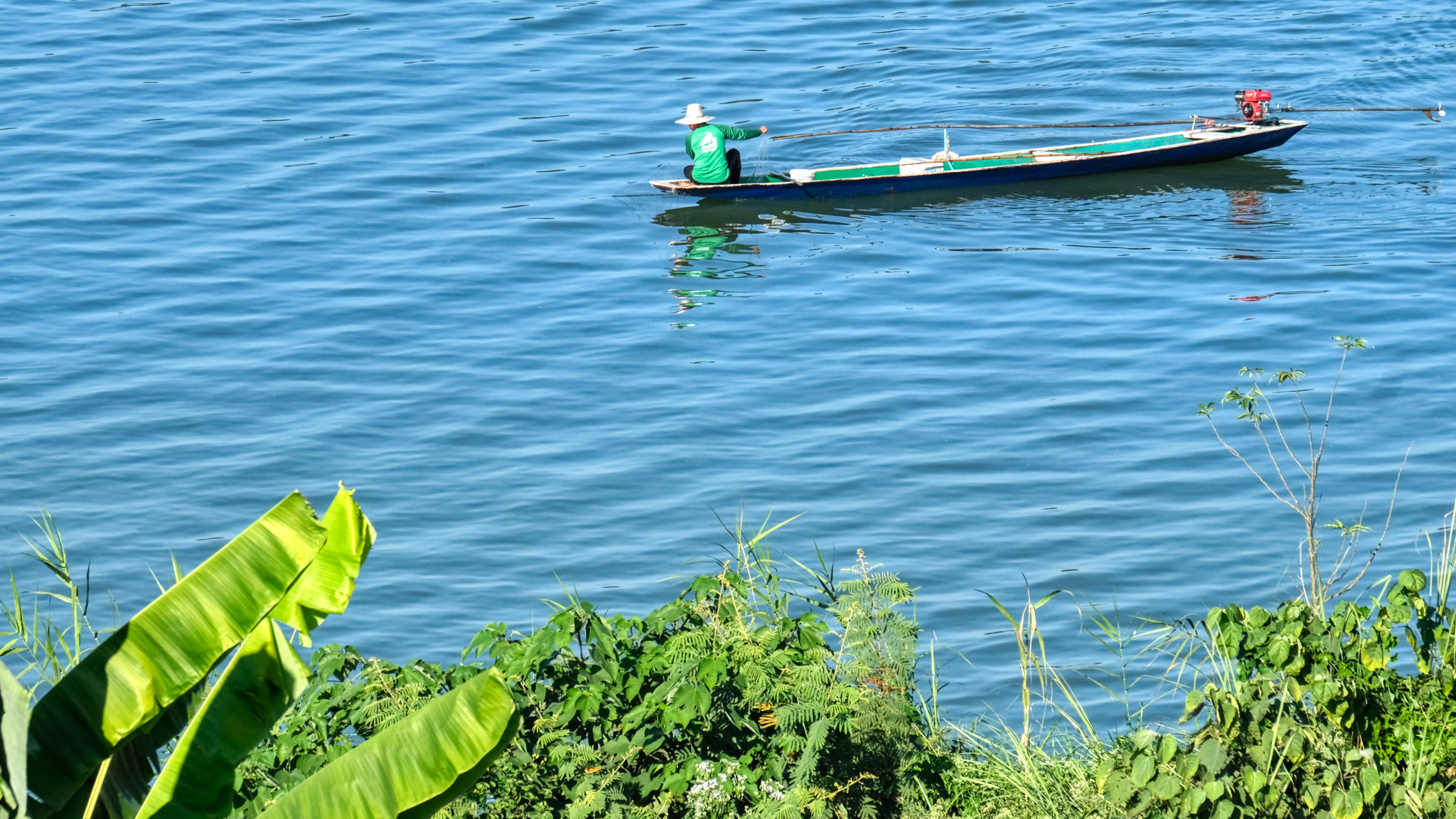 We spent part of our days walking along a path next to the Mekong River.
We spent part of our days walking along a path next to the Mekong River.
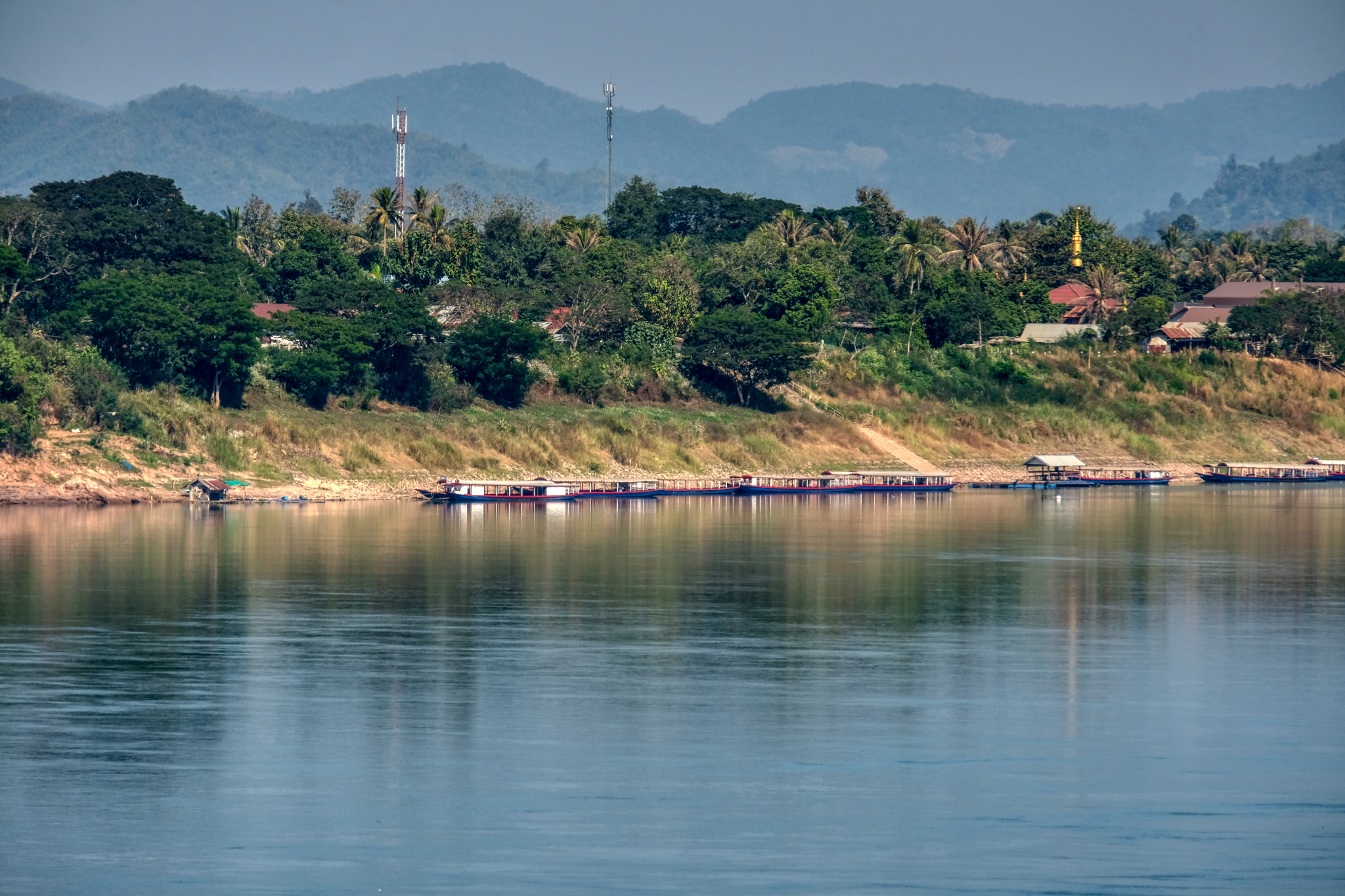 Looking across the Mekong toward the 'wild side' of Laos.
Looking across the Mekong toward the 'wild side' of Laos.
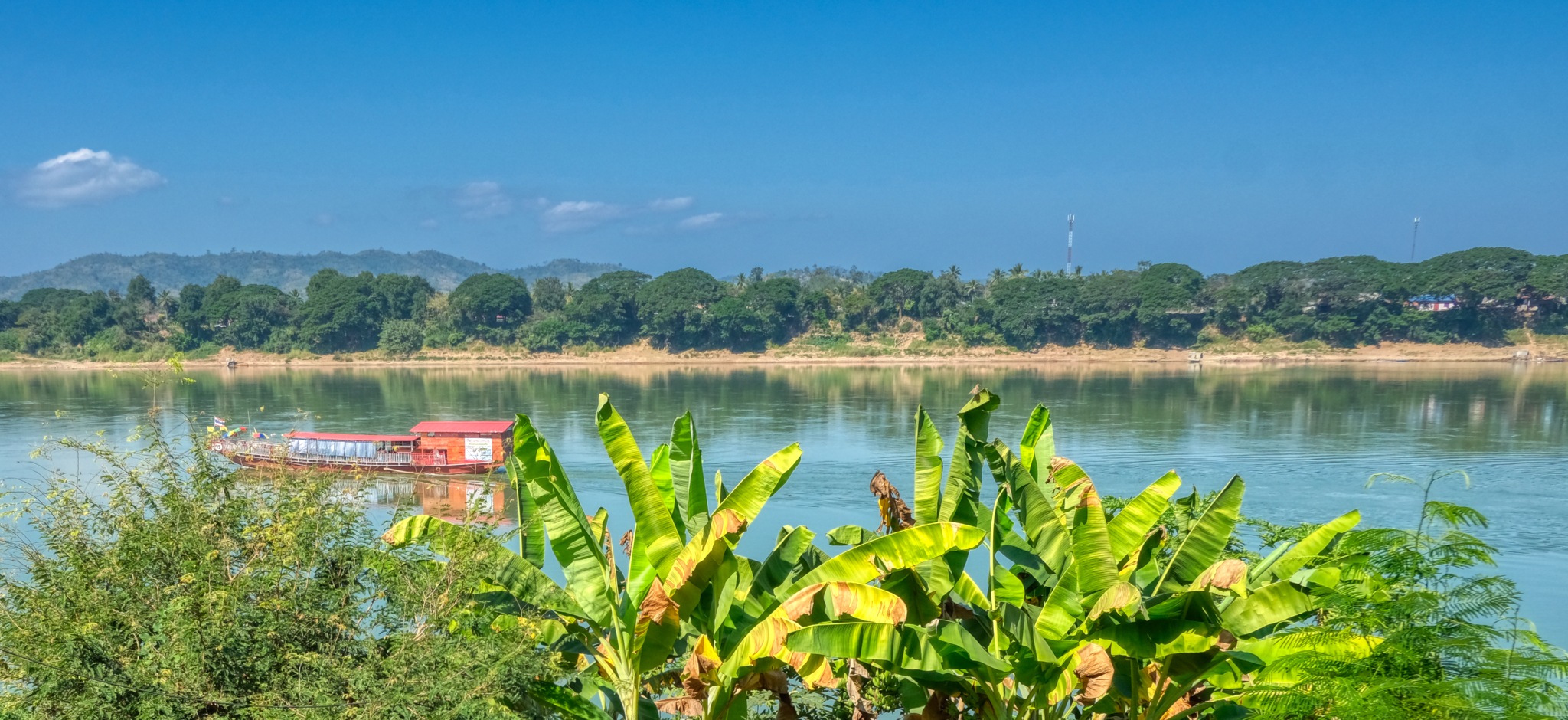 Riverboat ferry both local people and tourists up and down the river.
Riverboat ferry both local people and tourists up and down the river.
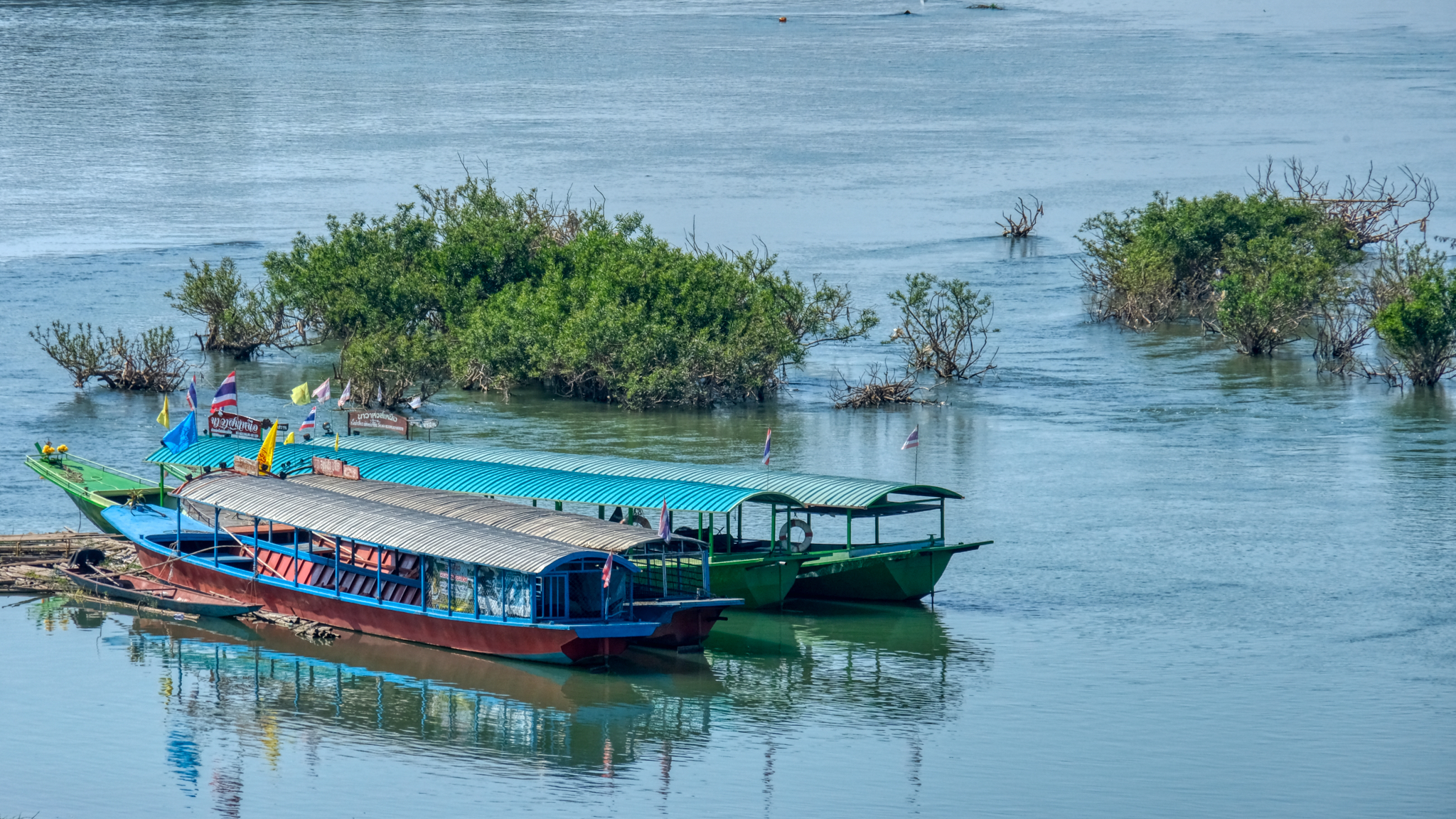 Mekong River boats at the ready.
Mekong River boats at the ready.
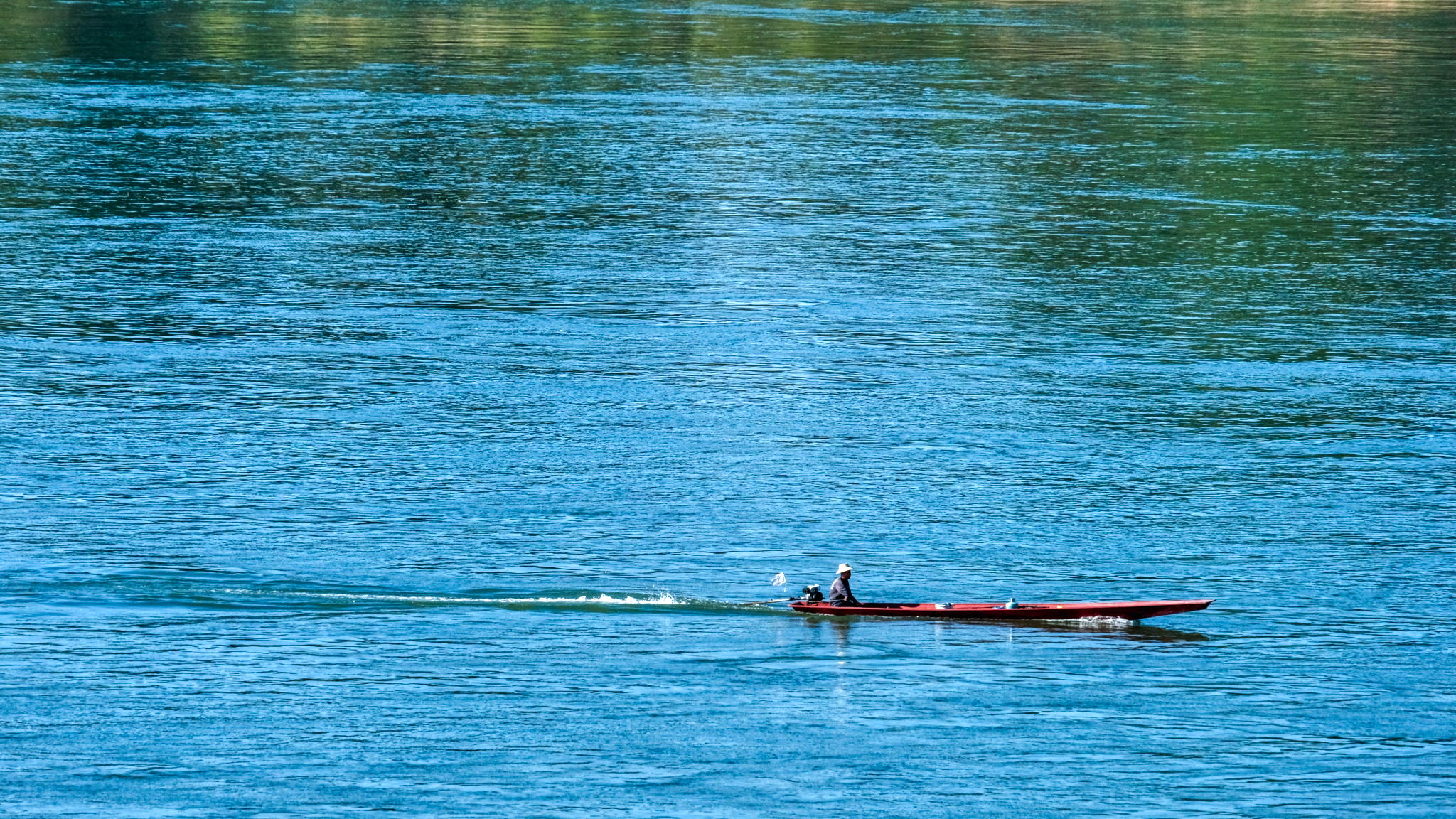 A fisherman going home. Surprisingly, I did not see very many fishermen out on the river.
A fisherman going home. Surprisingly, I did not see very many fishermen out on the river.
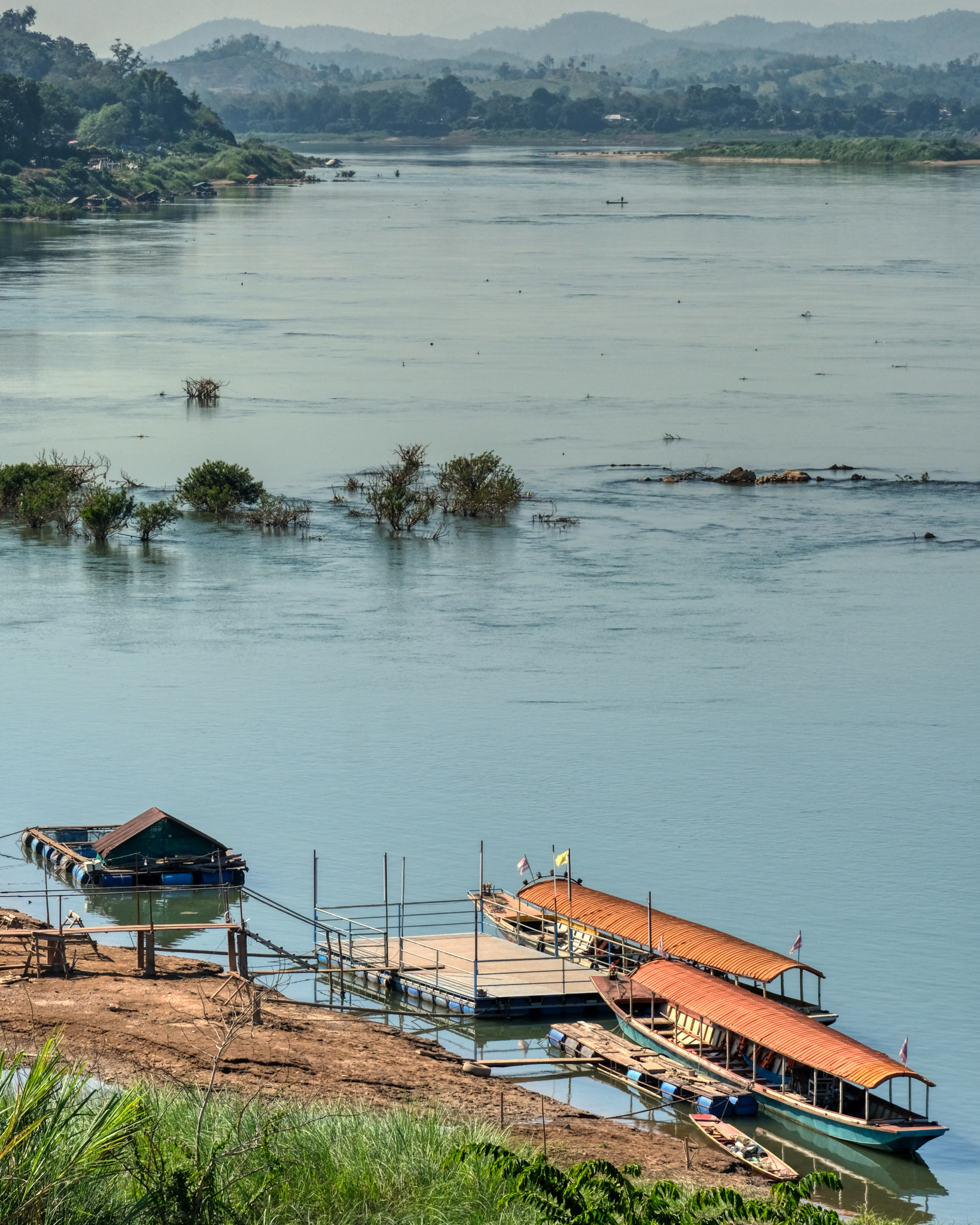 The fiew upriver toward the smoky Lao hills from Chiang Khan.
The fiew upriver toward the smoky Lao hills from Chiang Khan.
 When the sun set we headed to the night market street.
When the sun set we headed to the night market street.
CHIANG KHAN by NIGHT
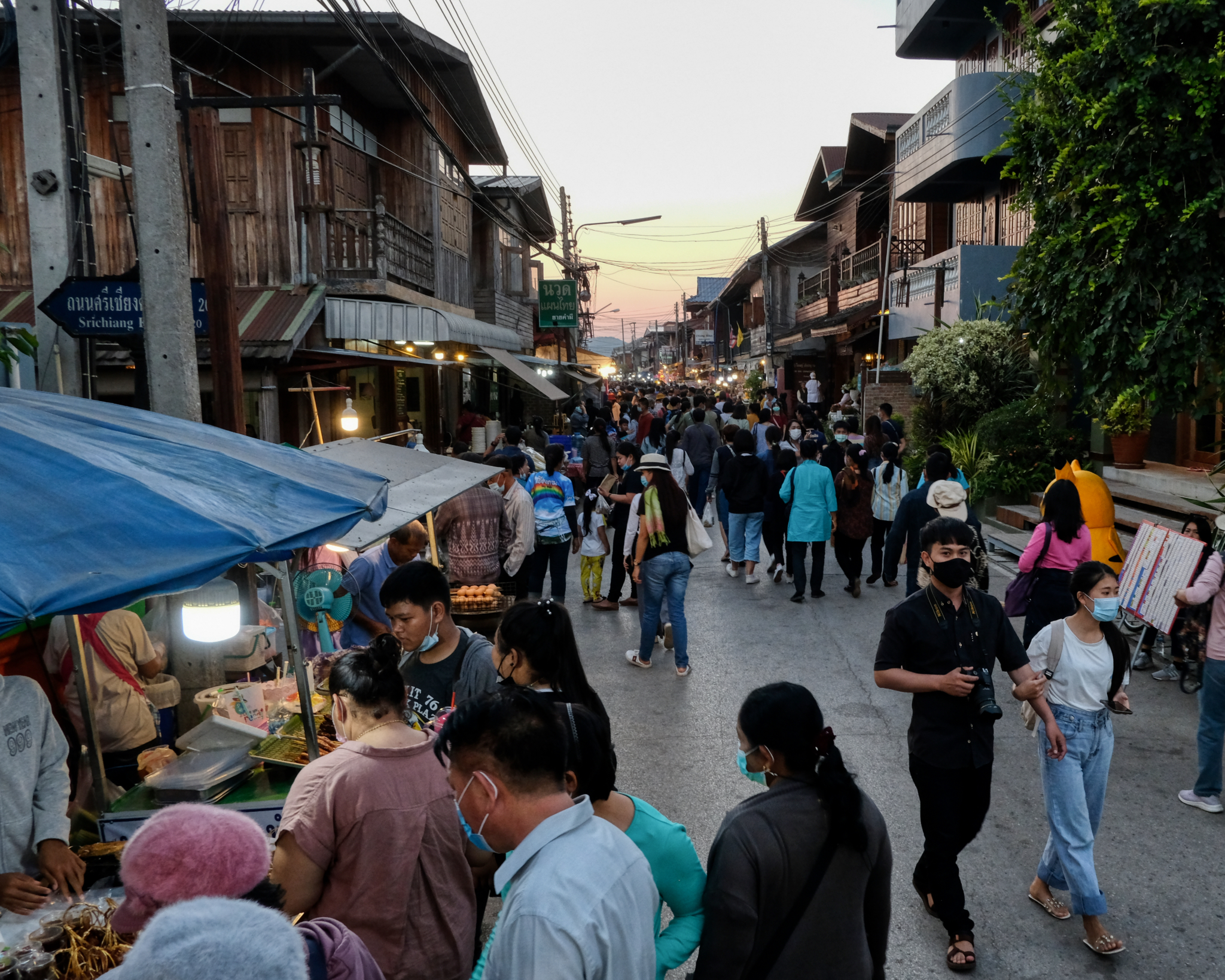 As the light faded, and the heat dissipated, it seemed that every Thai tourist in town left their guesthouse and headed to the main walking street.
As the light faded, and the heat dissipated, it seemed that every Thai tourist in town left their guesthouse and headed to the main walking street.
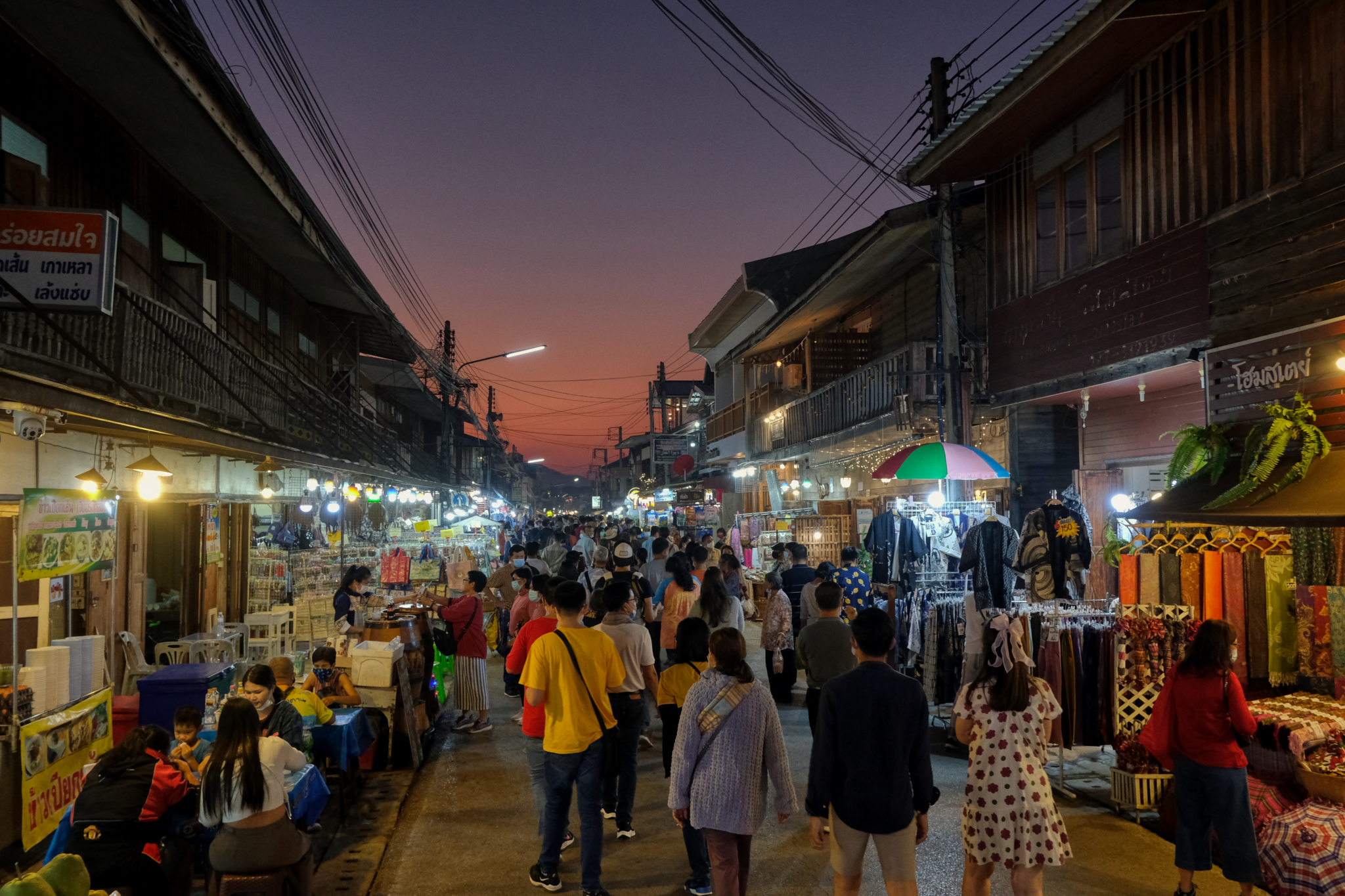 The darker it got, the bigger the crowd under the colorful, and fading sky.
The darker it got, the bigger the crowd under the colorful, and fading sky.
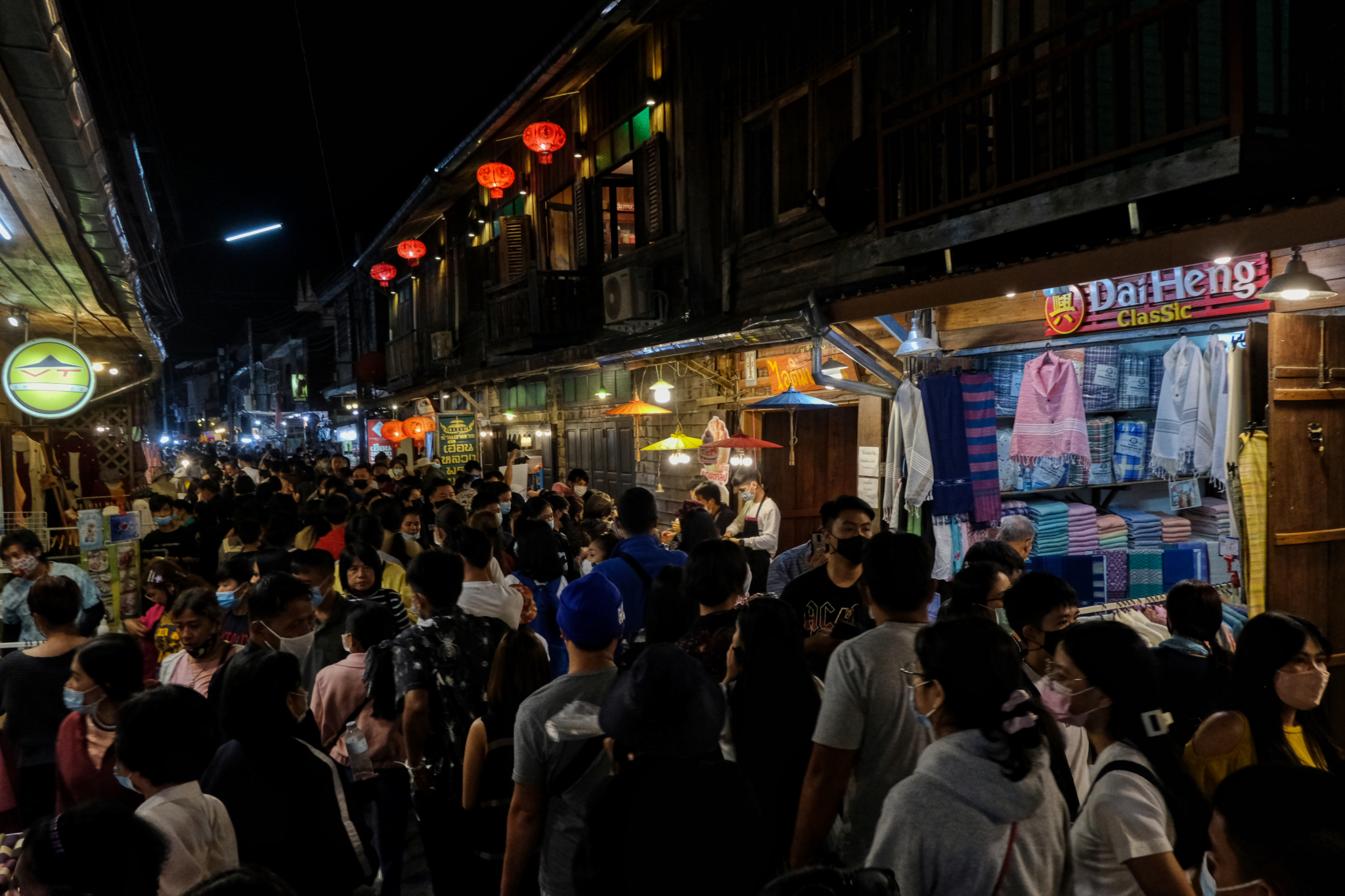 At last the sun had fully set.
At last the sun had fully set.
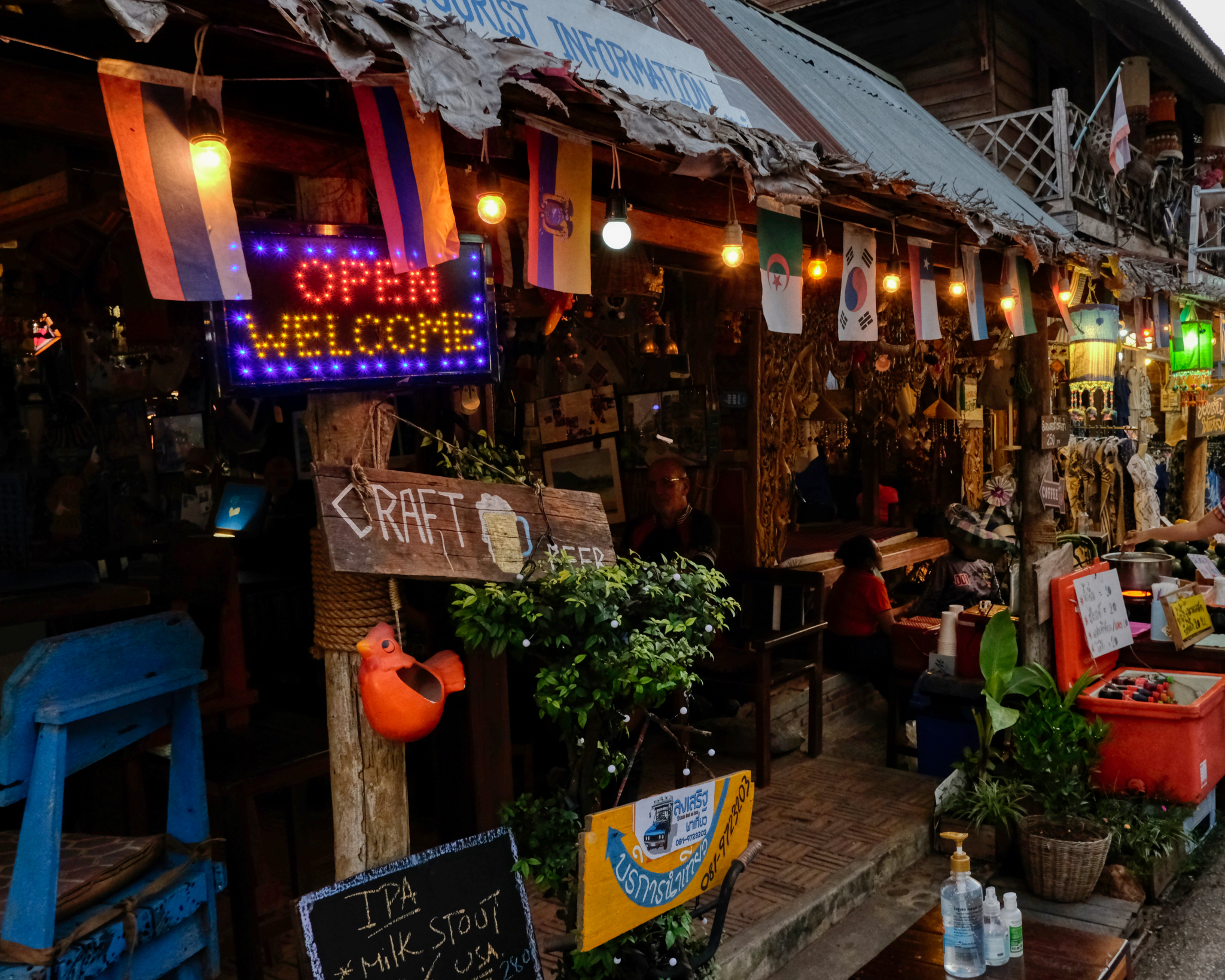 Many of the shops, restaurants, and bars that were closed in the afternoon opened for the throngs that came out at night. This craft beer joint was a welcome stop for me.
Many of the shops, restaurants, and bars that were closed in the afternoon opened for the throngs that came out at night. This craft beer joint was a welcome stop for me.
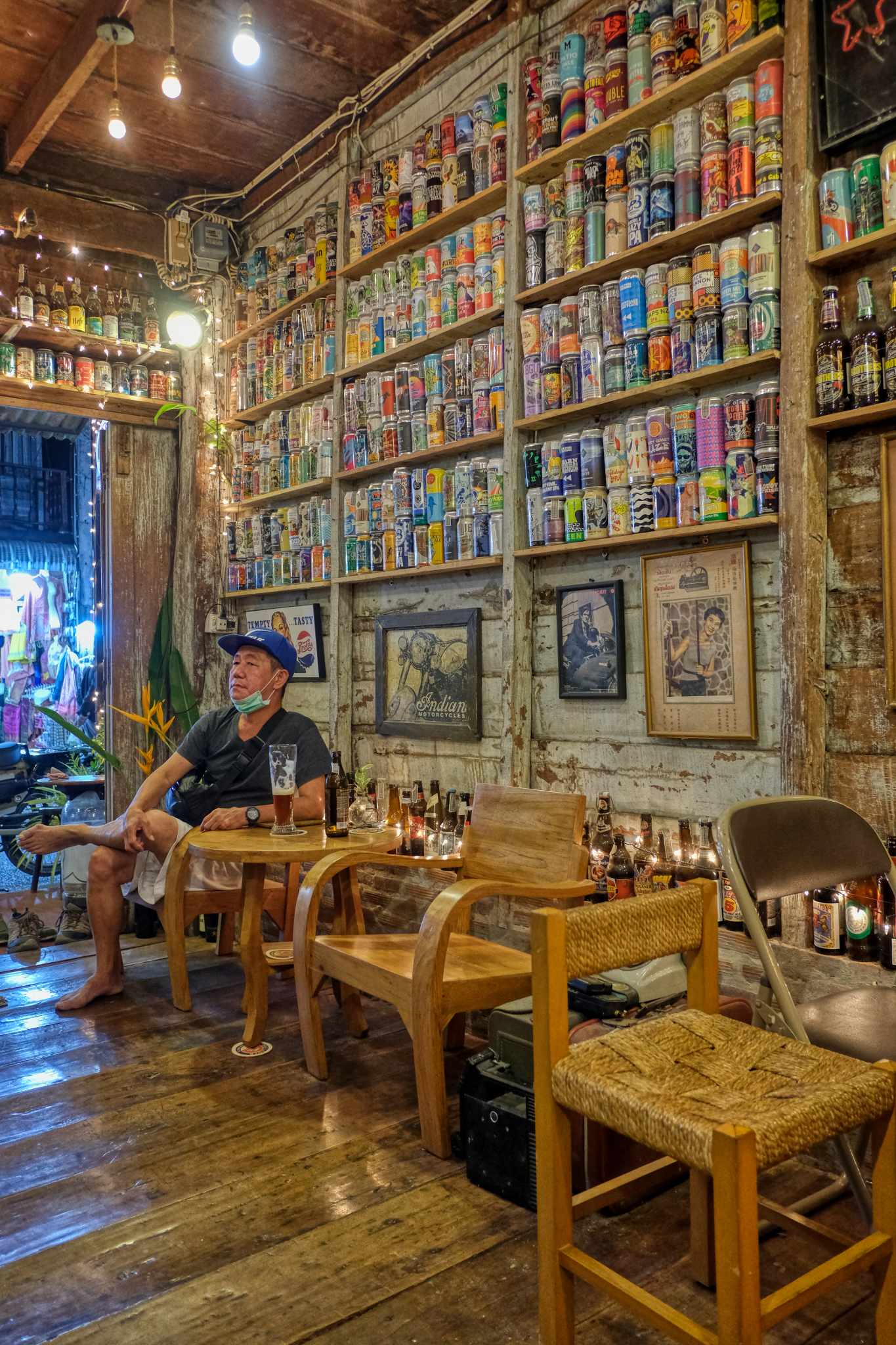 The interior of the craft beer hall.
The interior of the craft beer hall.
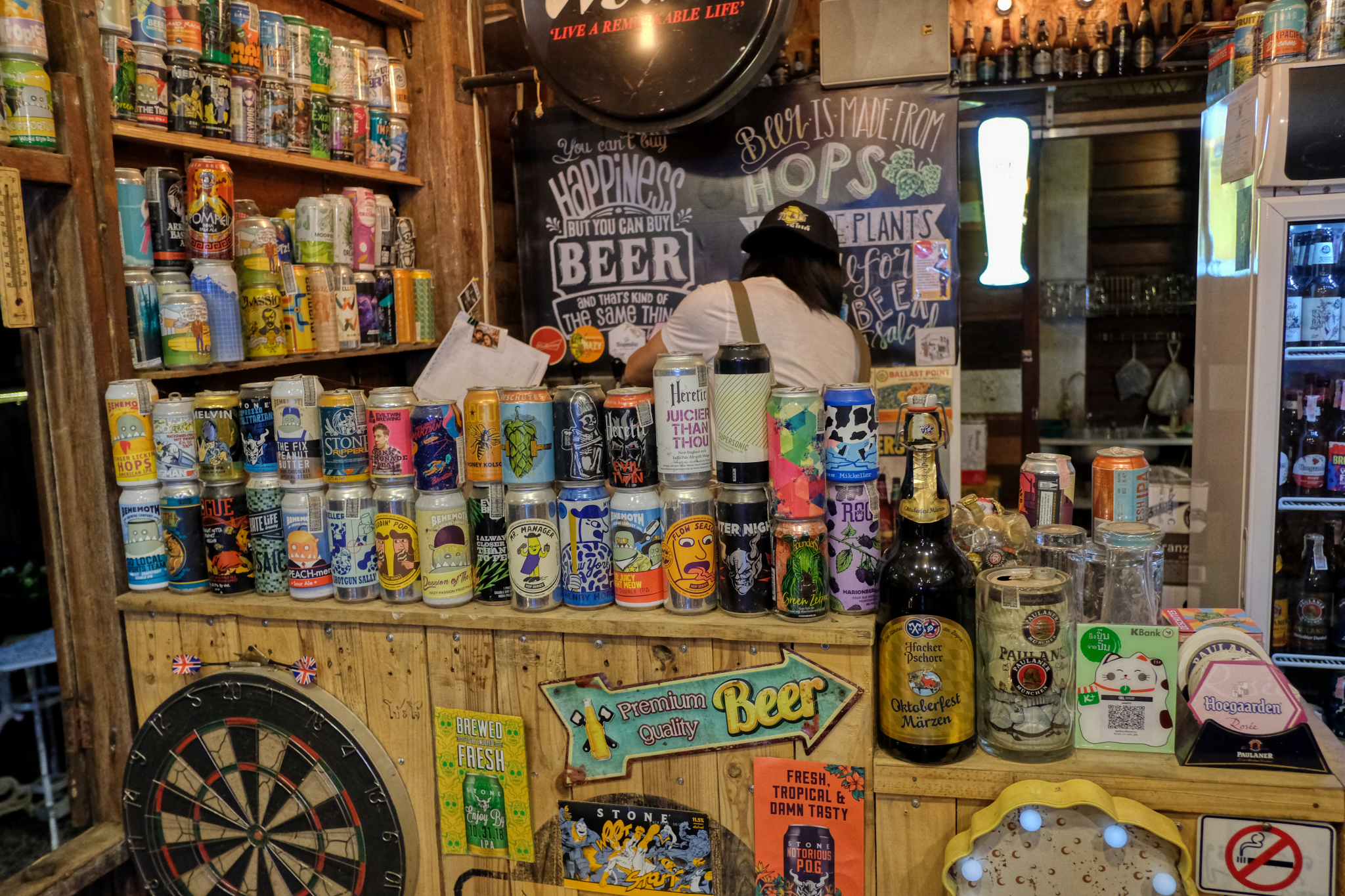 The Thai hippies who ran the craft beer hall had a fantastic collection of beers and ales to choose from.
The Thai hippies who ran the craft beer hall had a fantastic collection of beers and ales to choose from.
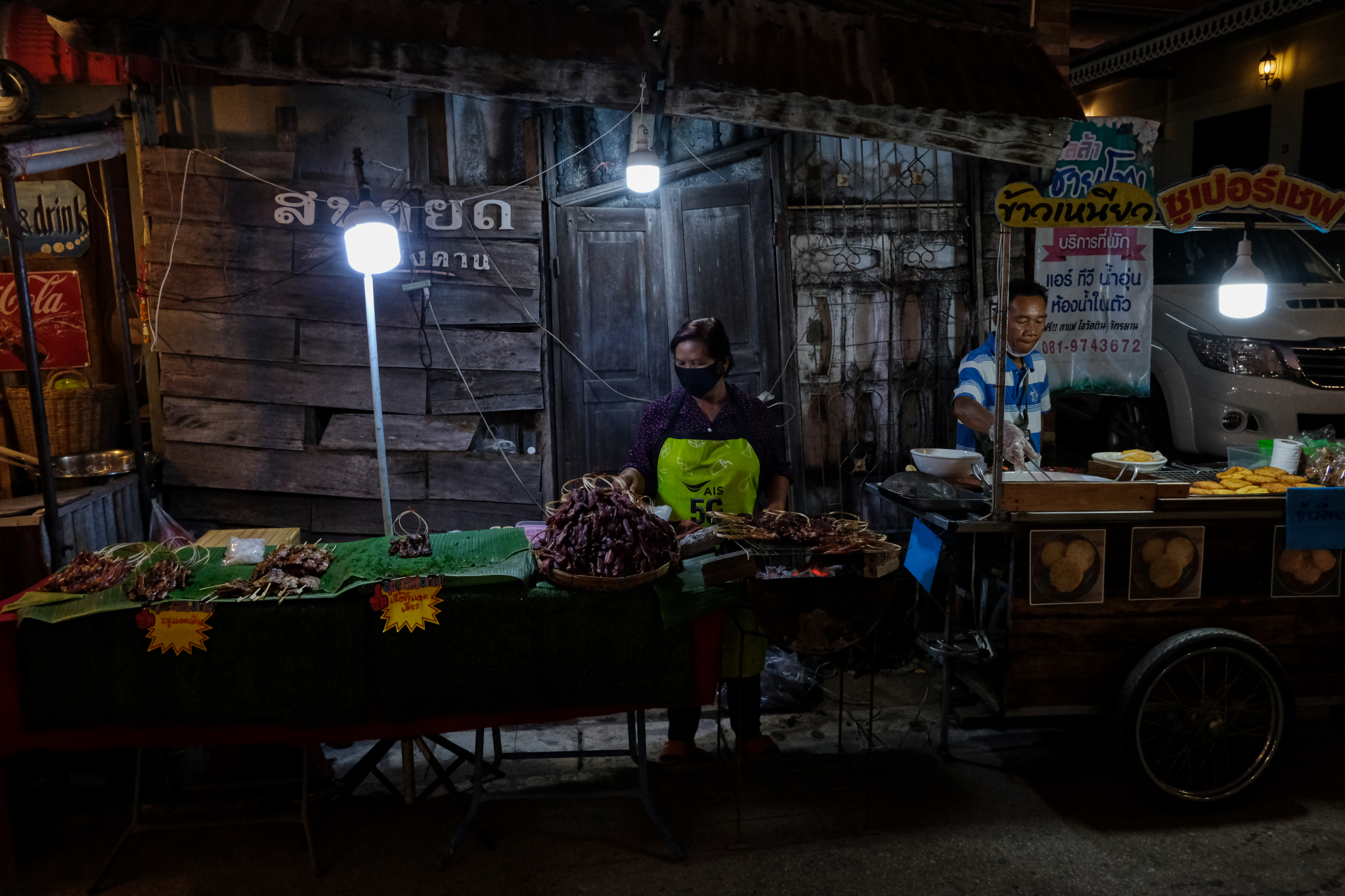 The town became even more photogenic at night. BBQ beef street hawkers.
The town became even more photogenic at night. BBQ beef street hawkers.
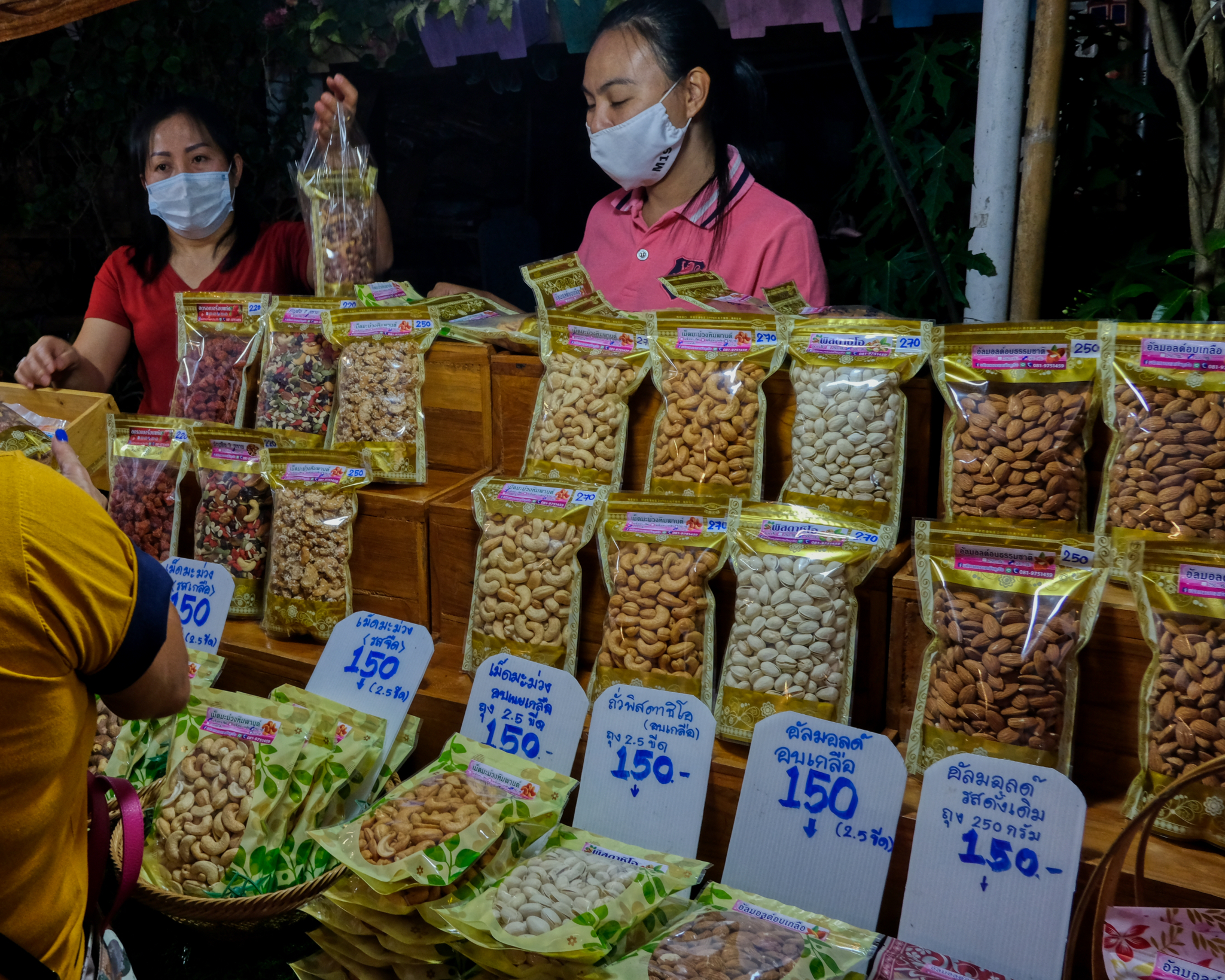 The many stalls set up along the night street became a 'night market' - a favorite of Thai people and visitors to Thailand. There was a wide variety of things for sale. Nuts! I love nuts!
The many stalls set up along the night street became a 'night market' - a favorite of Thai people and visitors to Thailand. There was a wide variety of things for sale. Nuts! I love nuts!
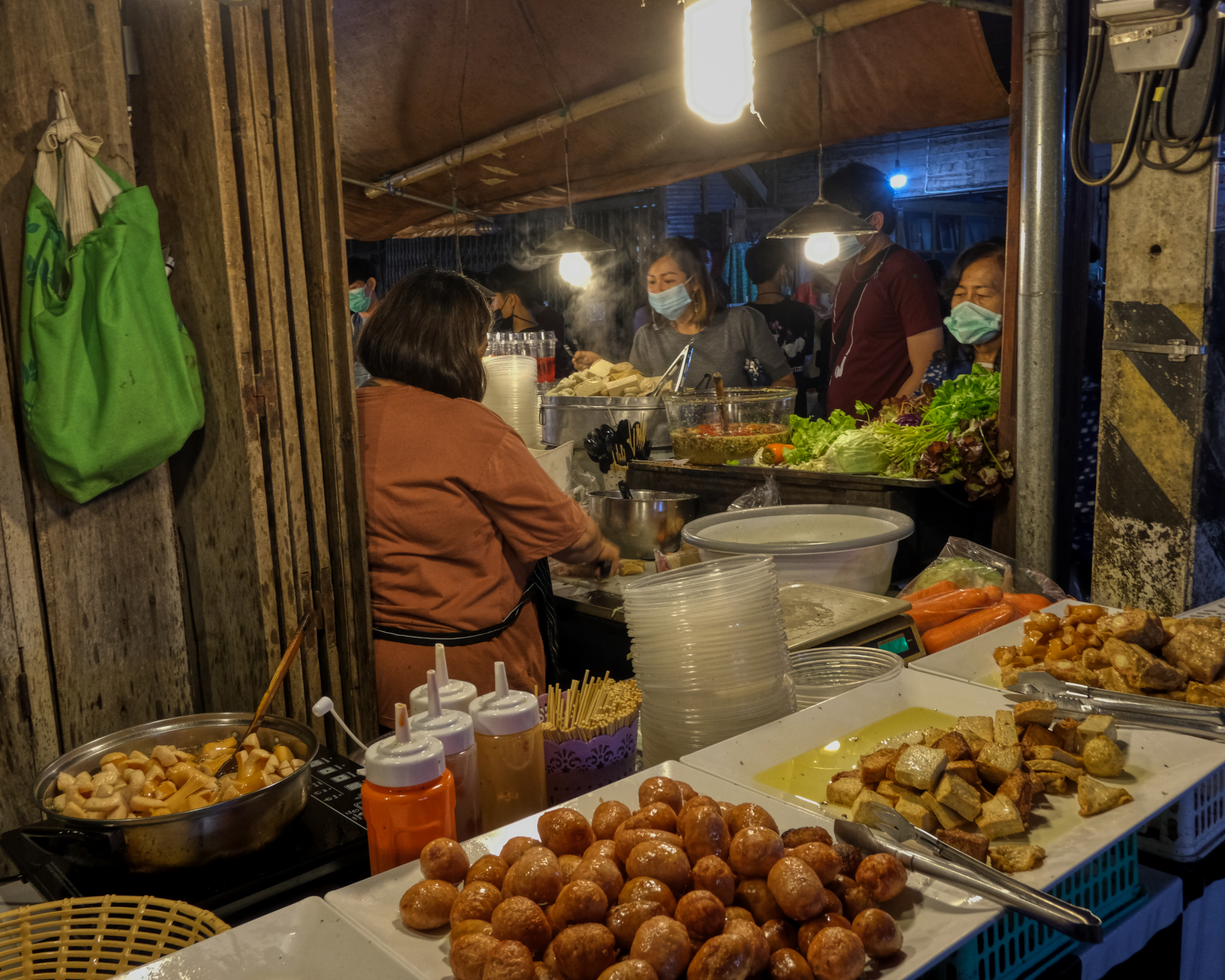 All the night market visitors brought their appetites . . . and were rewarded with a wide variety of delicious Thai specialties to eat.
All the night market visitors brought their appetites . . . and were rewarded with a wide variety of delicious Thai specialties to eat.
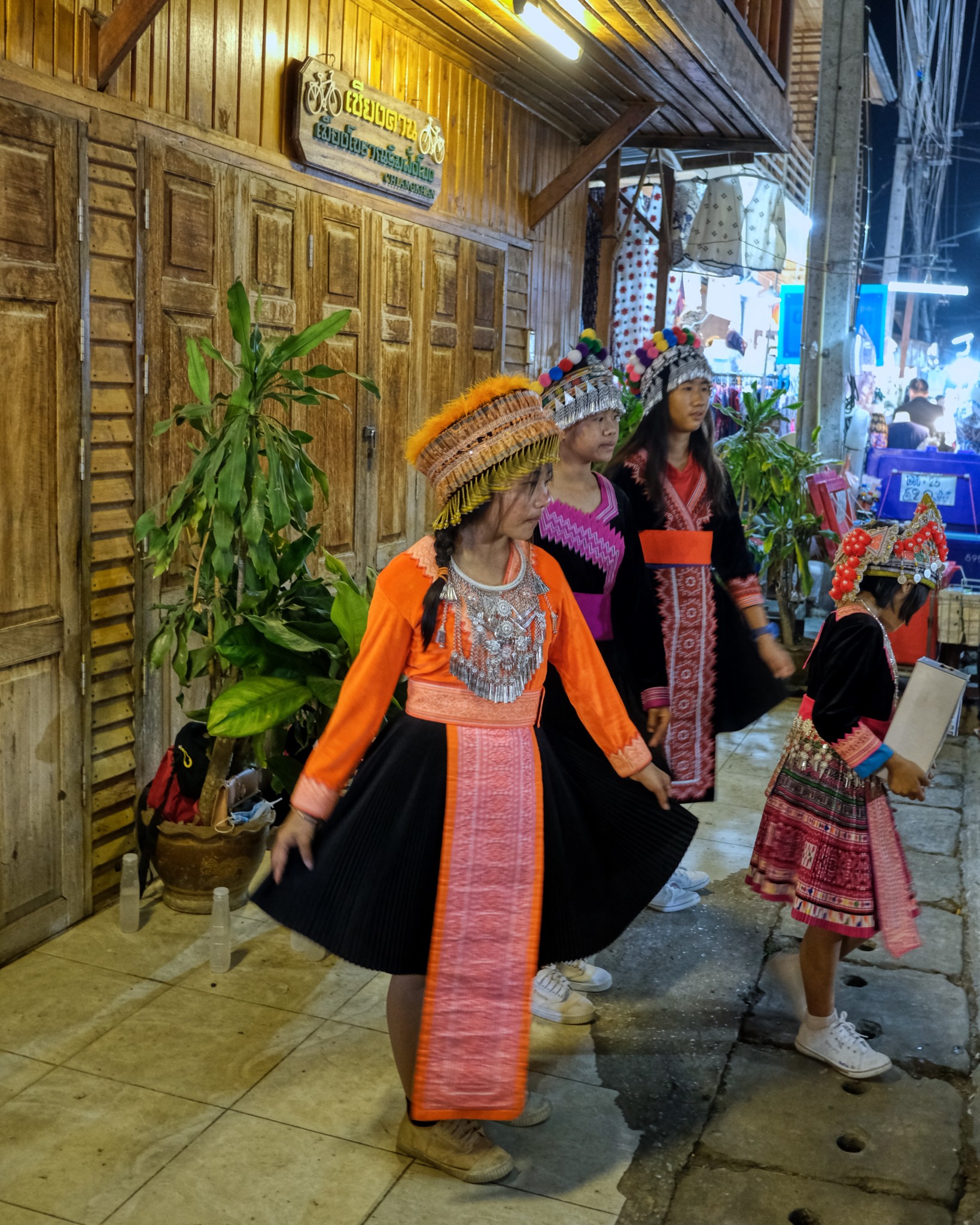 Street performers in their traditional 'hill tribe' costumes entertained the gathered crowds.
Street performers in their traditional 'hill tribe' costumes entertained the gathered crowds.
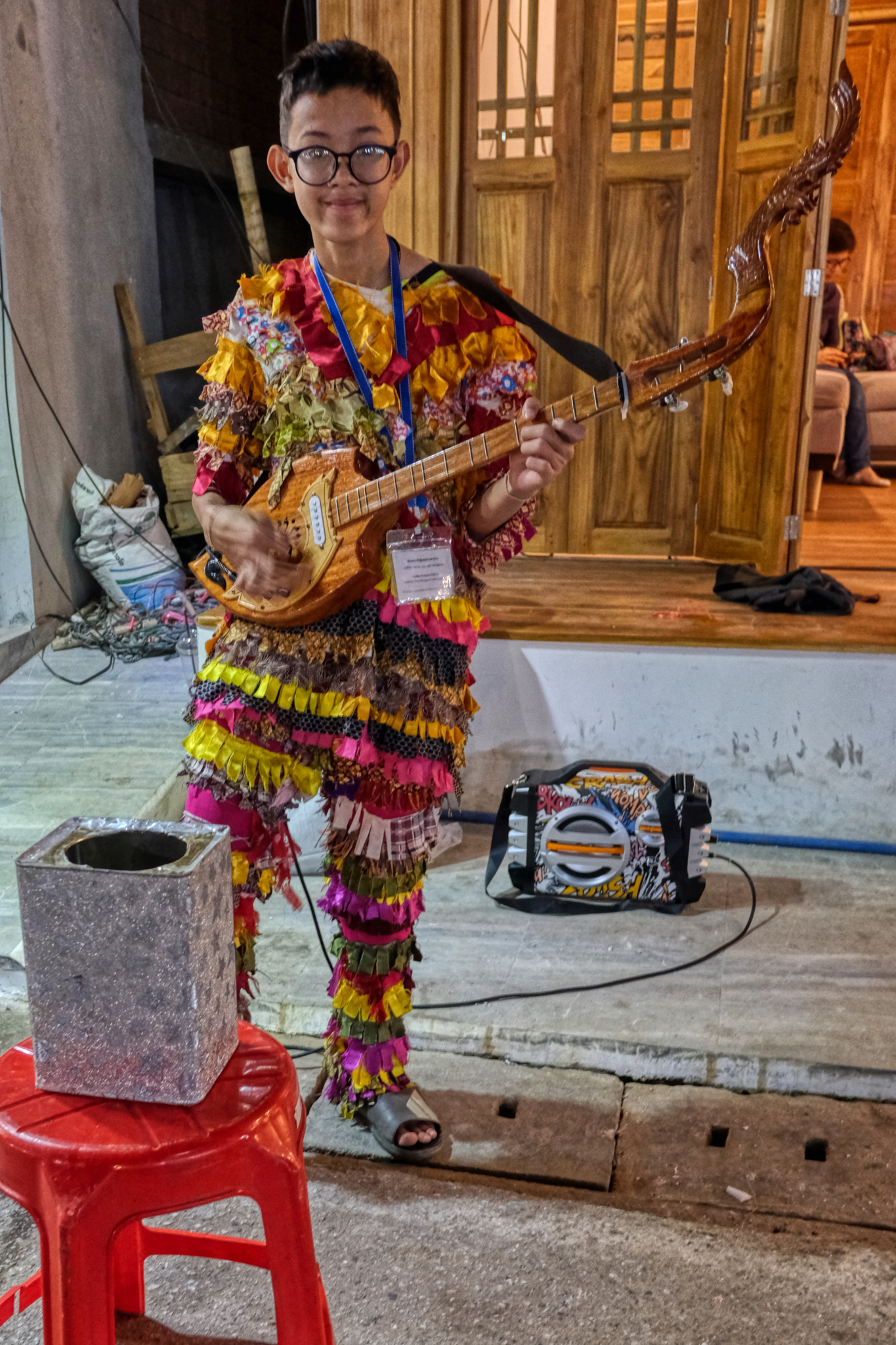 My favorite street performer was this young busker playing electrified traditional old Thai music in a homemade outfit. Cool.
My favorite street performer was this young busker playing electrified traditional old Thai music in a homemade outfit. Cool.
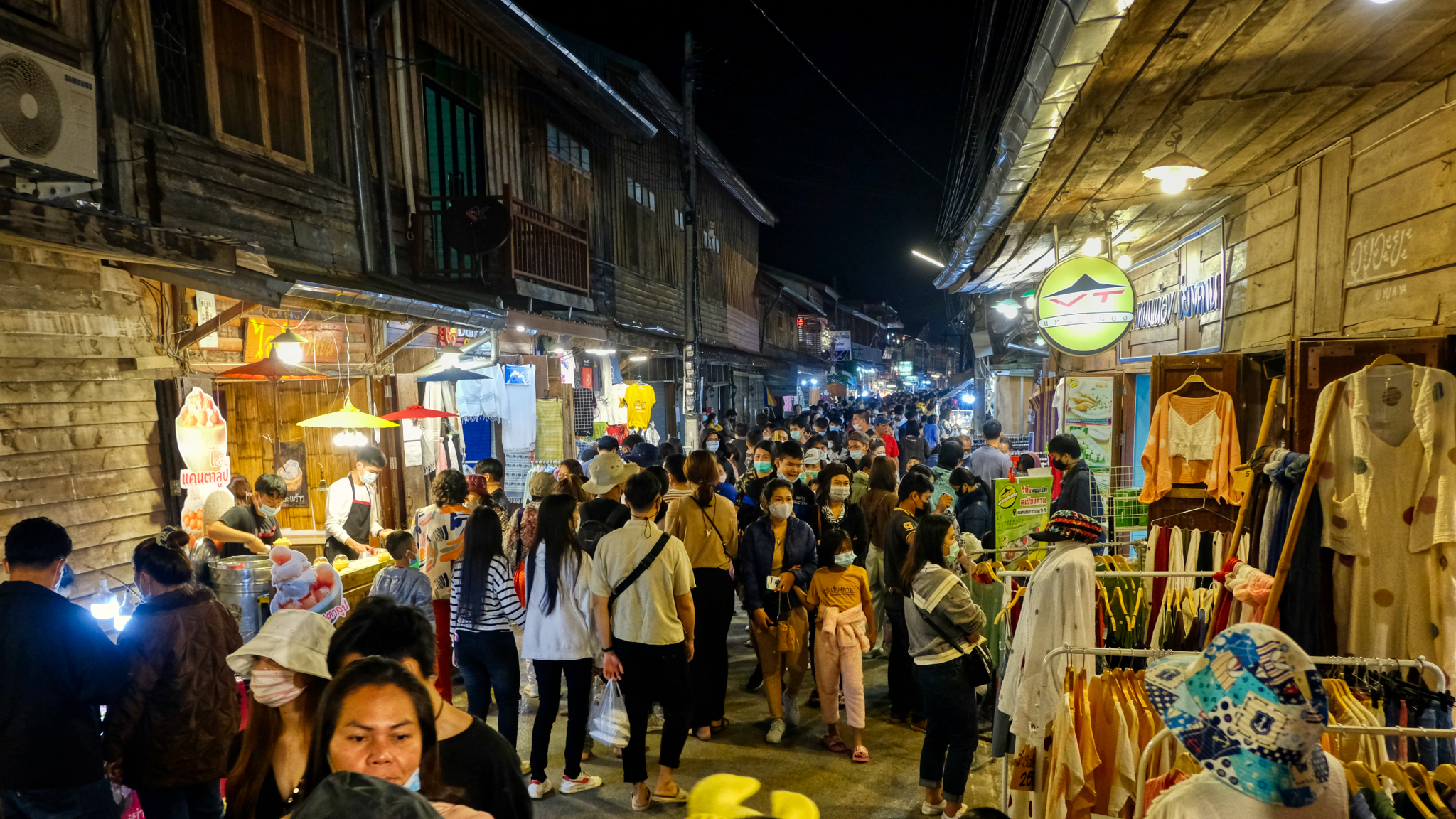 We enjoyed out nights walking along the Chiang Khan night market street.
We enjoyed out nights walking along the Chiang Khan night market street.
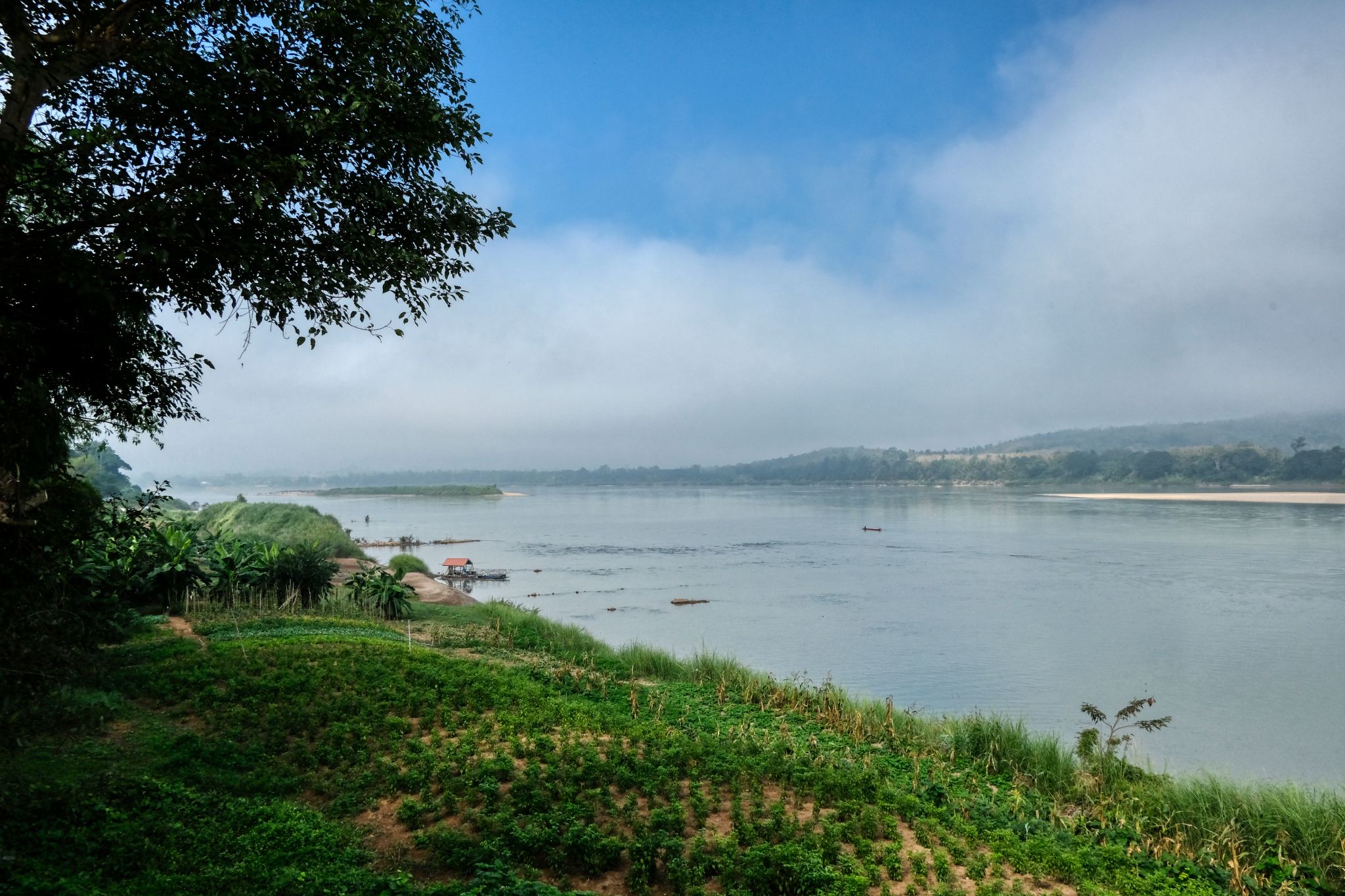 After two nights in Chiang Khan we woke up early and said good-bye to the river and headed south.
After two nights in Chiang Khan we woke up early and said good-bye to the river and headed south.
Khon Kaen
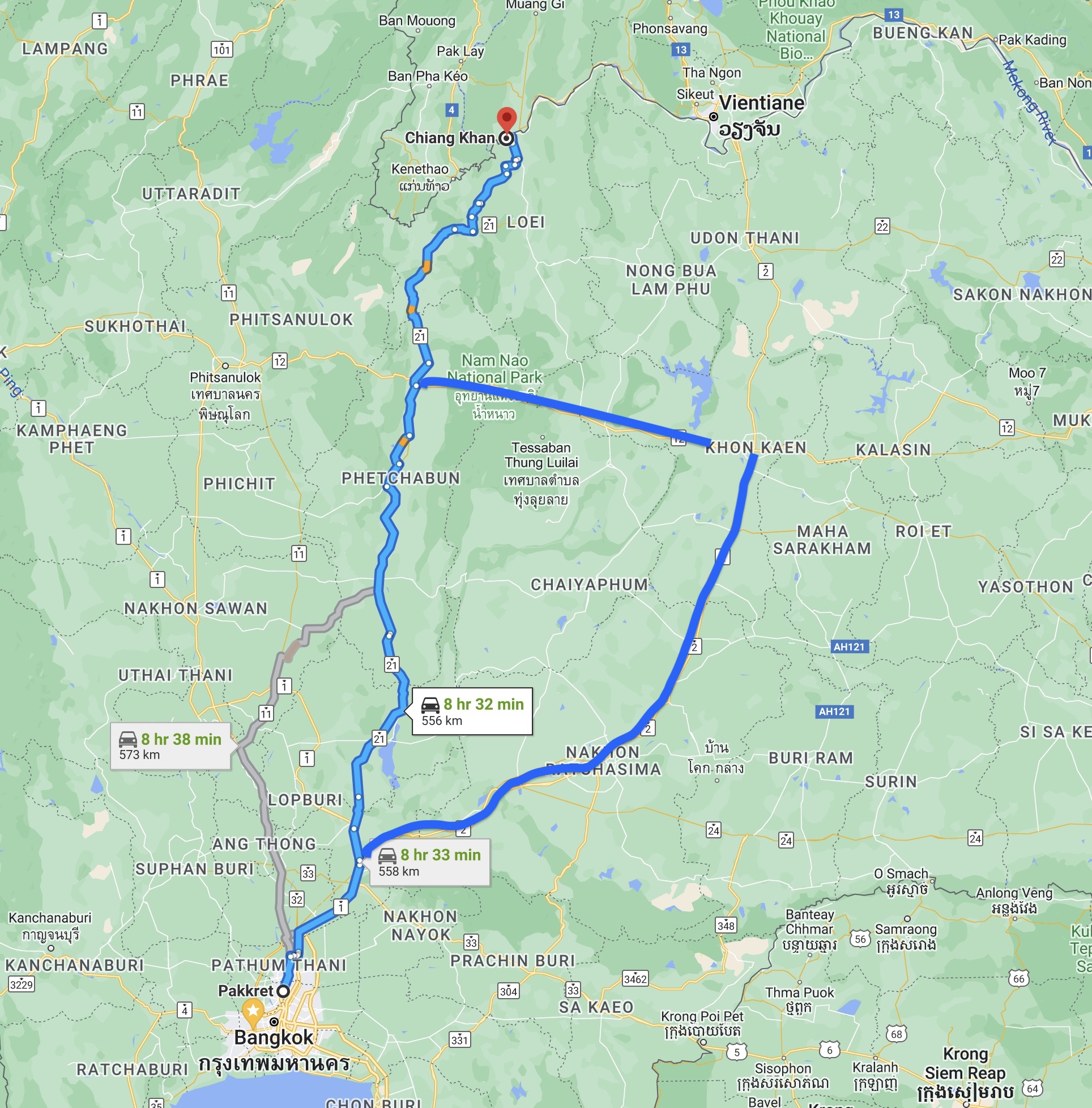 We were about 30 minutes out of Chiang Khan and decided to take a different route home to Bangkok. Neither of us had ever been to Khon Kaen . . . so why not?
We were about 30 minutes out of Chiang Khan and decided to take a different route home to Bangkok. Neither of us had ever been to Khon Kaen . . . so why not?
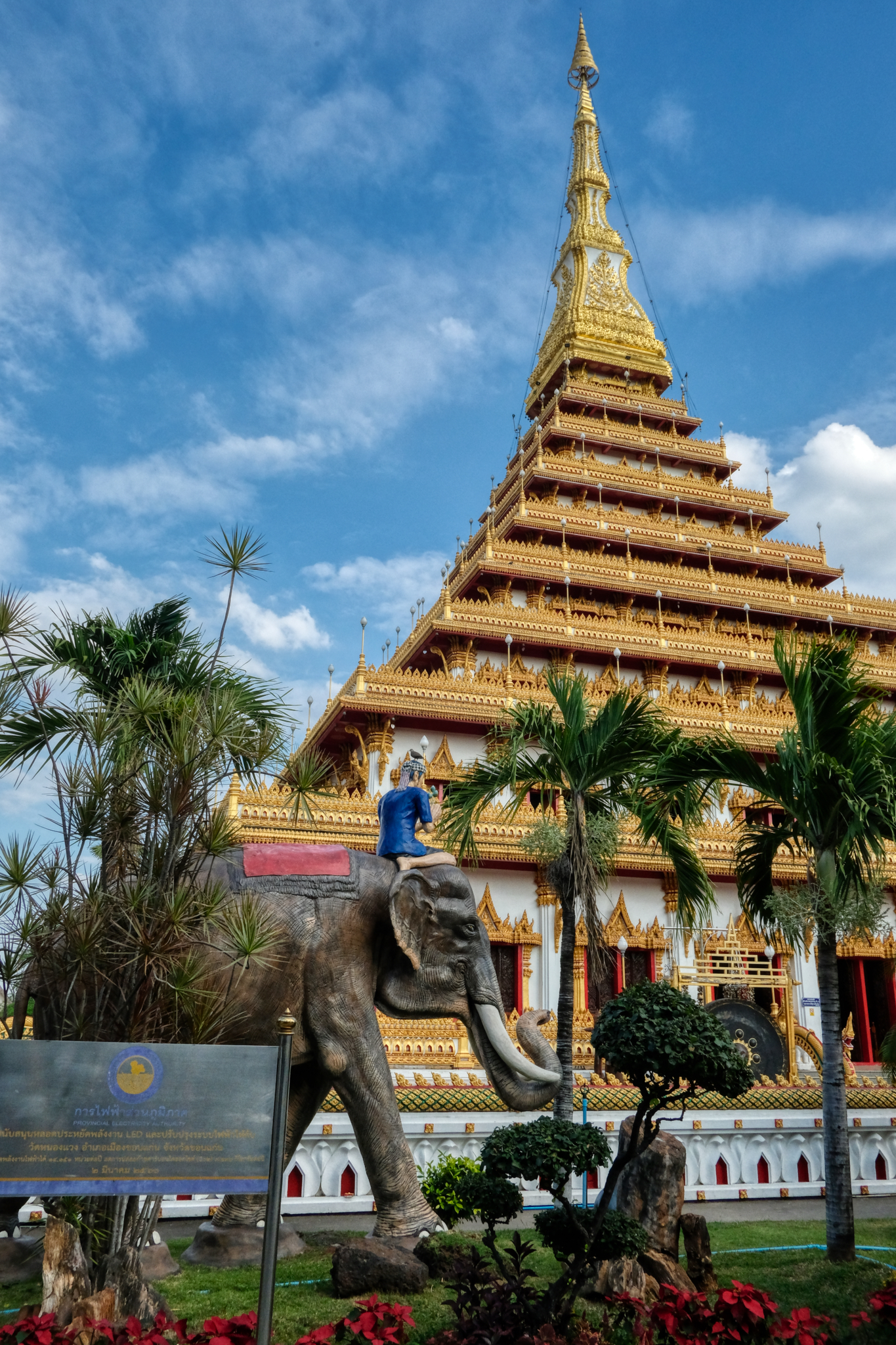 We didn't do too much sightseeing . . . just drove around town . . . found a great restaurant on Google . . . and found this magnificent wat to go in . . .
We didn't do too much sightseeing . . . just drove around town . . . found a great restaurant on Google . . . and found this magnificent wat to go in . . .
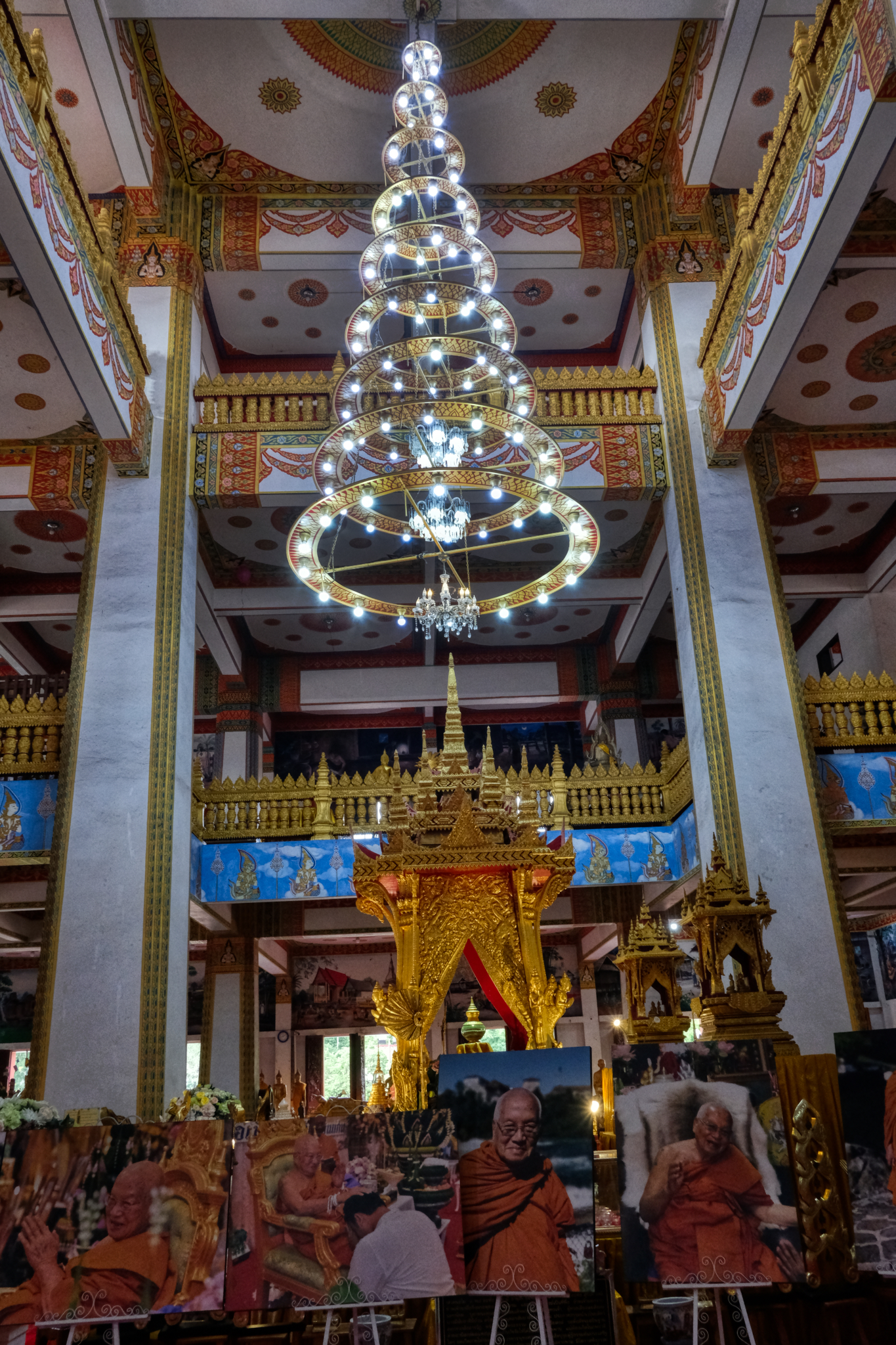 We were very glad we went inside.
We were very glad we went inside.
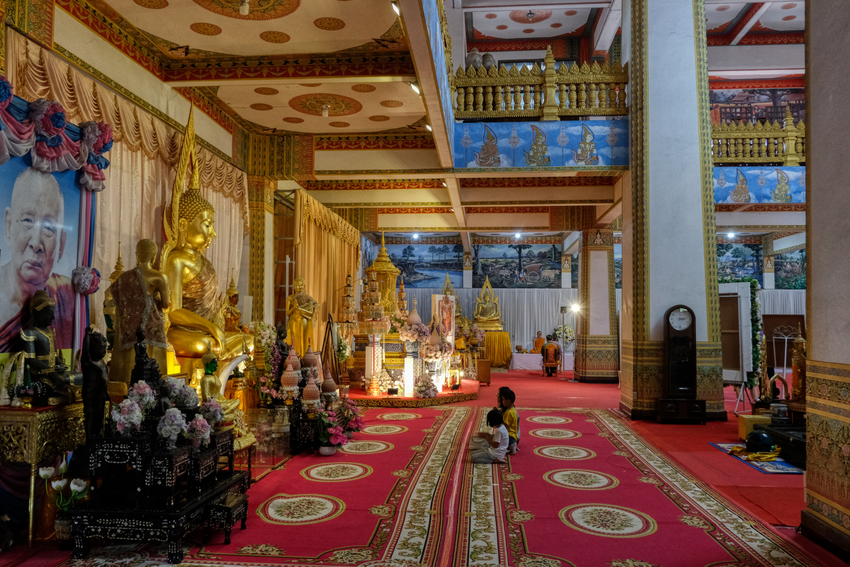 There are many different altars in the large inner space . . . each with a group of people paying respects.
There are many different altars in the large inner space . . . each with a group of people paying respects.
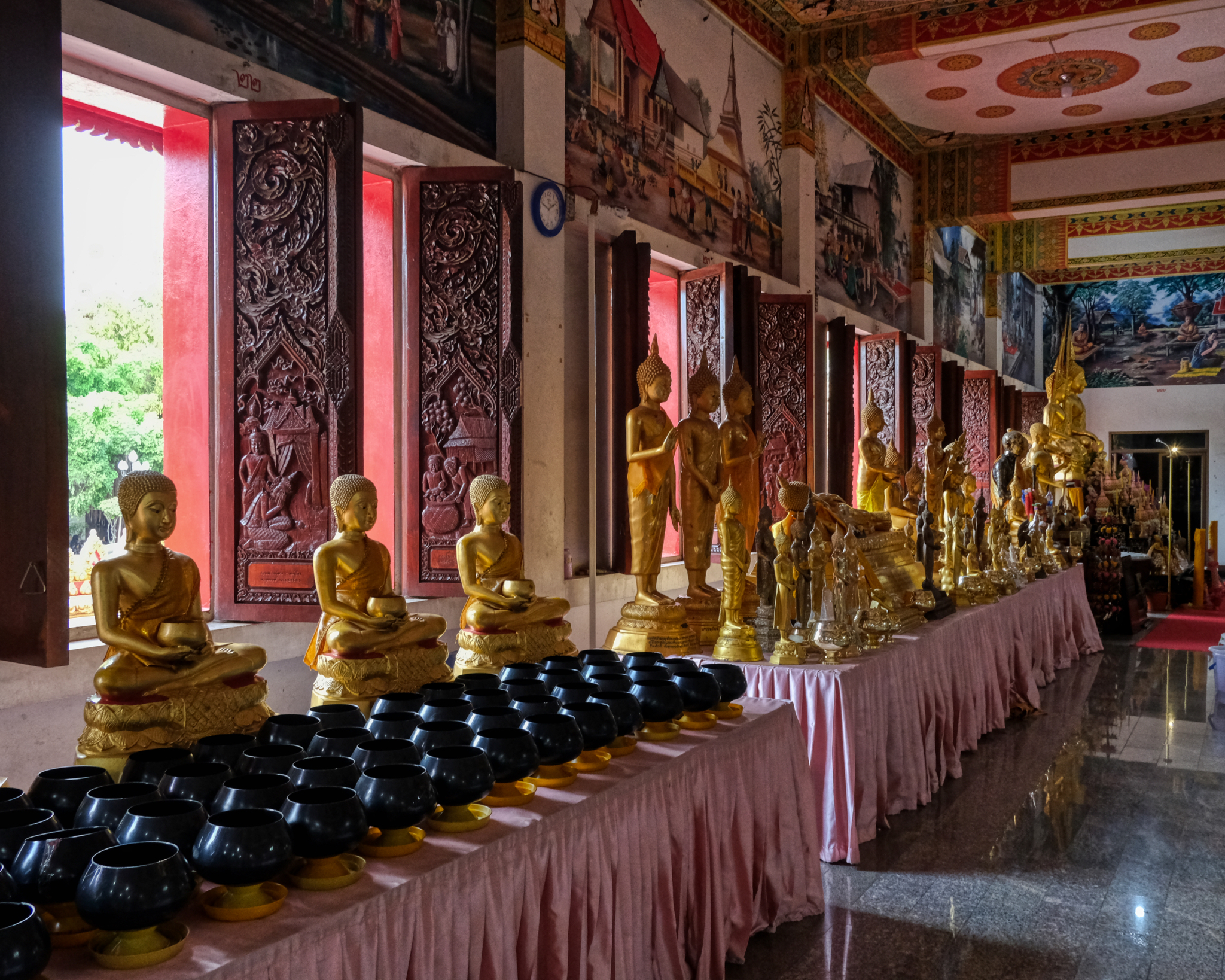 Very special light falling on the various Buddha images.
Very special light falling on the various Buddha images.
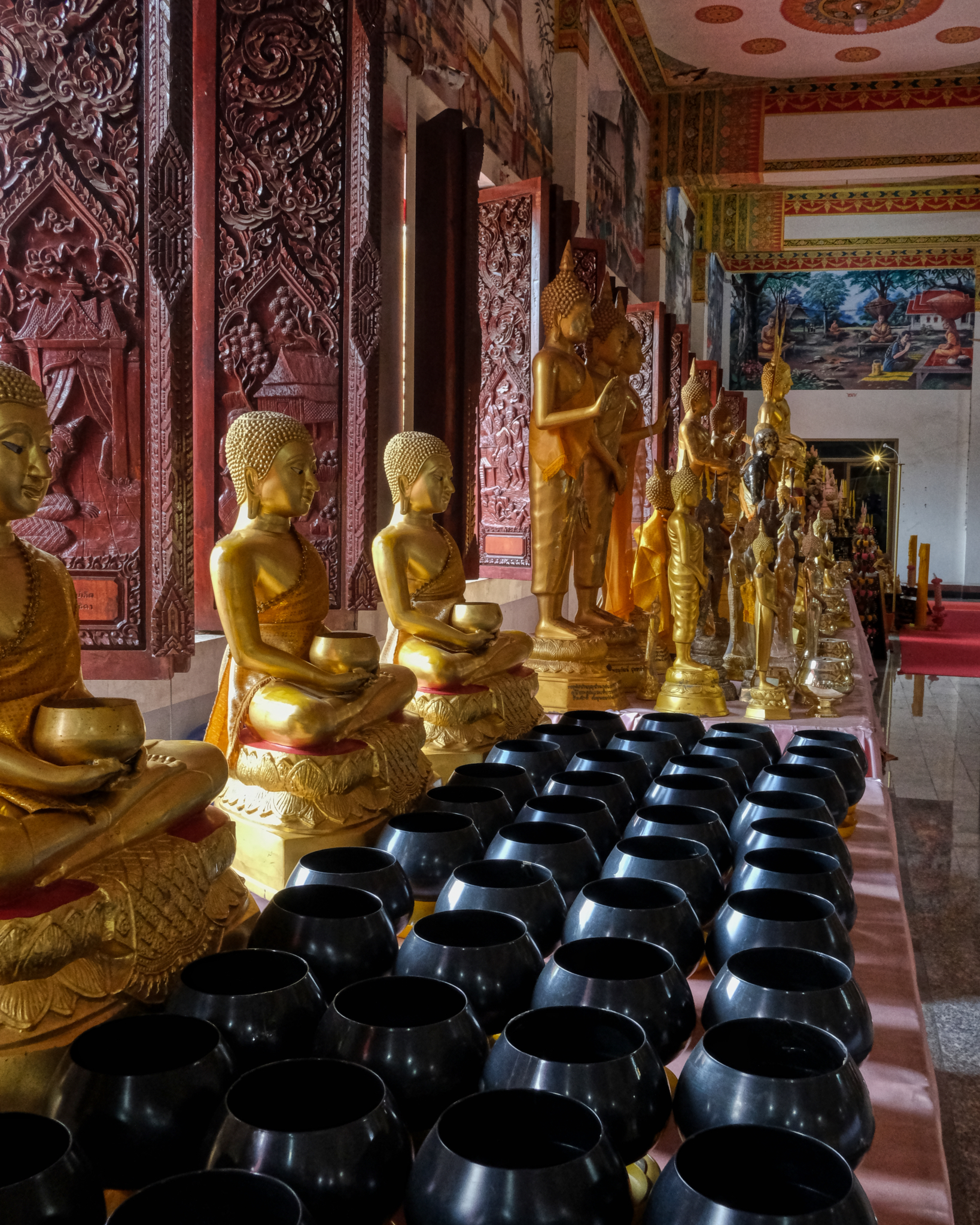 Pots for making donations and making wishes.
Pots for making donations and making wishes.
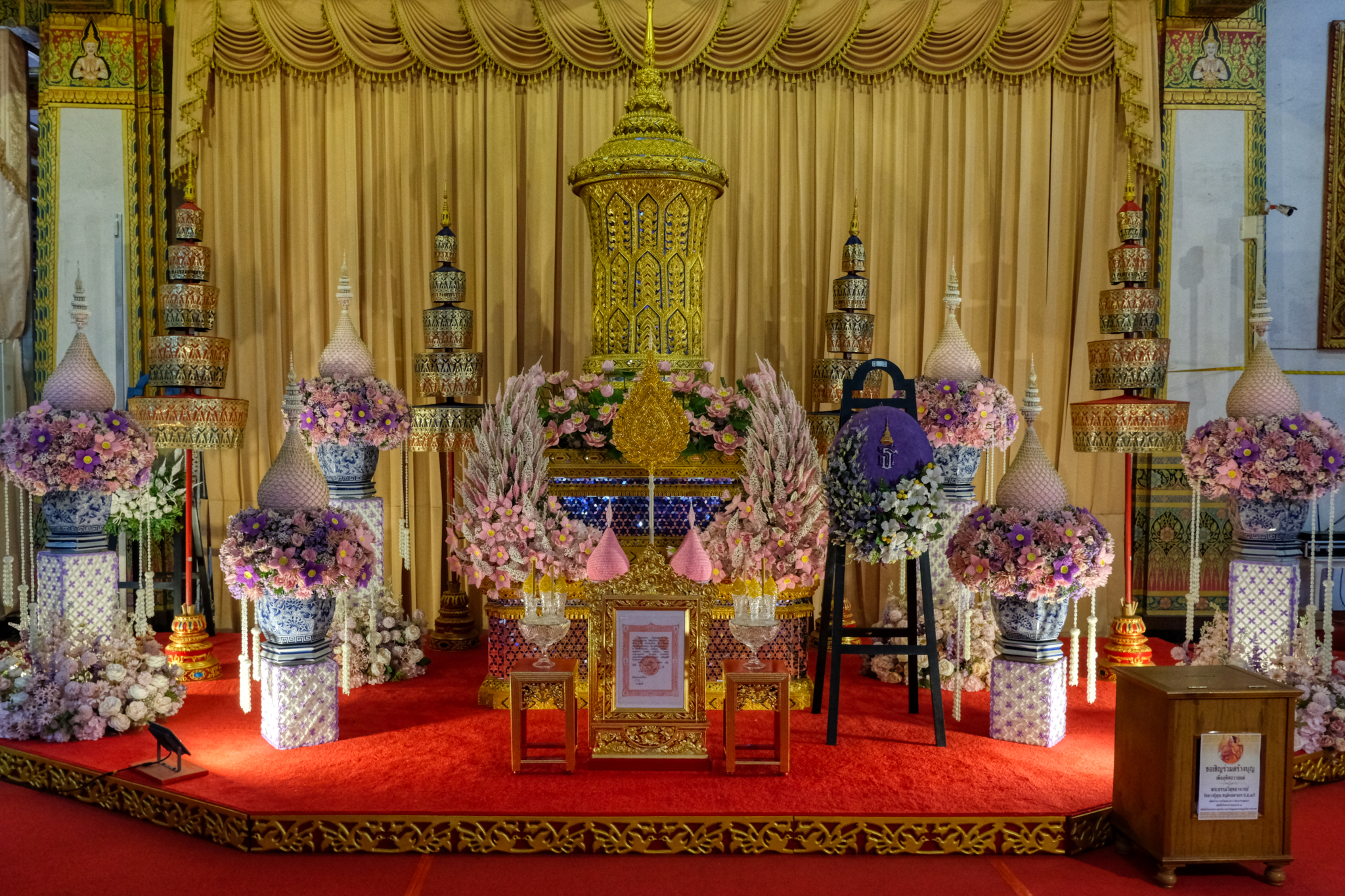 Such a pretty flower memorial altar.
Such a pretty flower memorial altar.
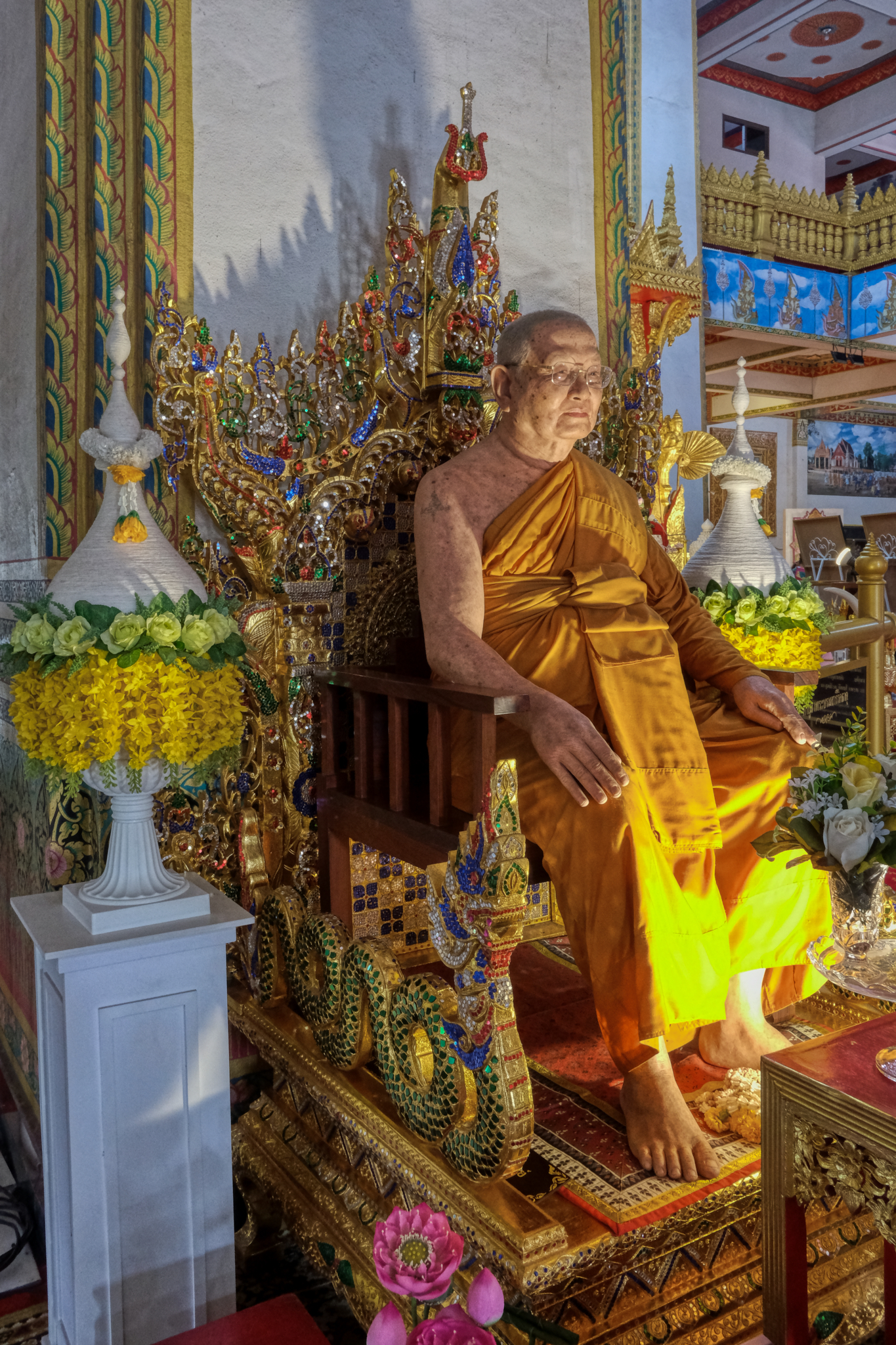 This hyper-realistic wax monk was too realistic . . . and creepy.
This hyper-realistic wax monk was too realistic . . . and creepy.
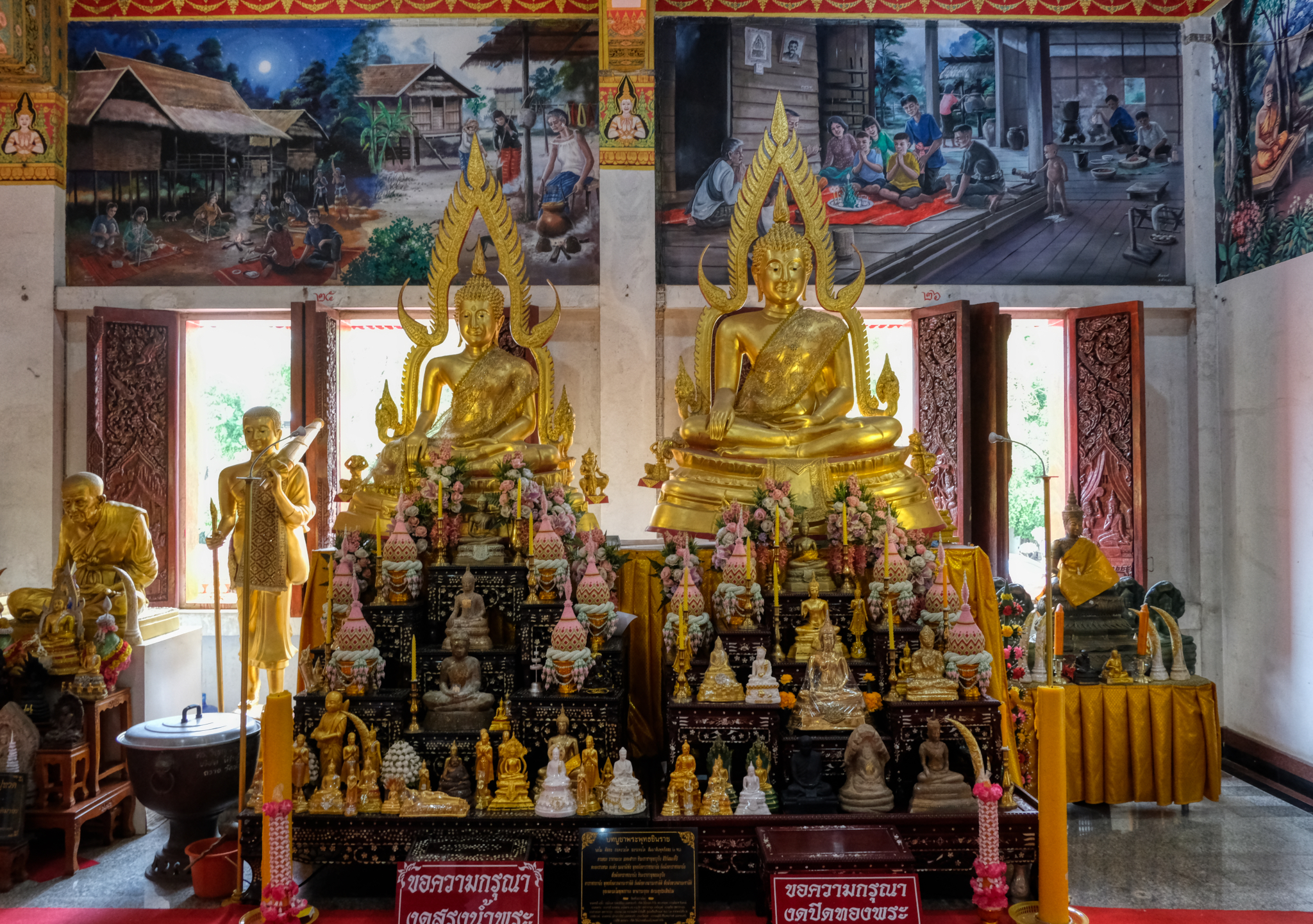 We paid our respects here and then chatted with a monk before leaving. We knew we haddn't spent enough time in Khon Kaen and vowed to return.
We paid our respects here and then chatted with a monk before leaving. We knew we haddn't spent enough time in Khon Kaen and vowed to return.
We left the next morning for a 7 hour drive home.
It had been a wonderful vacation in the middle of the COVID Pandemic!
USA Road Trip: The Wild West - Pipe Springs and Cove Fort
 Thursday, February 24, 2022 at 6:50PM
Thursday, February 24, 2022 at 6:50PM PIPE SPRINGS, ARIZONA
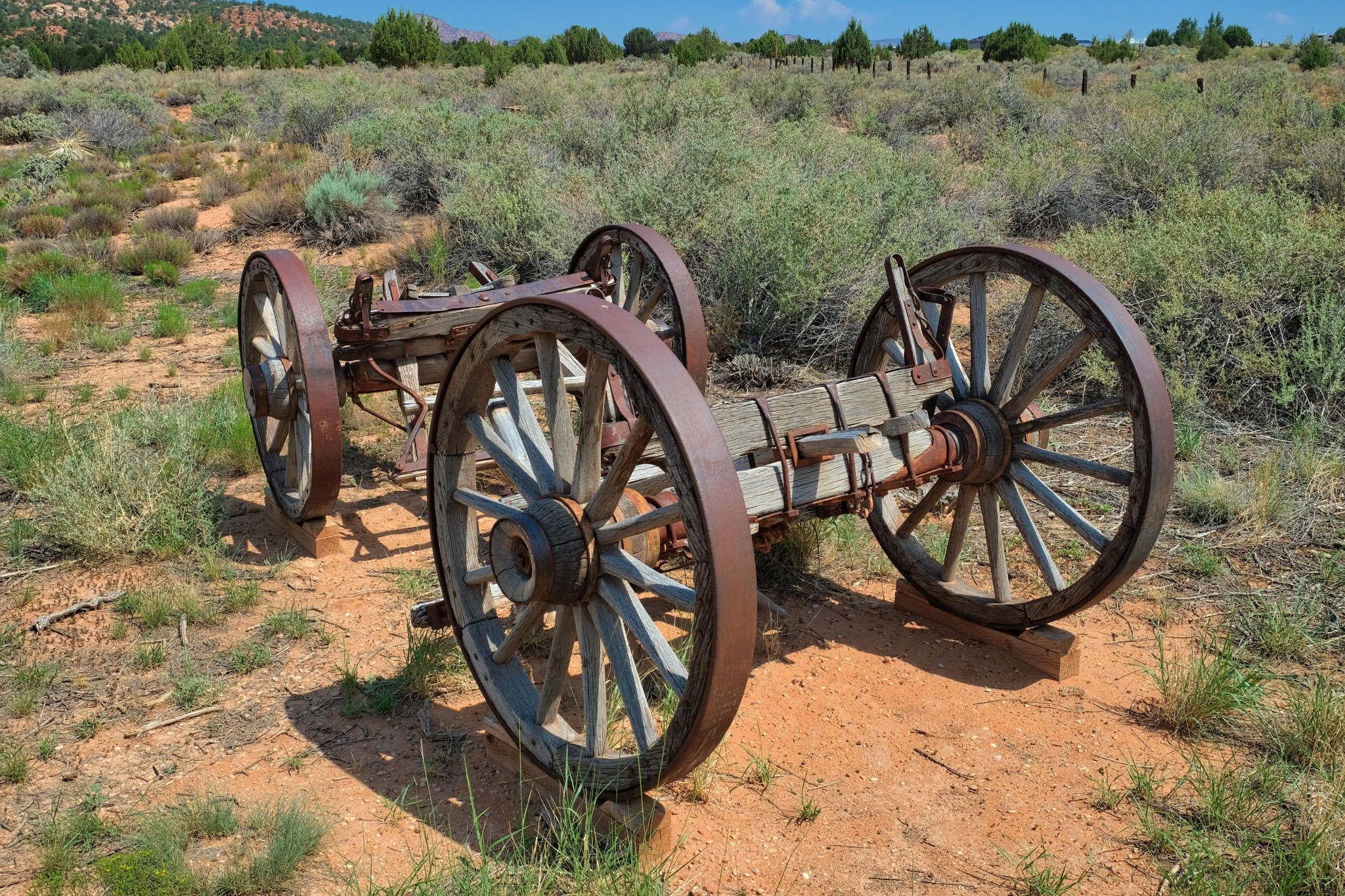 Out on the dry, high elevation chaparral of Northern Arizona, along the road between Zion National Park and the North Rim of the Grand Canyon . . . a remnant of a bygone era . . . The Wild West . . . Pipe Springs National Monument.
Out on the dry, high elevation chaparral of Northern Arizona, along the road between Zion National Park and the North Rim of the Grand Canyon . . . a remnant of a bygone era . . . The Wild West . . . Pipe Springs National Monument.
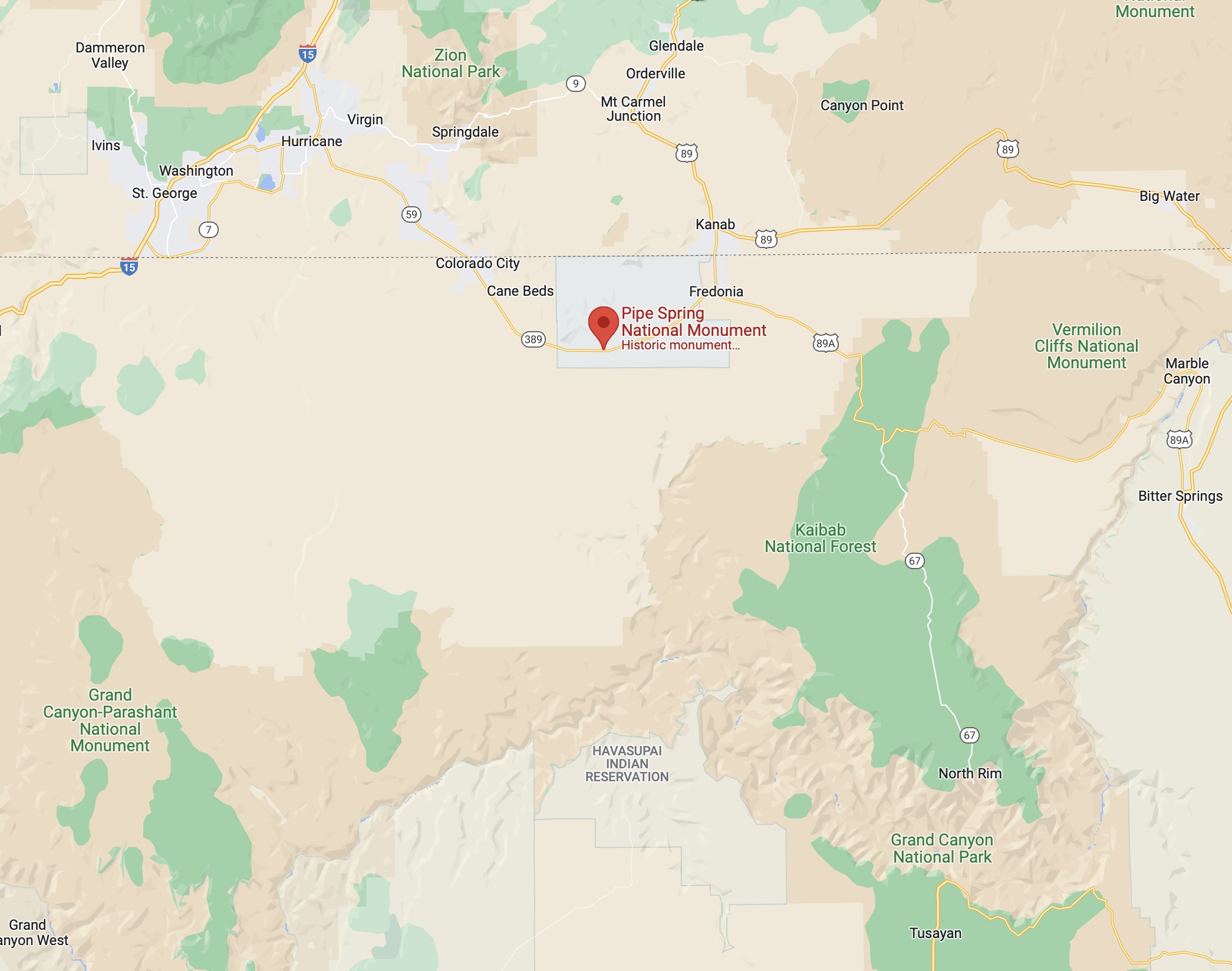 My road trip took me along many wonderful roads.
My road trip took me along many wonderful roads.
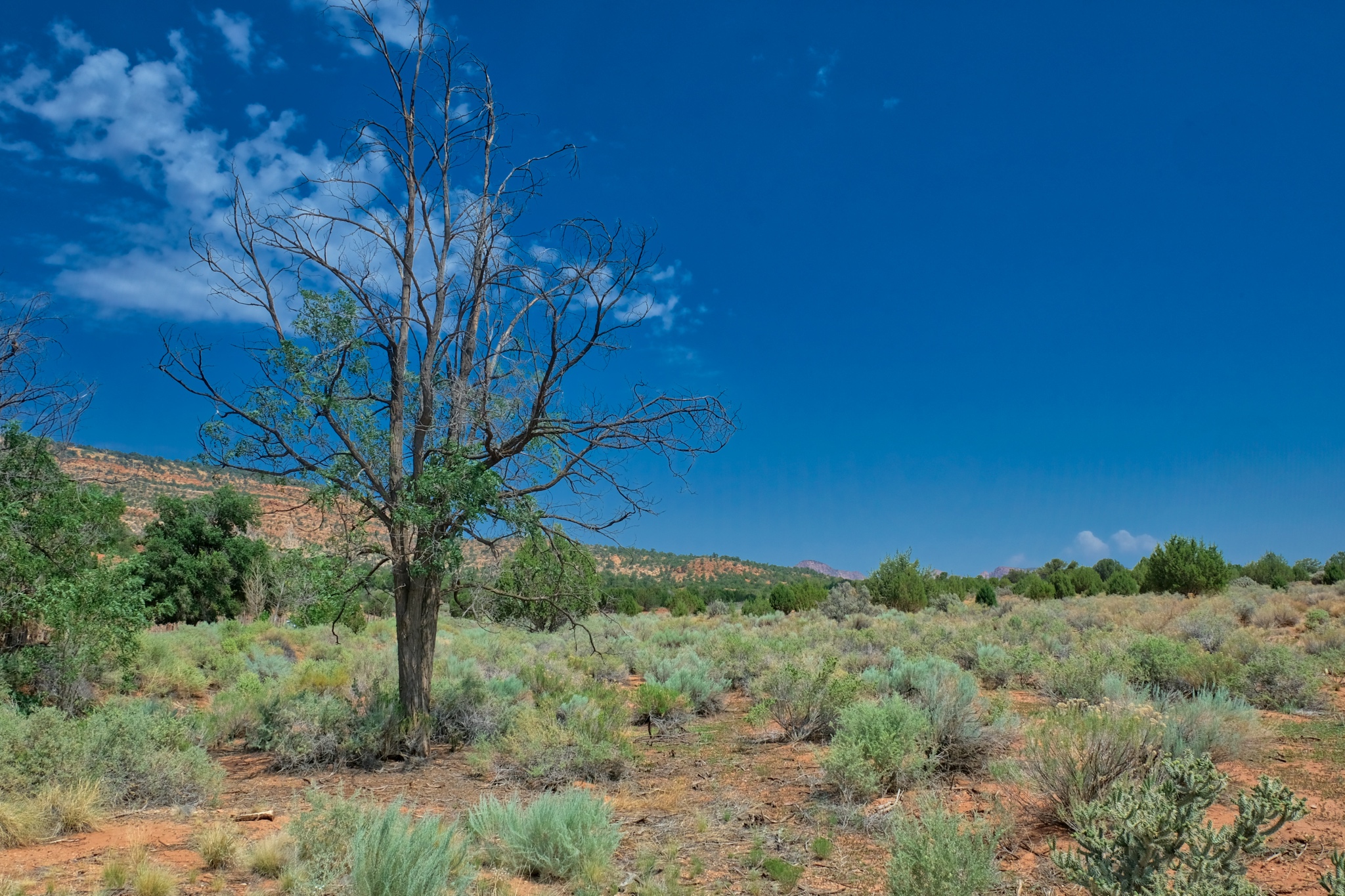 Pipe Springs is established as a grasslands preservation area to reestablish the area as it was before settlers arrived in 1850.
Pipe Springs is established as a grasslands preservation area to reestablish the area as it was before settlers arrived in 1850.
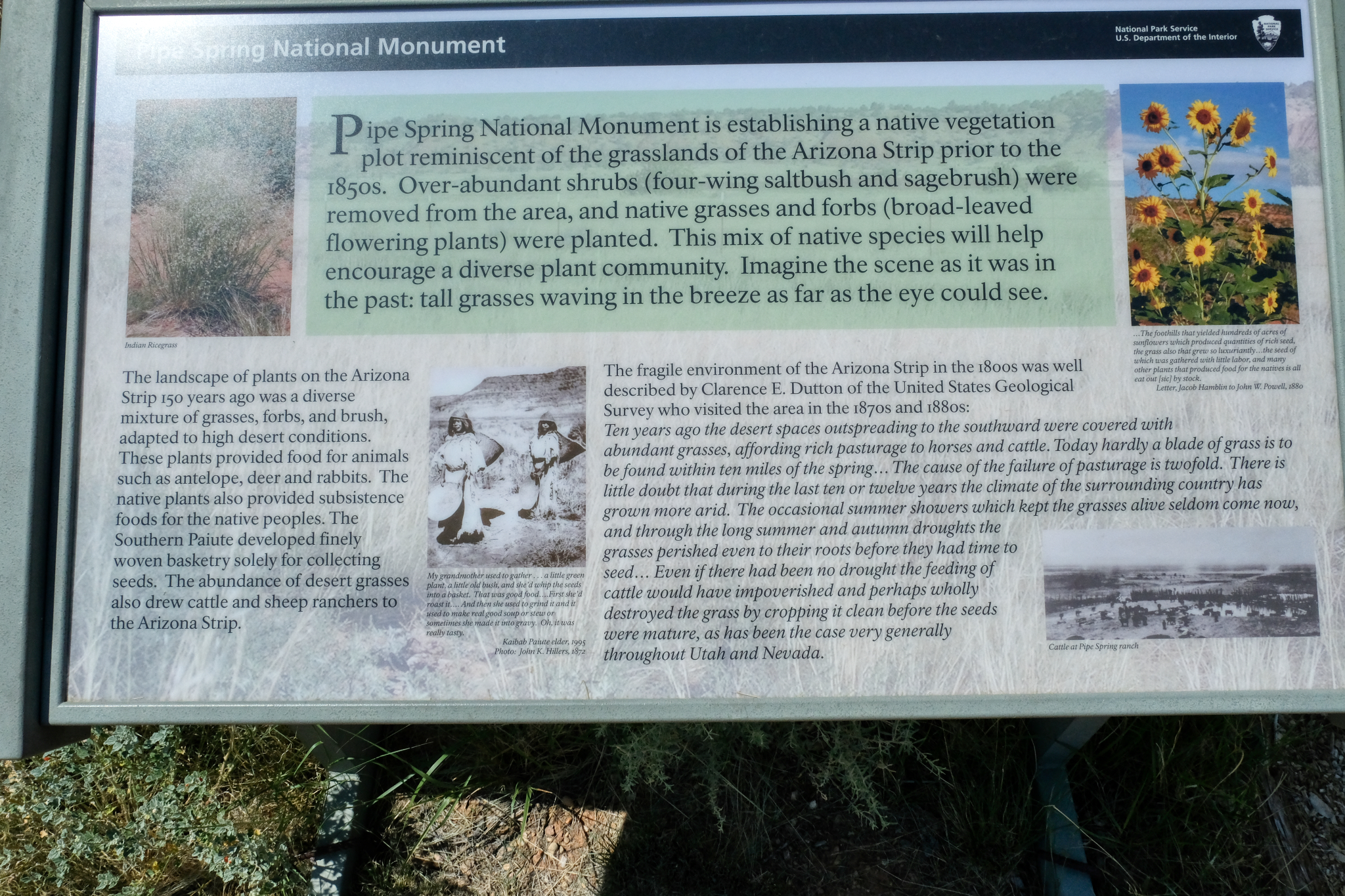 In addition to very informative signage, there was also a fine visitors center.
In addition to very informative signage, there was also a fine visitors center.
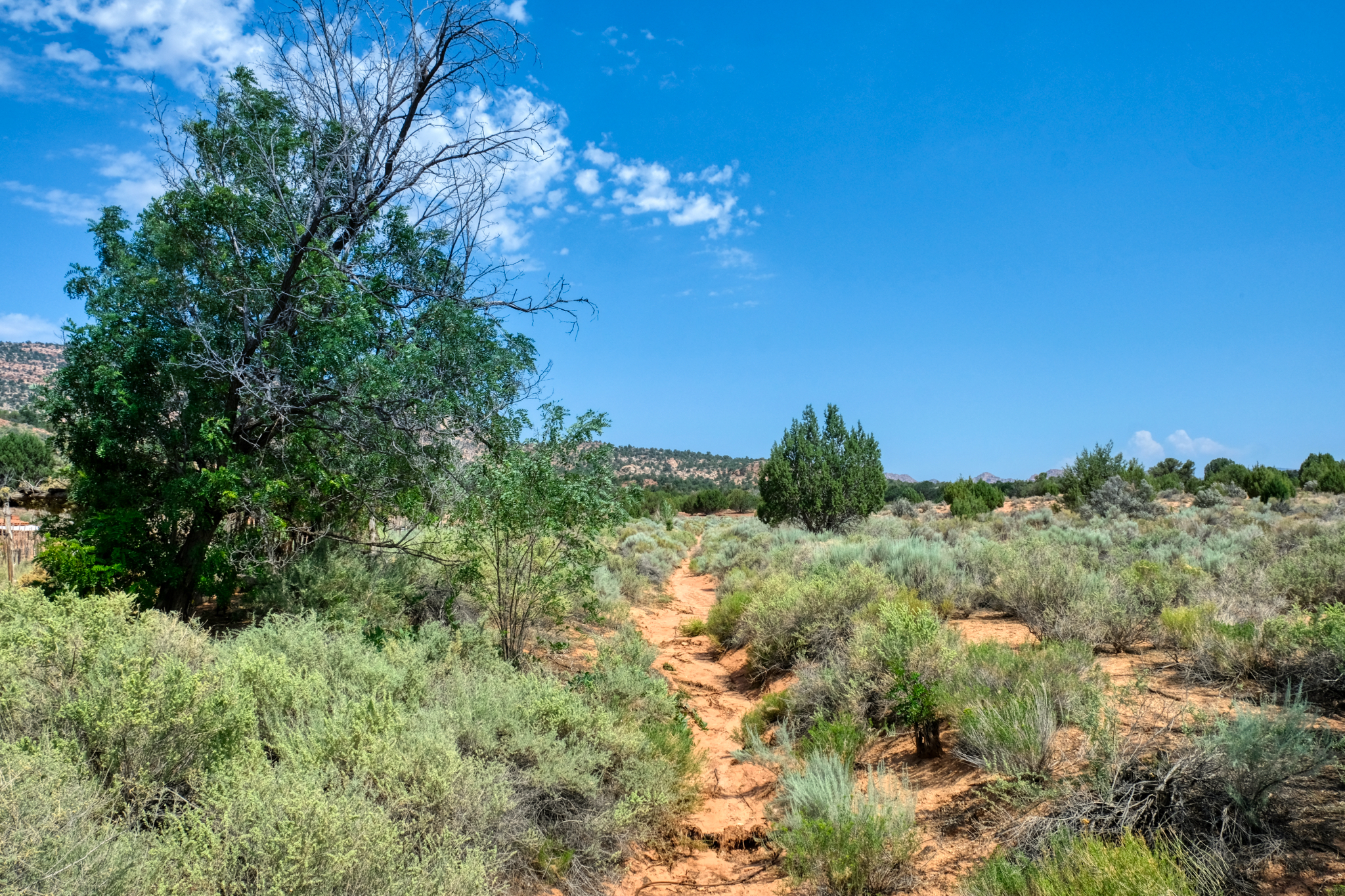 A nice place for a walk to nowhere.
A nice place for a walk to nowhere.
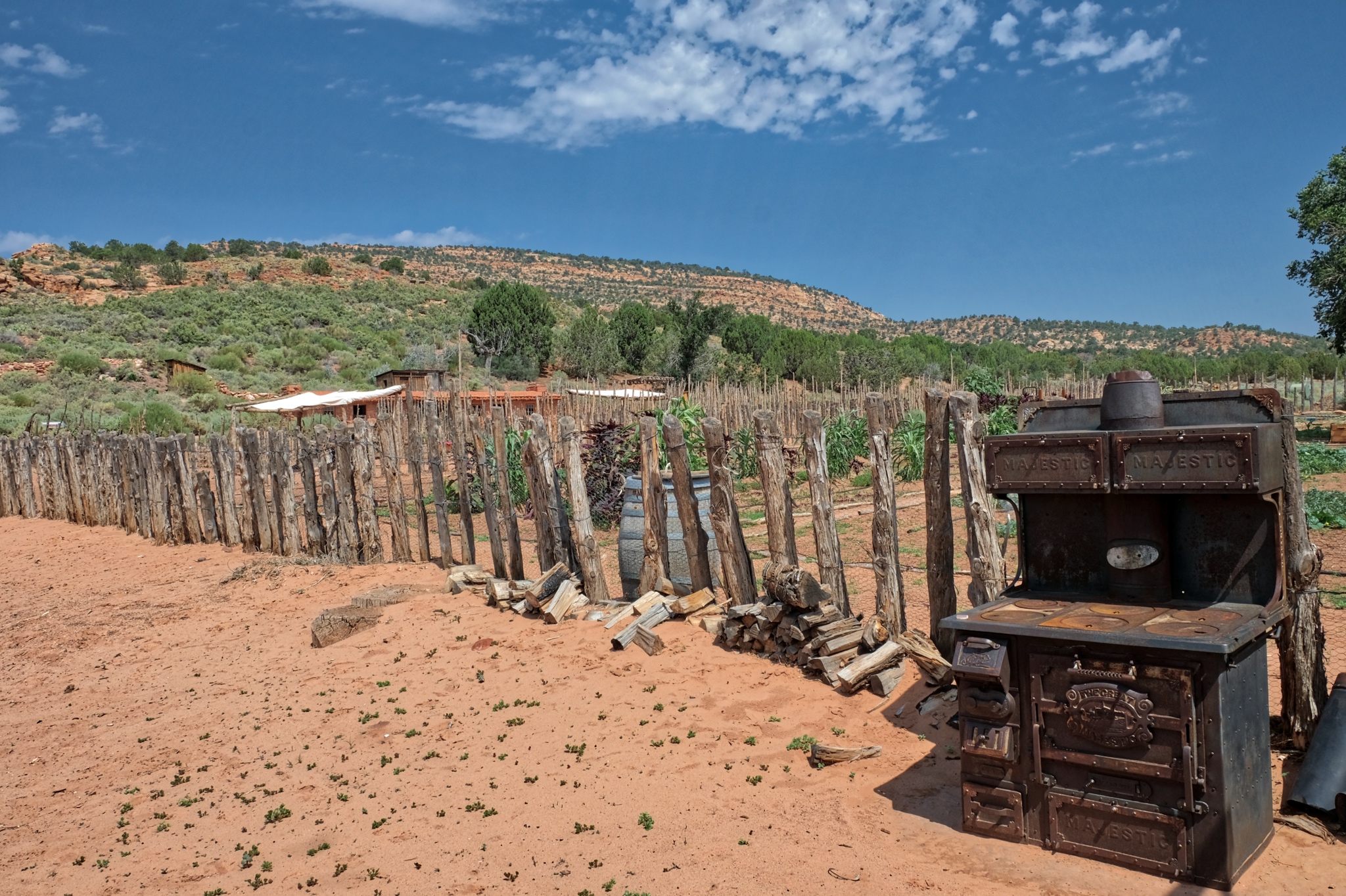 Pipe springs was established at a natural spring as a U.S. Army Calvary Fort, but it was also a self-sustaining farm to support the soldiers stationed there during 'The Indian Wars' in the region.
Pipe springs was established at a natural spring as a U.S. Army Calvary Fort, but it was also a self-sustaining farm to support the soldiers stationed there during 'The Indian Wars' in the region.
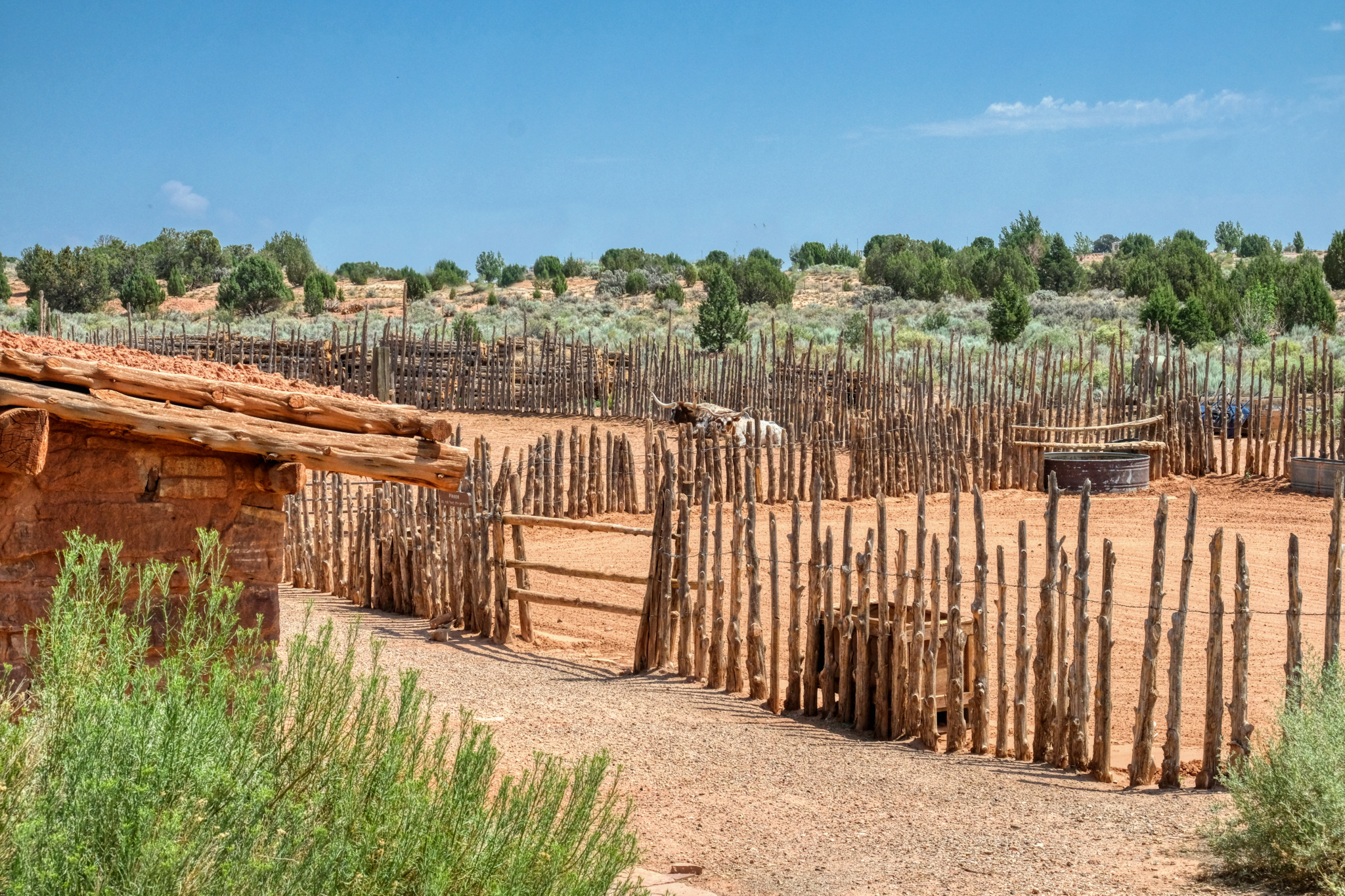 The National Monument still maintains a farm on site in the manner of the settlers and soldiers around 1850. A very nice depiction of the living conditions and methods of the early Western settlers.
The National Monument still maintains a farm on site in the manner of the settlers and soldiers around 1850. A very nice depiction of the living conditions and methods of the early Western settlers.
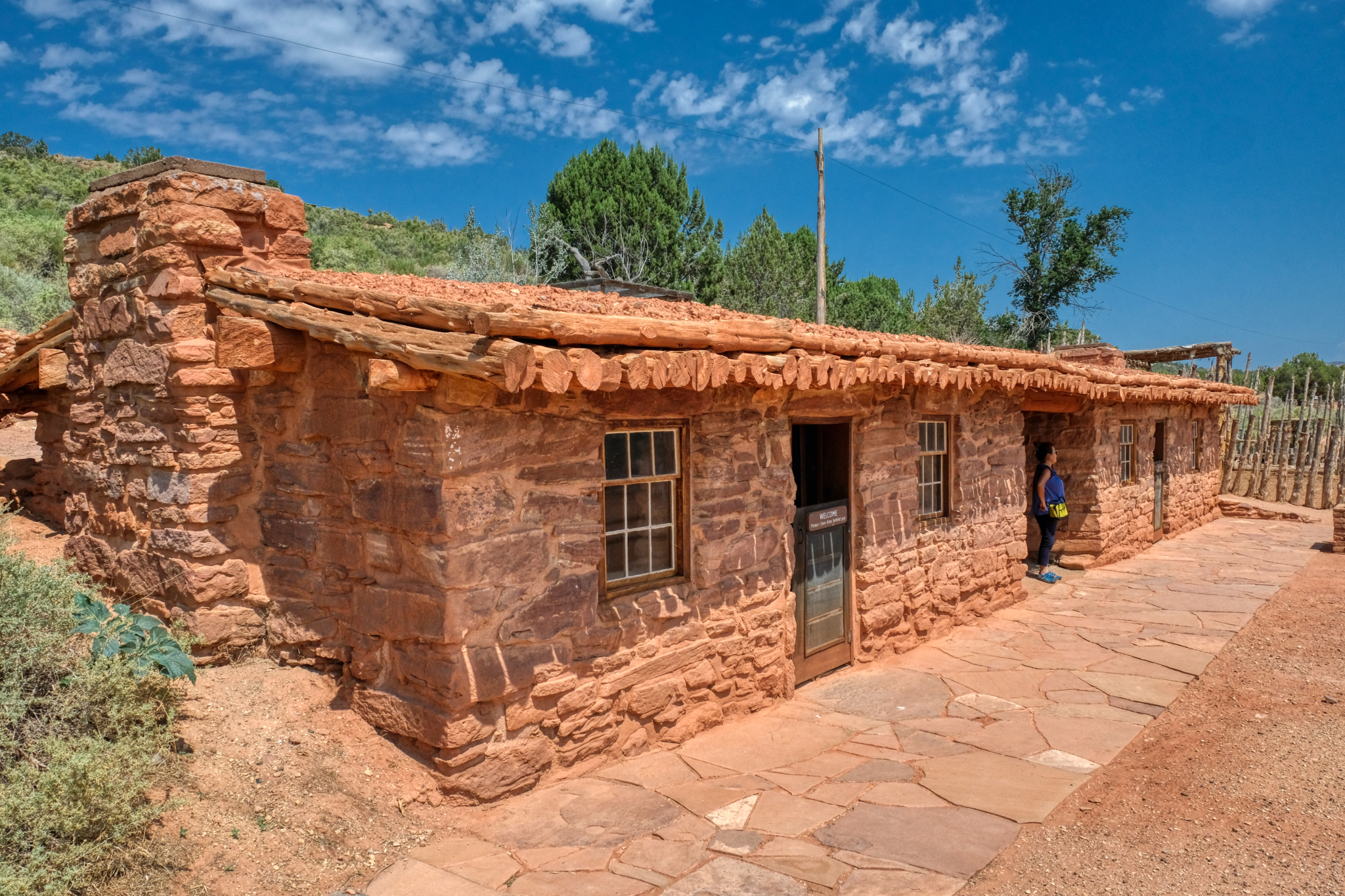 A nicely restored period blacksmith shop and tack house.
A nicely restored period blacksmith shop and tack house.
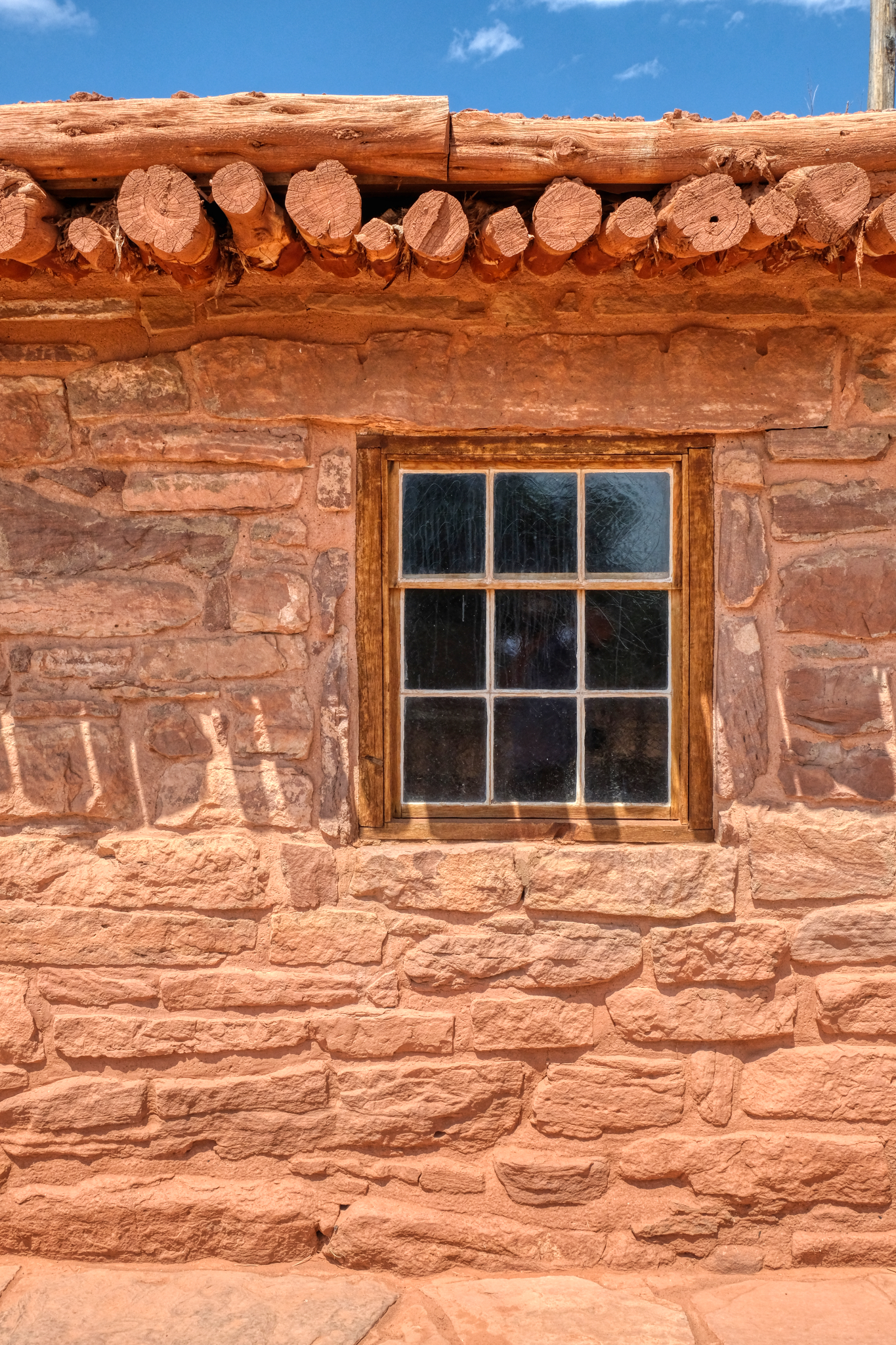 Beautiful stone construction.
Beautiful stone construction.
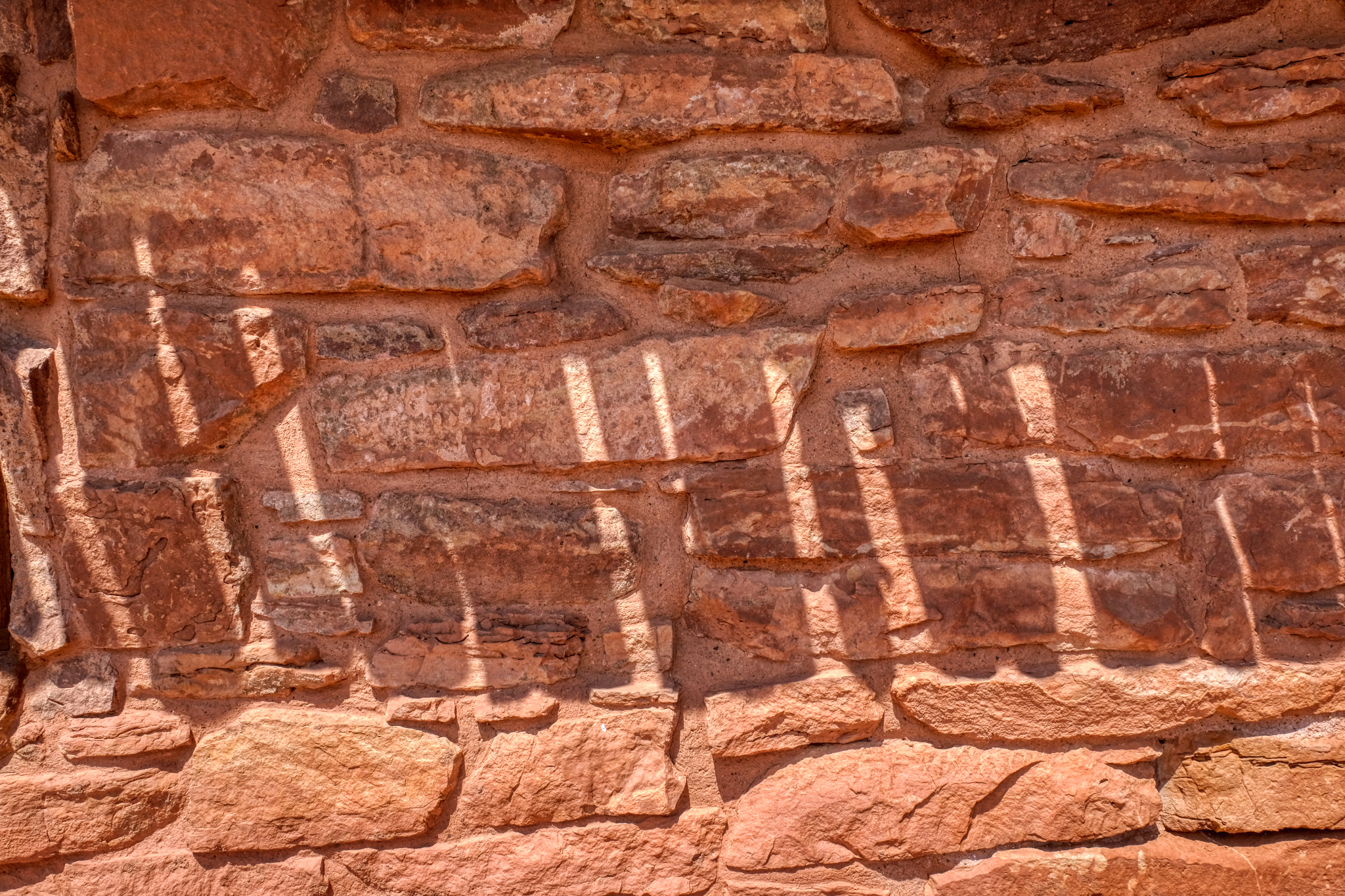 It was a hot day near noon when we arrive . . . wonderful shadows on the orange stone tack house.
It was a hot day near noon when we arrive . . . wonderful shadows on the orange stone tack house.
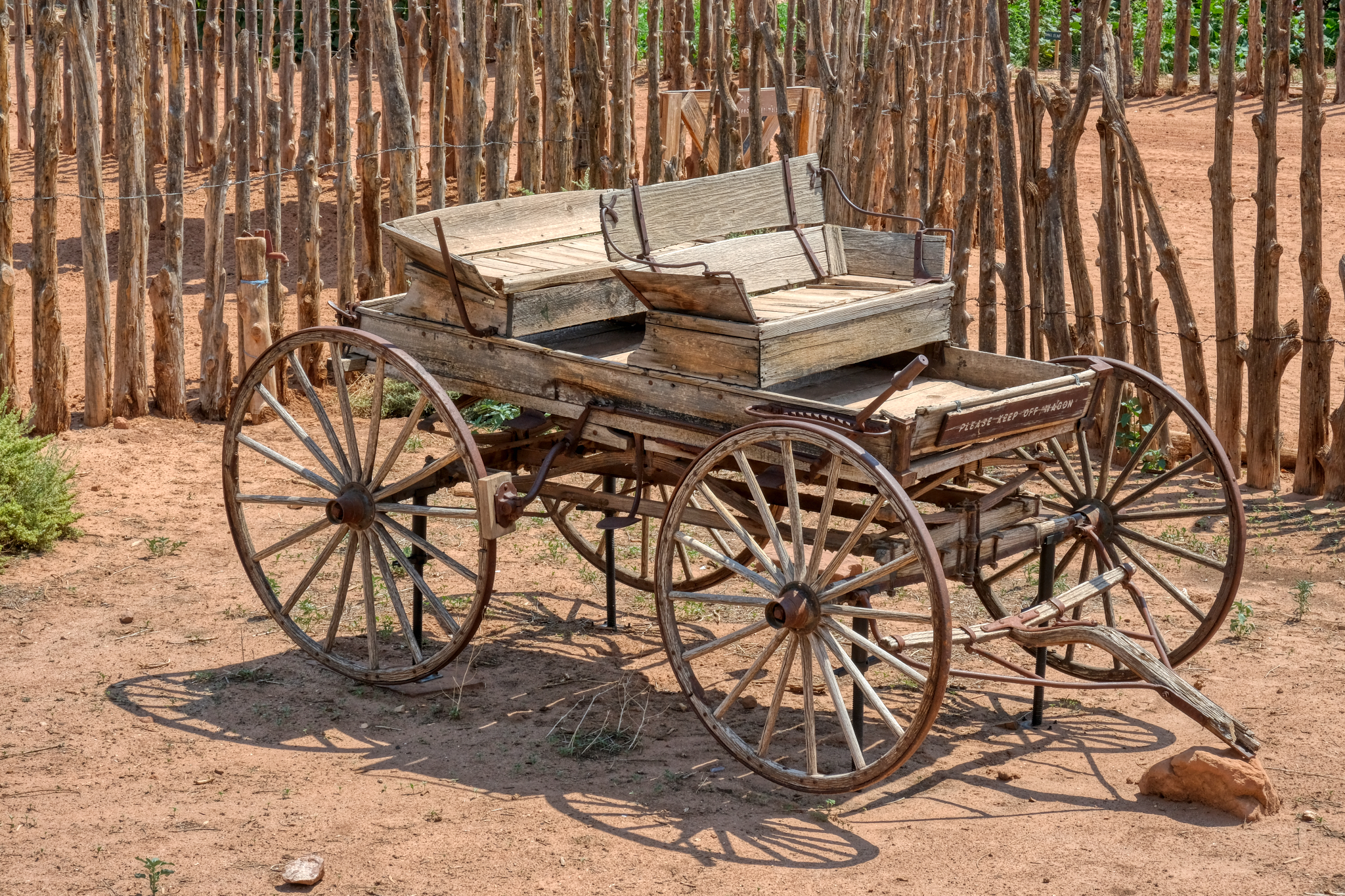 There were some beautiful antique wagons sitting about the grounds. This buggy was fantastic.
There were some beautiful antique wagons sitting about the grounds. This buggy was fantastic.
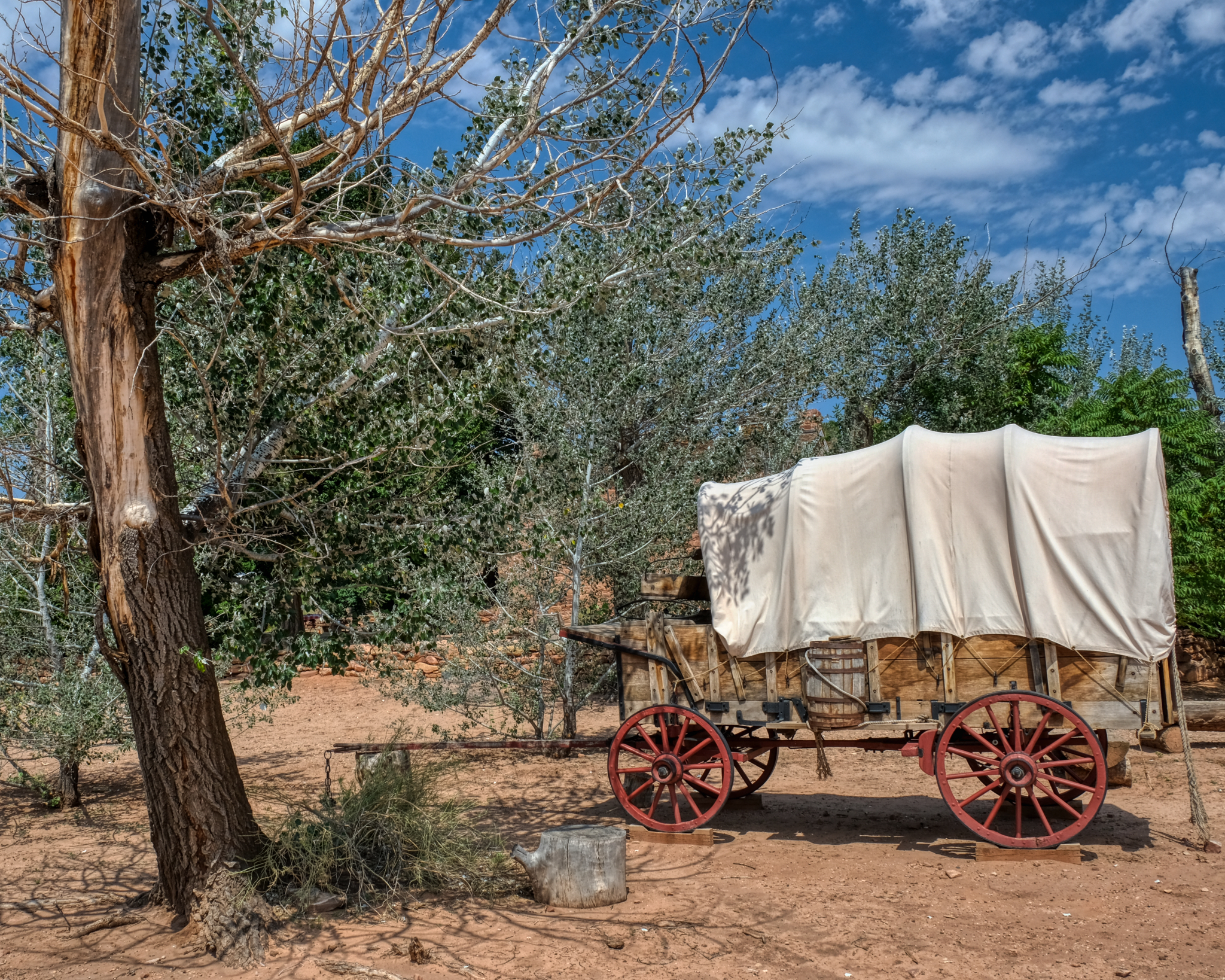 The classic western covered wagon.
The classic western covered wagon.
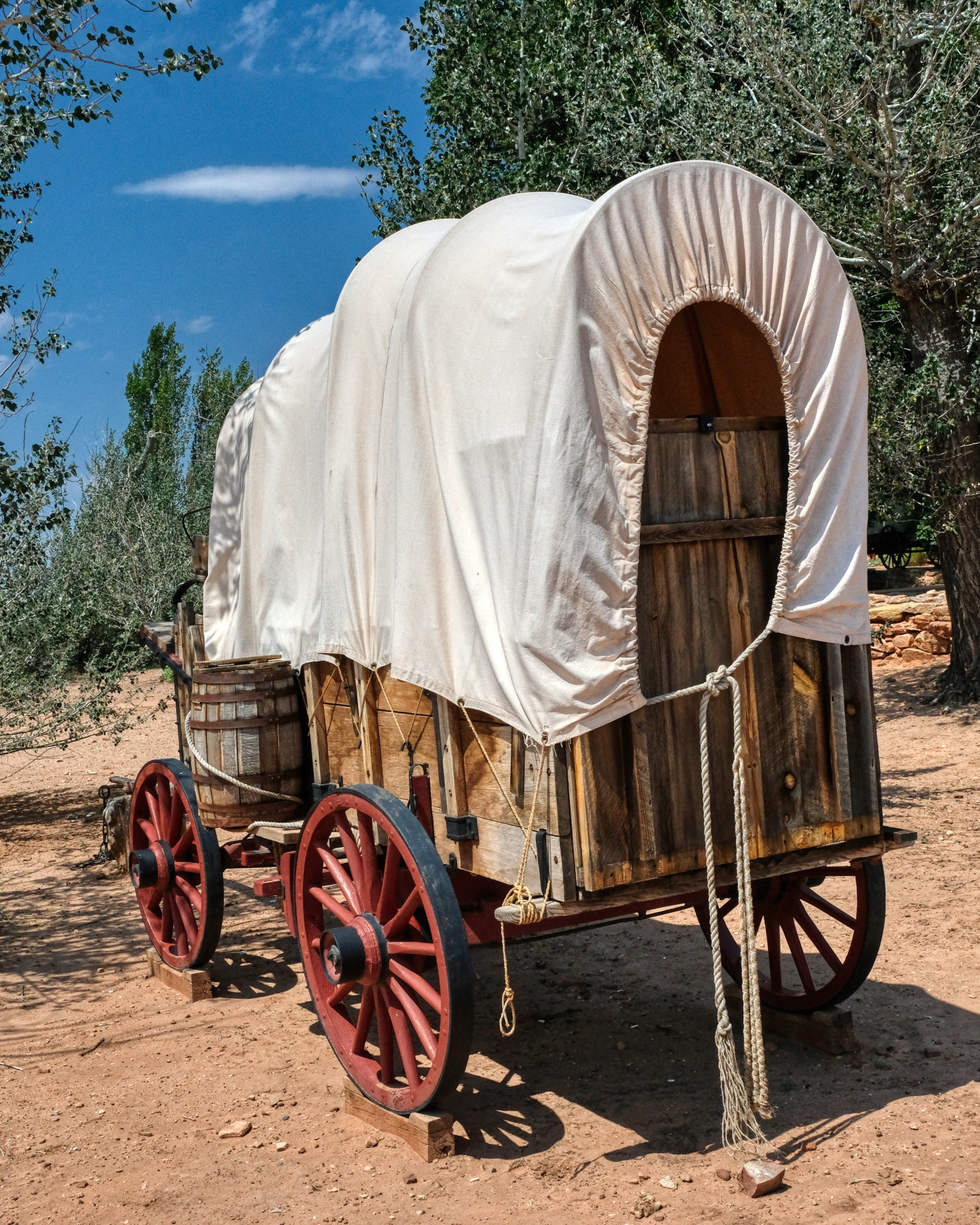 Can you imagine being one of the many thousands who crossed the breadth of America in one of these covered wagons. The faith, hope, and fortitude they must have had!
Can you imagine being one of the many thousands who crossed the breadth of America in one of these covered wagons. The faith, hope, and fortitude they must have had!
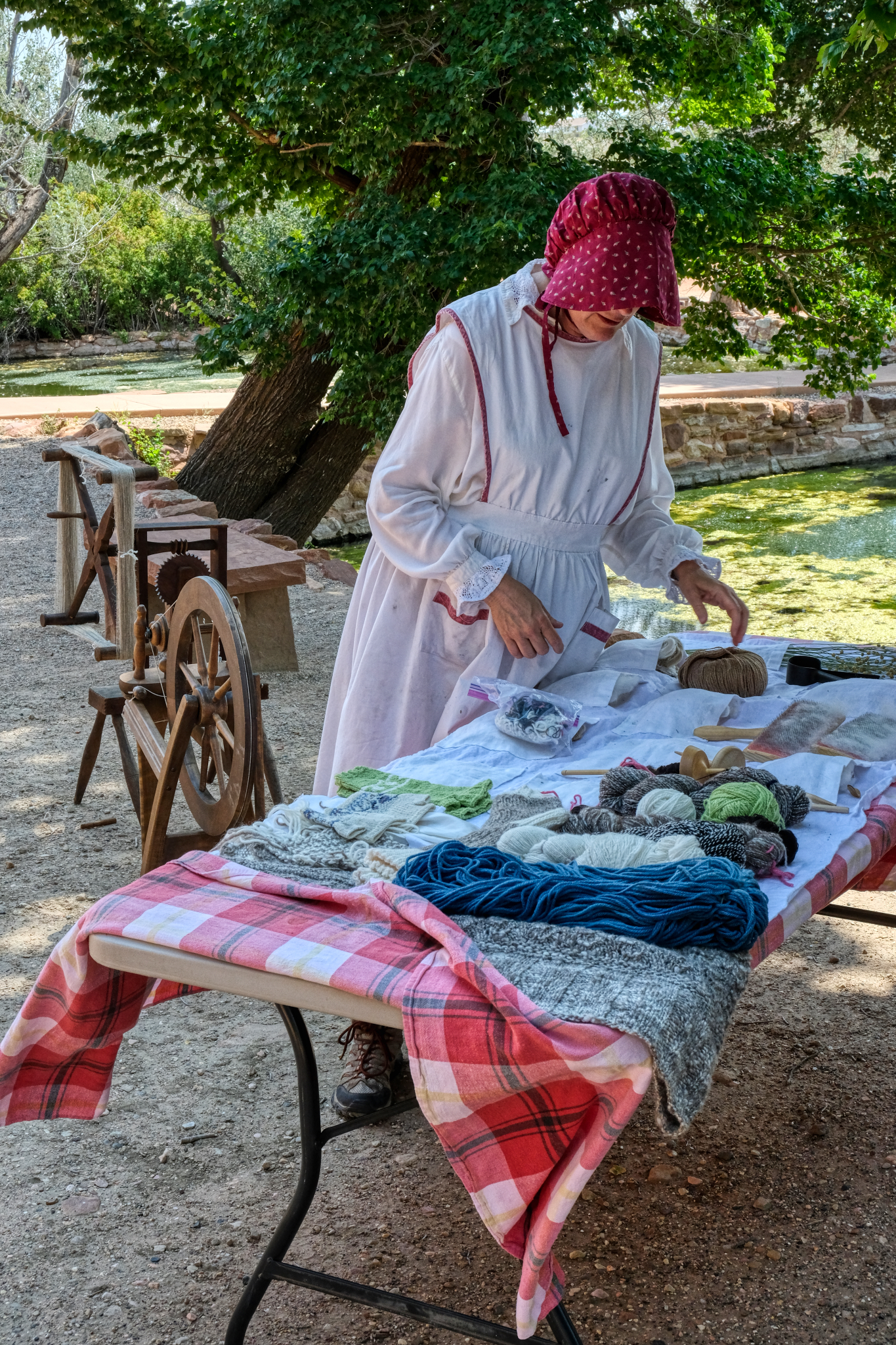 One of the park staff dressed in period costume displaying the kind of textiles the pioneers there would have been making in the 1860s.
One of the park staff dressed in period costume displaying the kind of textiles the pioneers there would have been making in the 1860s.
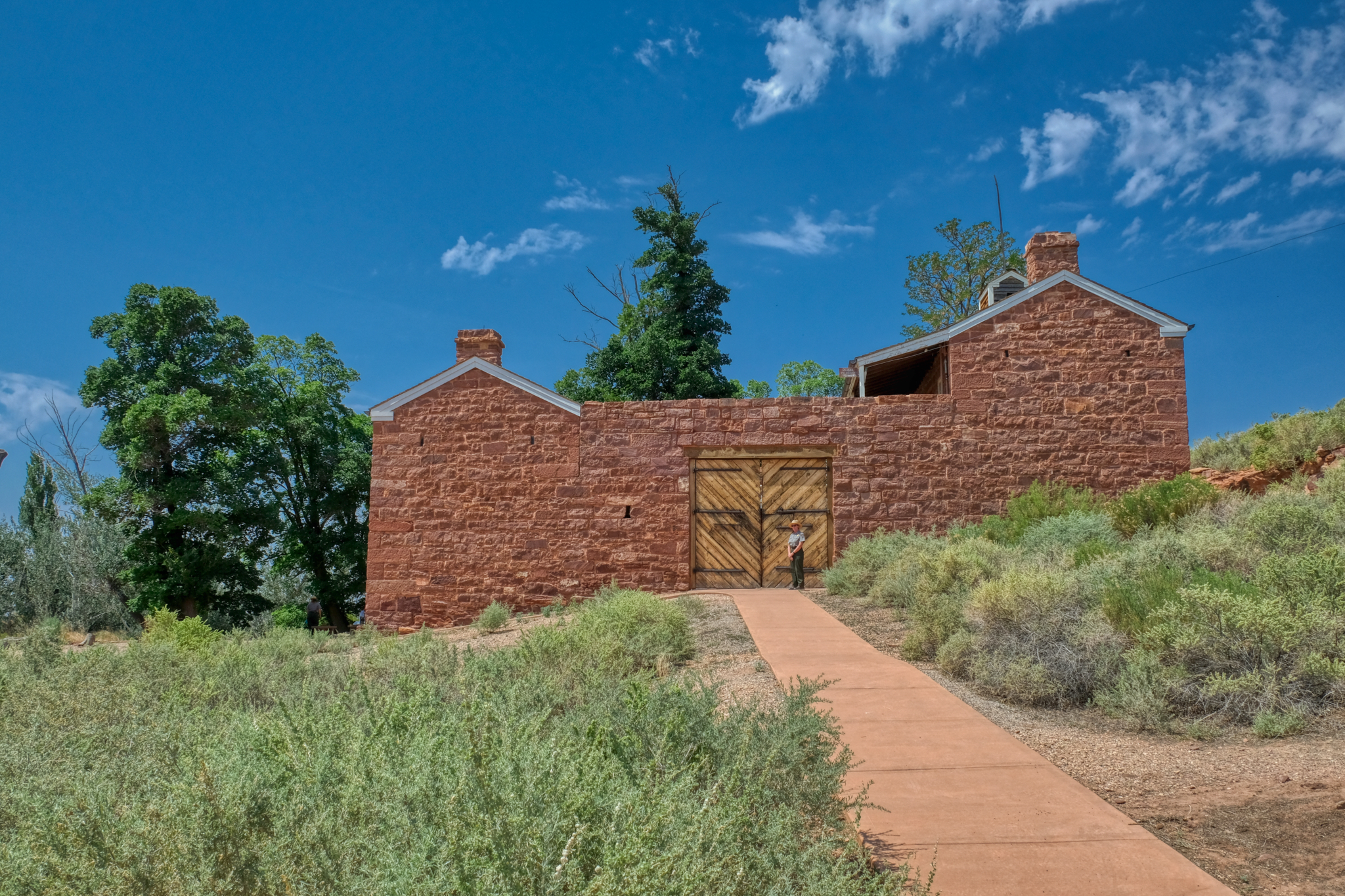 The real purpose of Pipe Springs was as a military fort to provide safety and security for settlers and ranchers during periods of 'Indian trouble.'
The real purpose of Pipe Springs was as a military fort to provide safety and security for settlers and ranchers during periods of 'Indian trouble.'
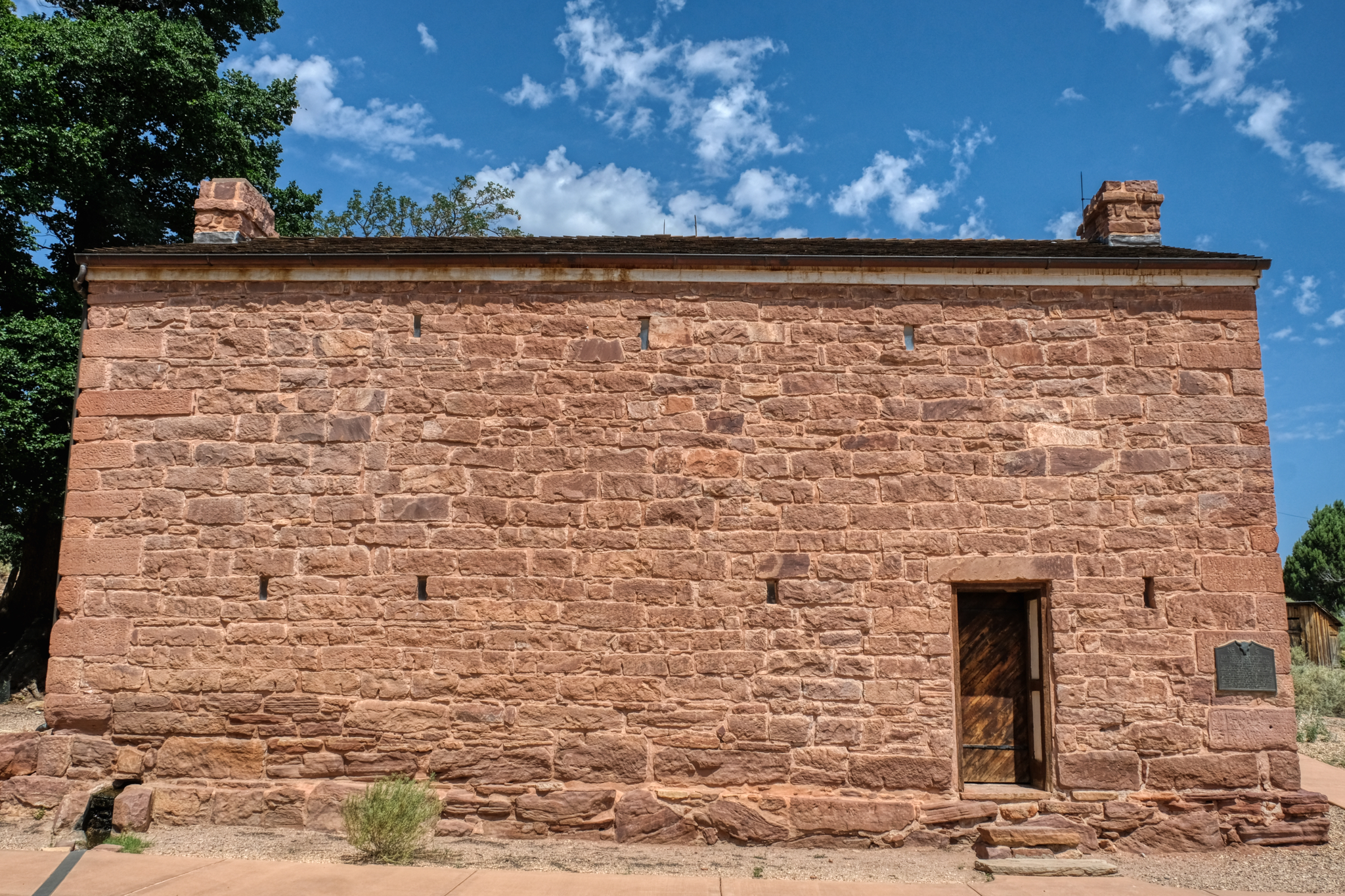 It looks very secure to me. We did not go on the inside.
It looks very secure to me. We did not go on the inside.
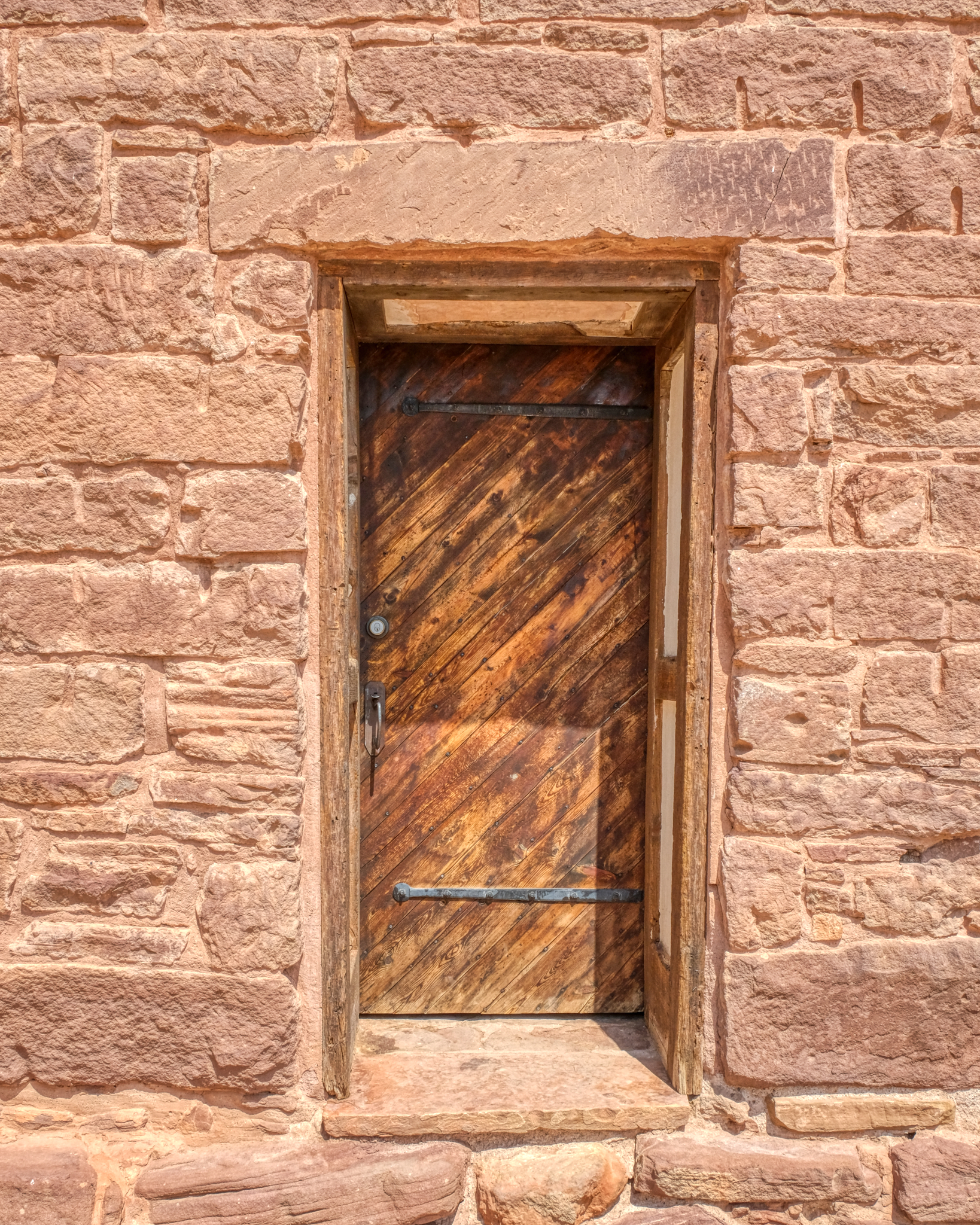 A very photogenic old door at Pipe Springs Fort.
A very photogenic old door at Pipe Springs Fort.
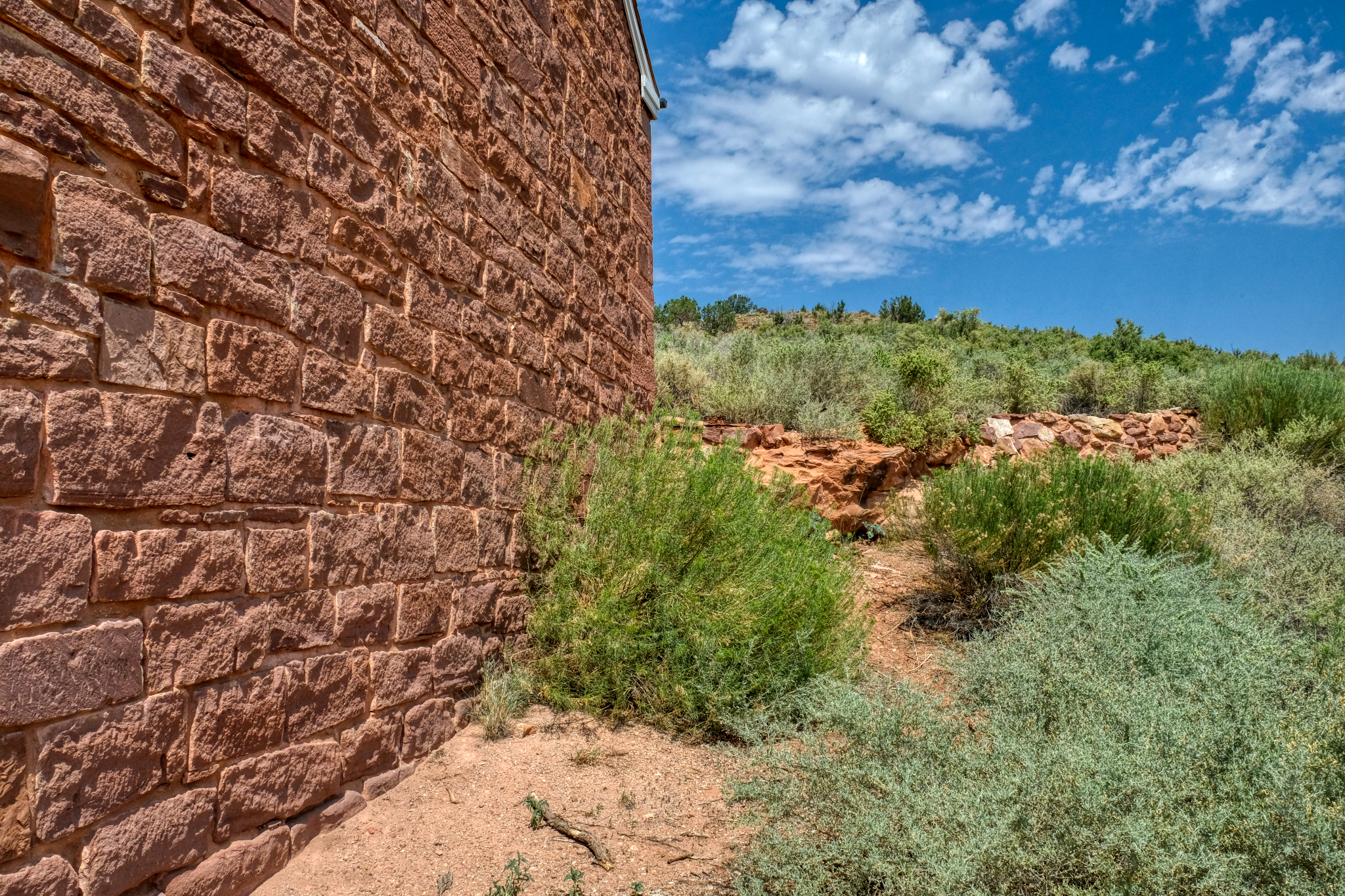 This photo represents, for me, the isolation of the fort within the vast western landscape.
This photo represents, for me, the isolation of the fort within the vast western landscape.
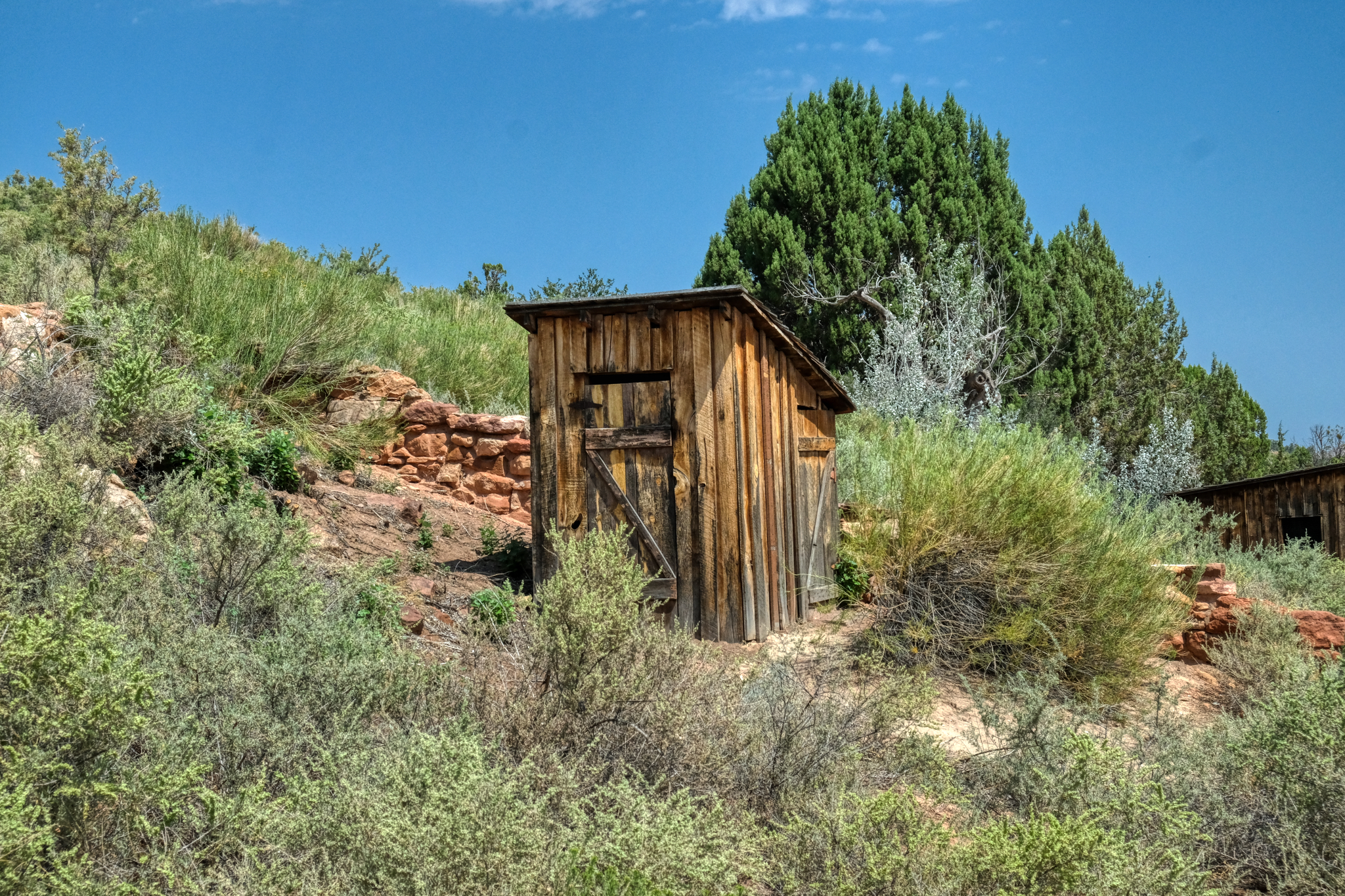 Yep, the outhouse.
Yep, the outhouse.
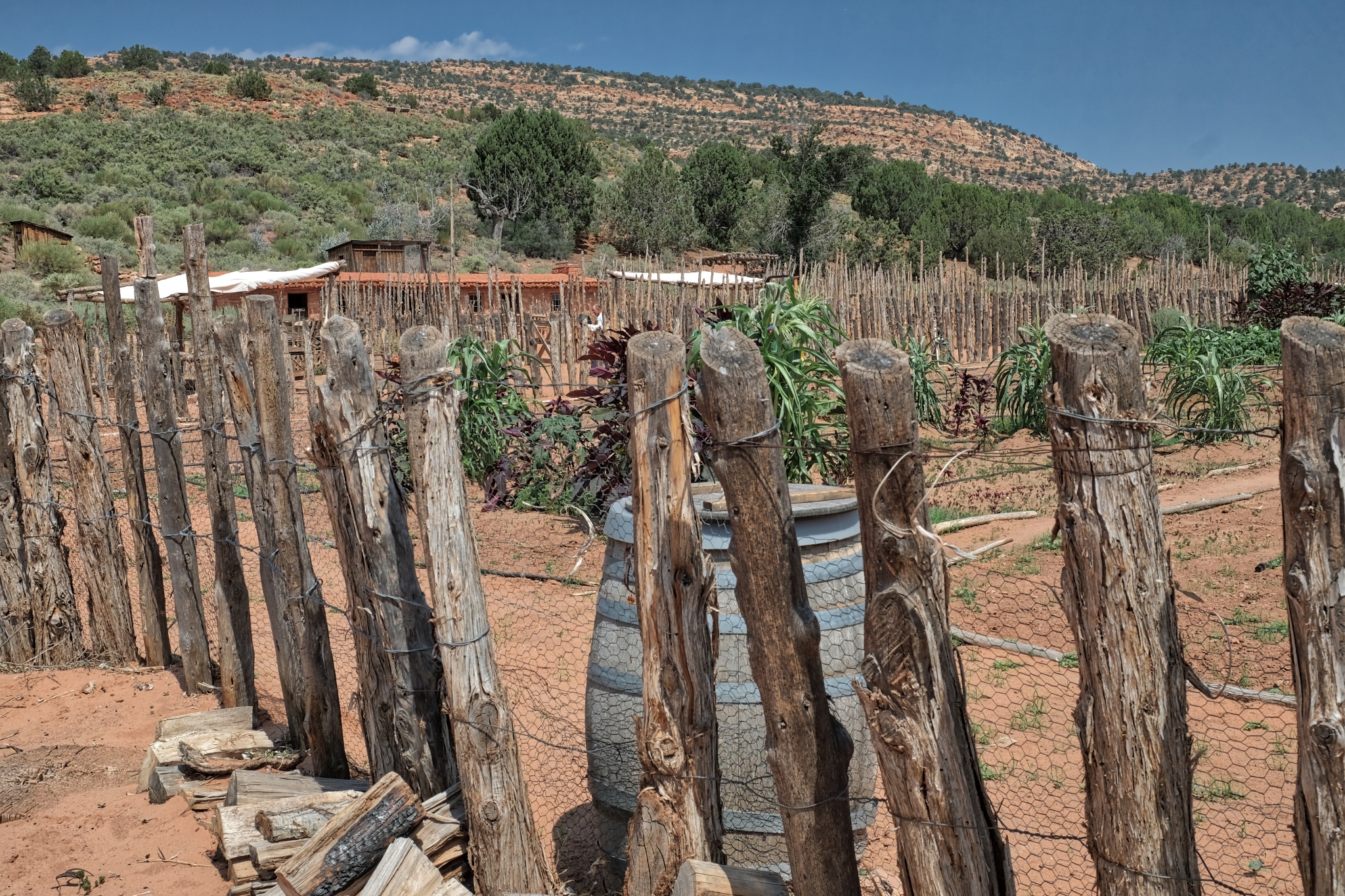 And so we left Pipe Springs to drive on toward the North Rim of the Grand Canyon.
And so we left Pipe Springs to drive on toward the North Rim of the Grand Canyon.
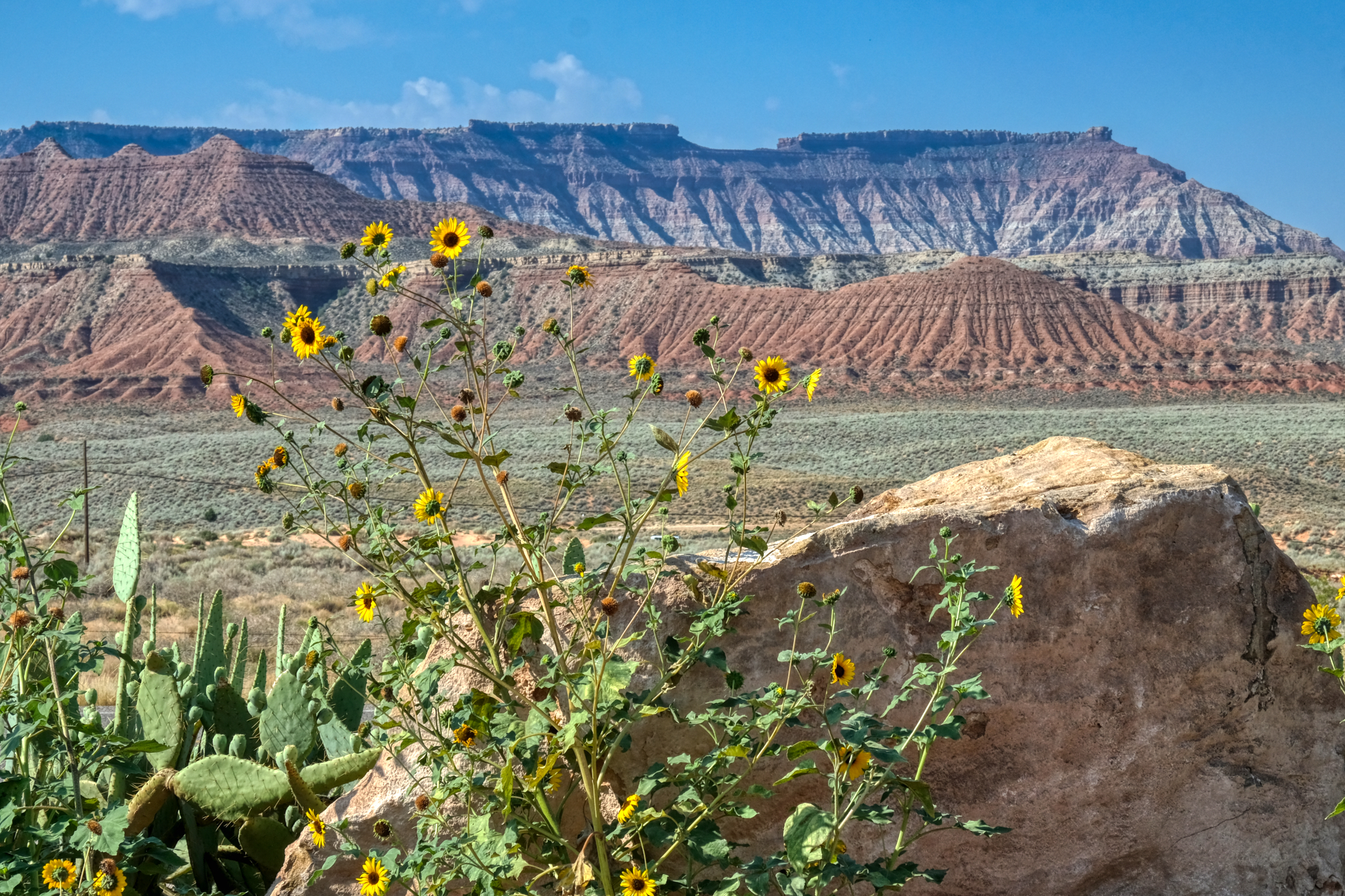 Driving along Arizona Highway 389 trough beautiful mesa country . . .with sunflowers?
Driving along Arizona Highway 389 trough beautiful mesa country . . .with sunflowers?
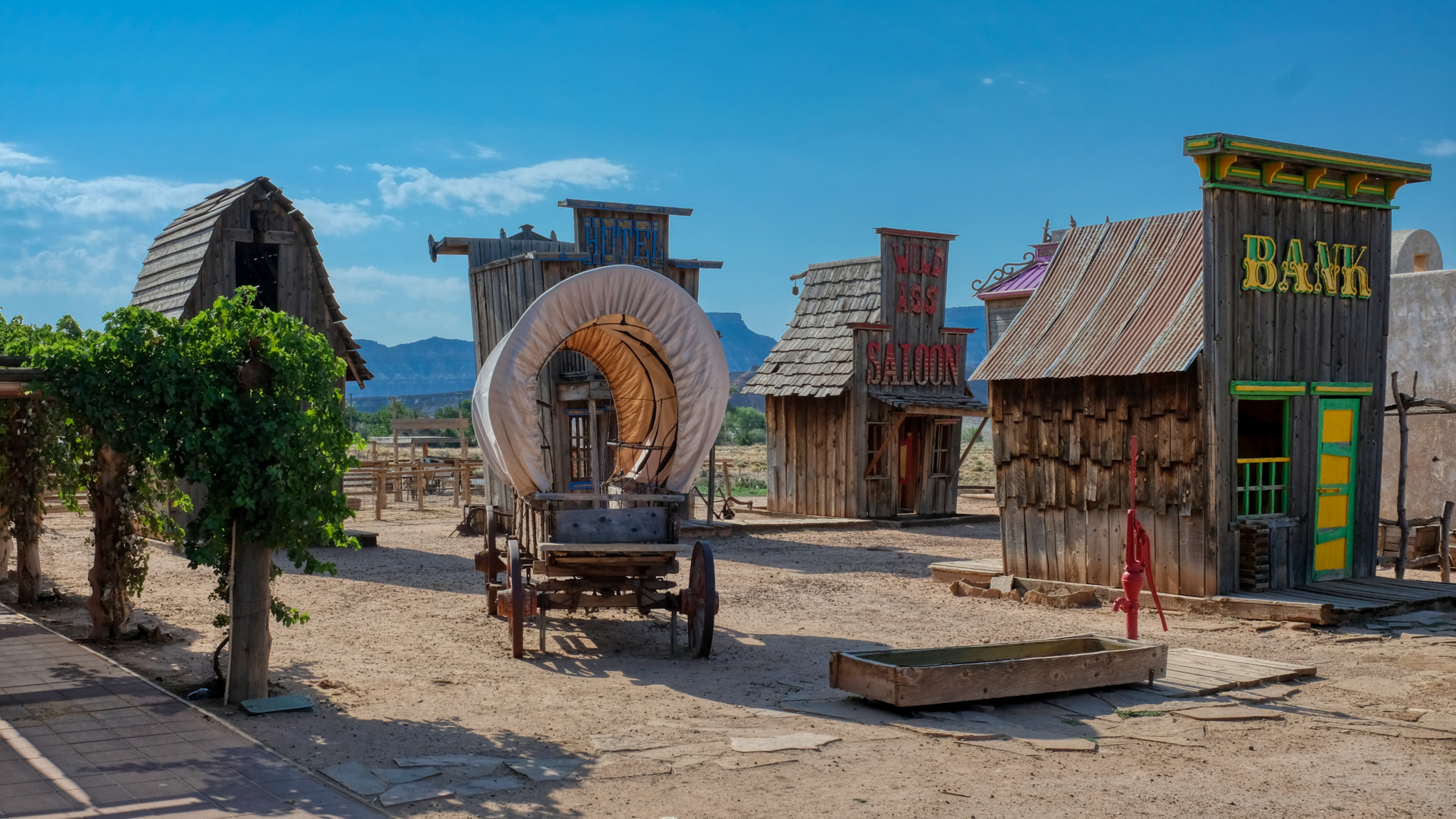 "Just another roadside attraction" . . . a "Wild West Souvenir Store" out along the highway with a cartoonish Wild West Town "Photograph You Family and Friends!" the sign said. I didn't pay the US$5.oo, but instead took photos through the fence . . . duh!
"Just another roadside attraction" . . . a "Wild West Souvenir Store" out along the highway with a cartoonish Wild West Town "Photograph You Family and Friends!" the sign said. I didn't pay the US$5.oo, but instead took photos through the fence . . . duh!
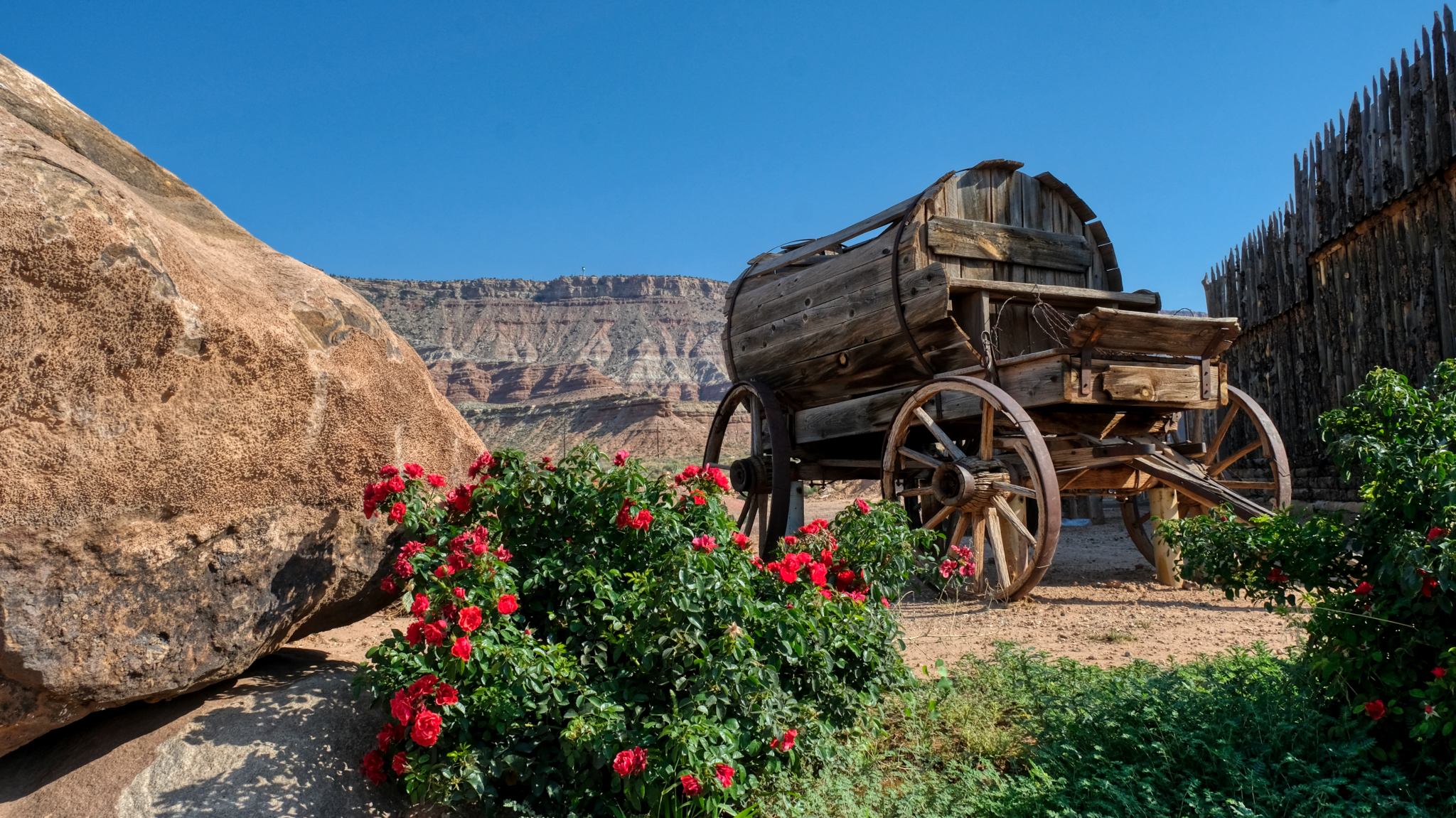 There was a magnificent antique water wagon out back of the store . . . a reminder of the realities of trying to survive in such a dry climate a century-and-a-half ago.
There was a magnificent antique water wagon out back of the store . . . a reminder of the realities of trying to survive in such a dry climate a century-and-a-half ago.
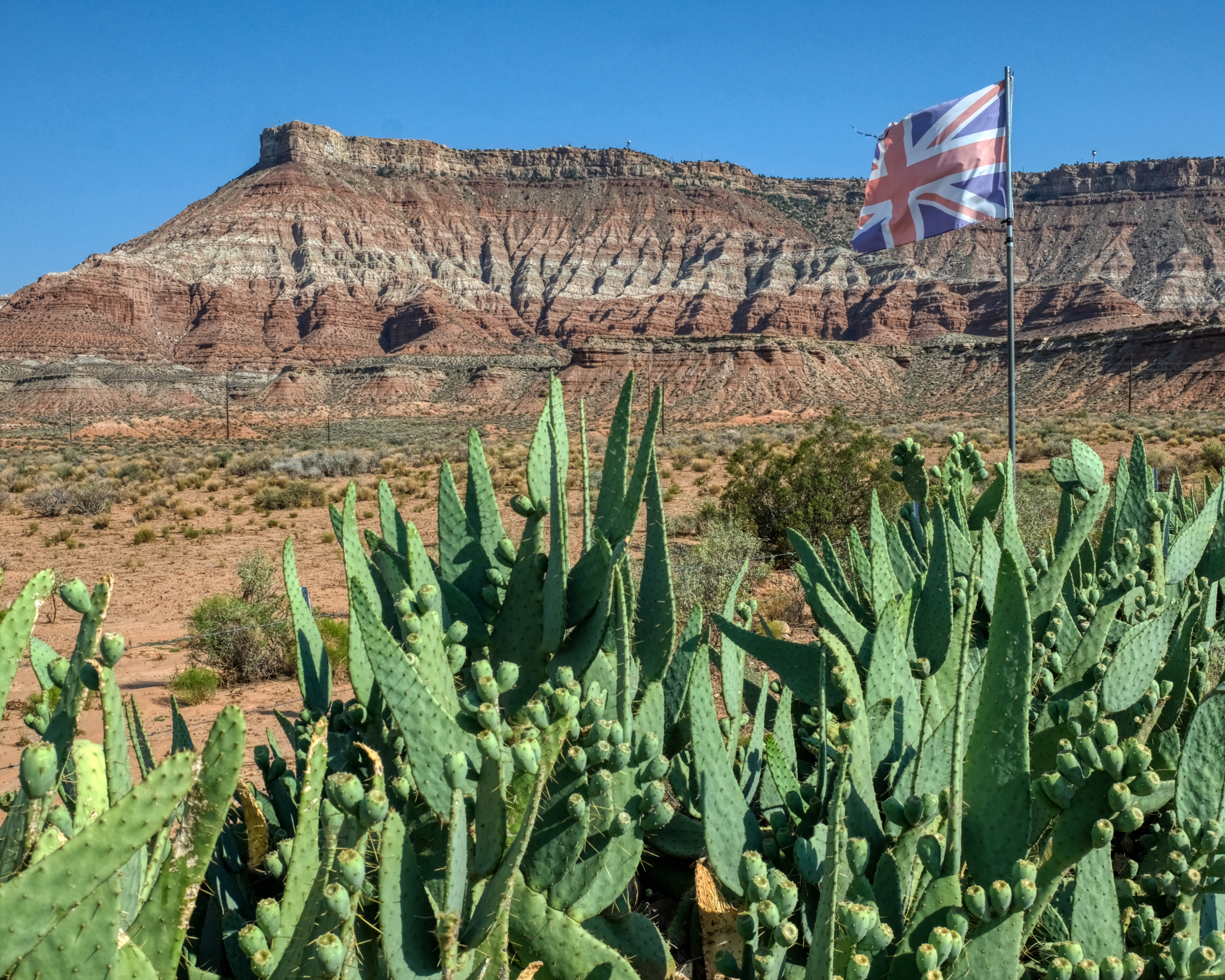 The Western Store was trying to lure tourists from the UK apparently.
The Western Store was trying to lure tourists from the UK apparently.
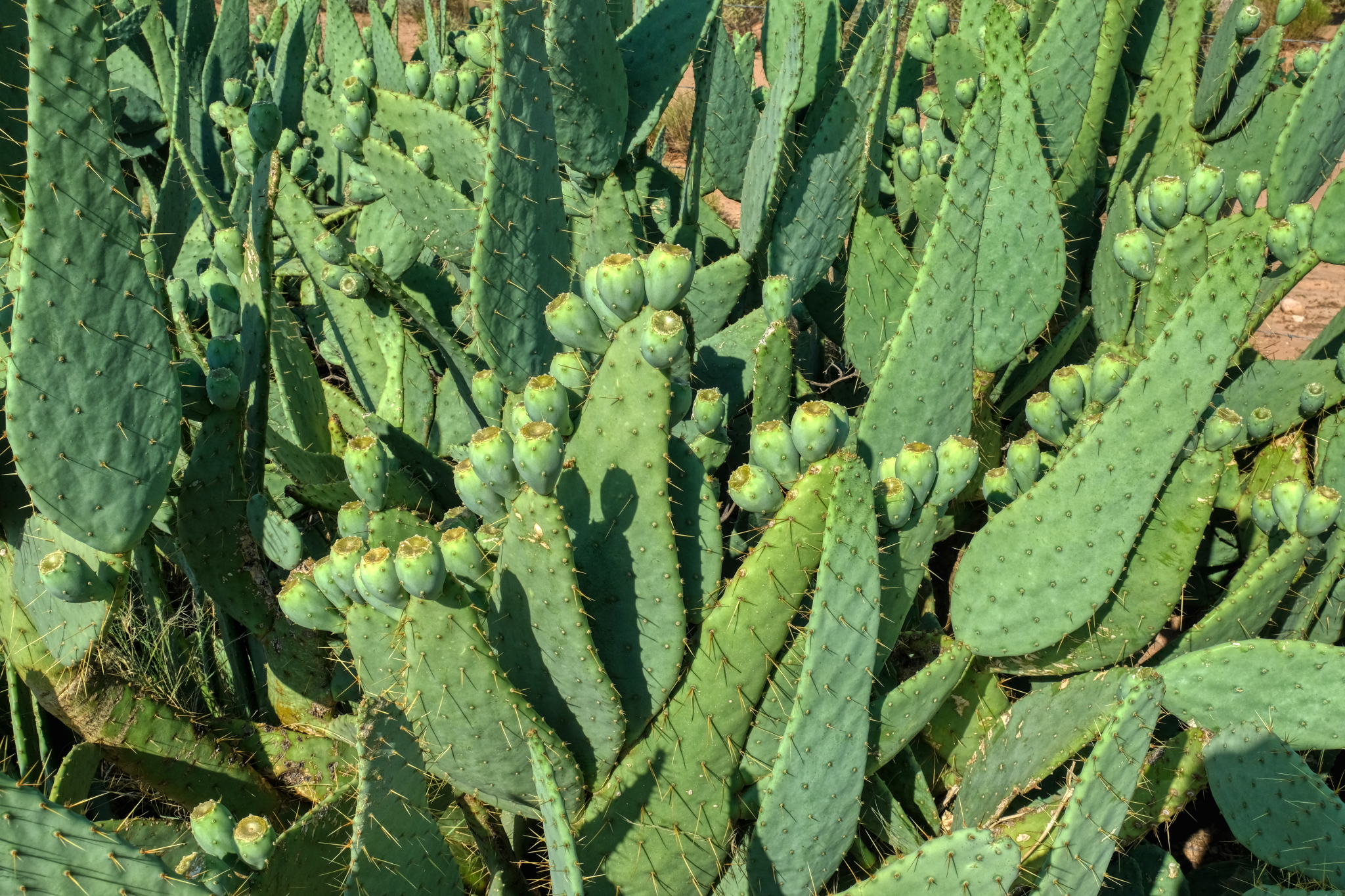 There was a fantastic clump of prickly pear cactus next to their fence.
There was a fantastic clump of prickly pear cactus next to their fence.
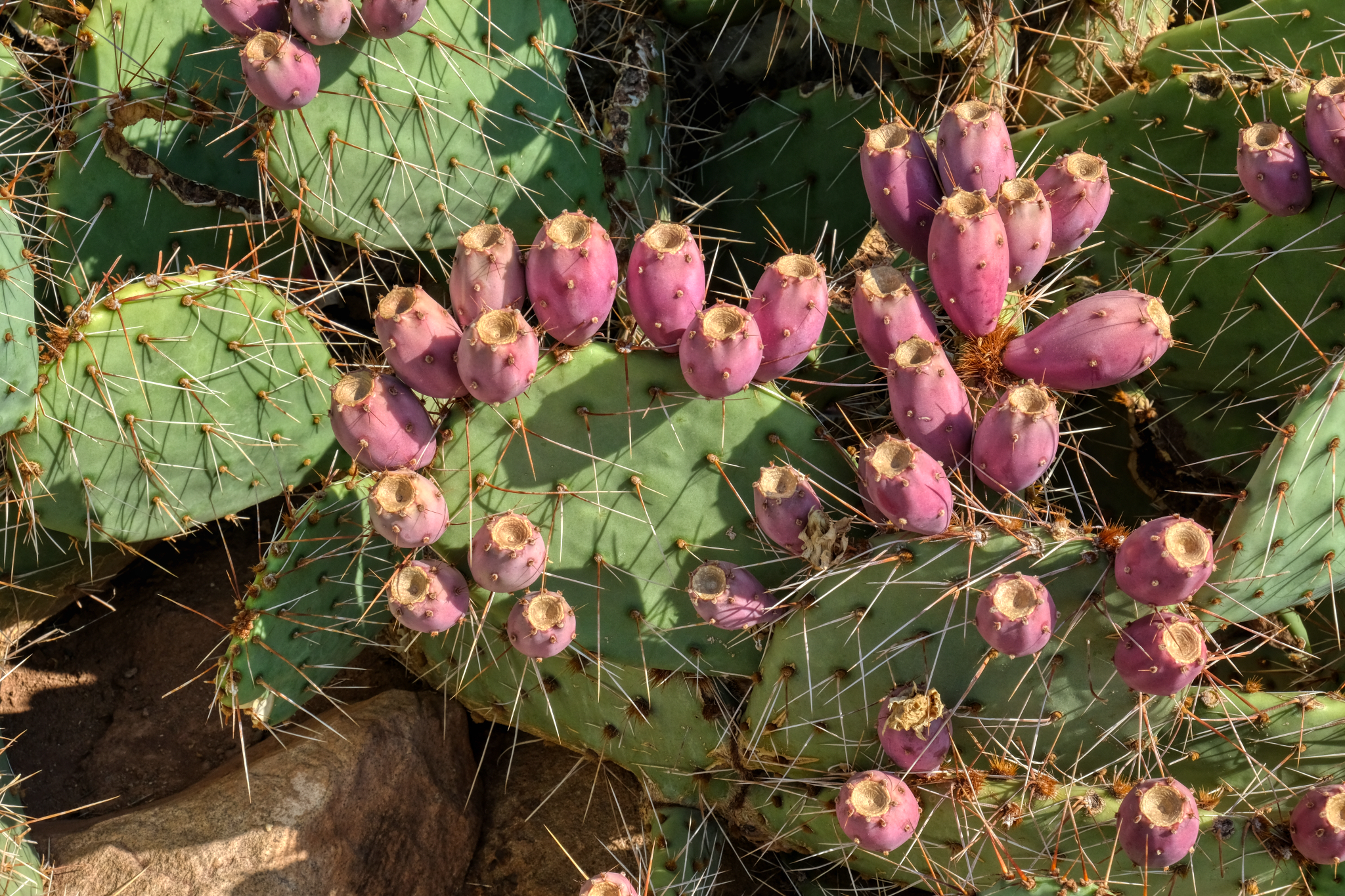 "The fruit of prickly pears (Opunita), commonly called cactus fruit, cactus fig, Indian fig, nopales or tuna in Spanish, is edible, although it must be peeled carefully to remove the small spines on the outer skin before consumption. If the outer layer is not properly removed, glochids can be ingested, causing discomfort of the throat, lips, and tongue, as the small spines are easily lodged in the skin. Native Americans like the Tequesta would roll the fruit around in a suitable medium (e.g. grit) to "sand" off the glochids. Alternatively, rotating the fruit in the flame of a campfire or torch has been used to remove the glochids. Today, parthenocarpic (seedless) cultivars are also available. The seeds can be used for flour." ****
"The fruit of prickly pears (Opunita), commonly called cactus fruit, cactus fig, Indian fig, nopales or tuna in Spanish, is edible, although it must be peeled carefully to remove the small spines on the outer skin before consumption. If the outer layer is not properly removed, glochids can be ingested, causing discomfort of the throat, lips, and tongue, as the small spines are easily lodged in the skin. Native Americans like the Tequesta would roll the fruit around in a suitable medium (e.g. grit) to "sand" off the glochids. Alternatively, rotating the fruit in the flame of a campfire or torch has been used to remove the glochids. Today, parthenocarpic (seedless) cultivars are also available. The seeds can be used for flour." ****
_____________________________________________
COVE FORT, UTAH
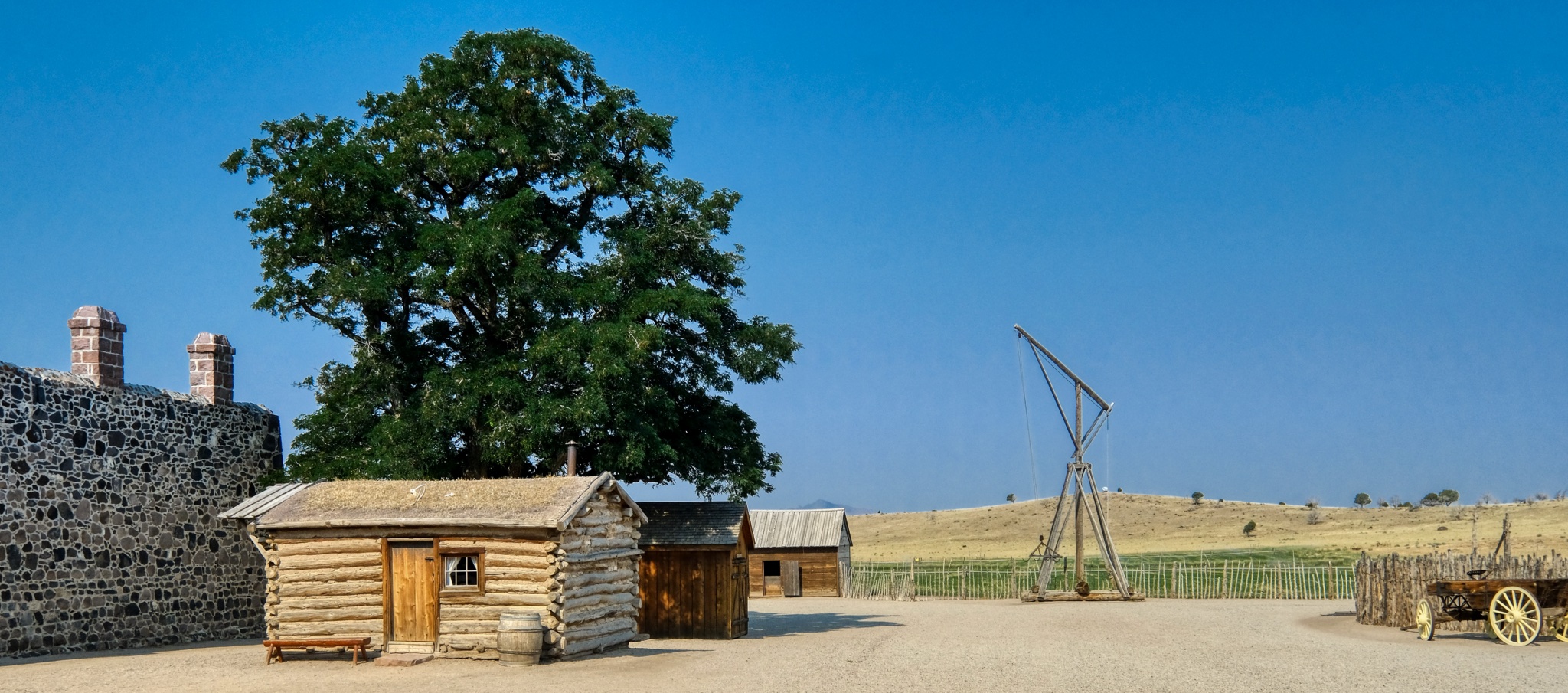 One of the joys of a road trip in the USA are the highway signs announcing "Historic Site Next Right Exit. Fort Cove". So, you take the next right off of I-15.
One of the joys of a road trip in the USA are the highway signs announcing "Historic Site Next Right Exit. Fort Cove". So, you take the next right off of I-15.
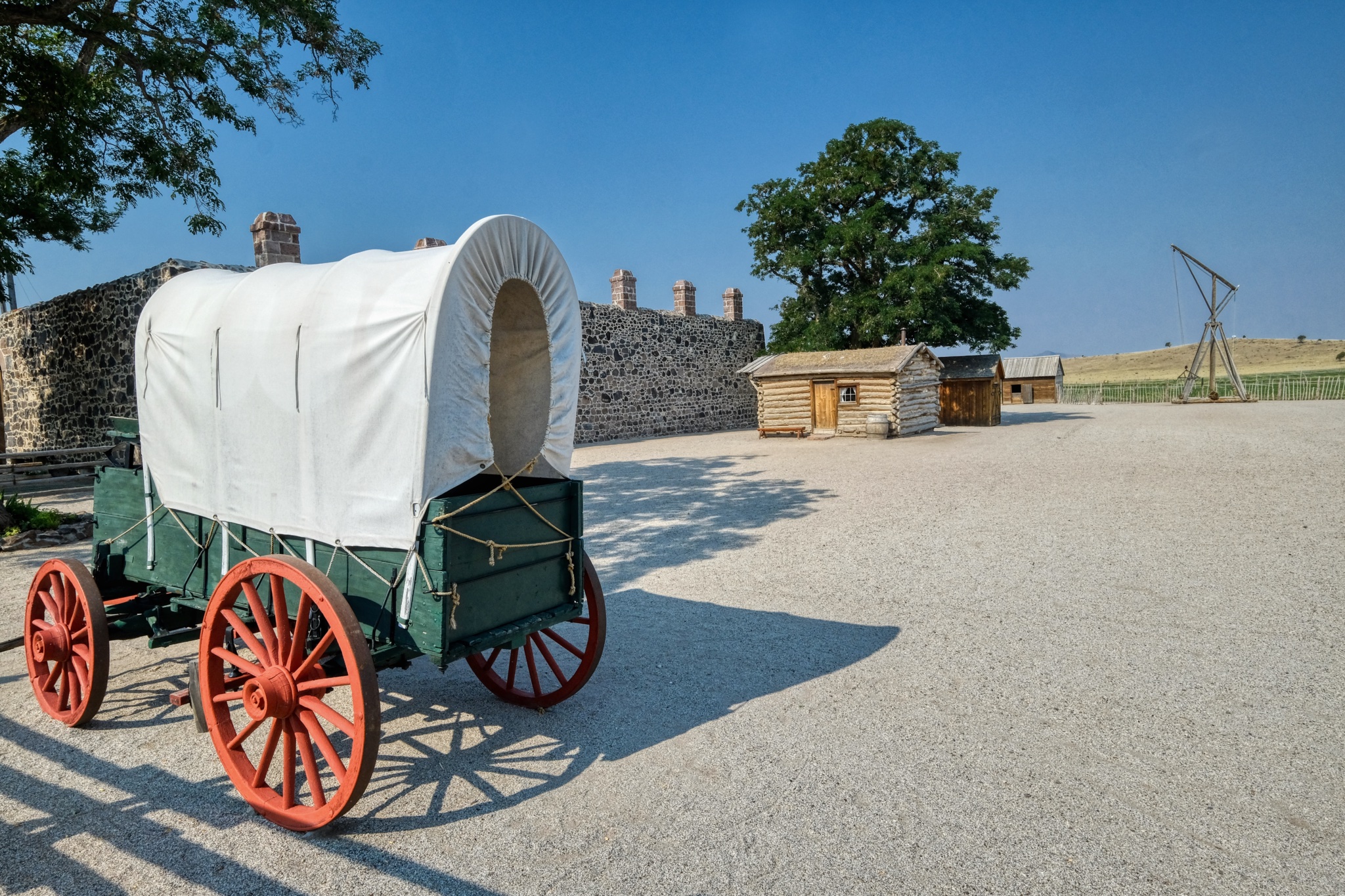
"Cove Fort is a fort, unincorporated community, and historical site located in Millard County, Utah. It was founded in 1867 at the request of Brigham Young. One of its distinctive features is the use of volcanic rock in the construction of the walls, rather than the wood used in many mid-19th-century western forts. This difference in construction is the reason it is one of very few forts of this period still surviving." ***
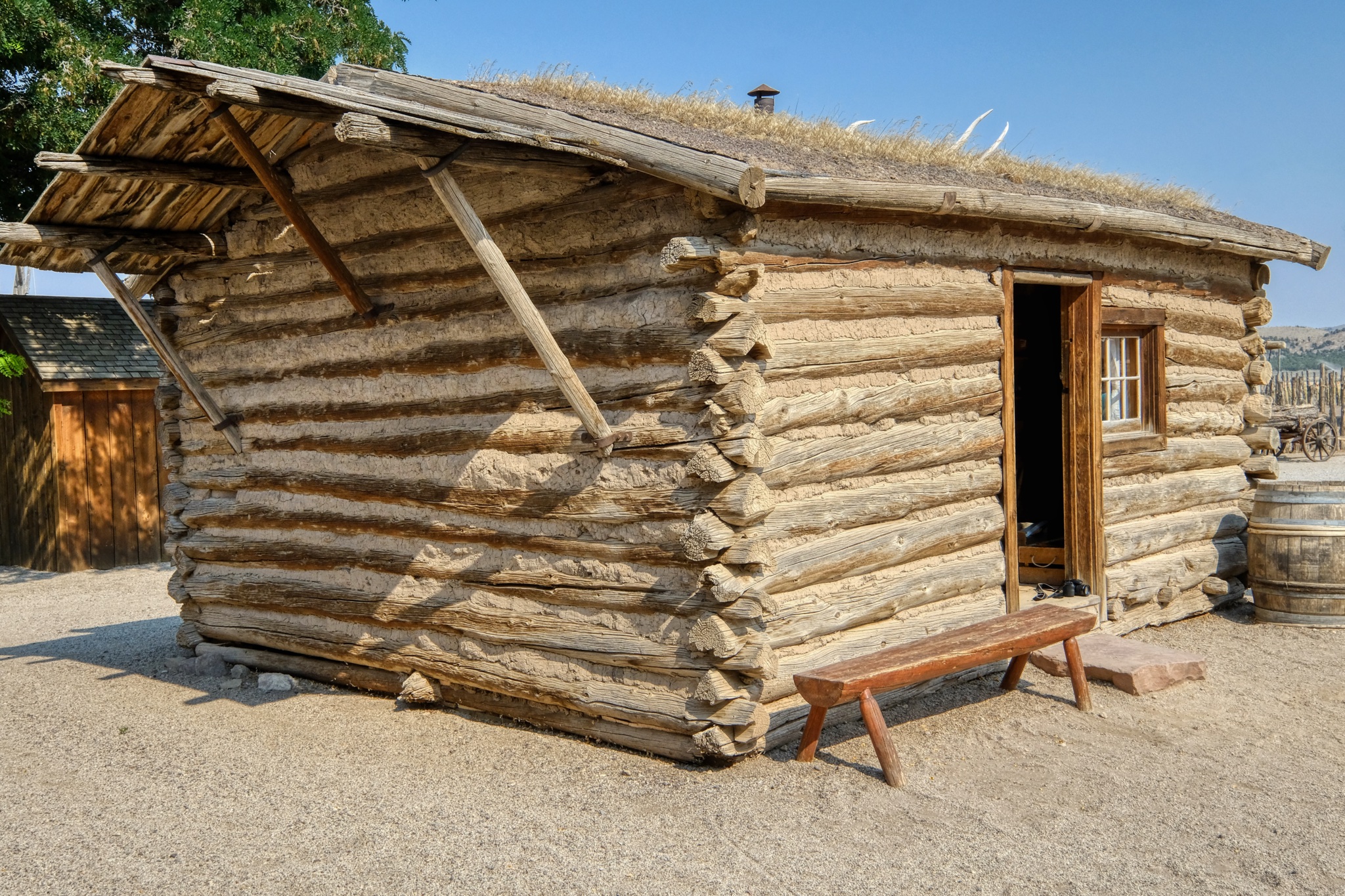 A very nice recreation of an early pioneer cabin.
A very nice recreation of an early pioneer cabin.
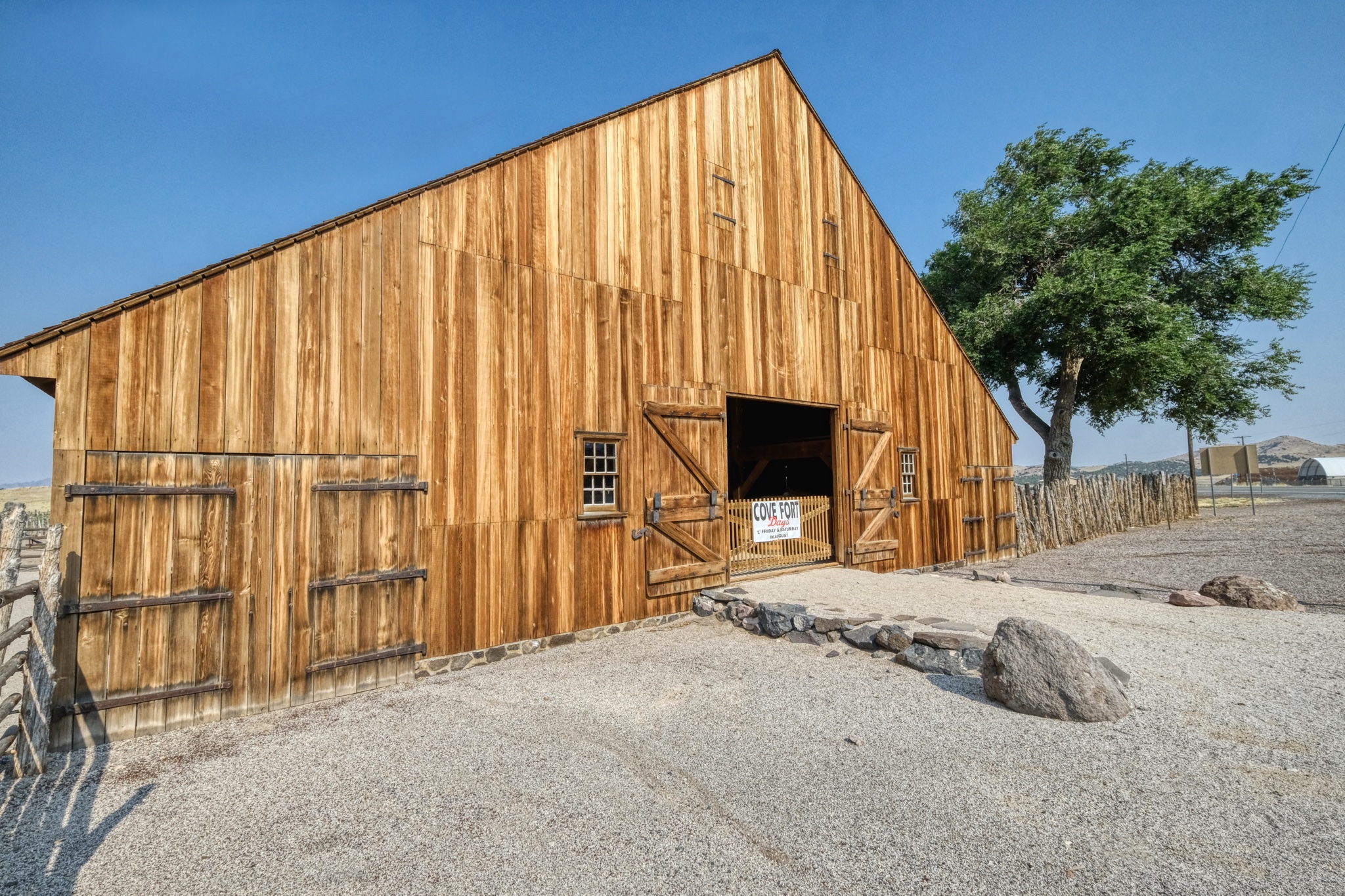 There was a fine reproduction barn, nearly new.
There was a fine reproduction barn, nearly new.
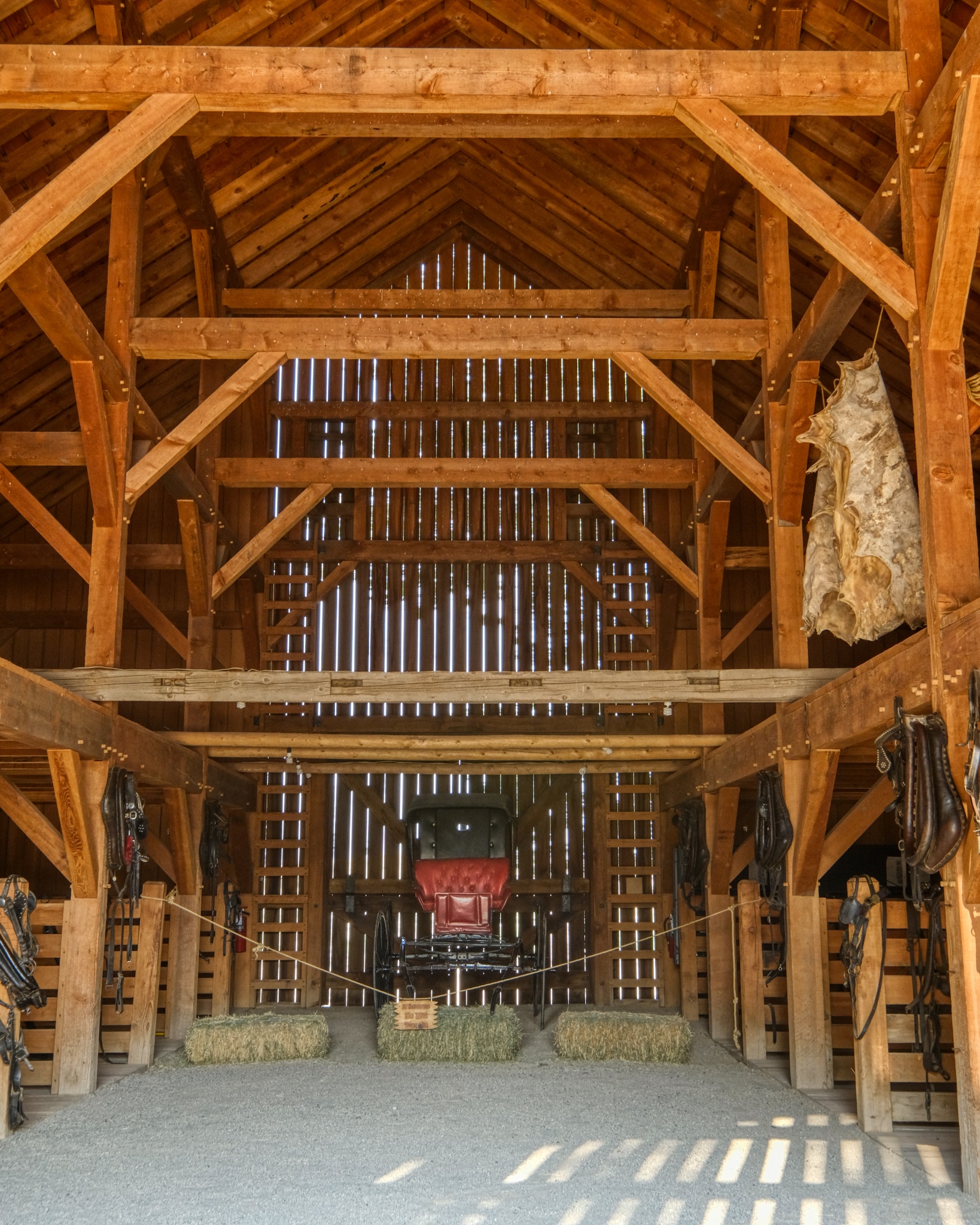 The interior of the big barn had displays of period items, well, related to barns.
The interior of the big barn had displays of period items, well, related to barns.
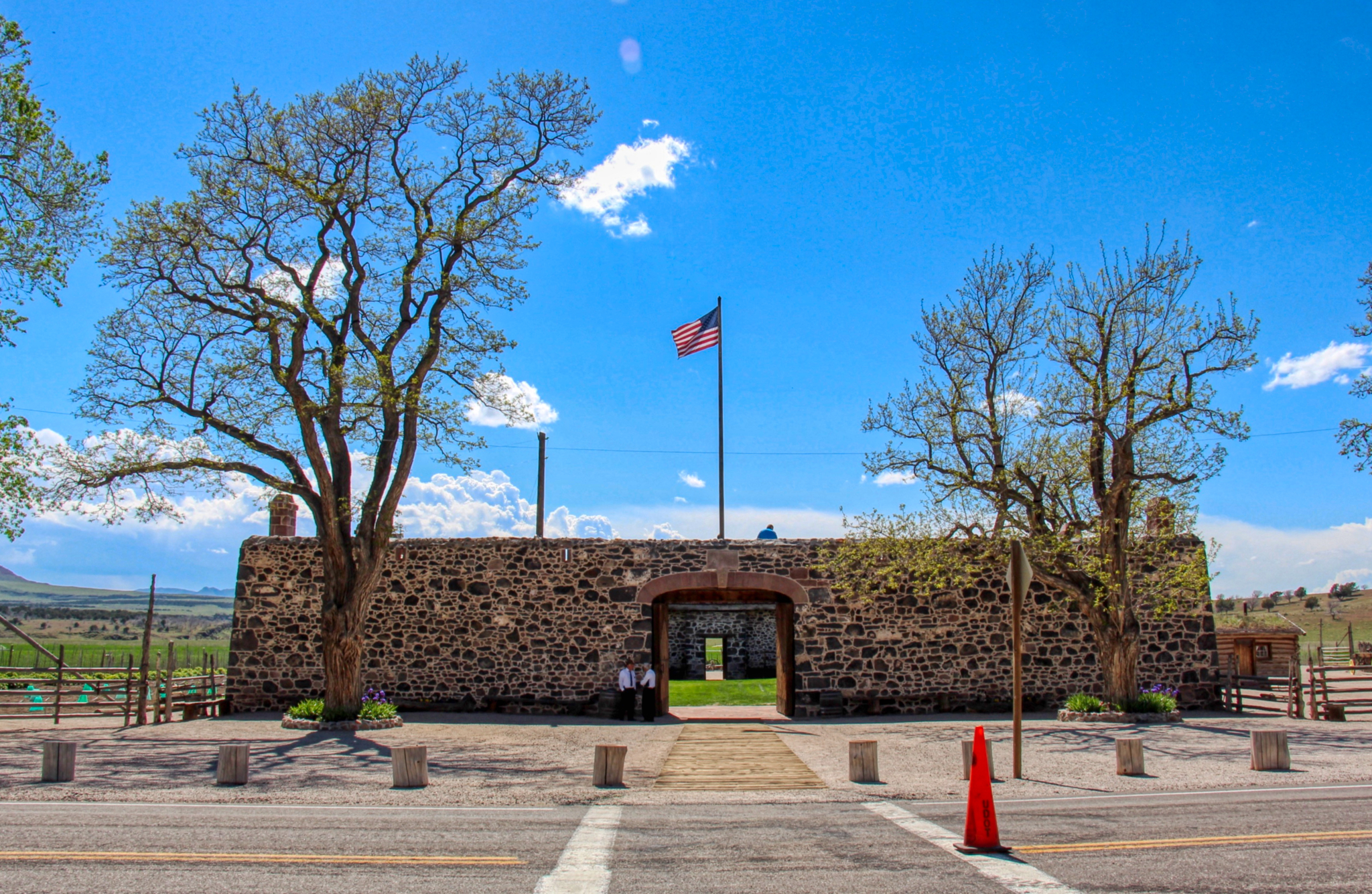 Fort Cove, Utah (Photo from Wikipedia)
Fort Cove, Utah (Photo from Wikipedia)
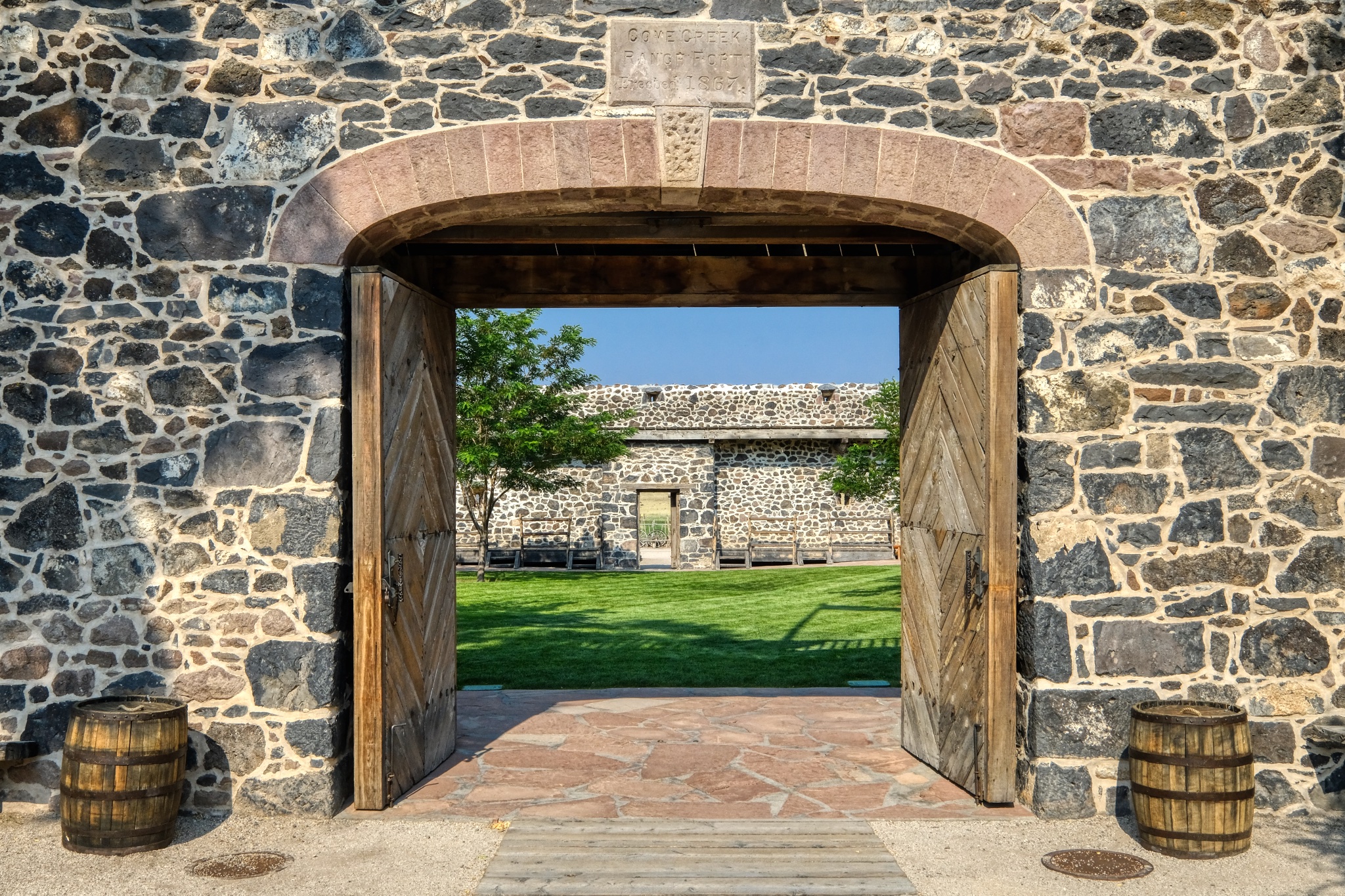 The 1867 Fort Cove gate.
The 1867 Fort Cove gate.
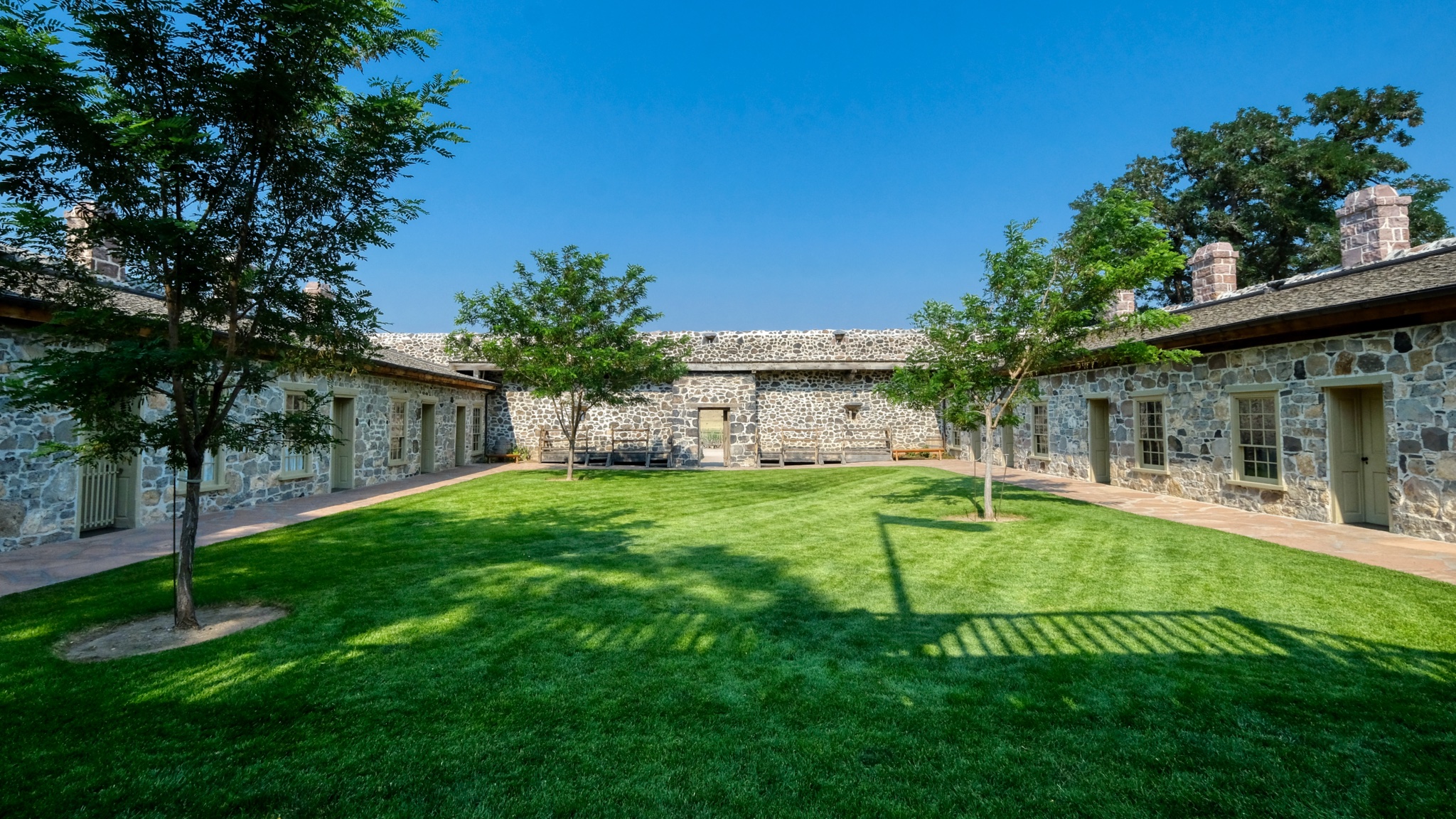 I was surprised by the verdant green, lush lawn in the fort's inner courtyard. Imagine how wonderful this would have been to the soldiers posted here and the passing visitors in their covered wagons!
I was surprised by the verdant green, lush lawn in the fort's inner courtyard. Imagine how wonderful this would have been to the soldiers posted here and the passing visitors in their covered wagons!
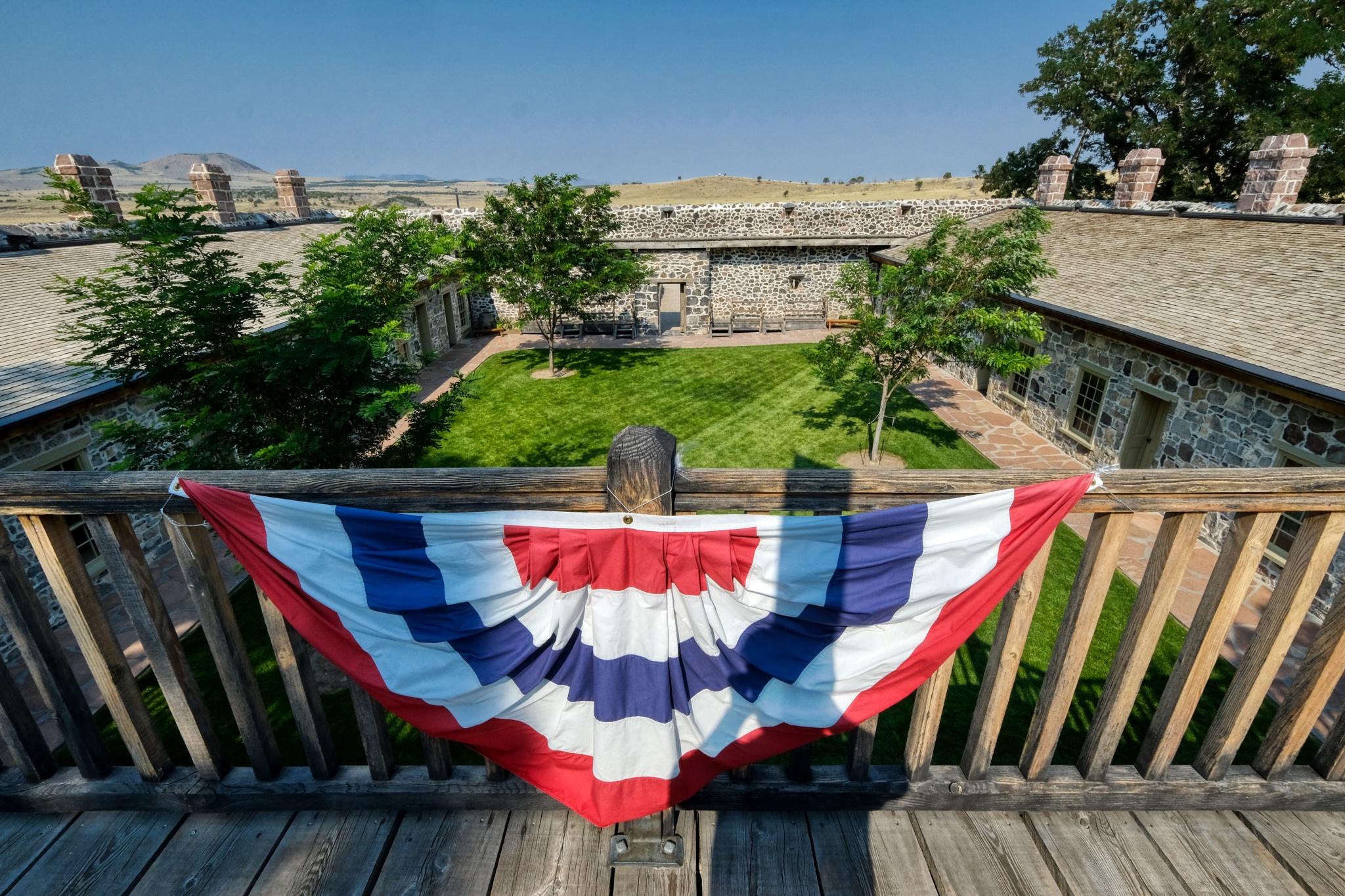 We went up the stairs to the roof of the fort for the view.
We went up the stairs to the roof of the fort for the view.
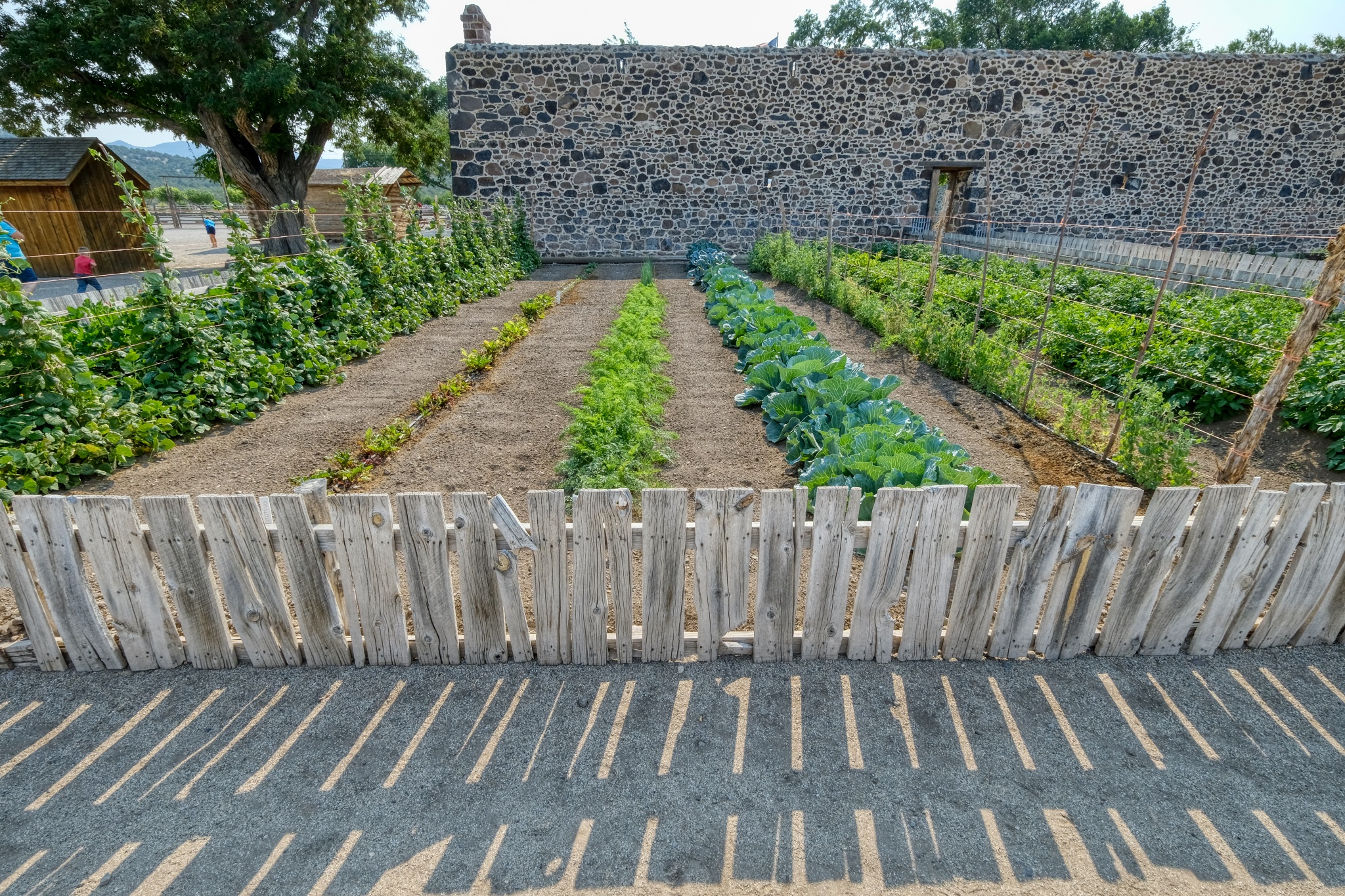 Behind the fort was the vegetable garden.
Behind the fort was the vegetable garden.
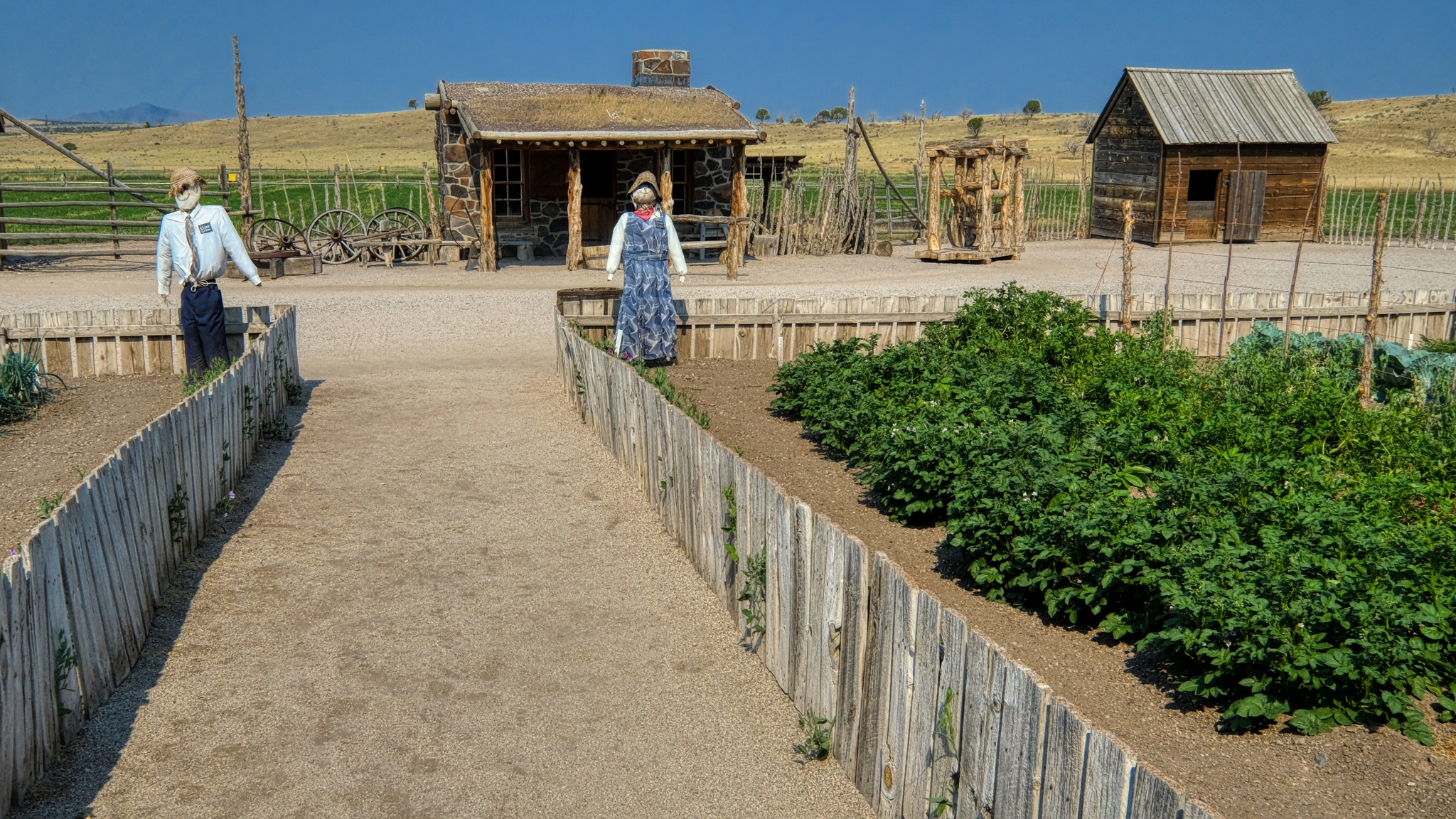 The garden path leading to displays of various Mormon settler shacks, sheds, and cabins that were trucked to the site and restored.
The garden path leading to displays of various Mormon settler shacks, sheds, and cabins that were trucked to the site and restored.
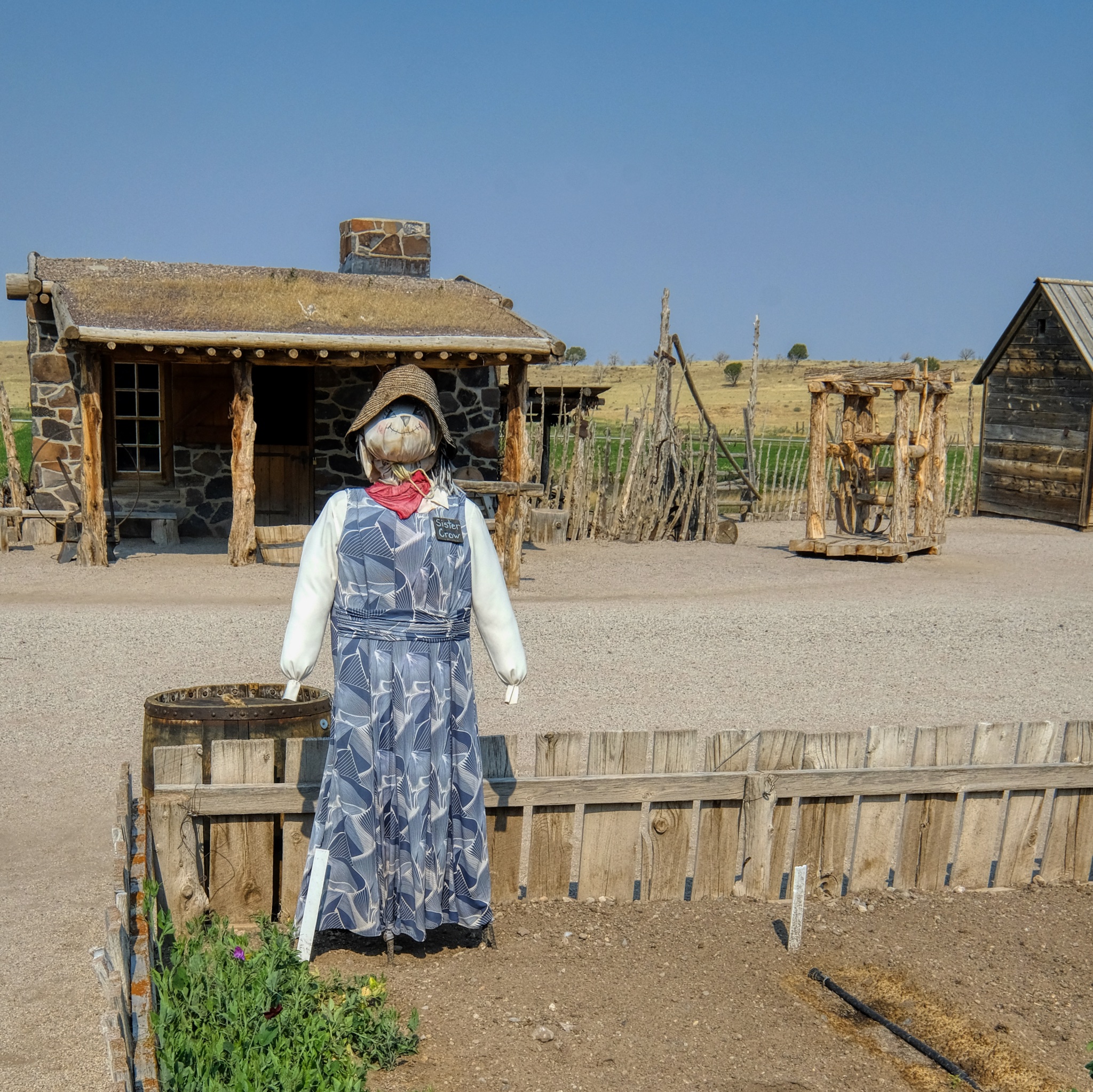 A superb scarecrow!
A superb scarecrow!
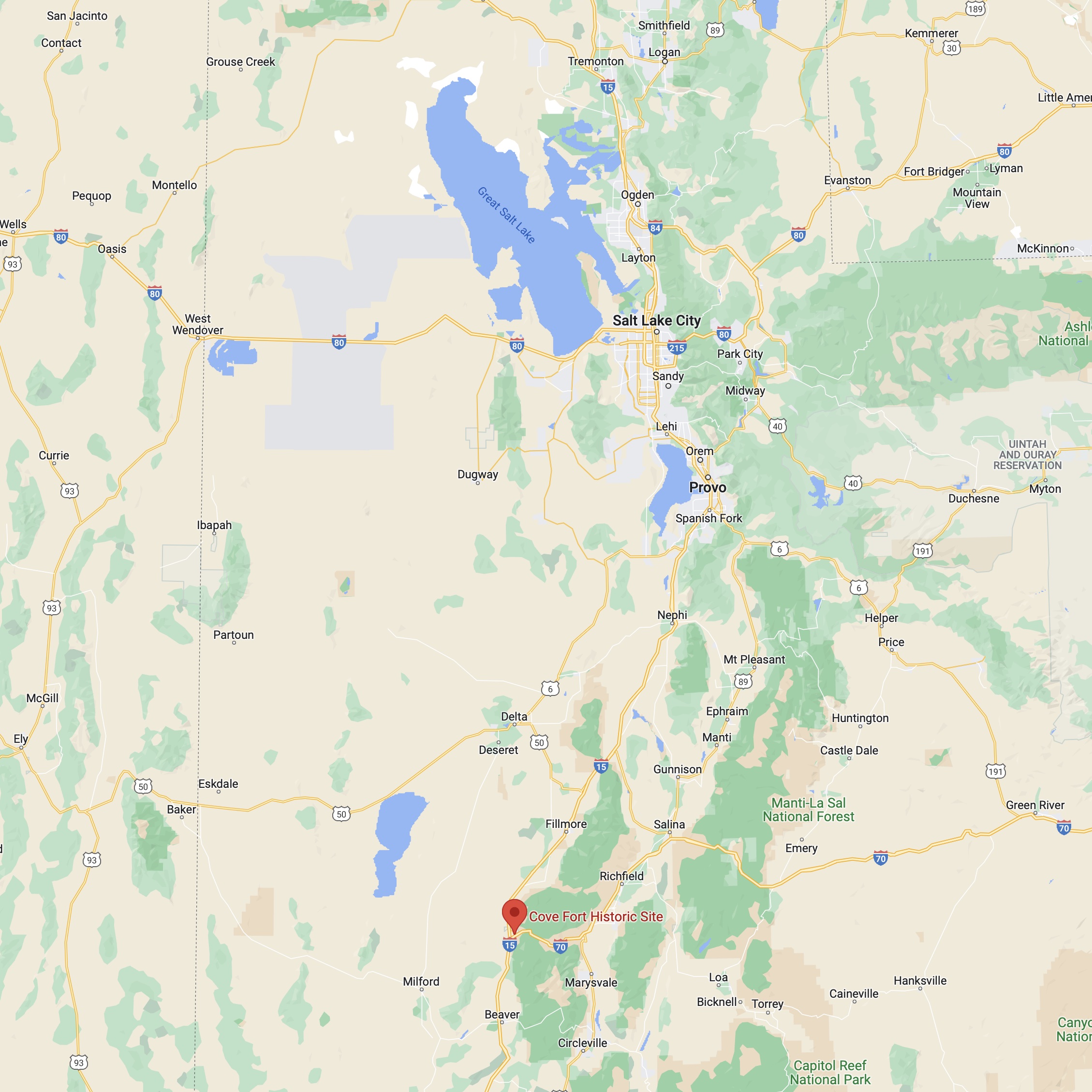
Then back out on the highway I-15 north . . . and an Allison Krauss and Willy Nelson concert in Bend, Oregon!!!
